Form/Colour Studies
Video Material
The arrangement of videos feature a wide yet similar selection of movements, experiments and aesthetics. Taking and understanding the role of how an image is projected. I was interested in exploring the layers of what images an image viewable on a screen (RGB), using the combination of red, green and blue, I performed in a variety of videos showcased here, working within the parameters of projectors guidelines, I created an array of colours and layers, with the inclusion of my hands, the performative nature is evident in the making. These videos, further manifested themselves on multiple projections, during this period of experimentation, I collected a number of video projectors, brought on by my interest within layering and fragments, I used how these videos could be projected with two projectors running the same video would work in a space. These kind of video experiments were the starting point for my adventuring into that I could create with an array of technology at my disposal.
Form/Colour Studies
Video Material
Expanding on the idea of video and installation I then sought out to obtain CRT TV's that's one of my studio members had lying about in their spear room. I wanted to work with analogue technology as I thought there was something to explore in terms of a bodily experience with the TVs. the use of movement and arrangement with the TVs was purely experimental and I wanted to test out what could be archived with a wide selection of TVs in one space. These tests also had their challenges as the TVs were I did it unlocks technology and that didn't allow me full flexibility when trying to programme in an image or video. As mentioned instead of using the TV's to project an image I use the physical TVs themselves as a bodily experience in the space that itself was interesting to me and the experiments proved insightful.
Collaboration w/ Dominic
Material Studies
During the course of the semester, I have been actively involved with multiple collaborative projects or conversations that further imply future intentions. One collaborator I'm extremely excited to work with, is recent masters graduate and emerging artist Dominic McKeown. Dominic's practice lays within the intersection of sculpture and installation, he explores the constructed landscape with poetic tendencies that manifest as structural, industrial forms that take on abstract approach.
Snippet from Dominic's artist statement:
'Existing in a state of tension, the work derives itself from being rough, harsh and exposed. Explored within a sculptural context, the focus on actions and process become fundamental elements inside his practice.'
This collaboration is very much in its early stages, it has a lot of potentials to grow and adapt, these initial experiments with form and material have added to the collective thoughts within my work throughout the semester. I feel the work with Dominic however, would perhaps like to work on future projects that don't involve the gravity which is the university, as this year is so short, I feel like taking an organic approach to a collaborative relationship, needs time to understand the parameters from each other. From that there can be a common artist standing and voices emerged from those conversations, currently, I'm still working with Dominic on a few other experiments, that involve the body in an environmental setting, interacting and responding within a familiar yet foreign space.
Departure Point
'Instructions to Appreciate The Physical Object in a Post-Touch World', 2020
In today's climate appreciating the physical photograph is limited or non-existent. My project hopes to reconnect one's relation to the physical photograph, appreciating the tactility and materiality of the object. Through a series of instructions, I guide participants in various locations across the United Kingdom connected via mail in a playful yet experimental manner to create a unique object of art. Rather than endlessly dealing with oversaturated digital content, this exploration of the photographic object hopes to recognise and kindle this lost connection.
Collaboration w/ David
Video Material
Exploring the role of performance I took to invite a friend of mine to take part in a collaborative exchange. These early experiments showcased my interest with performing for the camera, exchanging objects, these fragments of arms and body limit the view of the participant, creating an ambitious atmosphere. These experiments were supposed to explore how one can be involved within the parameters of the camera frame and act with their surrounding environment. Additionally, the image on the left, depicts me trying out various materials to overlay textures onto existing objects, further exploring the multi layered approach in how I wanted to move my work in.
Collaboration w/ Phil
Material Studies
later on experimenting with Dominic and the other video projections involving colour and myself. I wanted to experiment with more fabric and as well as other participants that could be involved in the assembly and disassembly of objects, particularly materials that held a fragility quality to their structure. working in the domains of my studio space I worked with a few of my studio members to experiment these structures and material forms.
Collaboration w/ Phil
Material Studies
The image and videos on the left detect a series of material forms, I wanted to combination of video and audio as well as the images in a typographical format to illustrate the structures and formations that occurred when documenting the process. what struck me was the lack of identity with the individual and the formations which occur when the participant is navigating the material this lack of identity and obscurity was an interest that I wanted to explore not only with myself but with others and seeing how they would react to their being a shadow or silhouette of themselves.
Statement (so far...)
My work harbours from a place of belonging, coming from a region with perceived layers of physical and emotional sensitivity. I navigate through the fringes of this space with a tenderness in my methodology. The passive role of the performer is evident within the process of making, the role of the body works within the parameters of the representation of one's sense of self. The aspect of collaboration and intervention nurtures within my practice, working in conjunction with likeminded creatives contributes to an organic relationship of reflection and reaction.
RDB circa 20/21
Video Material
This RDB is a combination of the work that I have accumulated over the past year, this website was made to feature the moving image material that I have made during the course of my experimentation. This website showcases my process, experiments, research and analysis within the medium of visual art. This website demonstrates the variety of work that I have made over the course of my first & second semester of the third year within BA Photography w/ Video at BSoA 20/21.
Material Studies
Sculpture & Video
Some of the works feature my body, a role I was interested to take part in. The role of performance was an area of interest within my photographic practice for many years. Incoprating the body was something that I wanted to include within these works to see how the body could interact within the space and involve themselves within the parameters of the work that was already present or being made the body. While doing these experiments, I knew I wanted to further continue this form of involvement with the body, as I found the inclusion of a person, creates a level of active interest with the viewer, adding layers of intrigue within the understanding of the object or scene presented.
My departure point for this project was from the notion of the spectacle from Guy Debord's 'Society of The Spectacle'. Knowing what the spectacle is (something that is mass produced, readily accessible for the masses). I took to write a piece of text in which reflects the ways in which the spectacle is looked at and consumed, my version of the spectacle transforms this notion and the rise of the anti-spectacle is present. The anti-spectacle further challenging the dynamic relationship with physical objects (photographs in this case) in our structured society and is explored and defined through my text.
The anti-spectacular delves into the fleeting notion of selfhood and one’s ability to acknowledge the essence of one's shifting growth within society. The notion of being anti-spectacular relies on the understandings of one's relationship to their given space and conducts a relationship with one's private place. Harbouring connotations of intimacy, the given perceptions of one’s reality, manifests as a detached bond with societies noise. The modern noise that is constantly in tune with our contemporary reality; an ever-changing reality, or a reality that has an endlessly constant appearance. This is the notion in which the spectacular resides, however, personal recognition of this modern noise will lead the anti-spectacular to embrace an organic shift in one's individuality, swaying away from the spectacle’s dominance of oversaturation. Taking a tangible role in the decision of what directs our lives, noticing the passivity and turning that into notability, is being anti-spectacular. -Ben Malcolmson, 2020
Over the course of starting this project, I took the time to understand why I’m I am doing this project. My research delved into the various ways of engaging with the viewer, these came from the art movements of mail art, conceptual art, abstraction, instructional art and surrealism. Areas within art history that pathed the way for the development of the project. Through various artists and projects, the ways in which I wanted to engage with my viewer started to become clearer and detailed. Through my various sources, the term ‘surrealist automatism’ was a term that arose, this form of artmaking came greatly from the surrealists in the early 20th century. The notion of making ‘art’ came from their automatic gestures of engagement with the material, this involved the artists involuntary display their thoughts and subconscious into and onto the work. This kind of letting 'go', was fascinating to me, yet too loose for the parameters for my assignment. However, I took on board notions of how to implement the essence of automatism into my given tasks, namely drawing what you see and feel (from the physical photograph) and their reflective text on the process
Further developing within my research, the Baldessari Assignments were another milestone with the development of my project, John Baldessari was an American conceptual artist, the Baldessari Assignments were given to his art students in the 70's as a form of expression, to unblock artists blocks. These 109 assignments draw from action within the physical space (performance pieces) to smelling and touching their art. These assignments give rise to the structuring of my format, having a list-based system made it easier for me and the participant to follow and engage with what I'll be instructing them to do (yet retaining a less dictating and loose format leaving room for artist interpretation). Along with the Baldessari Assignments, I was influenced along by 'Grapefruit' by Yoko Ono a beautifully poetic book, detailing ways in which to engage with making art and understanding the world. 'Grapefruit' touched upon the poetic nature in which I wanted to explore whilst developing my set of instructions.
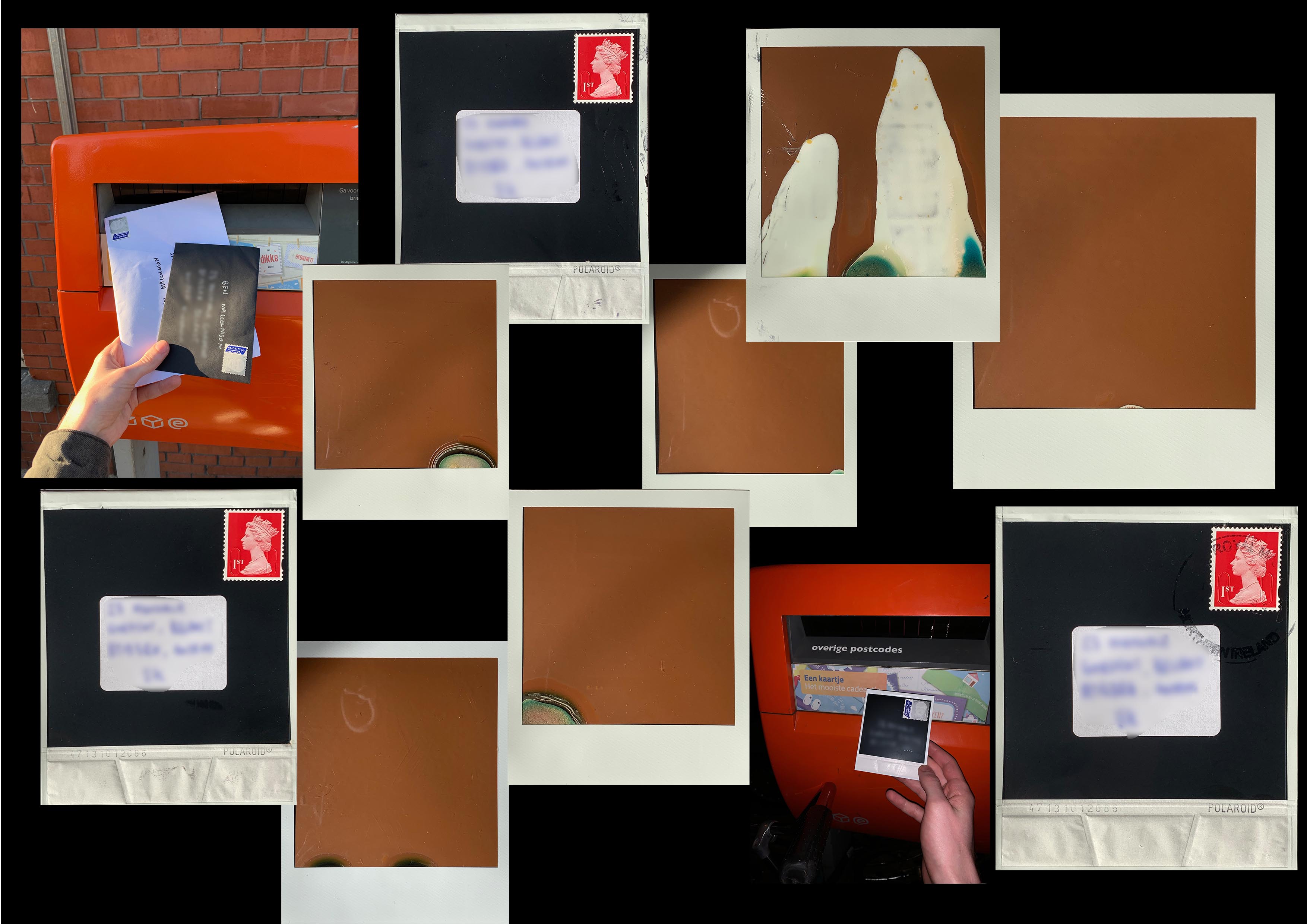


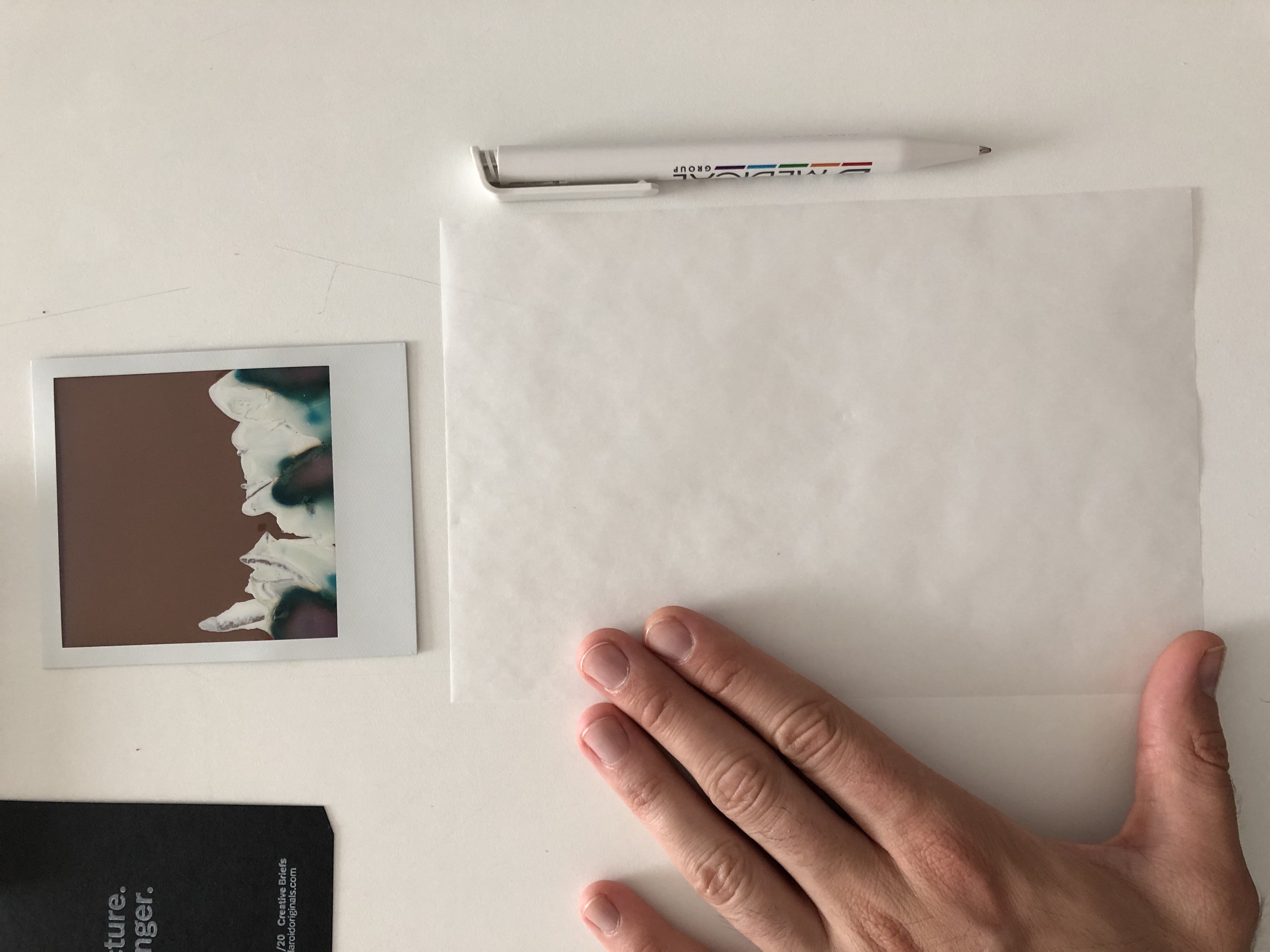
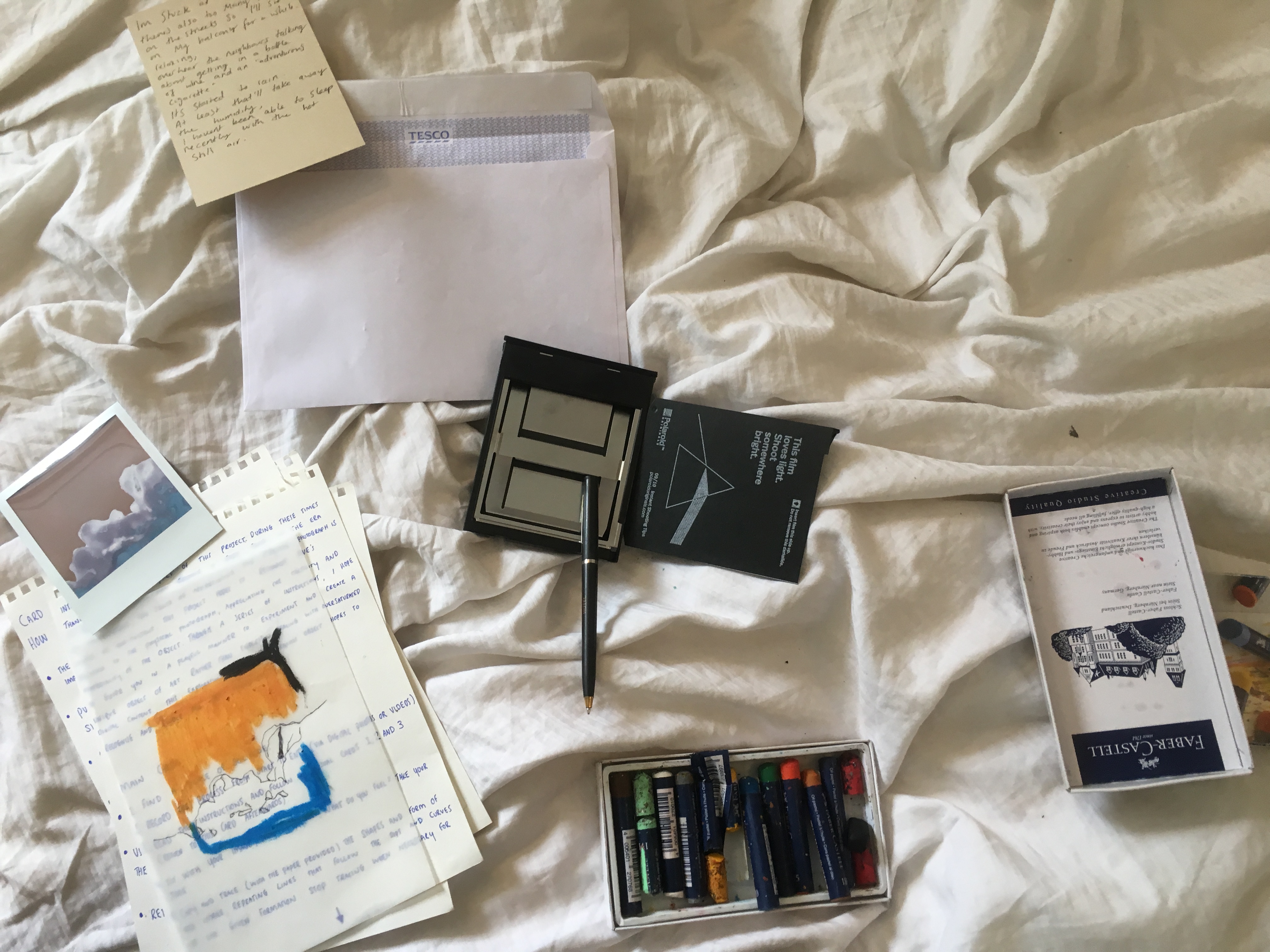
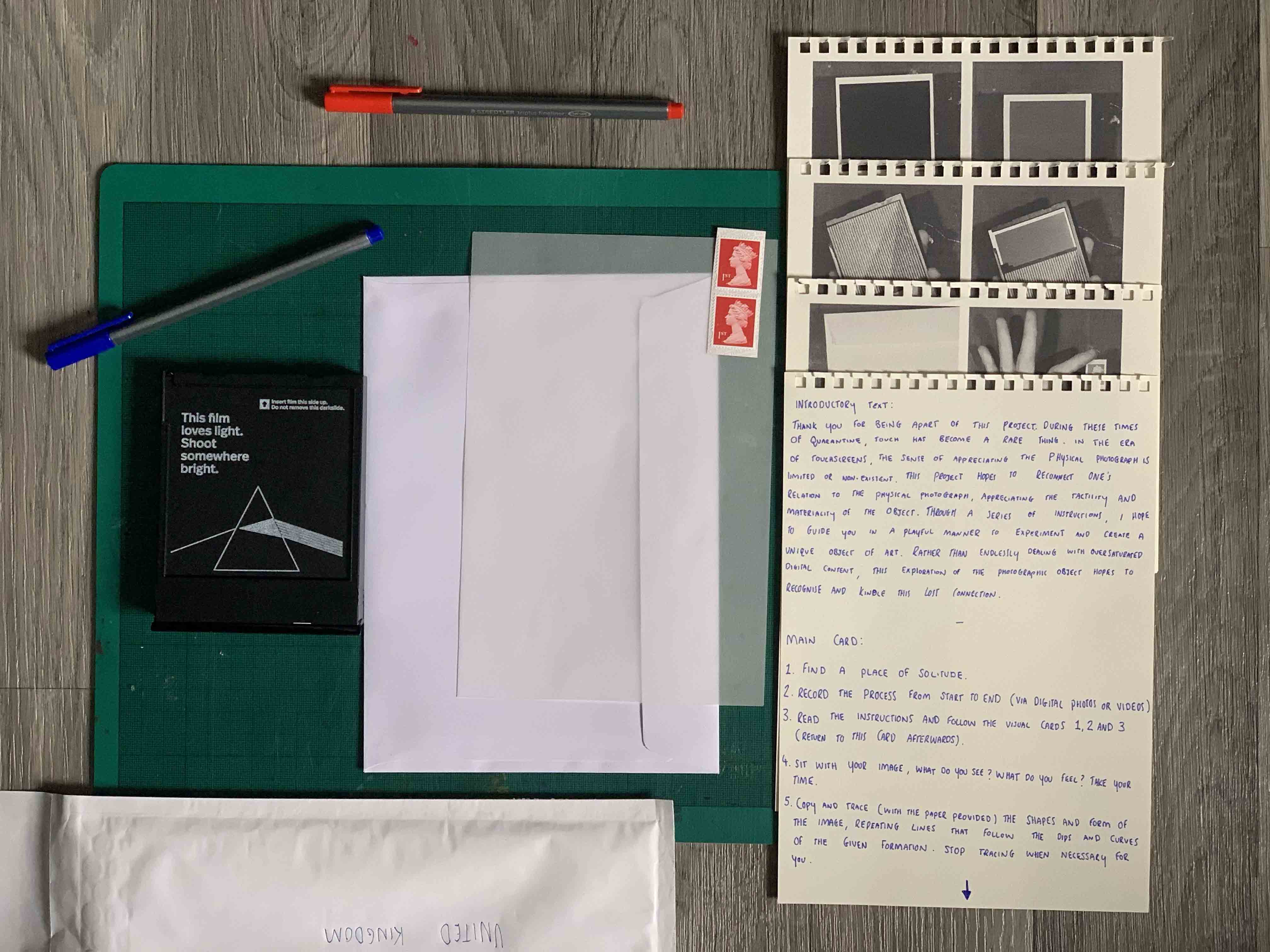
These images depict an array of polaroid images that experimented with during the months of Summer, I explored the ways the physical image can be posted via placing the physical stamp on to the image. Wanting to create artefacts from a blank image, I posted these polaroids with the hopes of the traces of the British/Dutch postal system, sending the address back to me, the results were less impressive, only one out seven created any seriously noticeable abstractions.
Summer/Semester 1
Re-Vision Performing Arts Festival
&
Making Space Exhibition
Before the start of the 1st semester, I made a new piece of work for Re-Vision performing arts festival. This new piece was a combination of a lot of various emotions, responding to Re-Vision themes of identity, feminist & mental health. I created a piece that looked at the touch staved ways that I found myself encountering during the months of the pandemic. This piece explores the material properties of the photograph - an interest that was floating around my head for a while. The resulting project concluded as a video piece, encompassing, video, matieral and installation. The piece tilted 'Fluid' was streamed live from the Accidental Theatre in Belfast during Sep, and following the next month was part of the 'Business as Usual' group exhibition with Making Space in Lisburn.
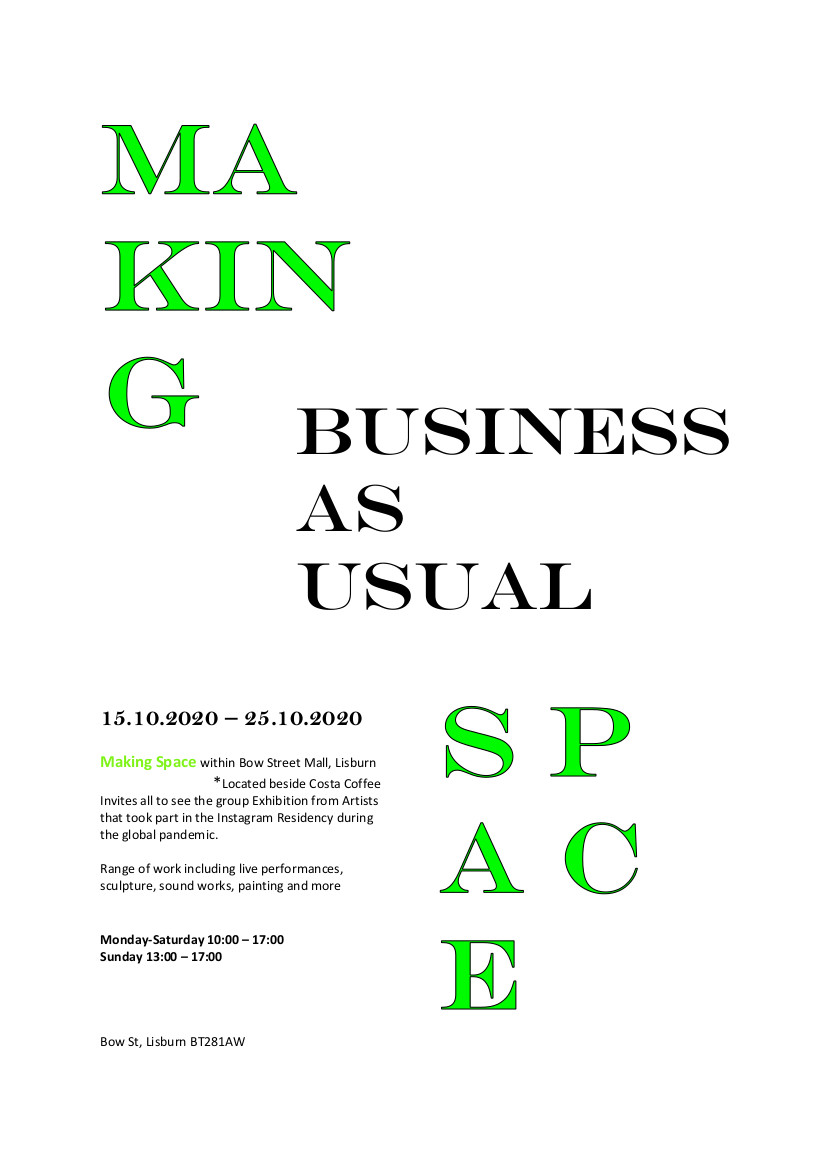
'Fluid', 2020
Statement
'Fluid' explores the notion of intimacy with ties off voyeuristic qualities that manifest as poetic manoeuvres of body and mind. Through a transit sway within the openness of the untold; movements shift as abstract forms in flux. Using a Polaroid transfer technique and self-portraiture Ben transforms his own body into sculptural forms in water, using the fluidity of the photographic medium he allows for the separation of the physical image to re-establish itself within its new shifting domain.

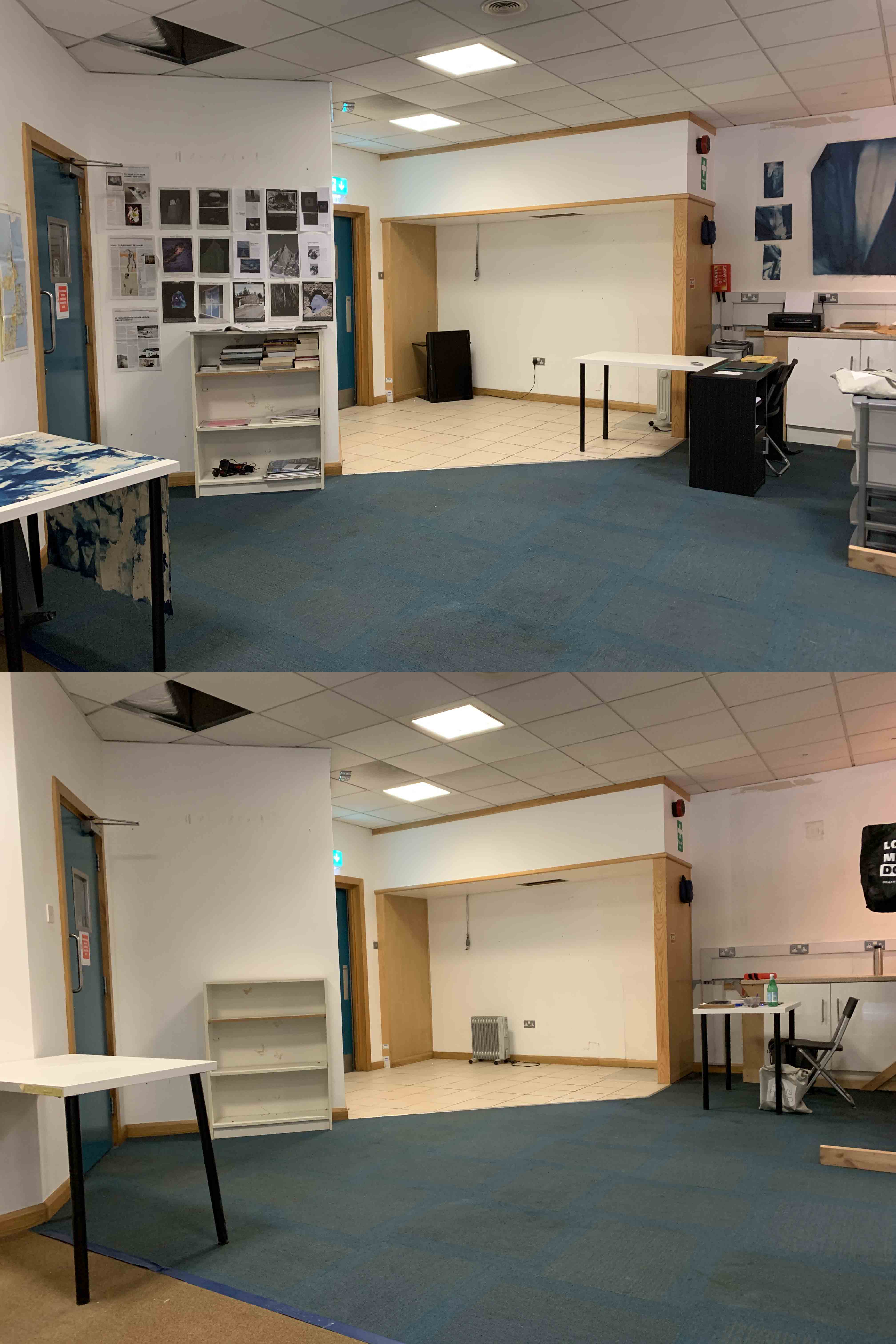

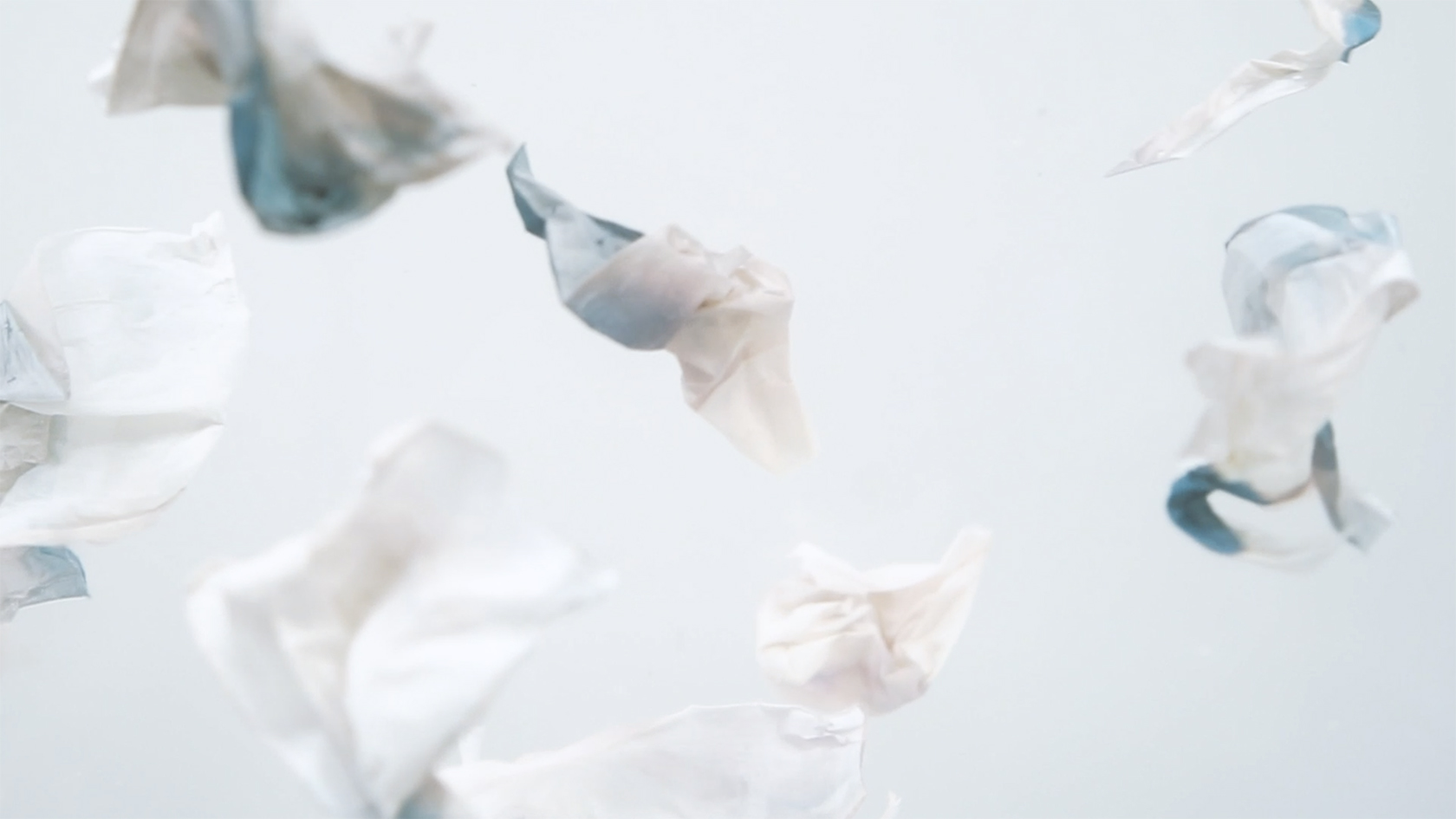
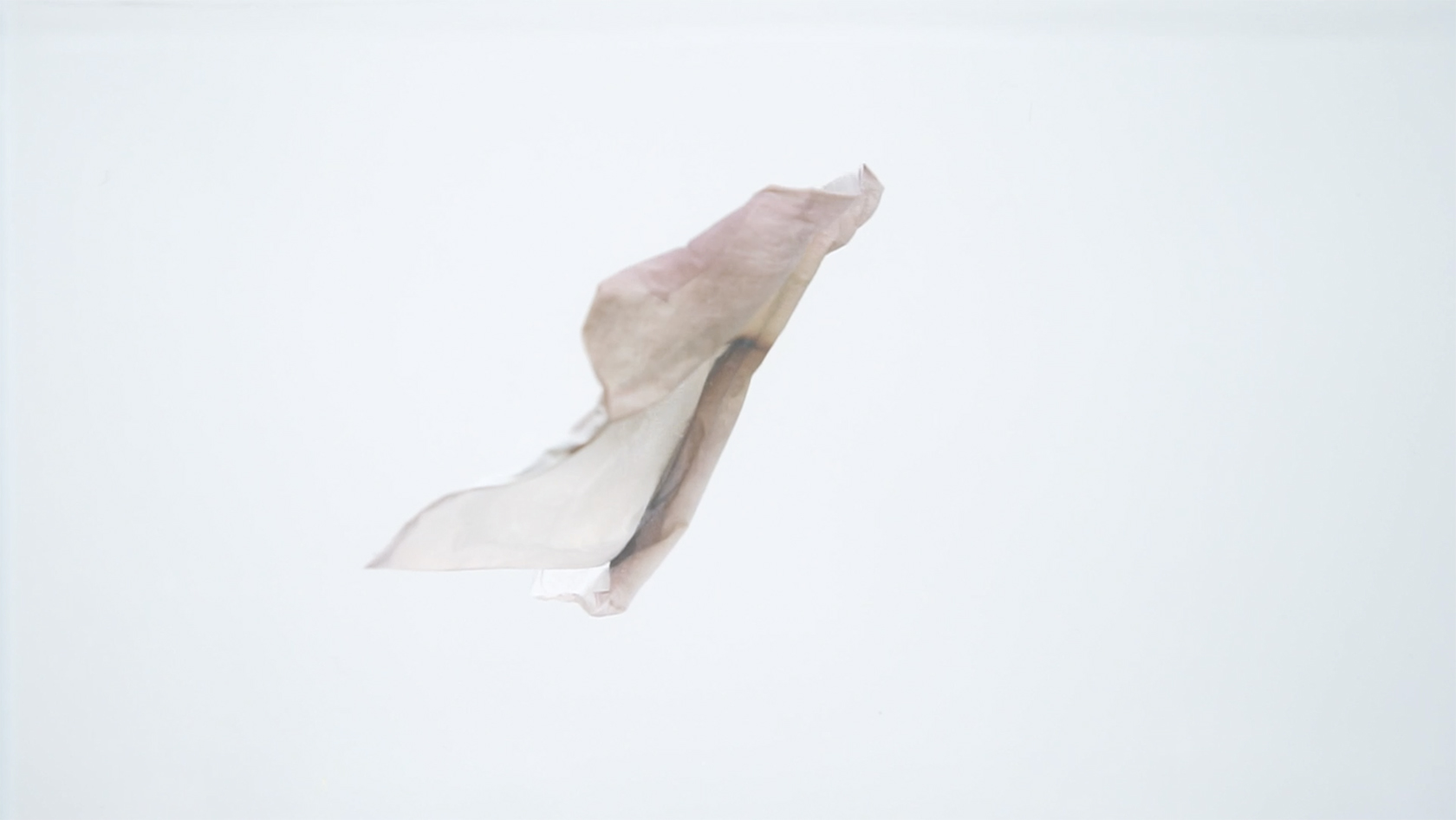
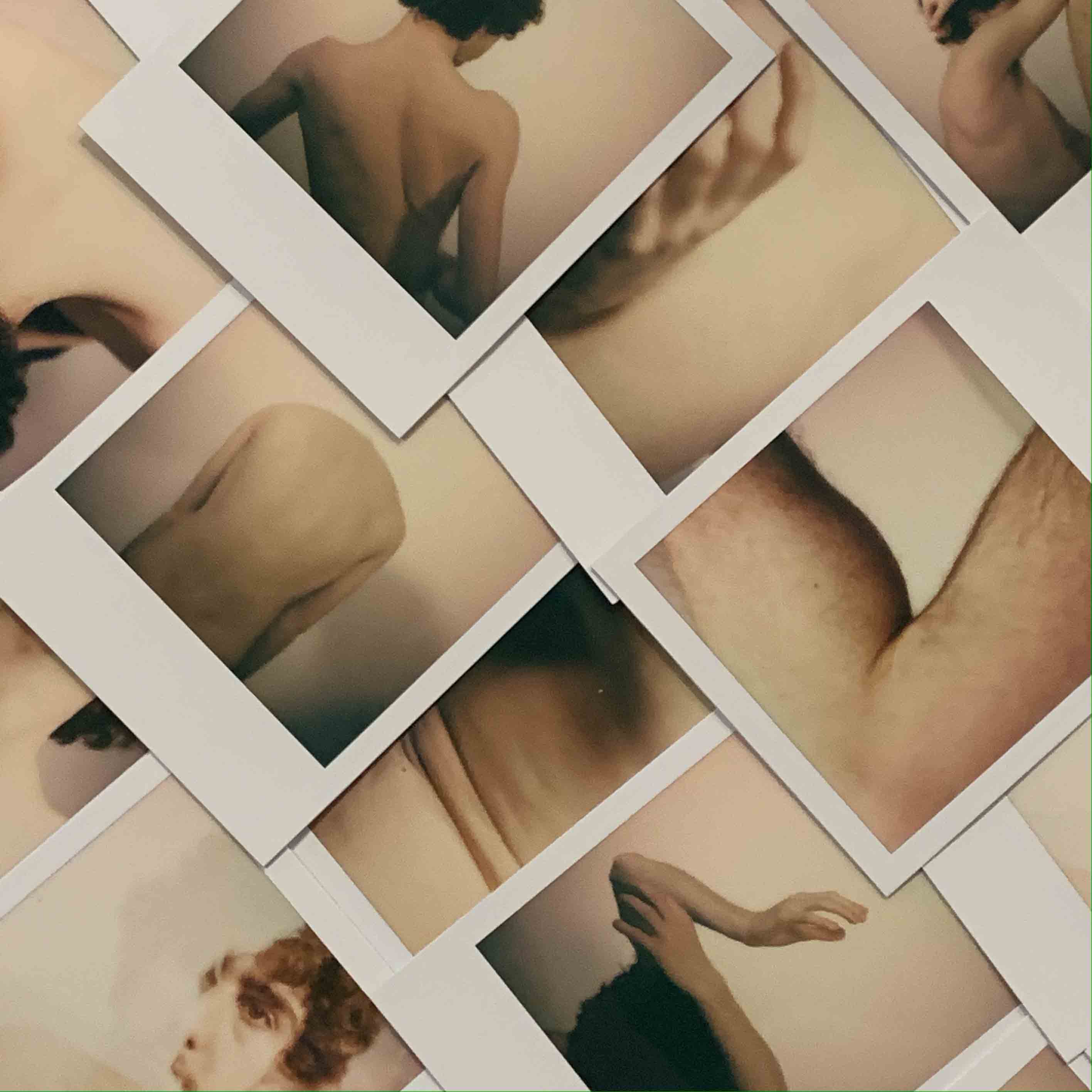
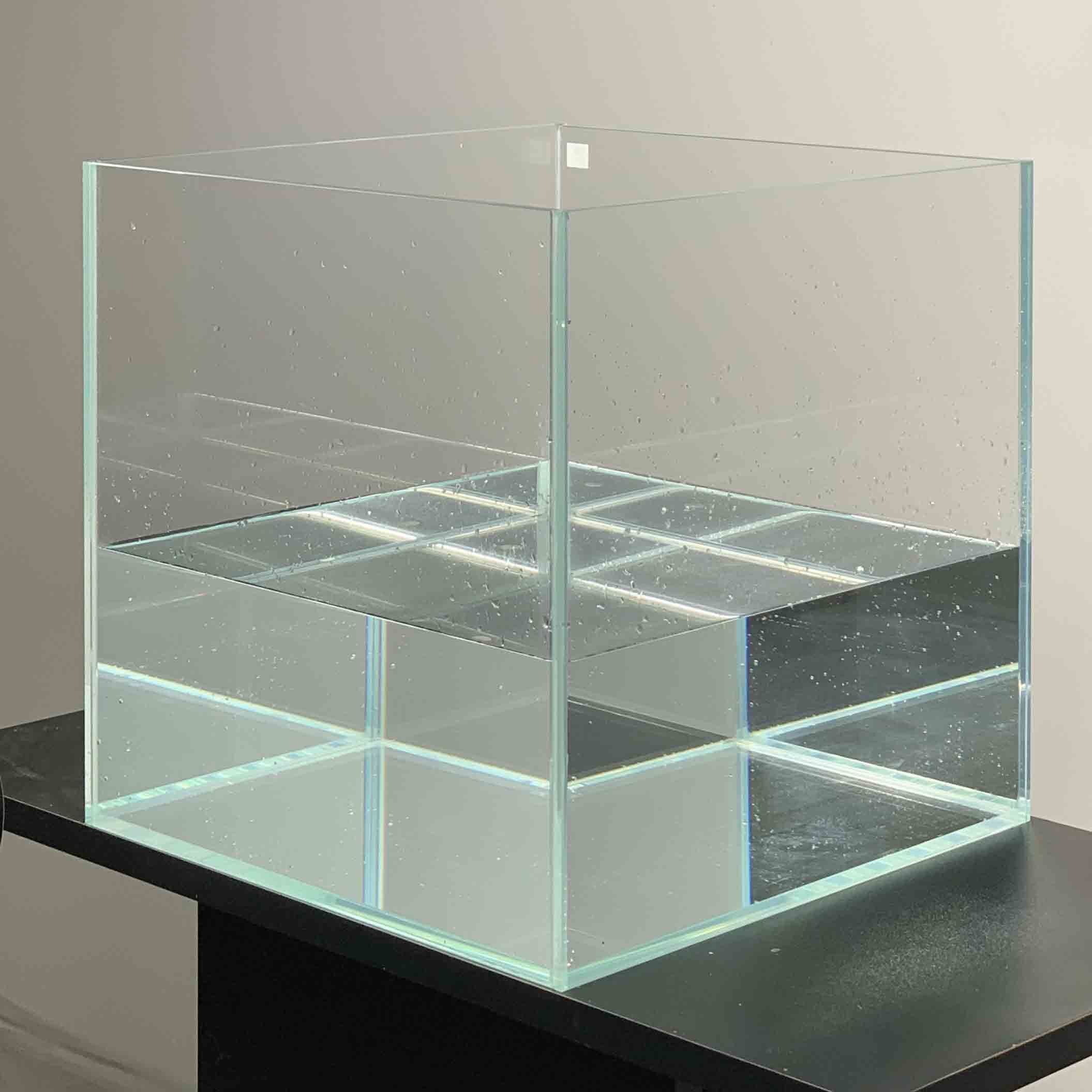
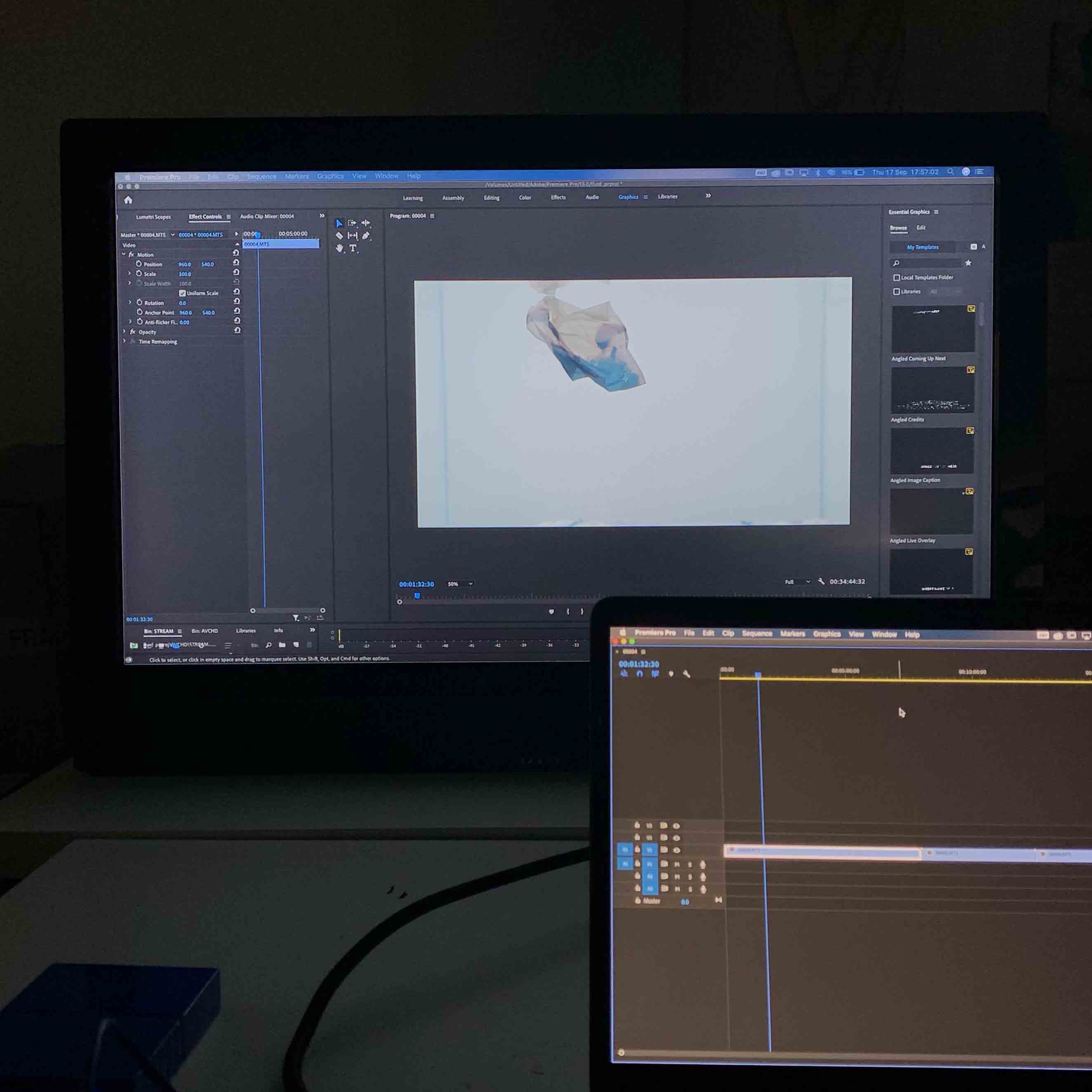
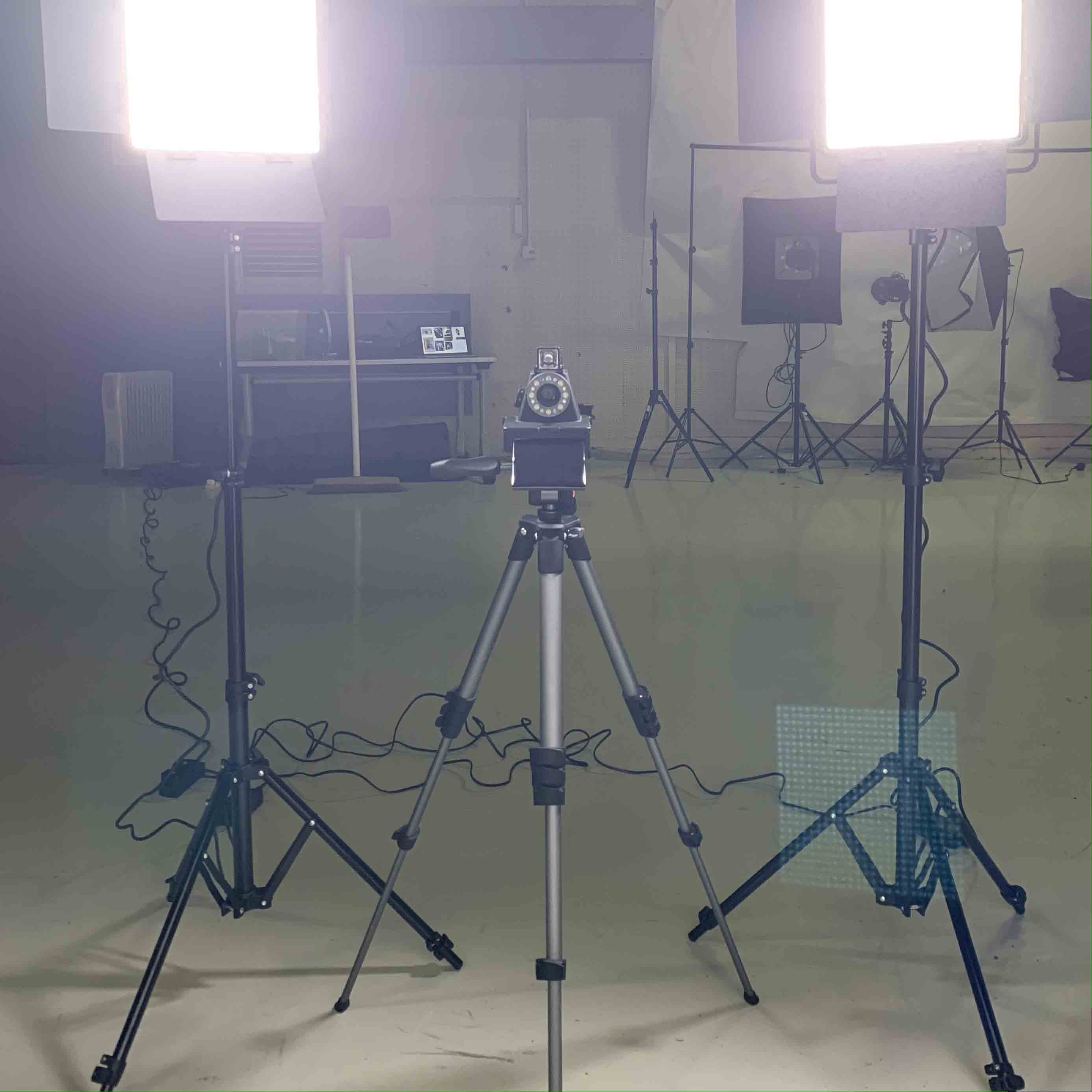
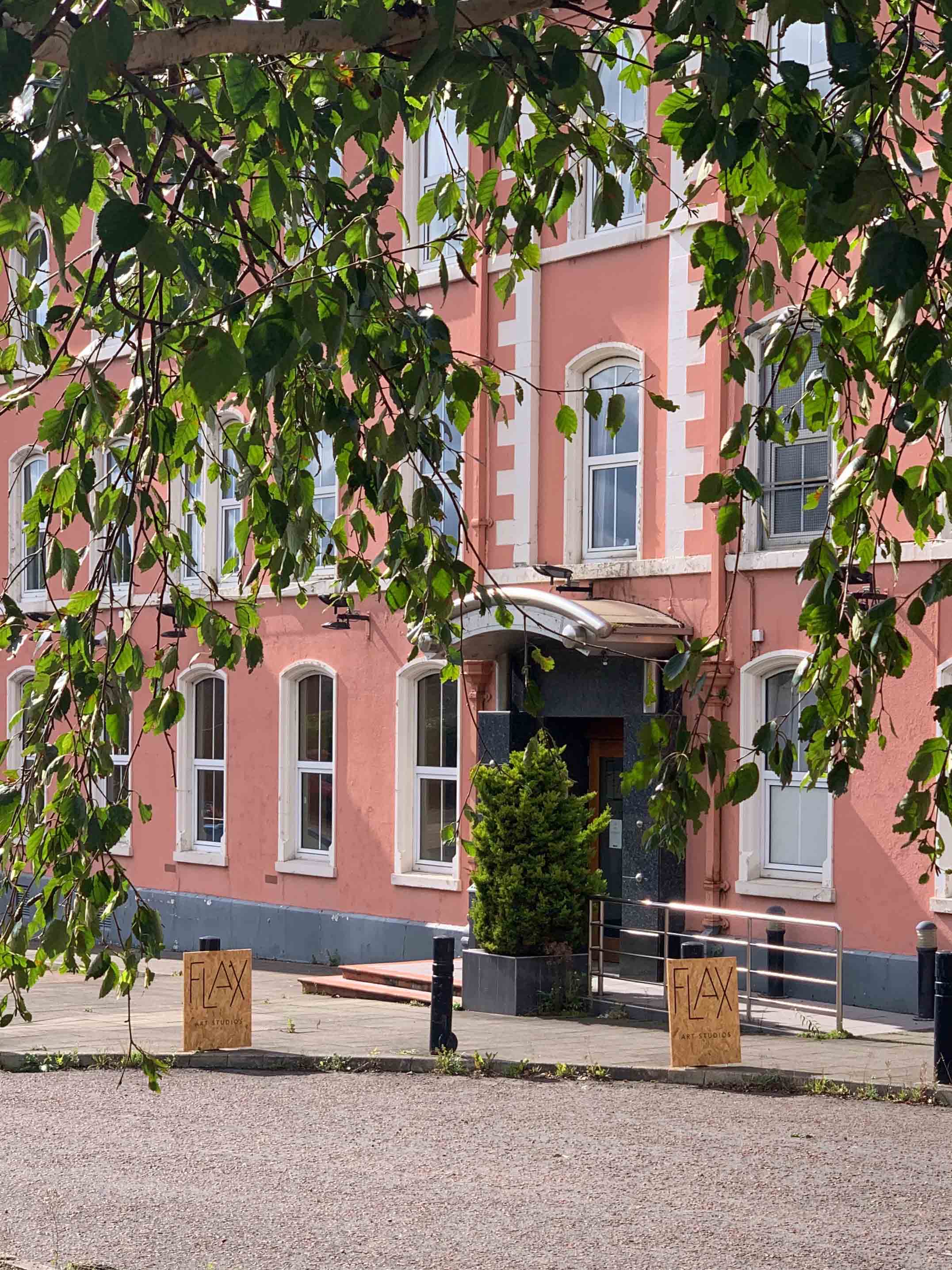
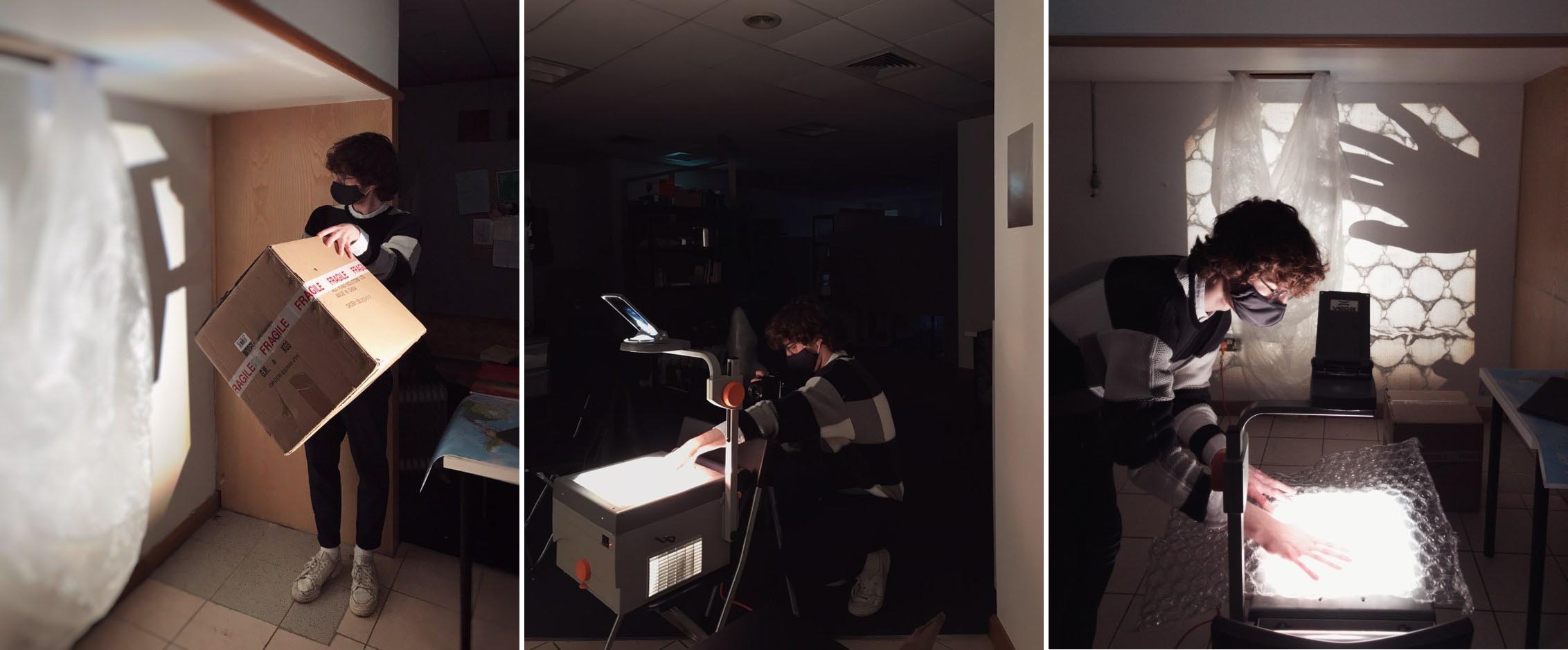
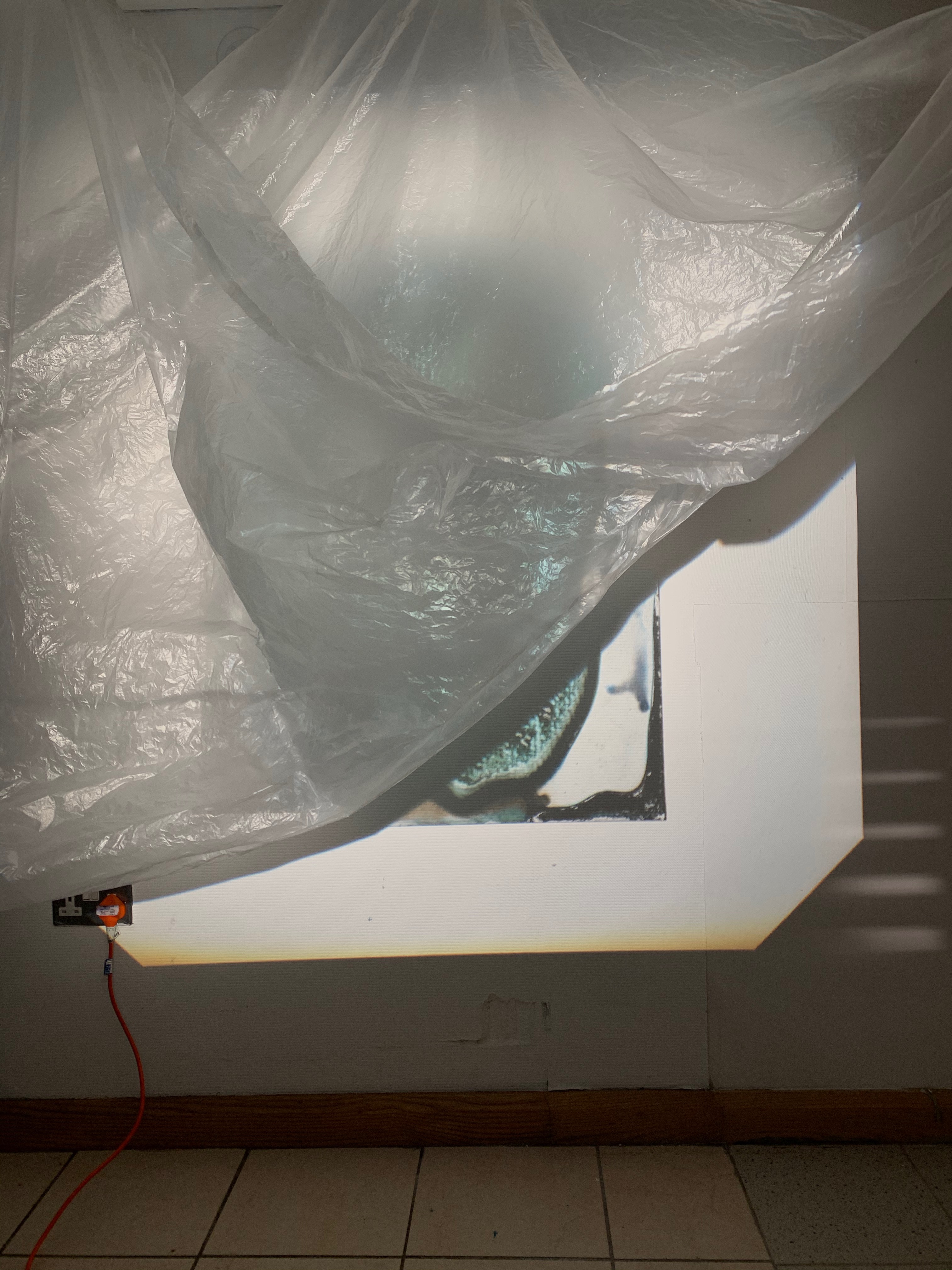

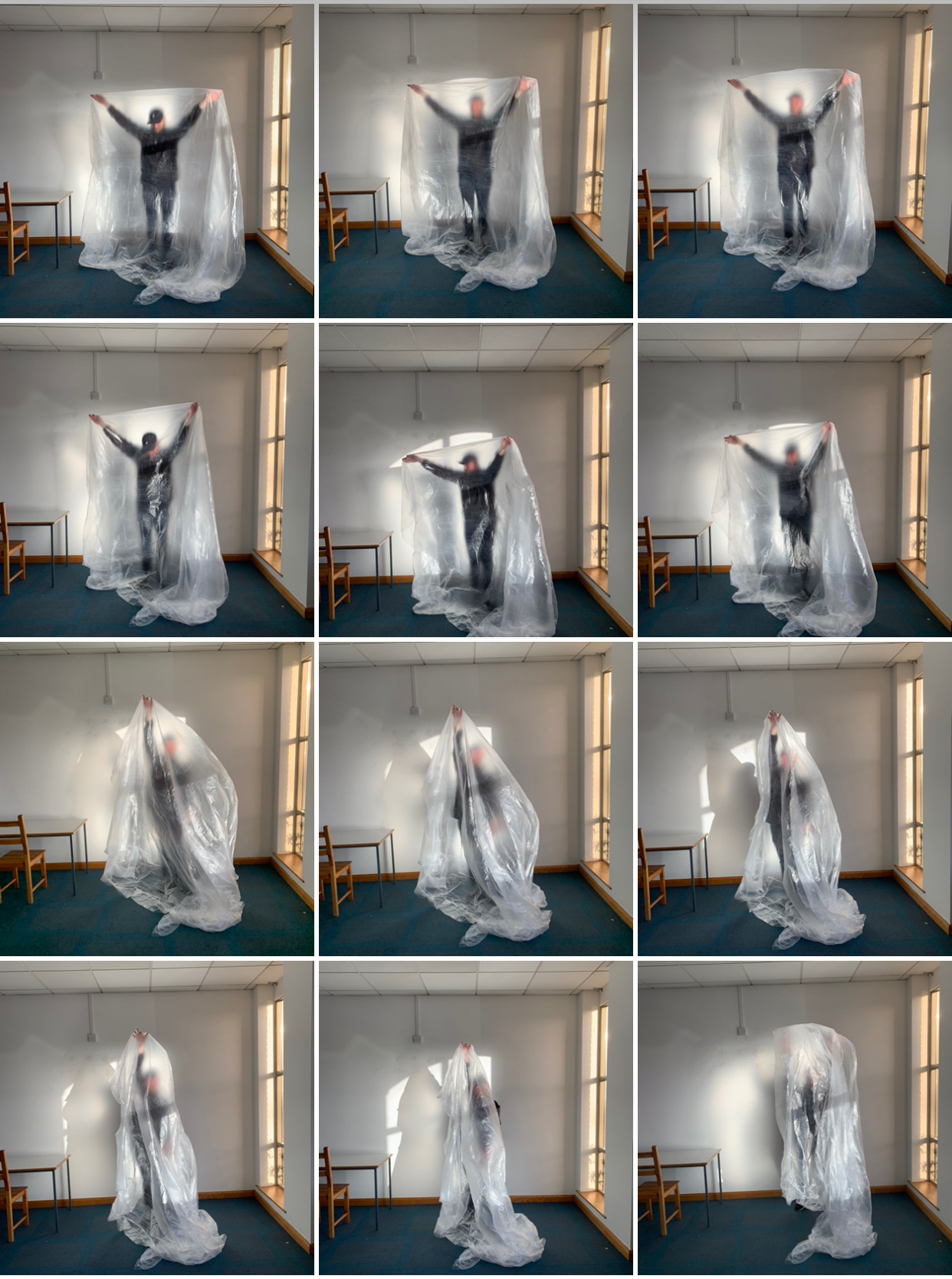






Material Studies
Sculpture & Video
The following images & videos demonstrate my various early experiments by exploring sculpture and materials. I was interested in how certain configurations could respond to the space and the viewer, I incorporated various projections and lights to create a sense of atmosphere and feeling. These ideas of feeling and response were something that I wanted to explore within the new I wanted to work for a longer period. These initial tests were the starting point with my current experimentation with sculpture and projection.
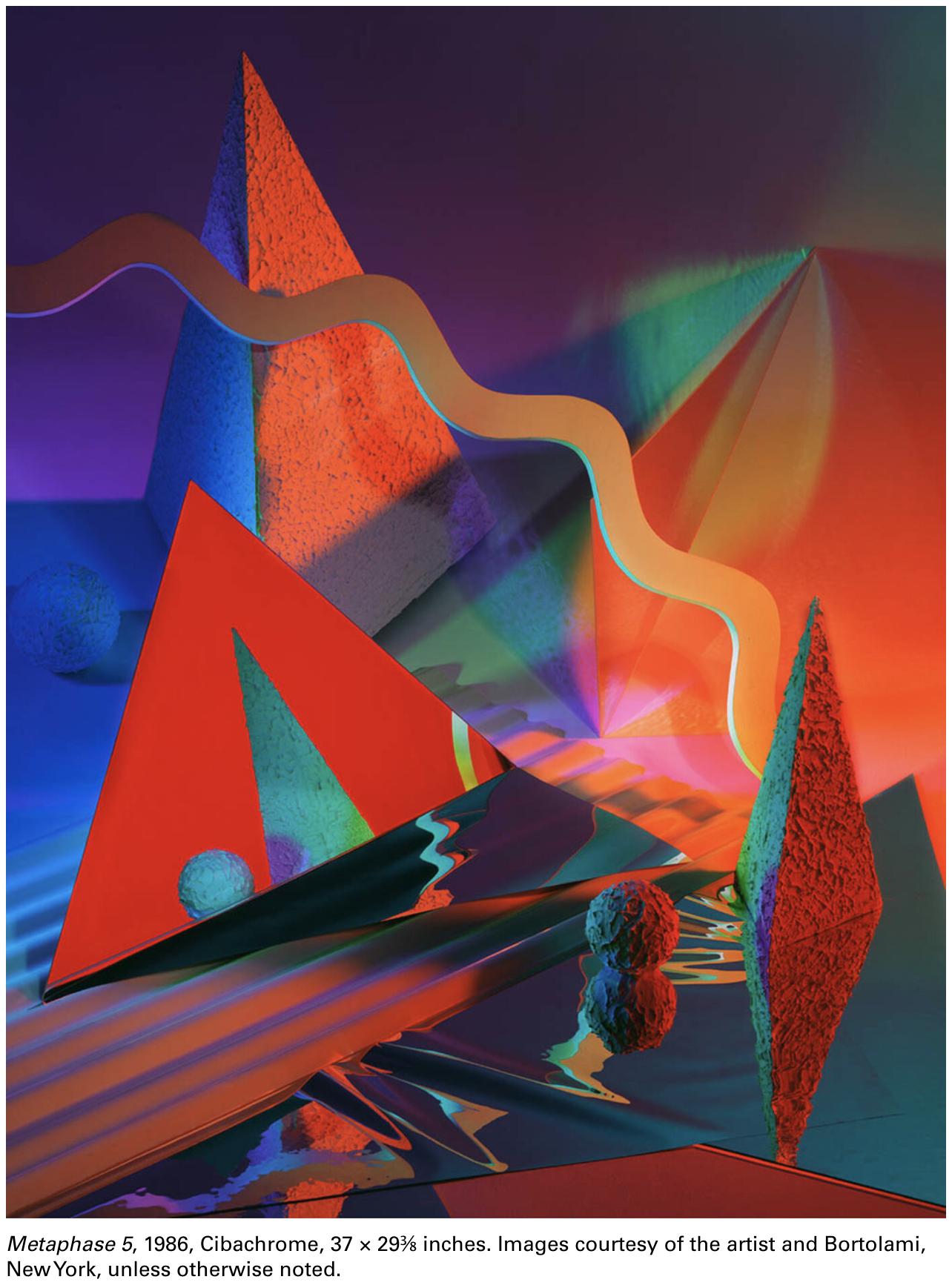


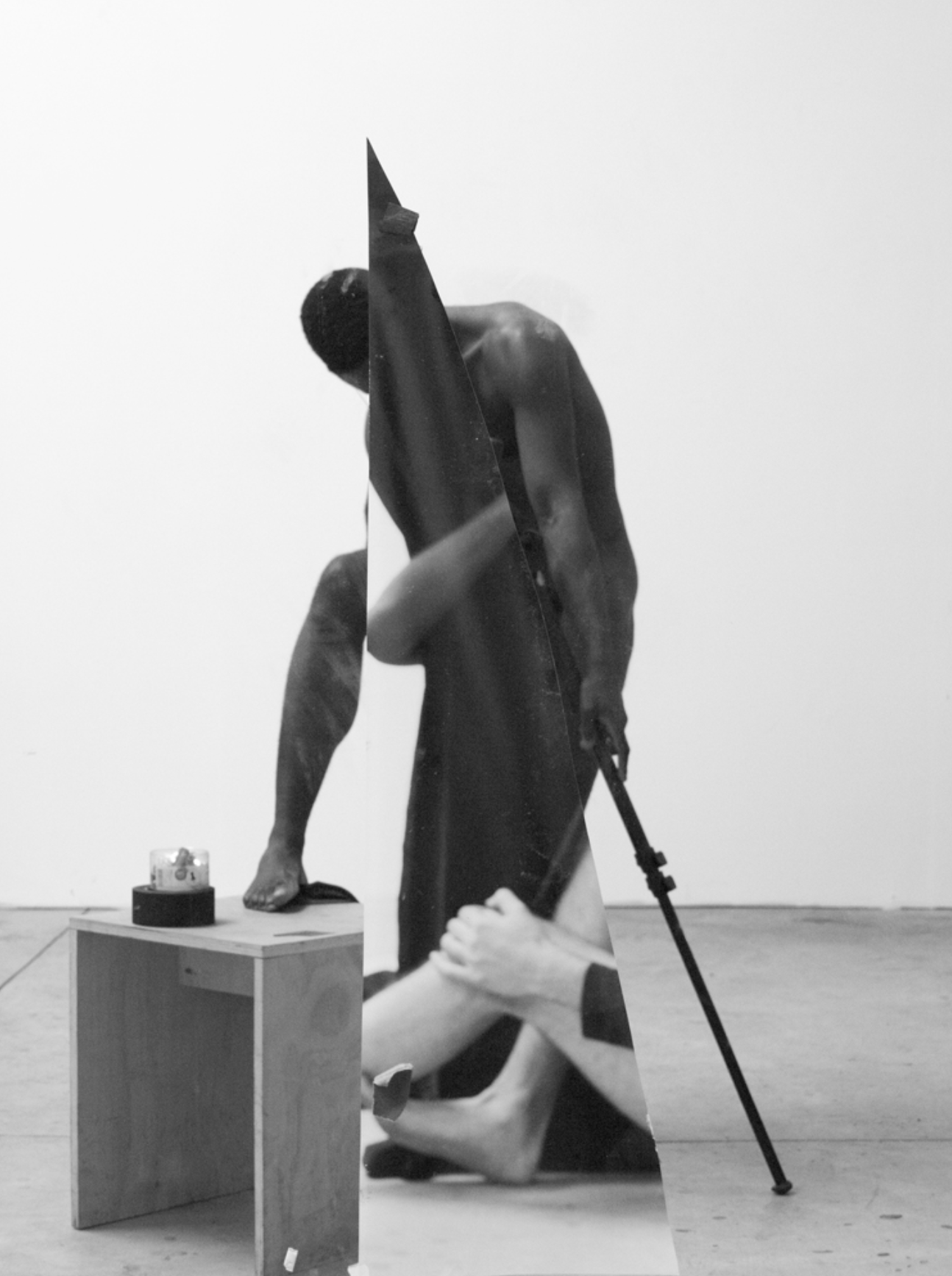


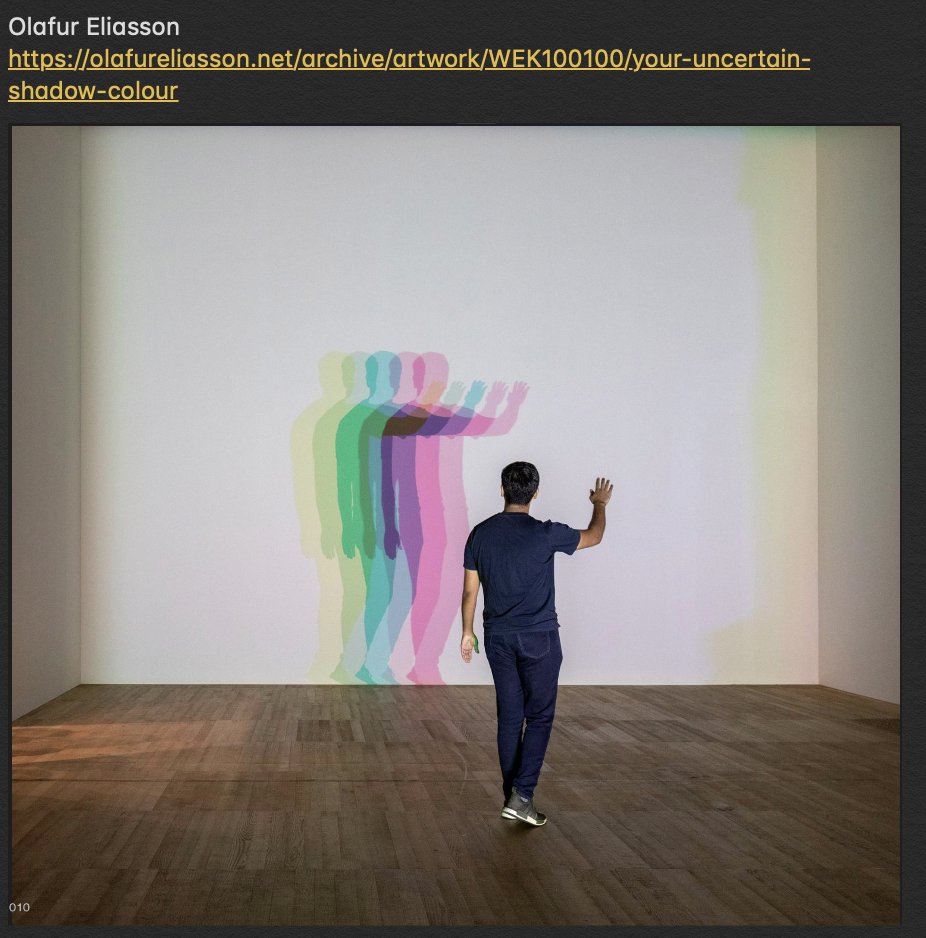
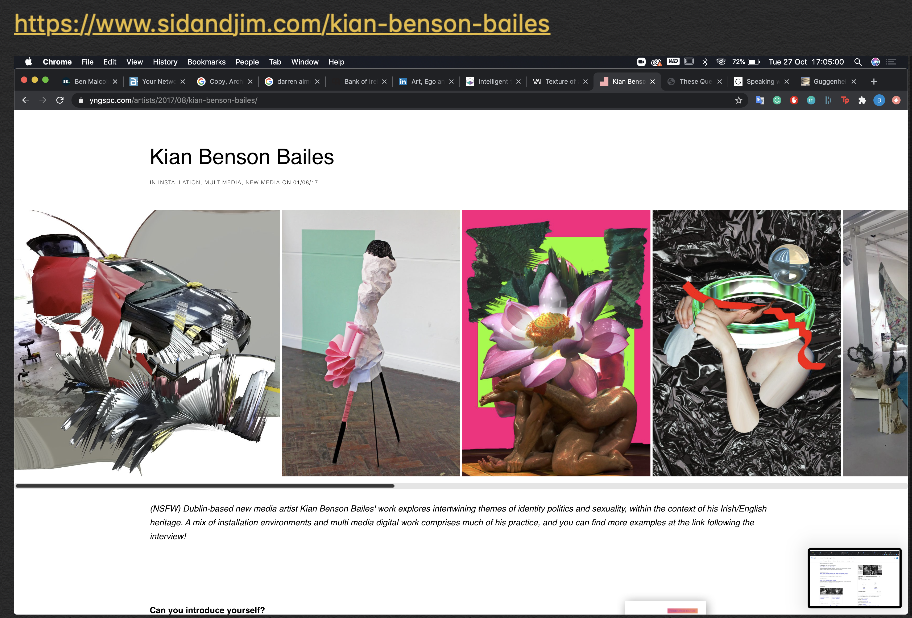
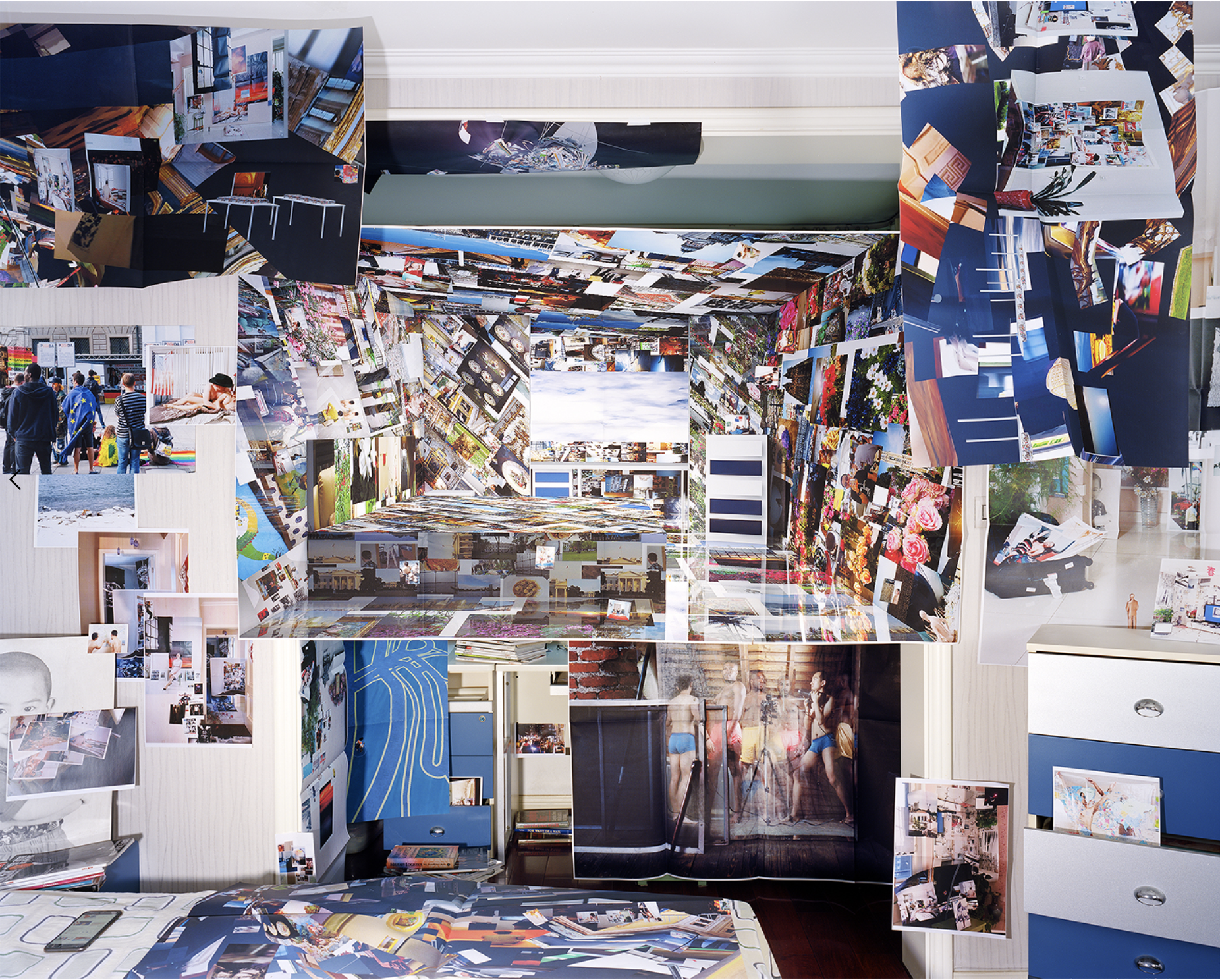
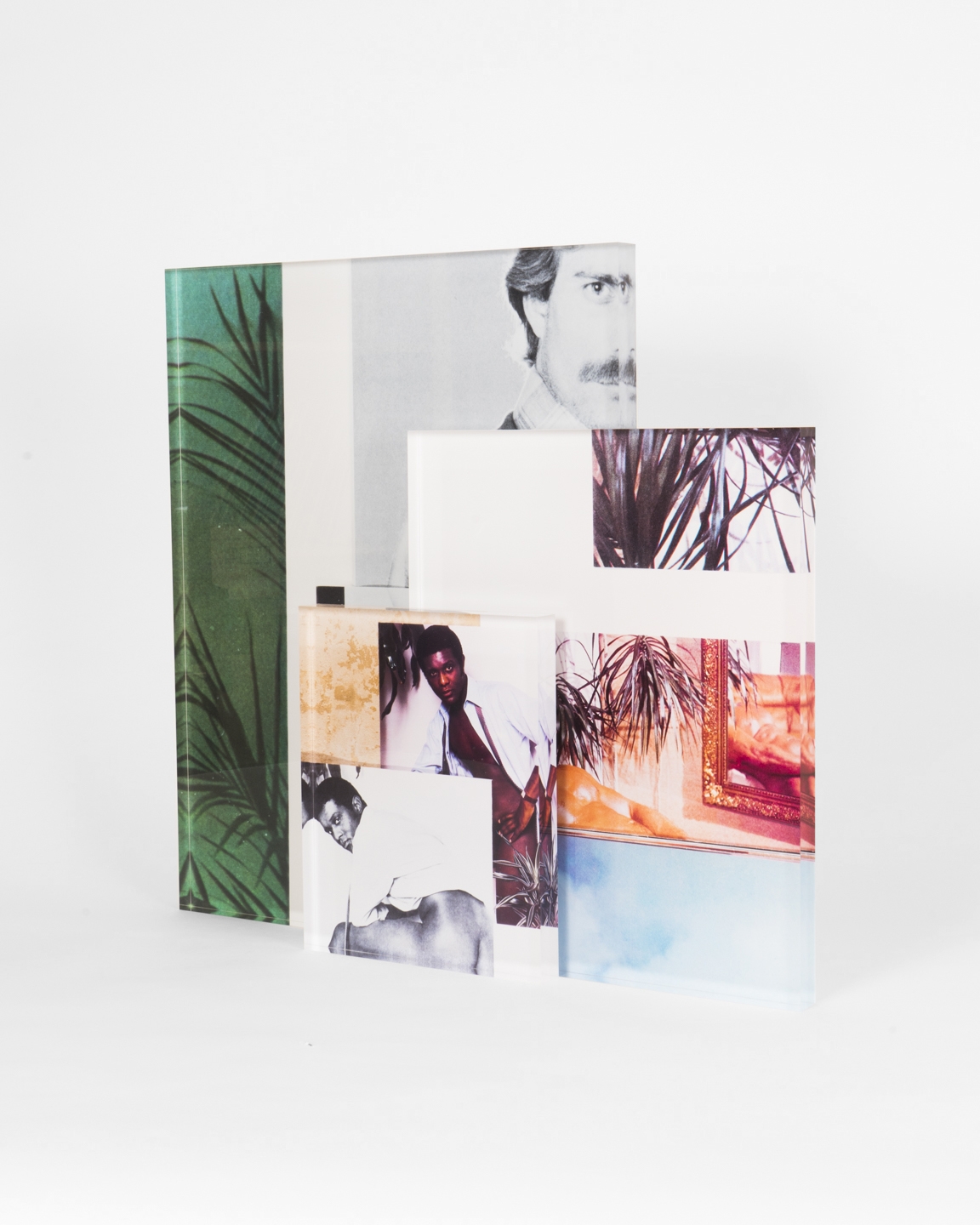
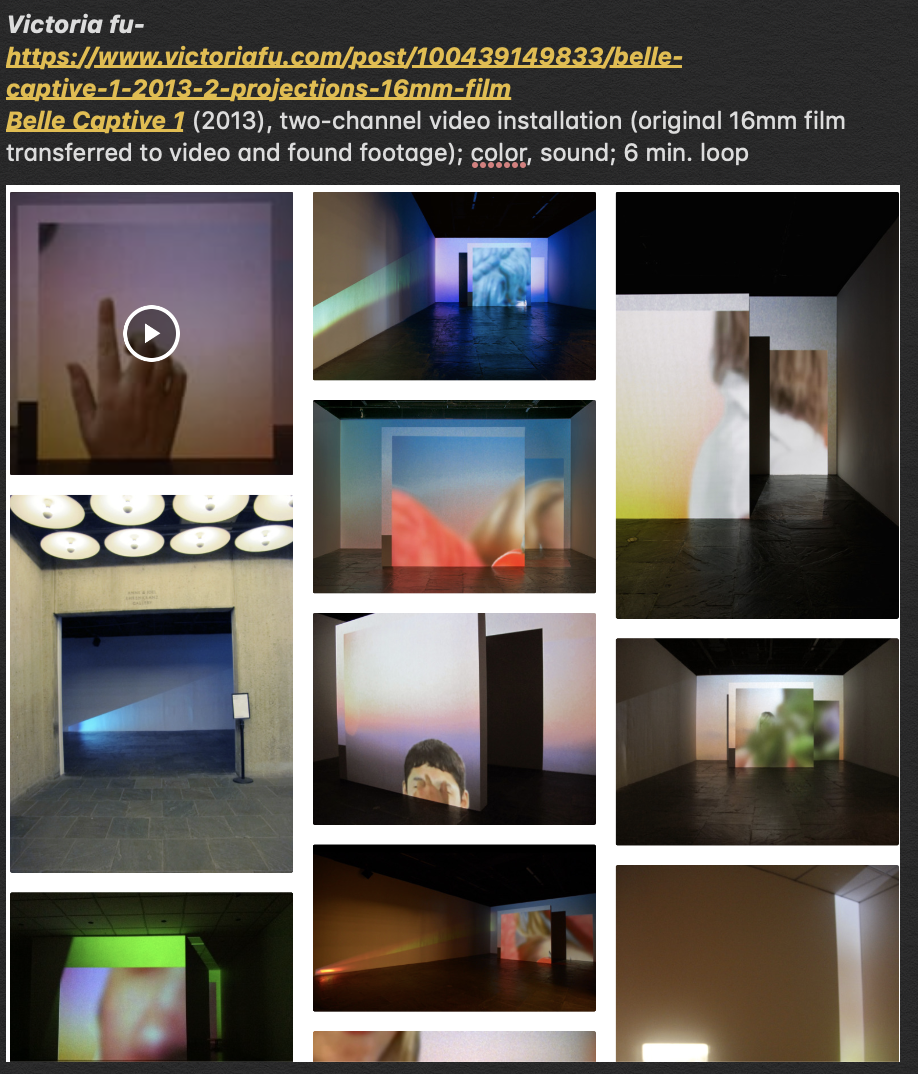



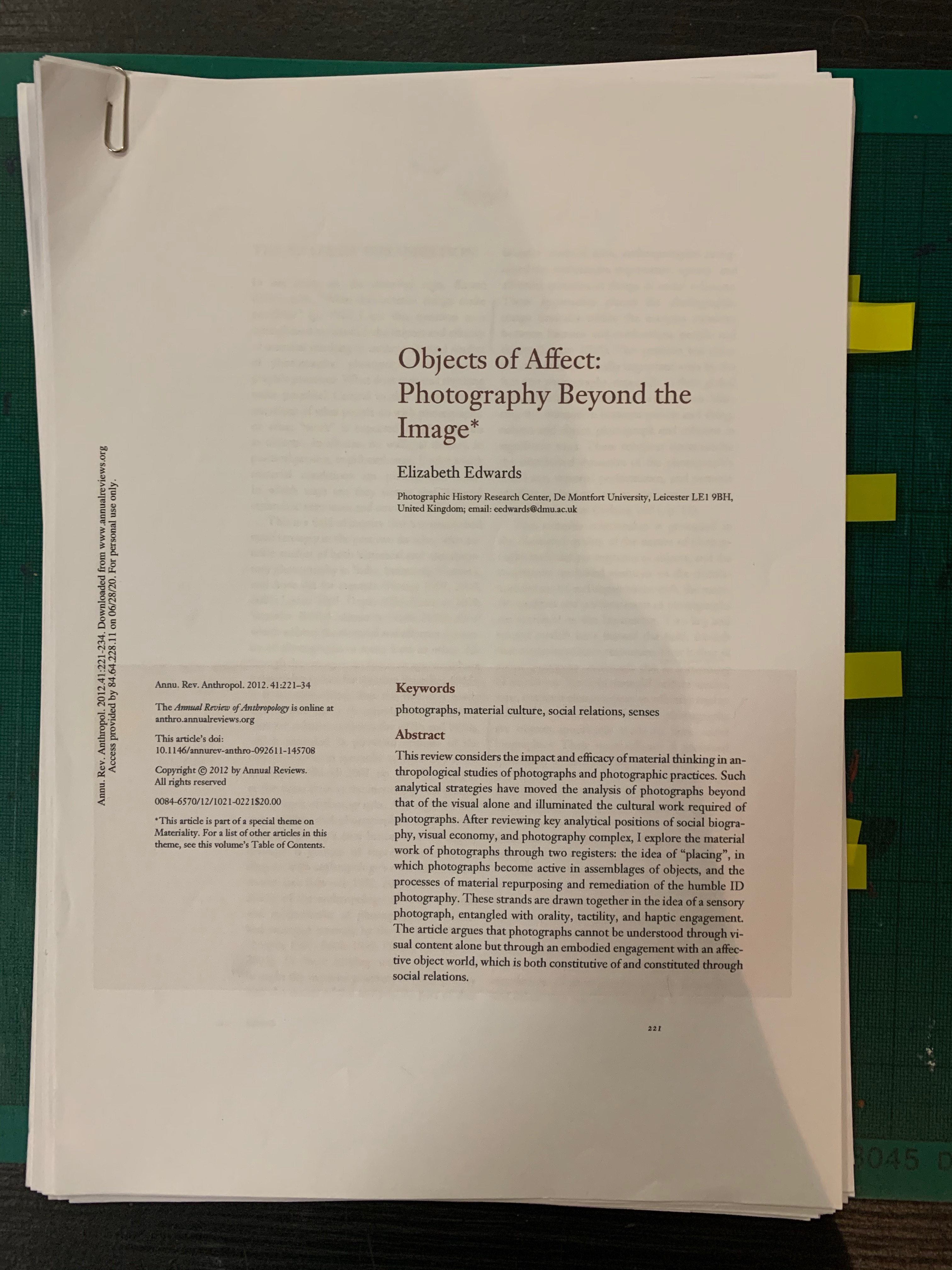

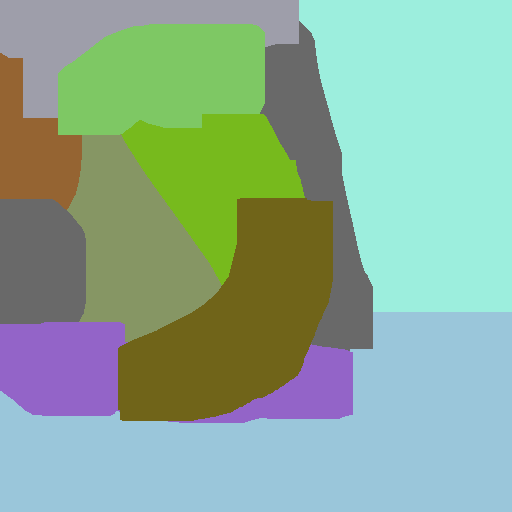
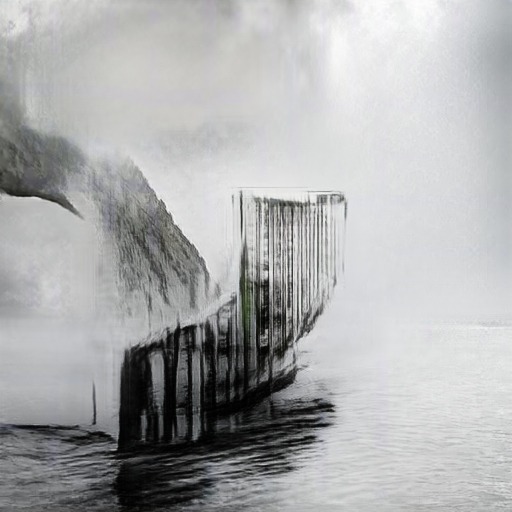


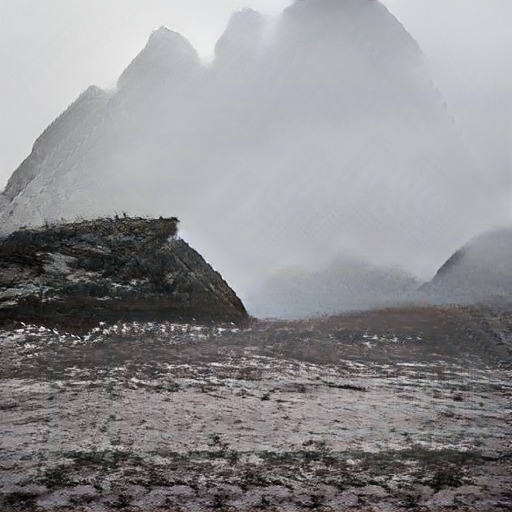

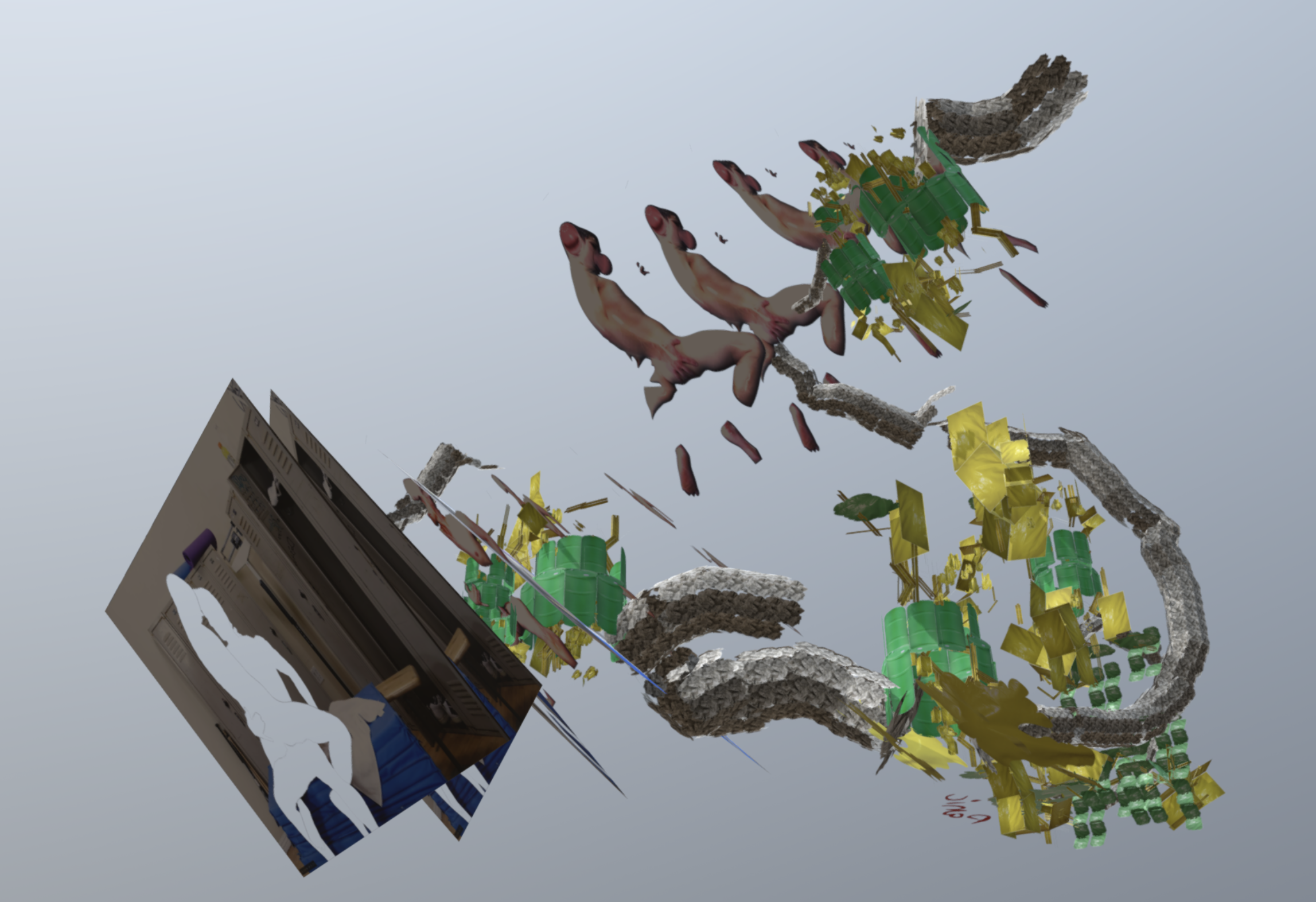

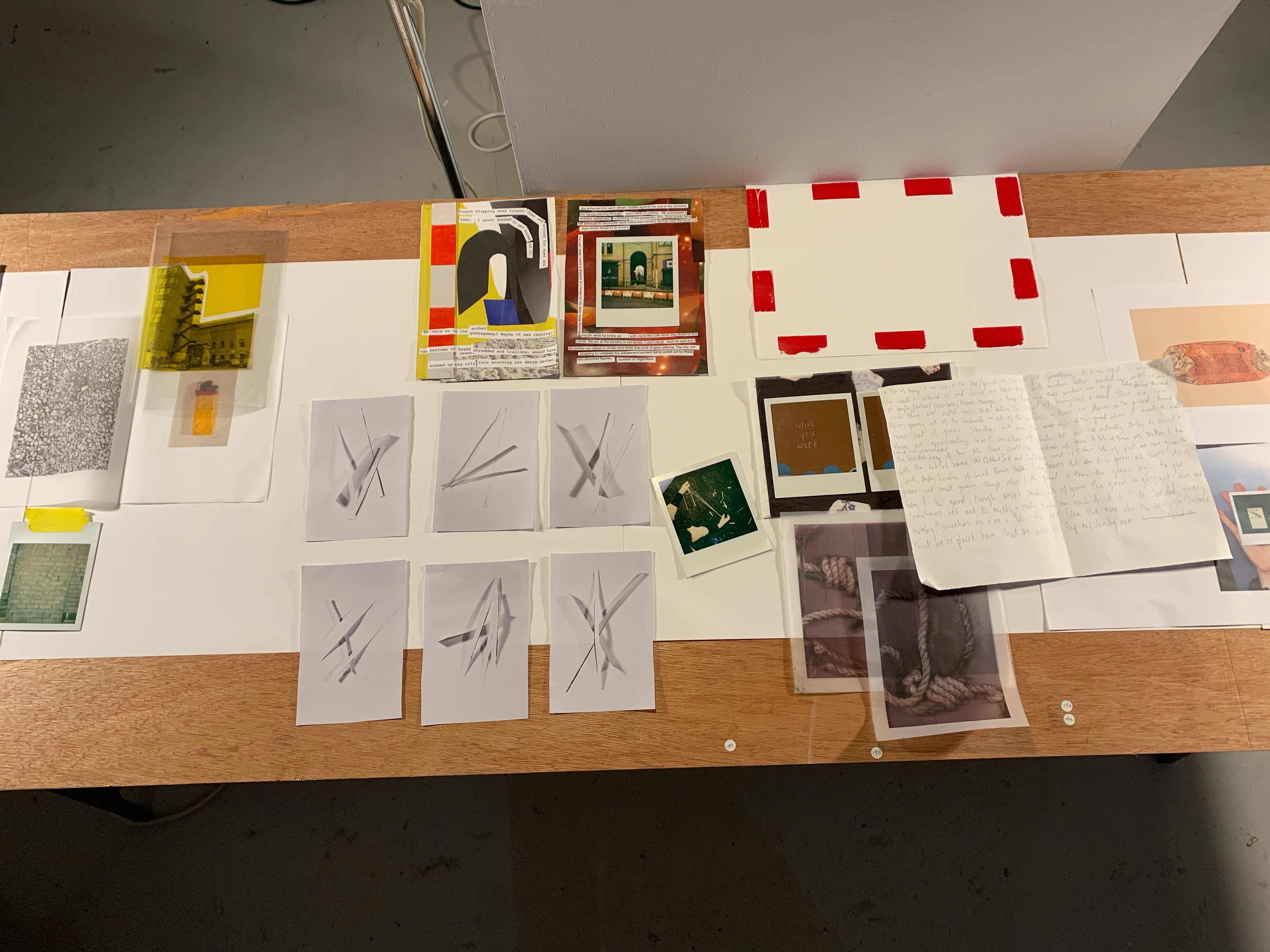
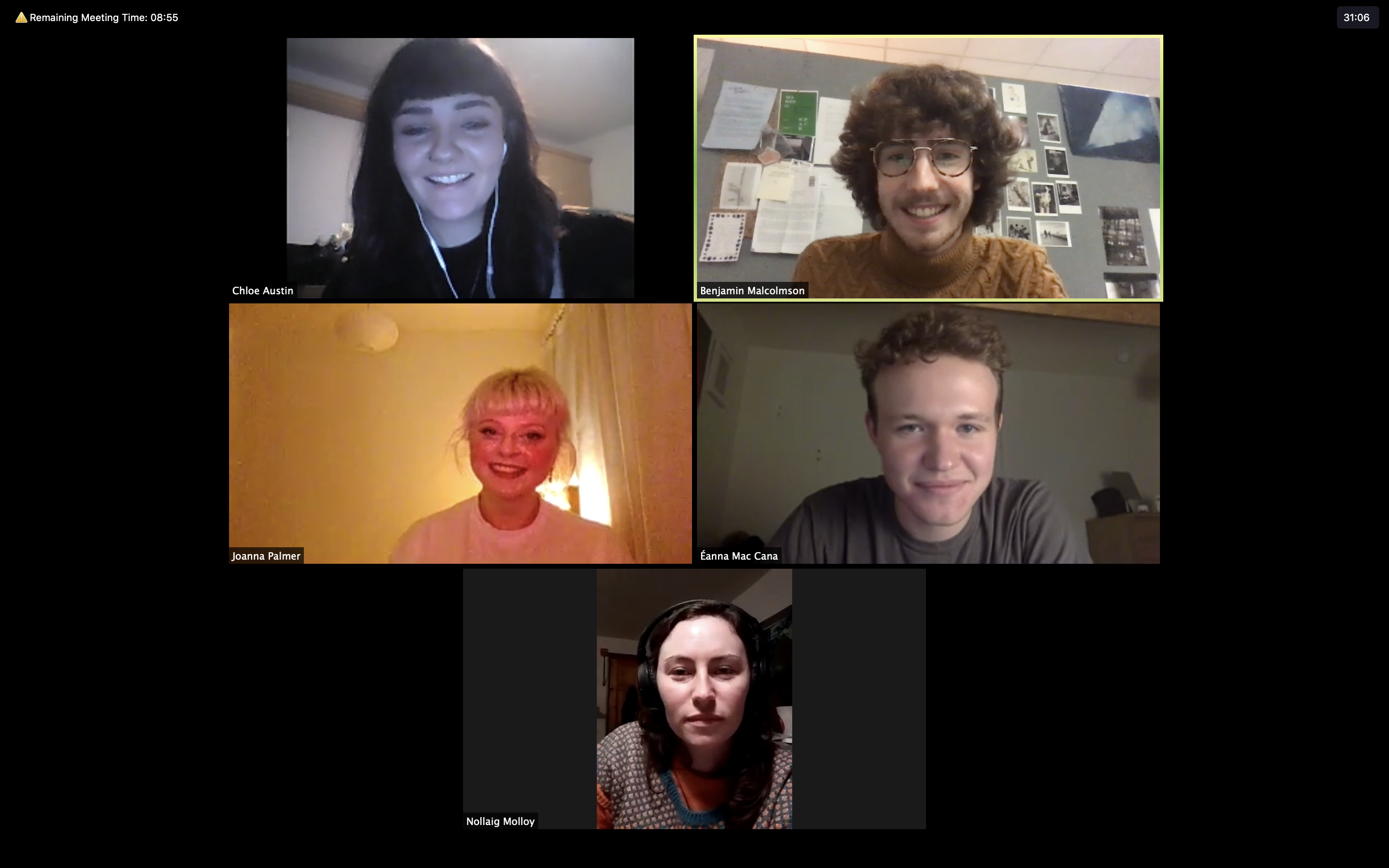
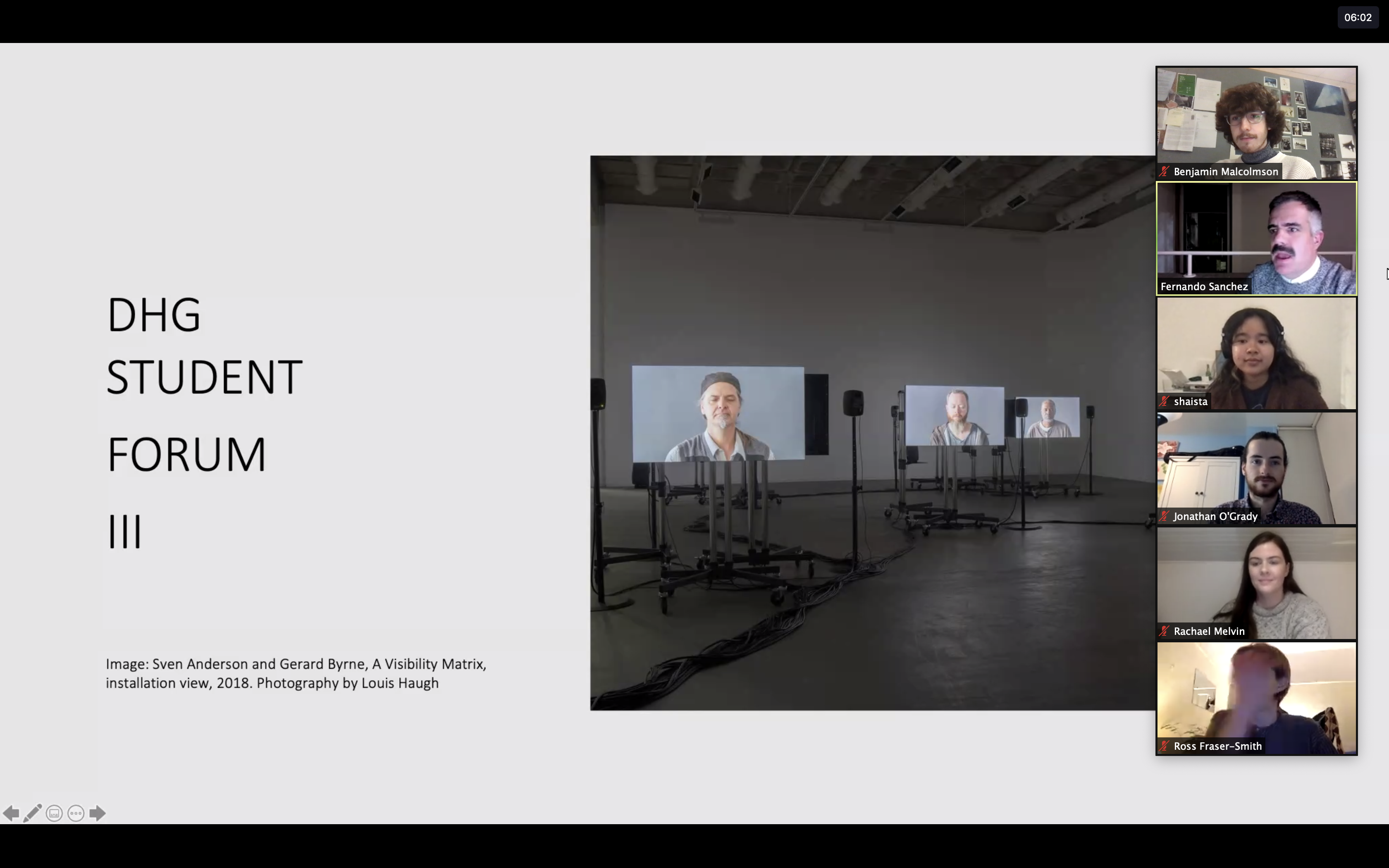
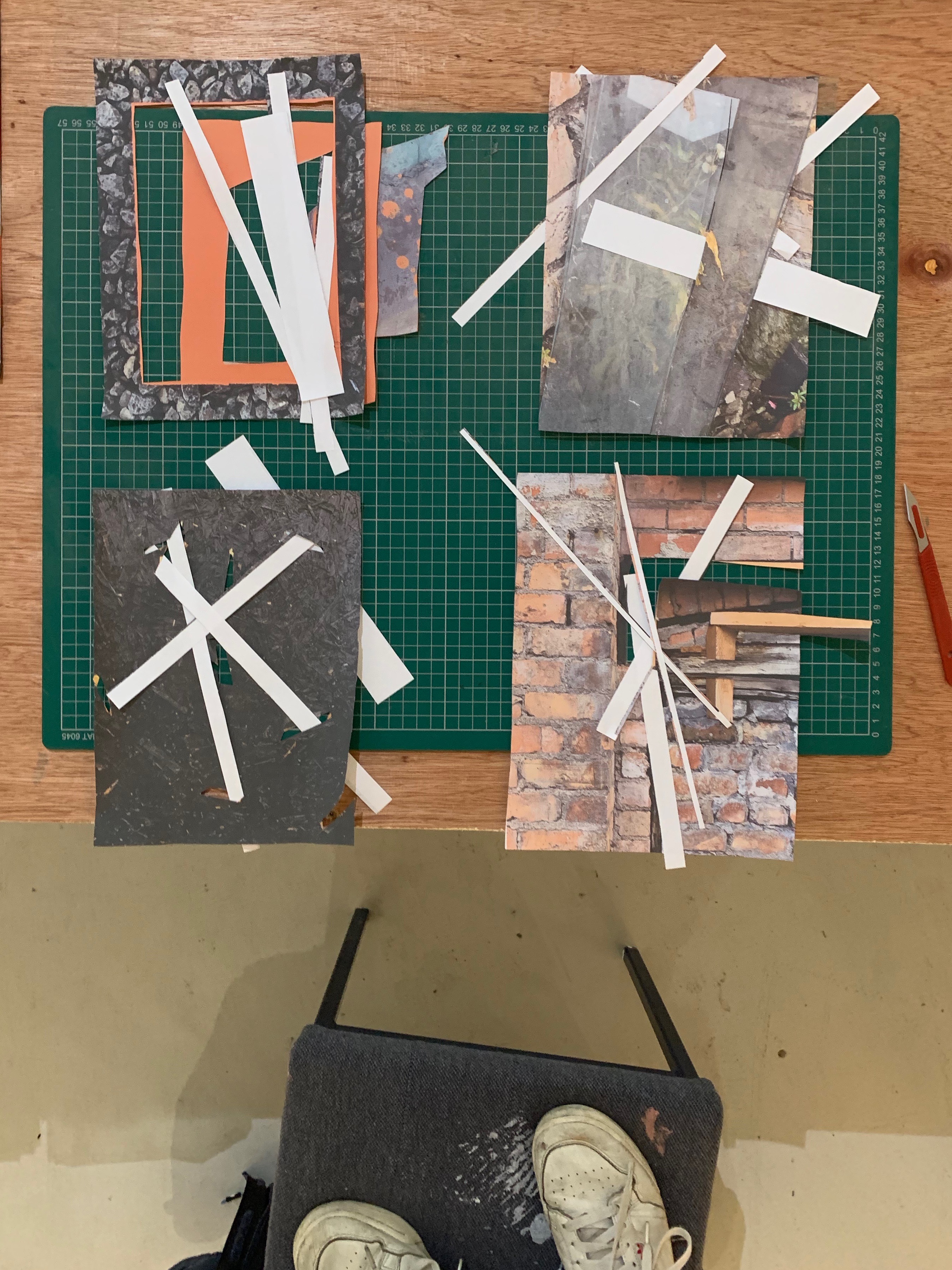

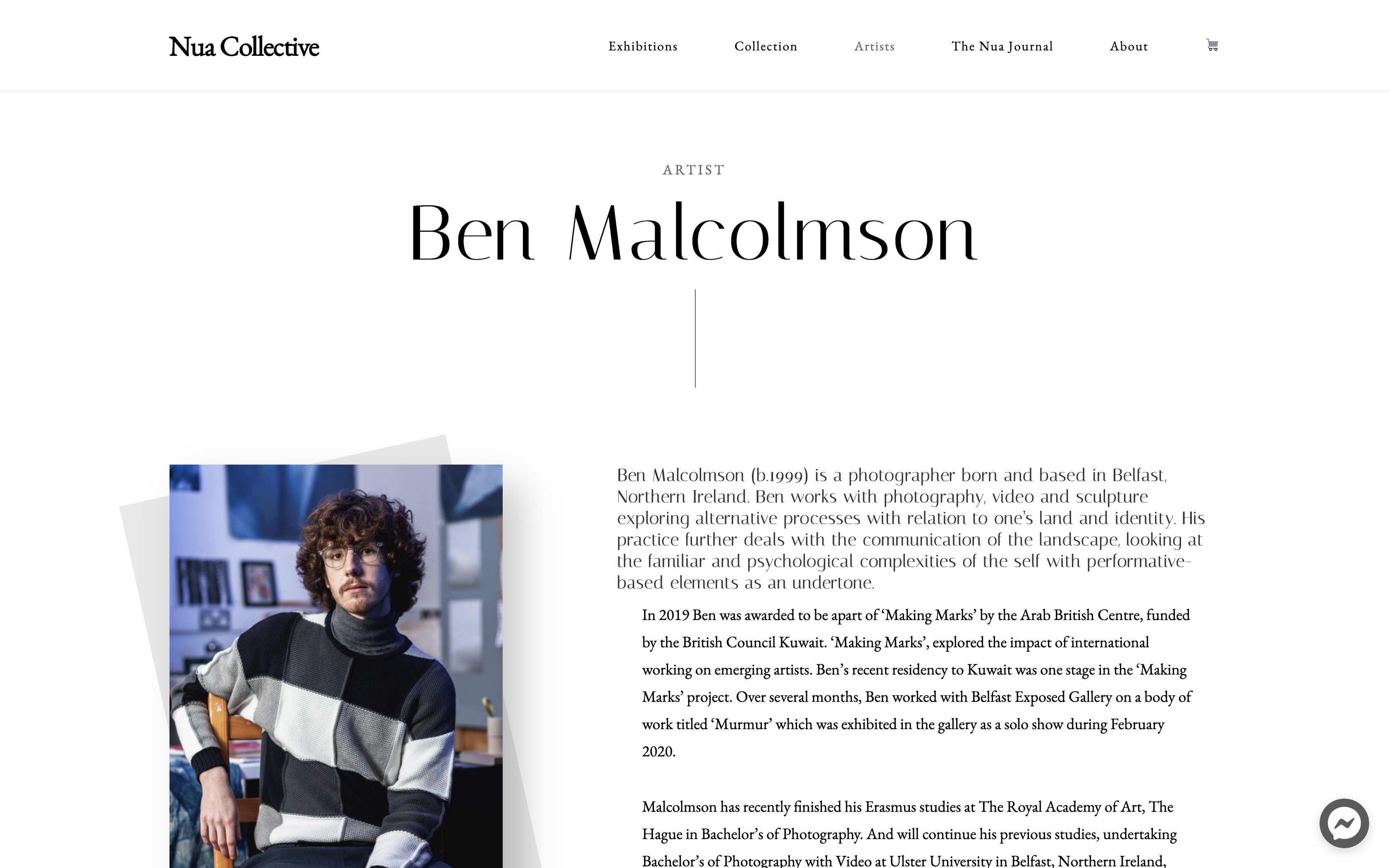


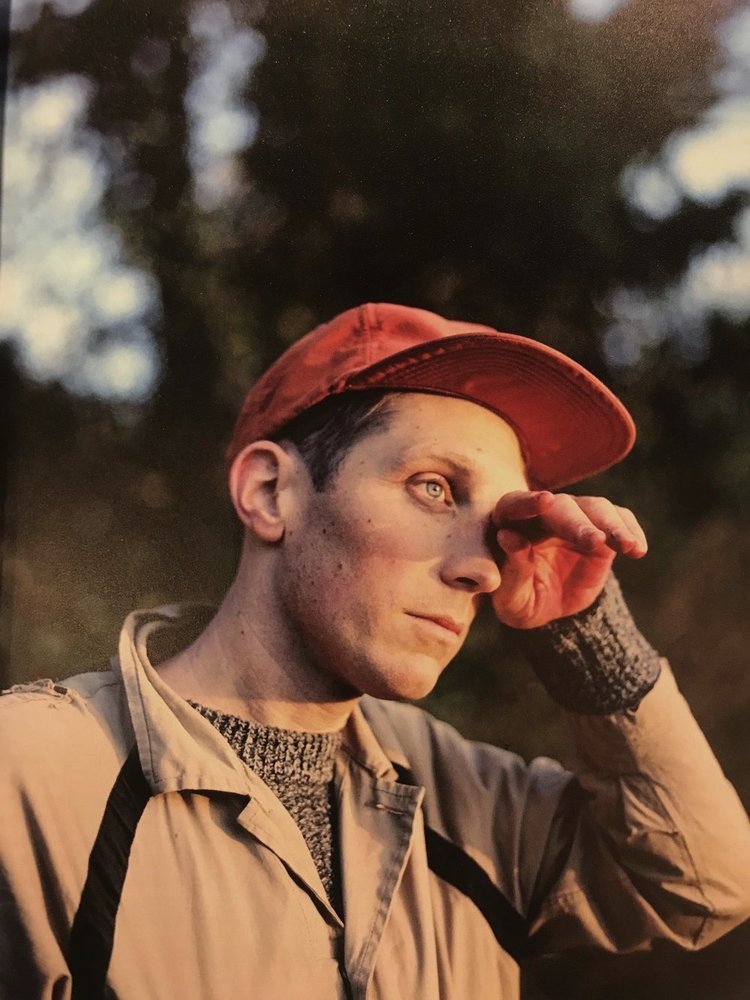
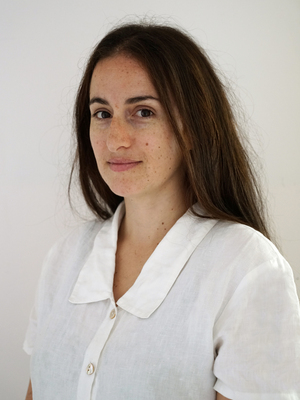


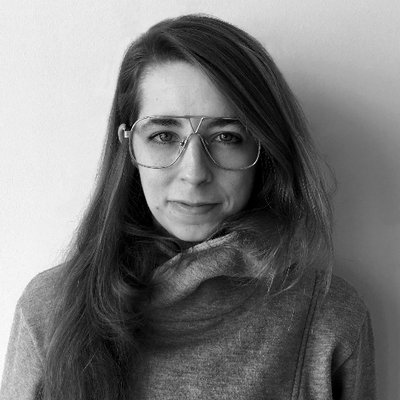

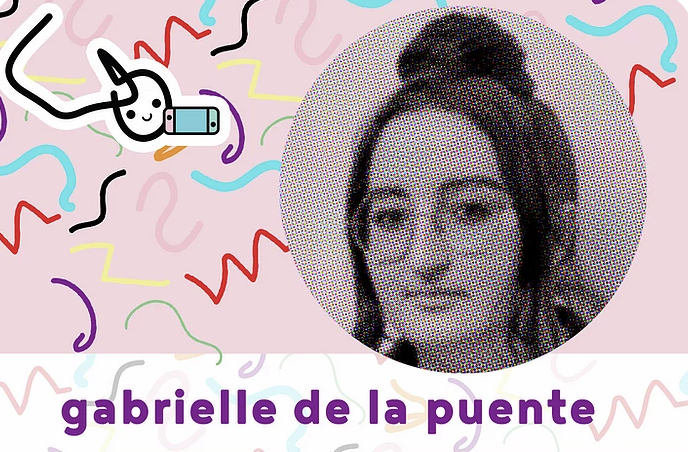
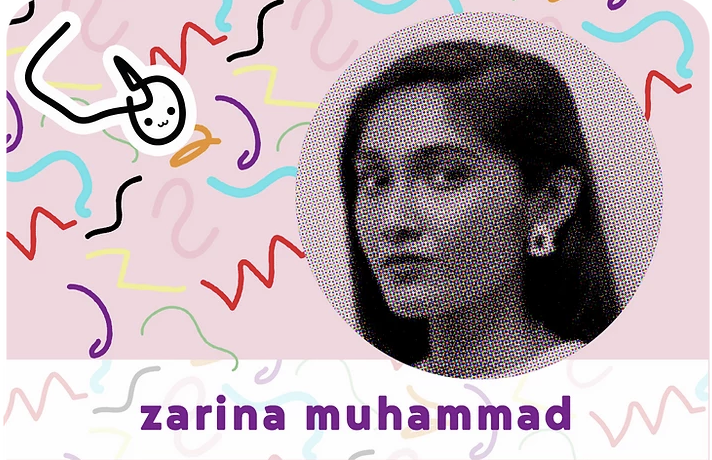

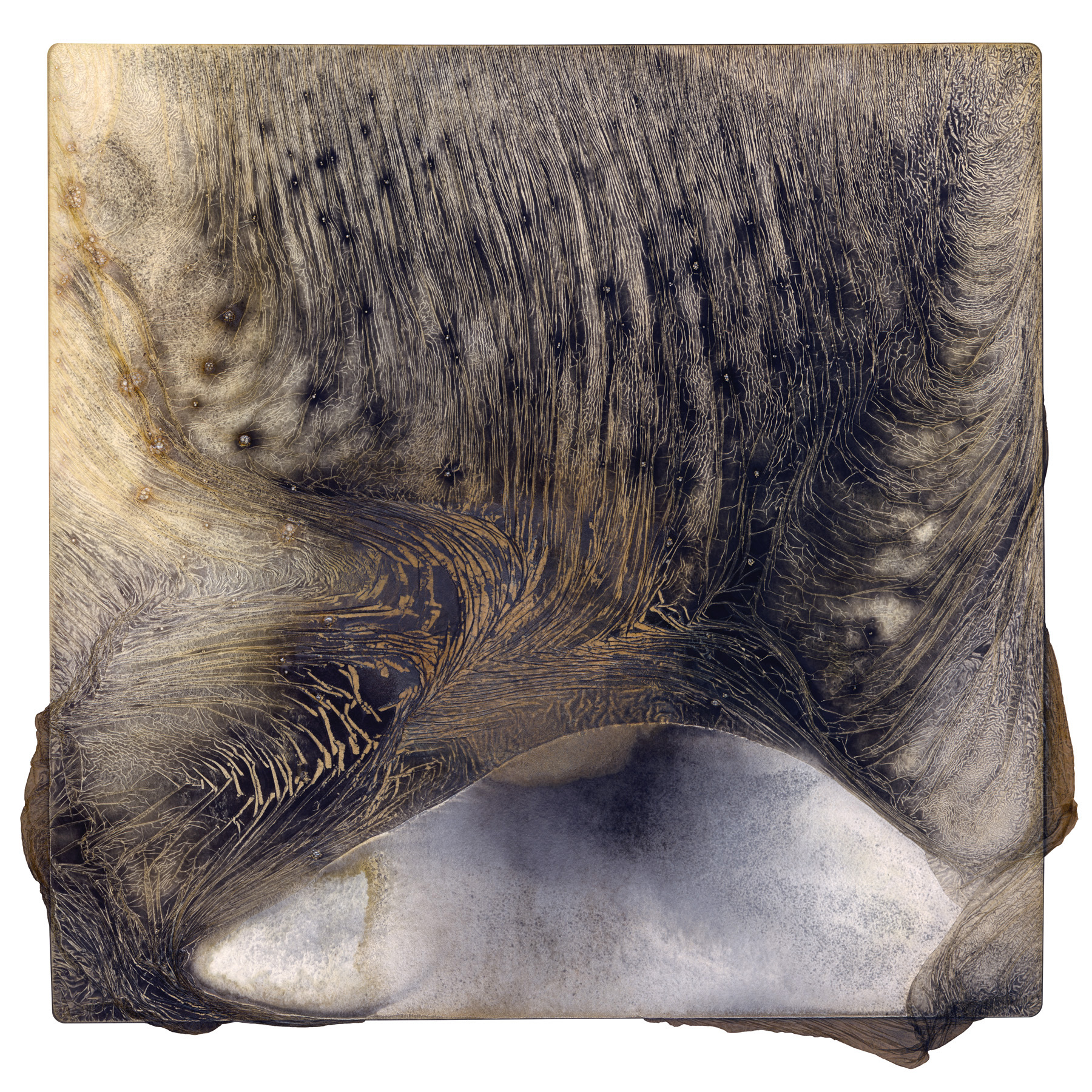


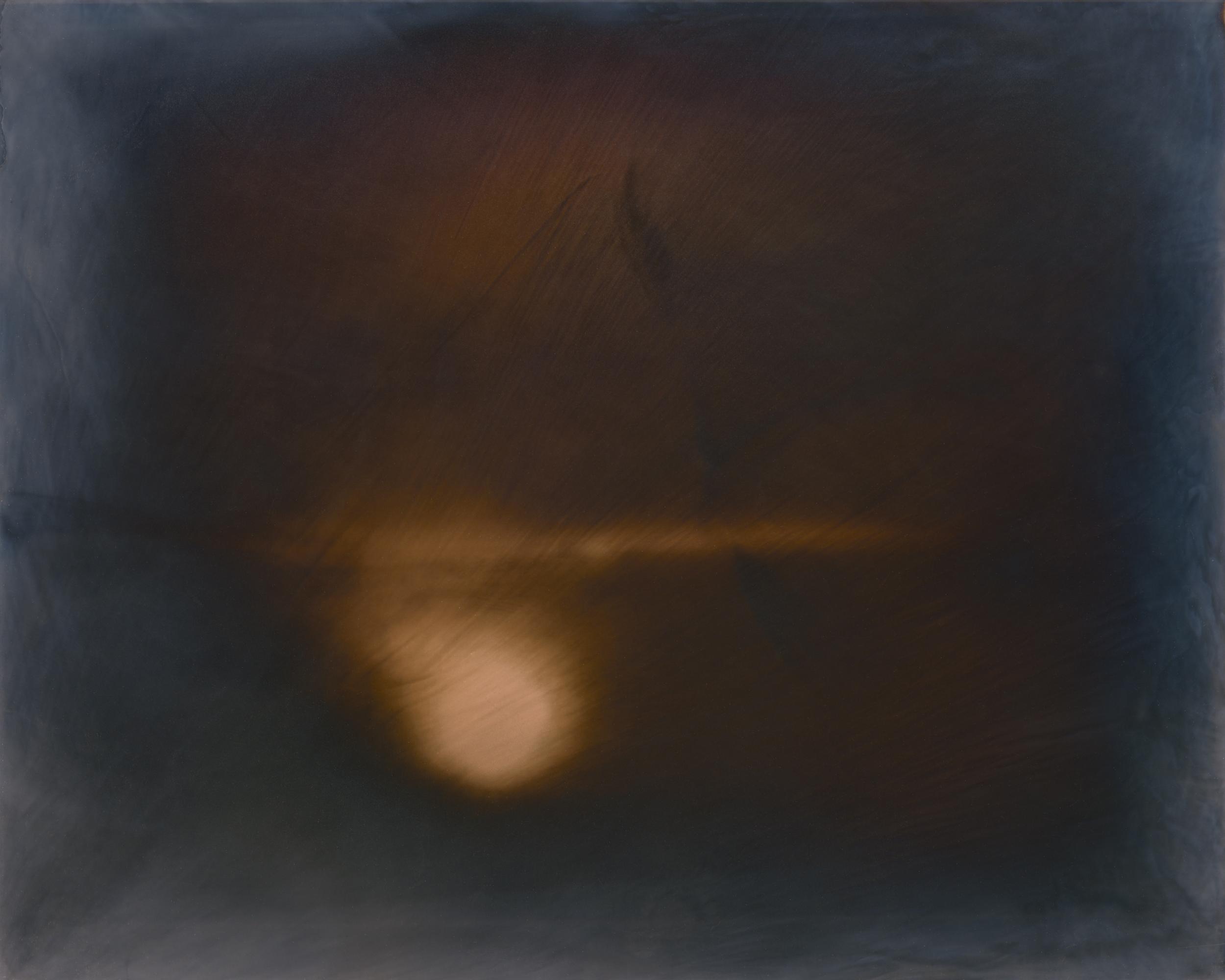
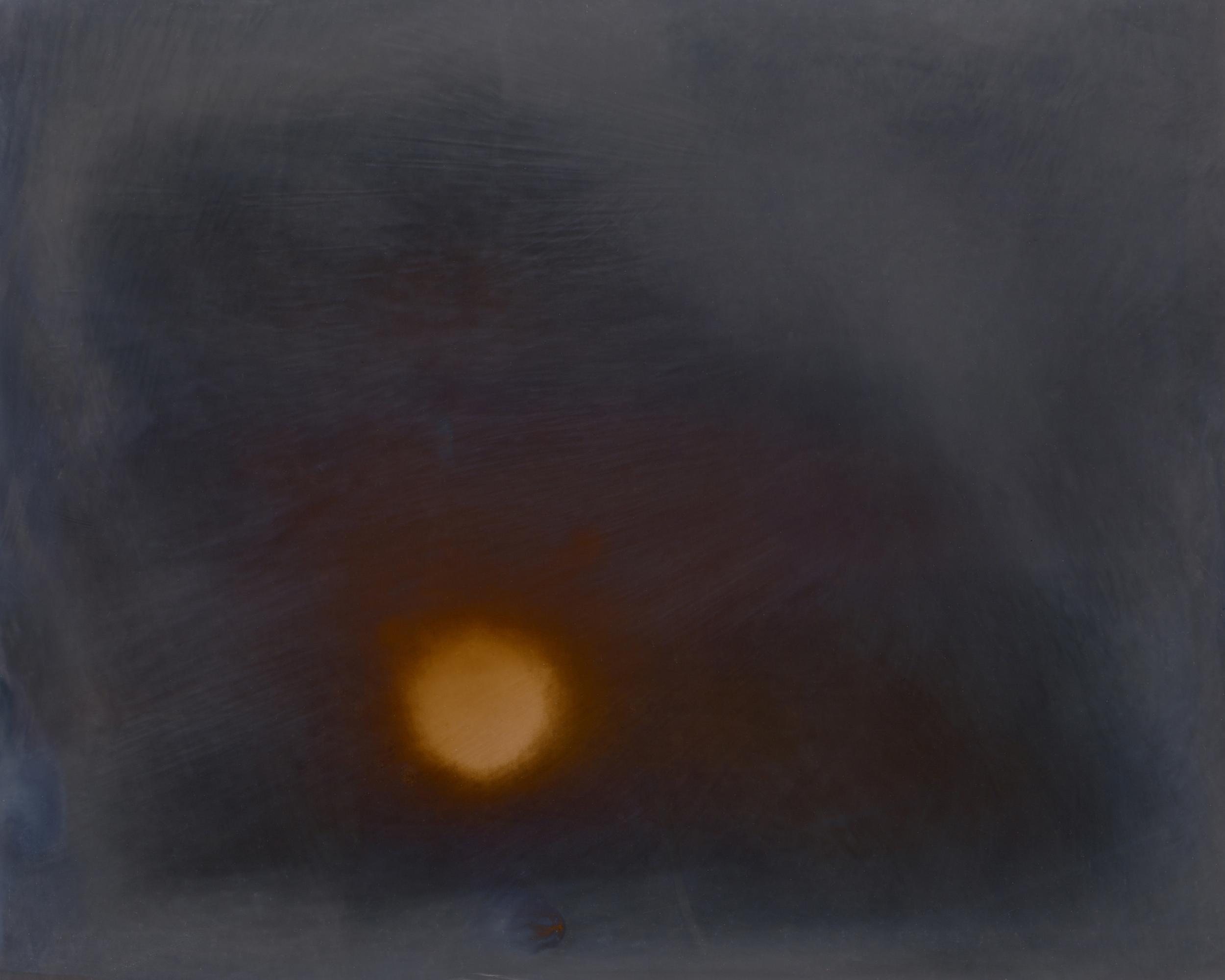
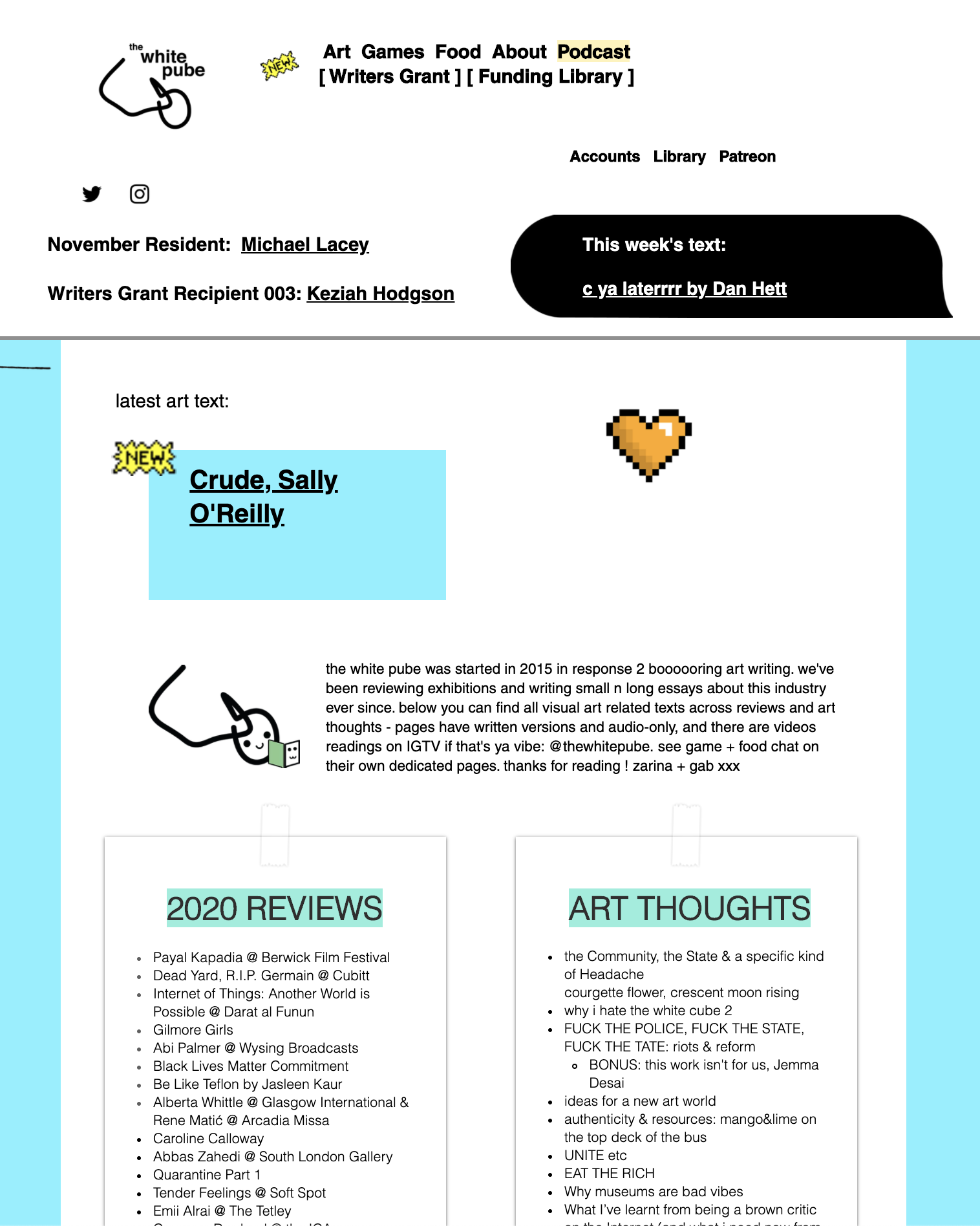
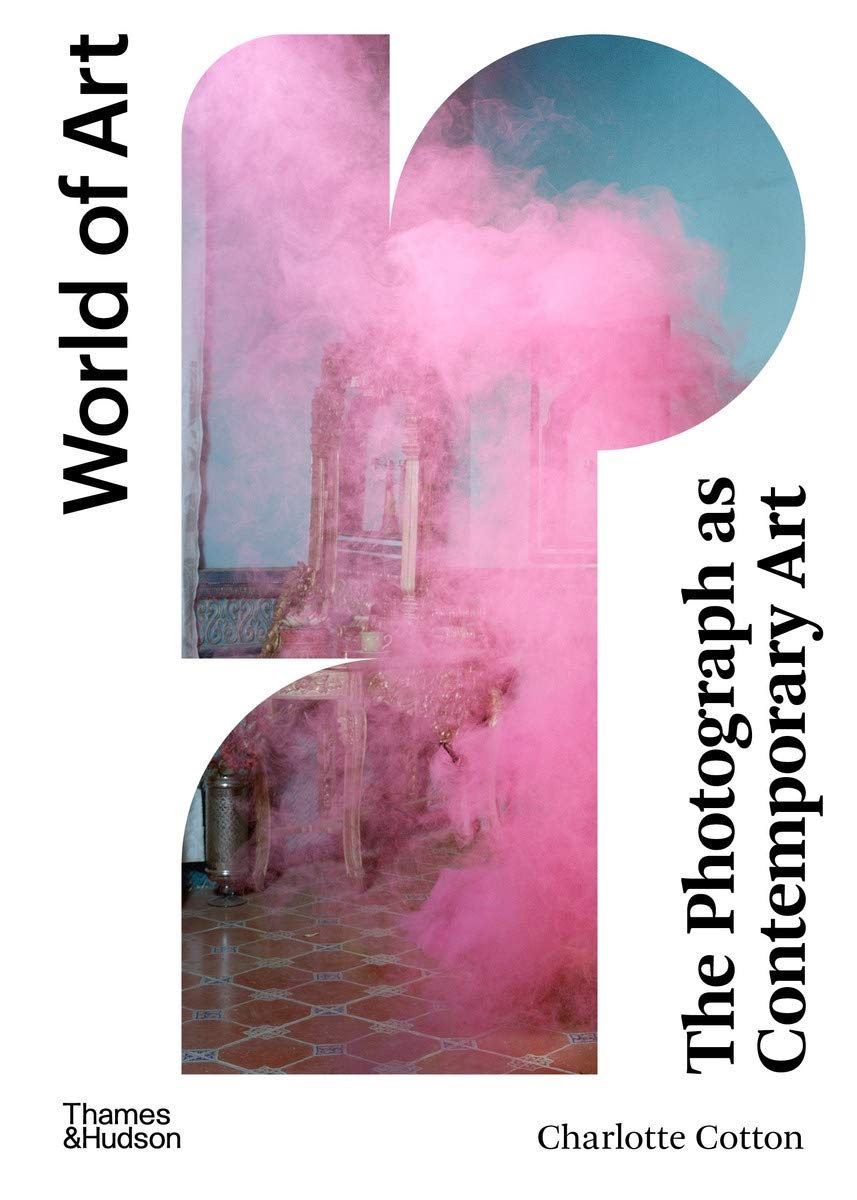
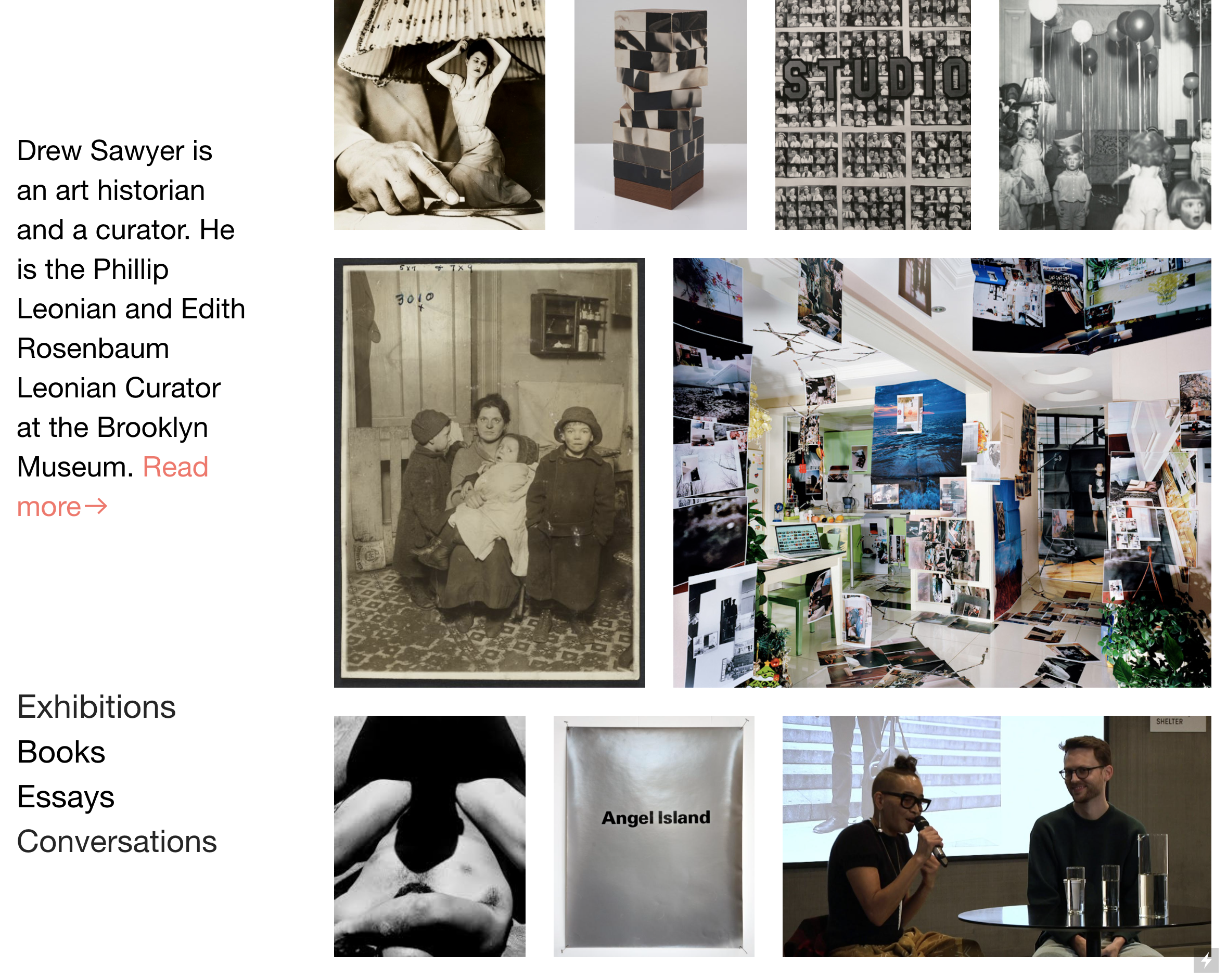
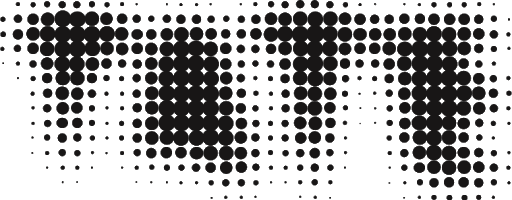
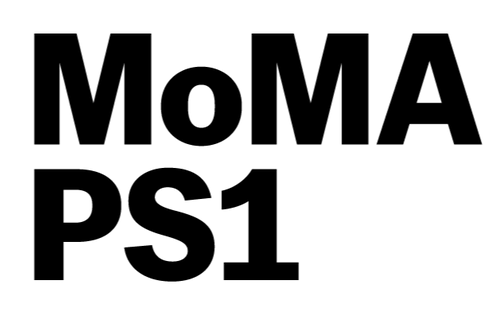
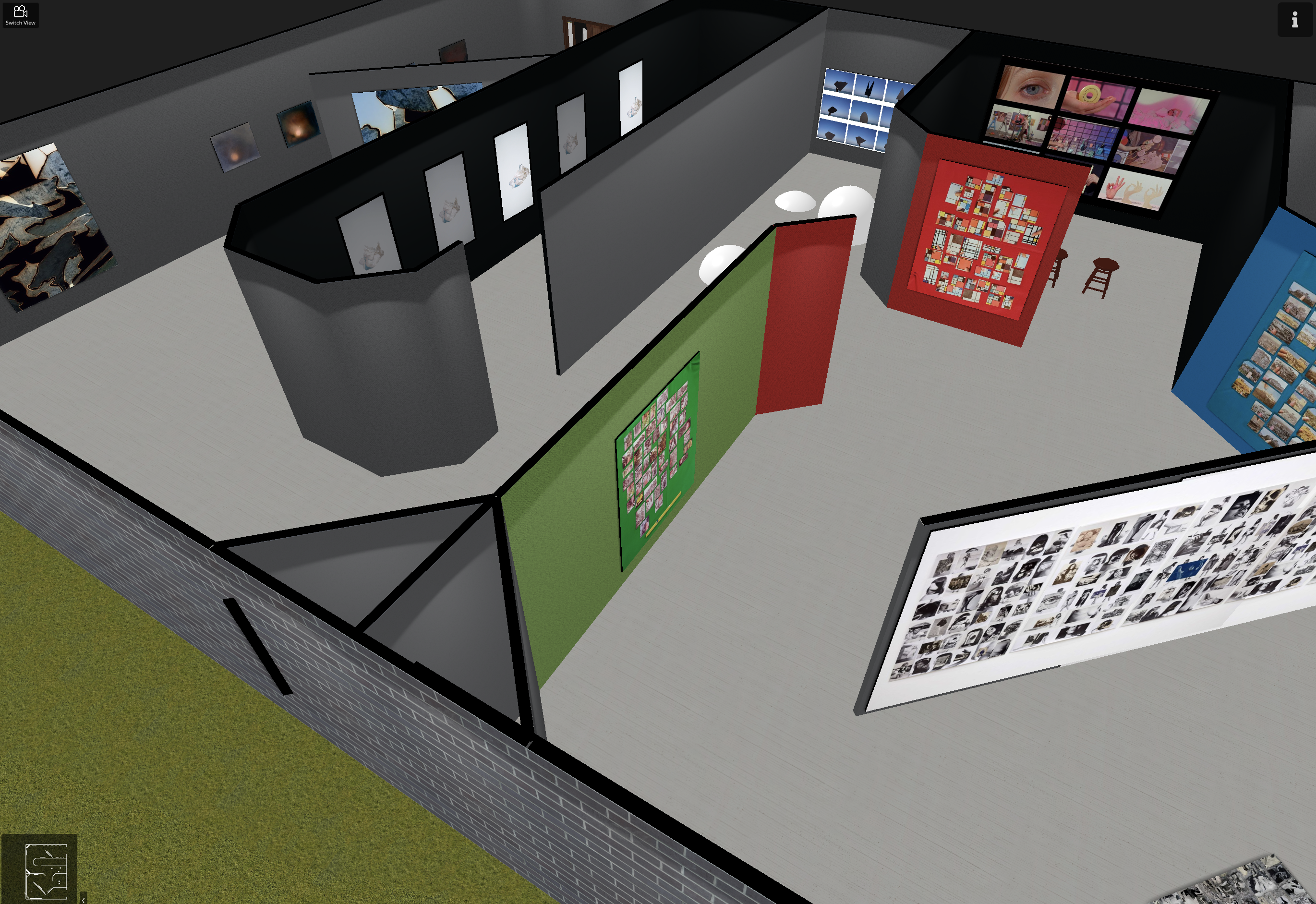
Ar/3D Experiments
3D Study
The video on the image on the right showcases a 3D rendered that I made on the 3D rendering software Cinema 4D. This advanced software allowed me to create anything in a 3D environment, I am still very new to the software but the exploration of different materials and textures I could create has inspired me to push the ways in which I think about digital-based technology. During the coming semester, I hope to animate and render objects and different materials, to interact with and to project onto various objects.
AR/3D Experiments
Ai Generated Landscapes
These images to the right of the text showcase a selection of landscapes. These landscapes are generated through AI software. Using the software and program, I was able to doodle and draw abstract shapes that then were converted into an automatic landscapes. These are just some few examples of my experimentation with AI and 3D technologies.
Student Forum iii
The Douglas Hyde Gallery
The Douglas Hyde Gallery Student Forum programme consists of recent graduates and students, who, over a 12 month period will be involved in the gallery’s engagement through group discussions/events involving our various practices.
In Motion
Video Art Exchange
This an extract of what the programme entails: 'This is an opportunity for each participant to see how other practicing artists interpret their work, allowing room to inspire new ideas and discourse surrounding their digital practices. During these challenging times, digital artists have been limited to showcasing and promoting their works through online platforms, websites, e-books, etc. In Motion attempts to create an exhibition/installation from the comfort of our own homes or studio spaces. Each artist will curate their own exhibition in their chosen space and experience the work physically, encouraging the immersive video art experience that we are craving.' - Chloe Austin 2020
Nua Collective
Website
Nua is a collective initiative brought on by the change in ways that people buy and showcase art. based primarily in Ireland the collective holds 50 members across the world that have Irish Heritage. I joined this collective as a business strategy to stale my work and to expand my network within Ireland, why I am featuring this in my RGB is that the website requested an artist statement and quite a rigorous understanding of what my work is about to a wider public, so this allowed me to articulate myself better in writing, which is featured on my artist profile page.
'Cite' Workshop
Catalyst Arts
The 3rd & 4th of Oct 2020 saw me participate in ‘Cite’, a workshop lead by Nollaig Molloy and organised by Catalyst Arts as part of their wider ‘Propagate’ programme. ‘Cite’ involved discussions around the archive and the spaces within Belfast that are going through radical redevelopments. Our work correlated through a collaborative zine, touching upon the essence of the time that we spent within the space.
Ben Malcolmson
UK/Ireland
Malcolmson works with photography, video & sculpture exploring alternative processes with relation to one's land and identity. His practice further deals with the communication of the landscape, looking at the familiar and psychological complexities of the self with performative-based elements as an undertone.
Dafna Talmor
UK
The multidimensional work of Dafna Talmor discusses photography, film, curation and collaboration. By intertwining images into virtual works of art, her creative practice merges and transforms landscapes.
Carmen Winant
America
Carmen Winant, artist and writer, uses text, image and sculpture to challenge conventional female body assumptions. In order to empower feminine agency, Winant addresses and introduces the patriarchal ideologies at play within popular society by actively dealing with topics such as eroticism and censorship.
Sara Cwynar
Canada
Cwynar is interested in dated advertising images; in the failure of their optical trickery over time; in the fading of their powers of seduction. The work of Cwynar shows how the familiar can become foreign; how the allure of the glamorised object can be lost; and how glamour can disappear.
Tom Lovelace
UK
Within the domains between photography, performance and sculpture, Lovelace operates. Collaborative initiatives, and the role of minimalism within contemporary visual culture and the semantics of the mundane are core themes.
Brittany Nelson
America
In order to explore issues of queer politics and abstraction, Brittany Nelson employs photographic methods from the 19th and 20th centuries, distorting the limits between fact and science fiction.
The Writers:
Drew Sawyer speaks upon the LGBTQIA+ diaspora & his writings and curatorial projects have focused on experimental documentary practices as well as the intersection of art and social movements.
Charlotte Cotton touches upon photography progression through historical contexts and where the medium has been and future potential.
The White Pube, which encompasses Gabrielle de la Puente & Zarina Muhammad respectfully, both founders write about the awareness of a female lead on the representation of women within gallery/museum institution, however, they also impose the question of the lack of POC from other nations (namely non-western countries), they mention the dominance the West has had in the cannon of art.
Early Research For Exhibition
Physical Book
the image on the left to depicts a series of notes that I need thinking about possible ways of what my exhibition could be such as the title the number of artists the selection of those artists. The notebook broke down my process in terms of what I wanted from the exhibition and what things were very prevalent, I wanted the exhibition to have themes of materiality specifically within the context of photography, other factors of play were the themes of identity today such as queer representation. this is also where I took to figure out the way of exhibiting the work, I knew I wanted something different with the show so I decided upon doing a Time Capsule of a select amount of artists demonstrated the breadth and diversity that photography has gone through during the 2010s till 2020. I wanted to capture this in an exhibition that was a retrospective of that time, and sort a Time Capsule was the best option for that, the idea of a Time Capsule came from catalyst arts very time casual created in the early 90s and wasn't open until 2010. This was of great to me, and the idea stuck.
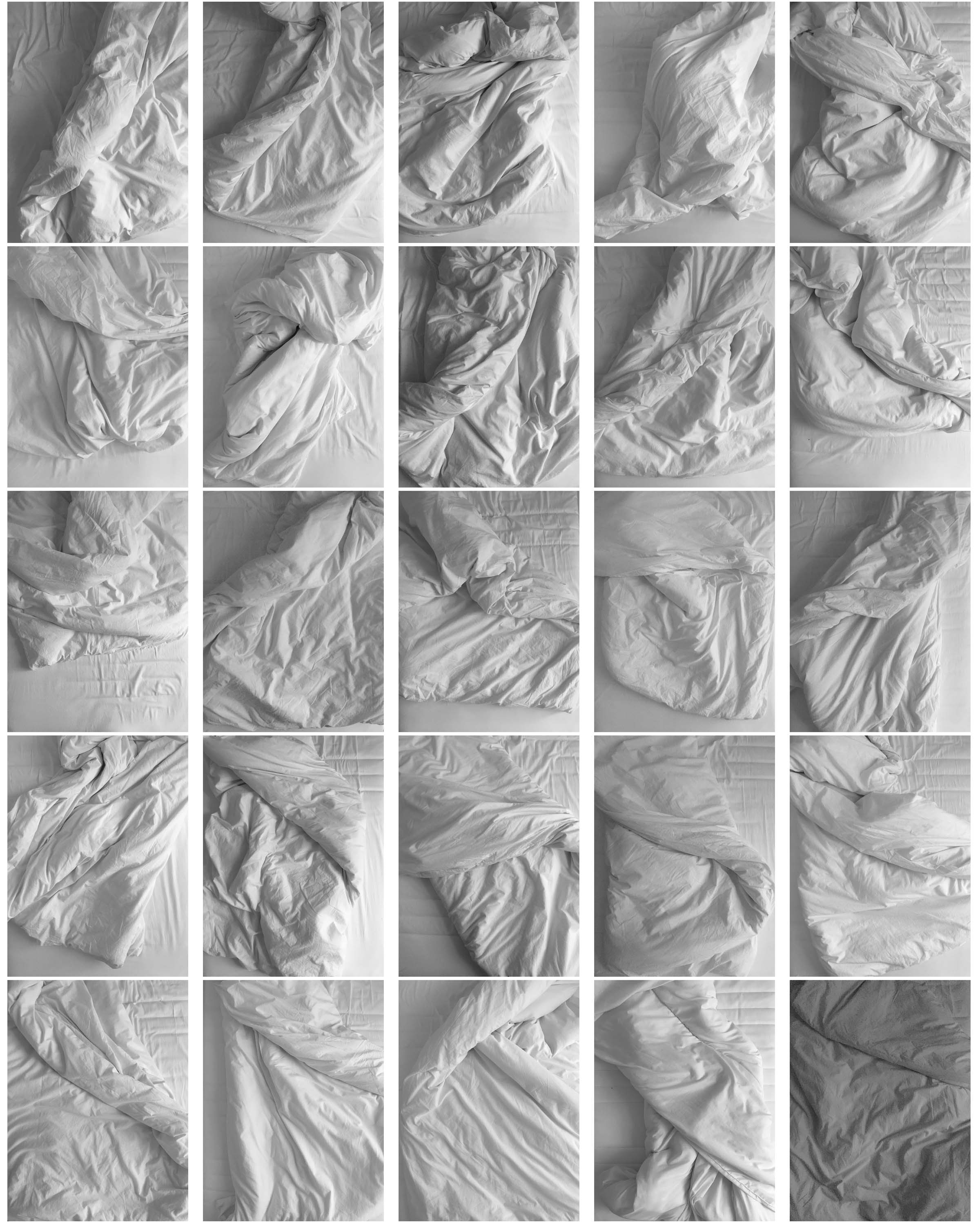
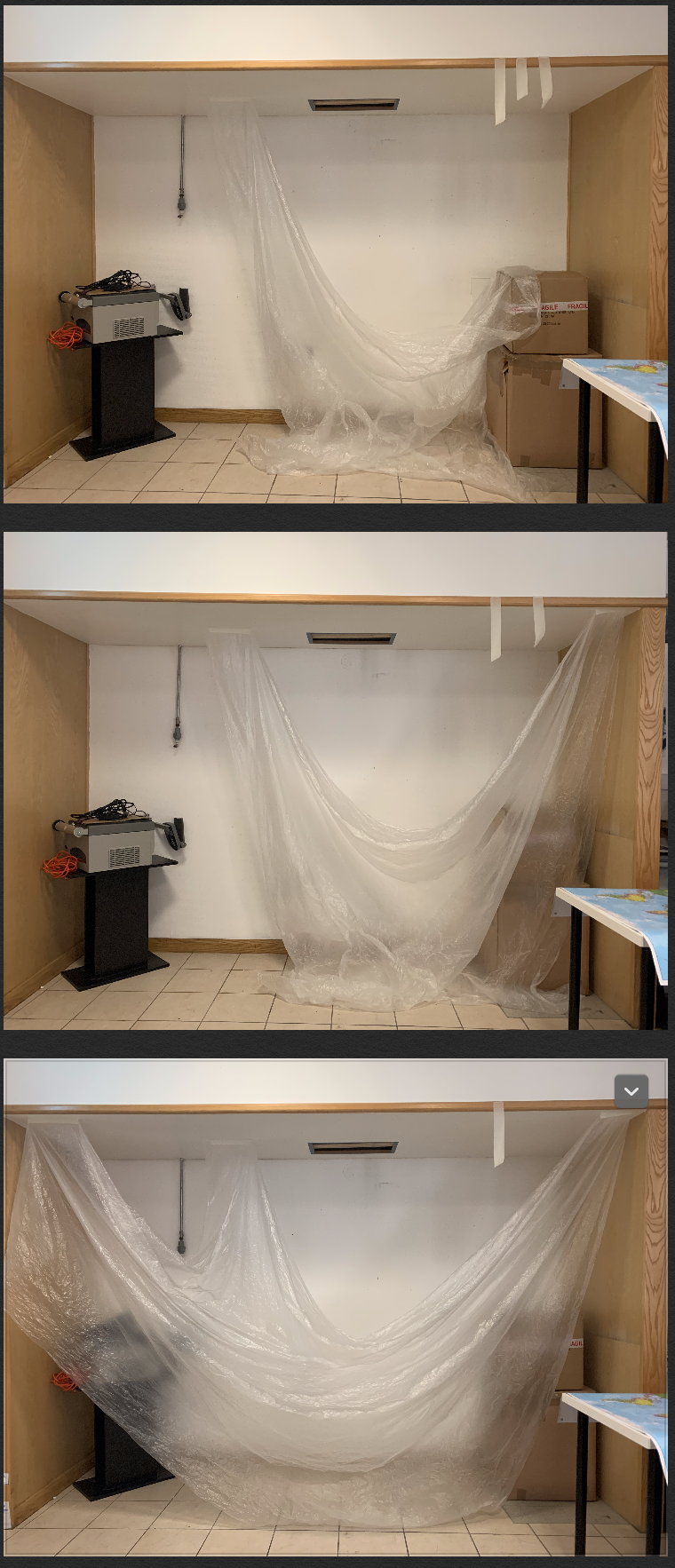

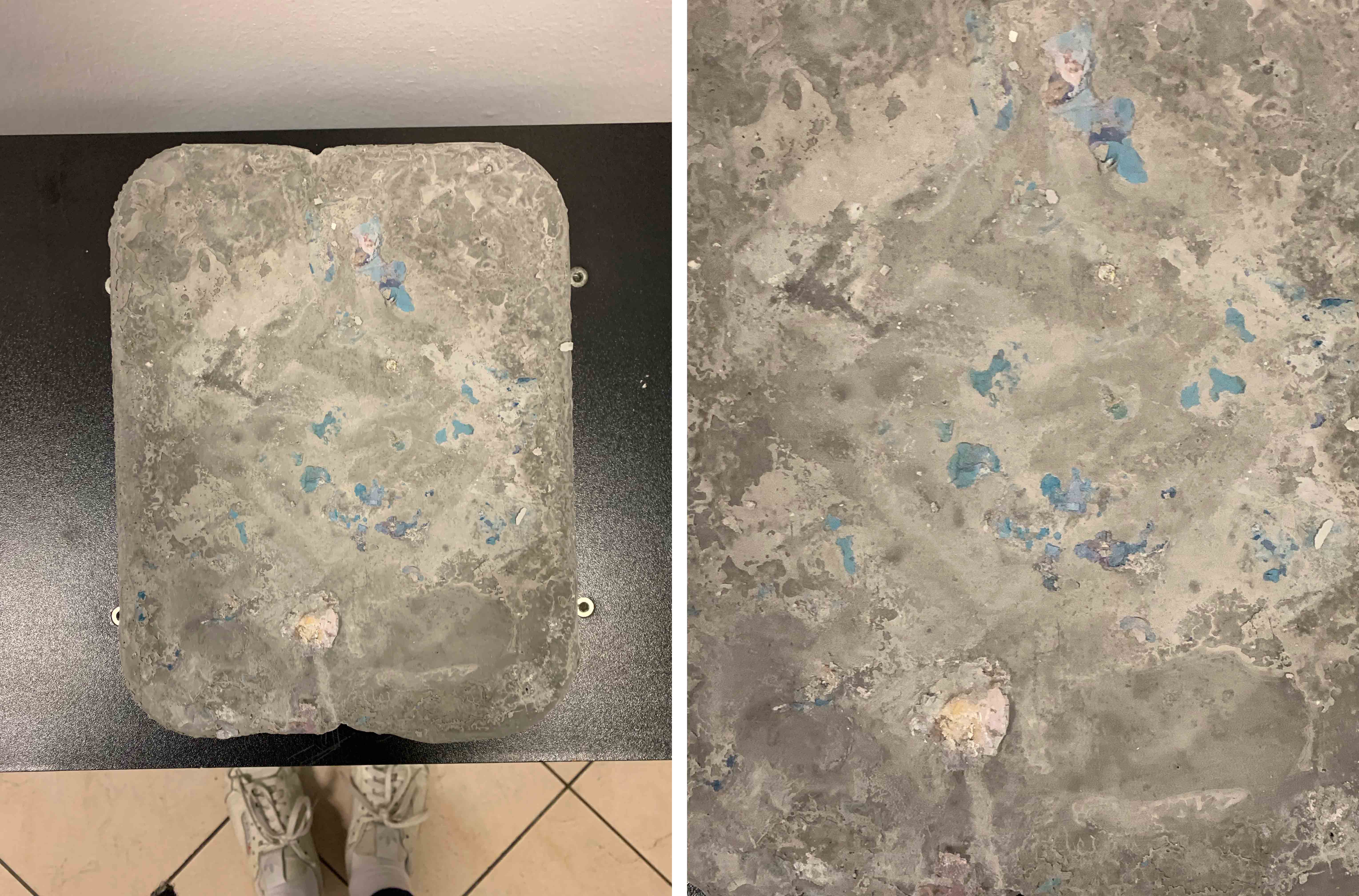
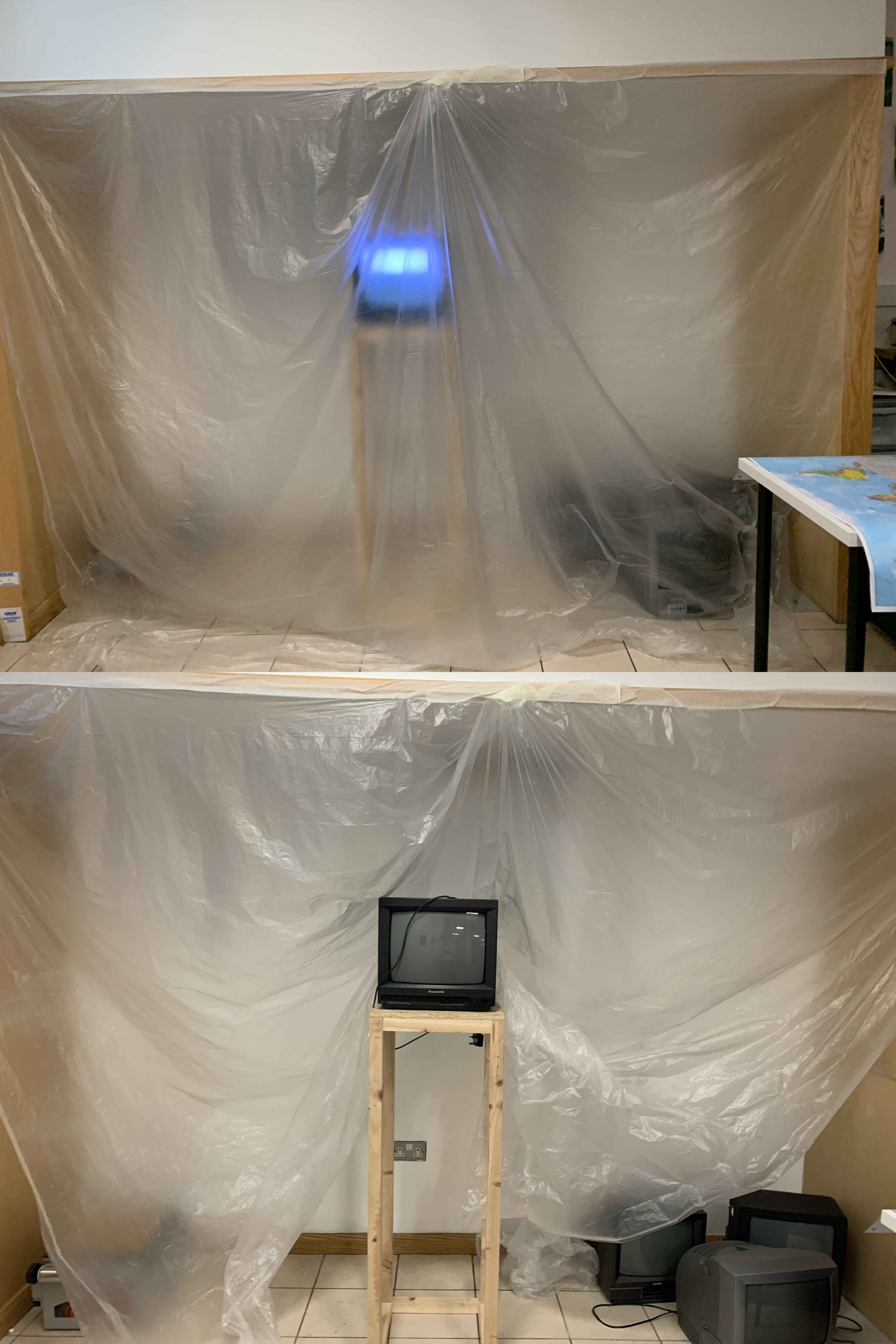
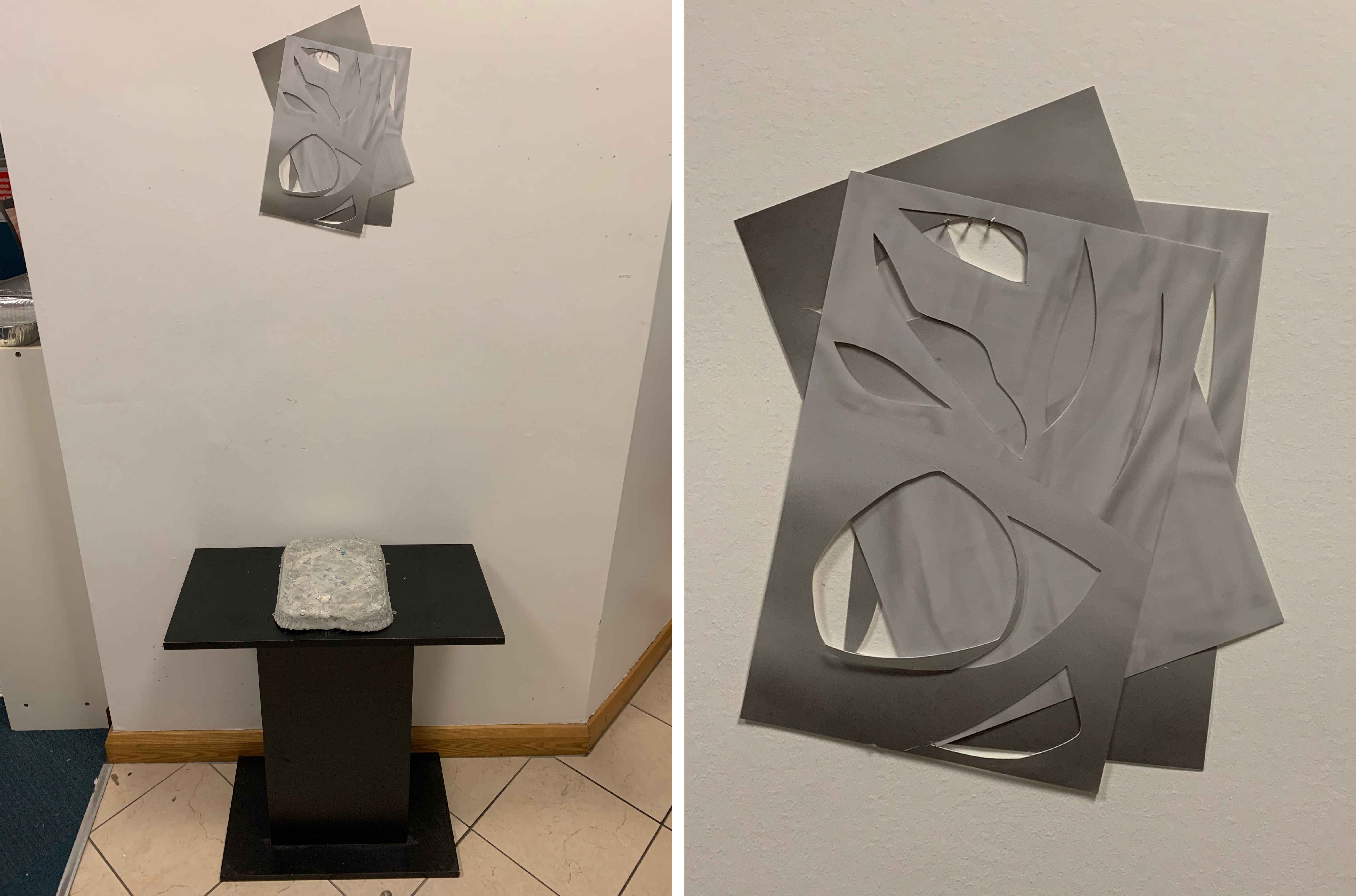

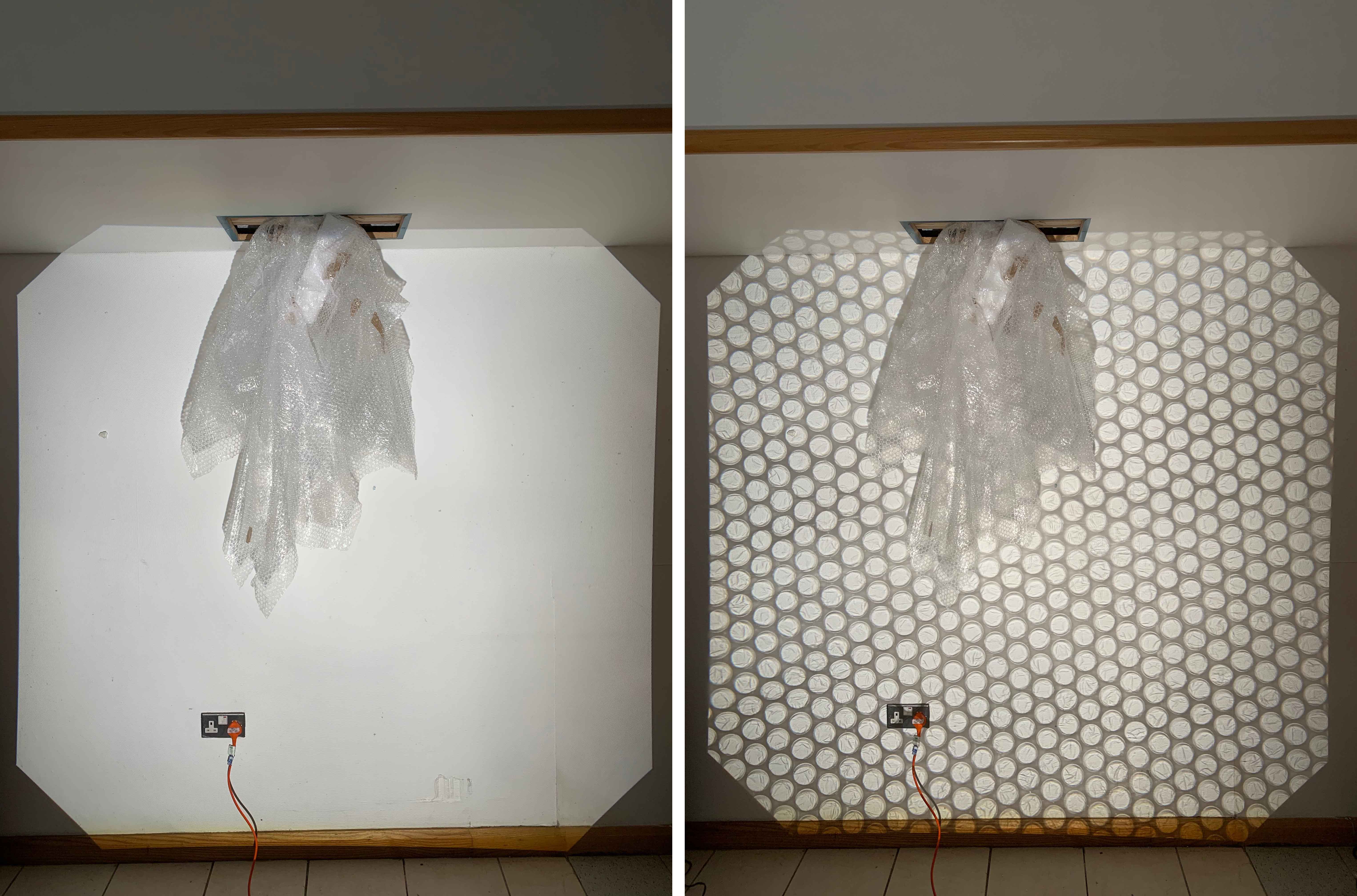

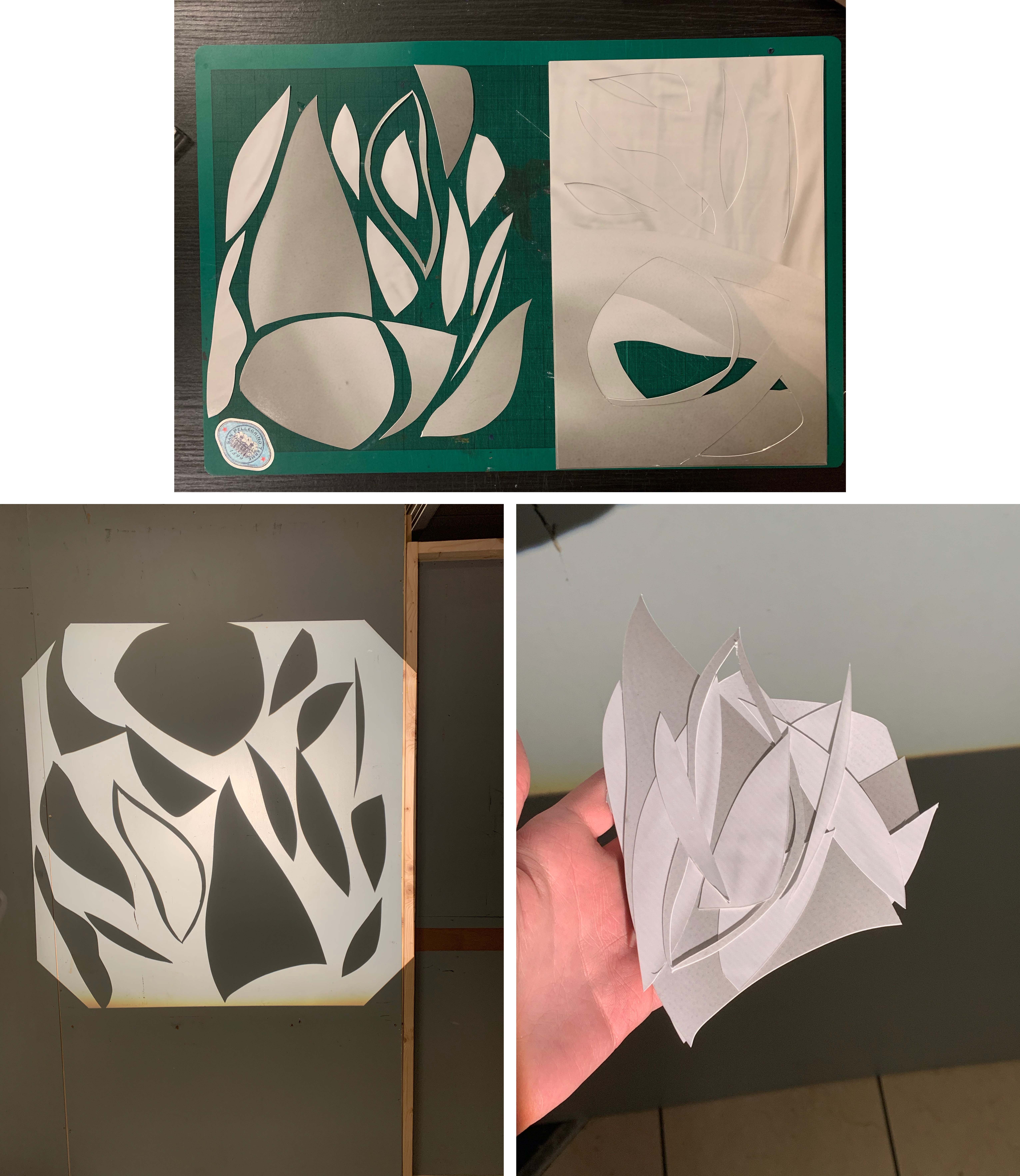

Projectors
Material Studies
During these experiments I also sent out an open call to seek out facilities which could offer me numerous projectors to play with. one organisation the called Catalyst Arts -an artist-led space in Belfast, Catalyst allowed me to access a few of their projectors free of charge. this allowed me to expand the where's that I was working with projectors originally obtaining the right equipment I was able to hook up multiple projectors to one source and to be able to project this source on a variety of materials. this expansion lied me to think more broadly about how I can approach Visual Arts particularly video arts in this manner, and these video examples touch on a fraction of what I can do and what I am continuing to do.
Workbooks
The process is something that I greatly consider when working with photography, over the duration from idea to display, the act of being tactile with the materiality, is an area that I take a great interest in when developing or expanding upon the work. Working physically is also an area that I particularly enjoy however working digitally is also important in terms of my videos and moving image creations. Having this duality is something that has been on my mind for the past few months and is something that I want to further incorporate in the graduate work that I'm currently making this understanding of the physicality as well as the expansive nature within video and installation.
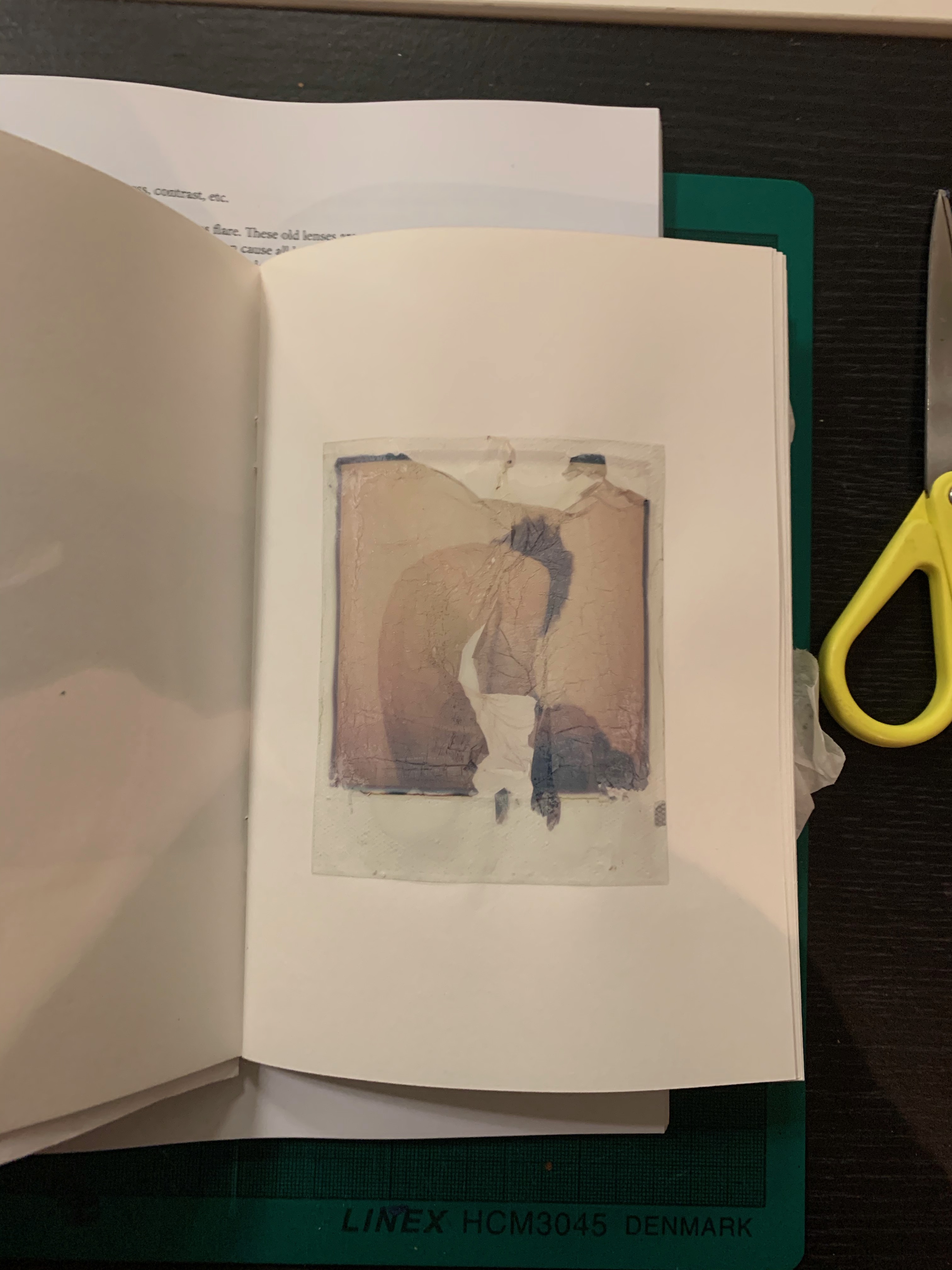
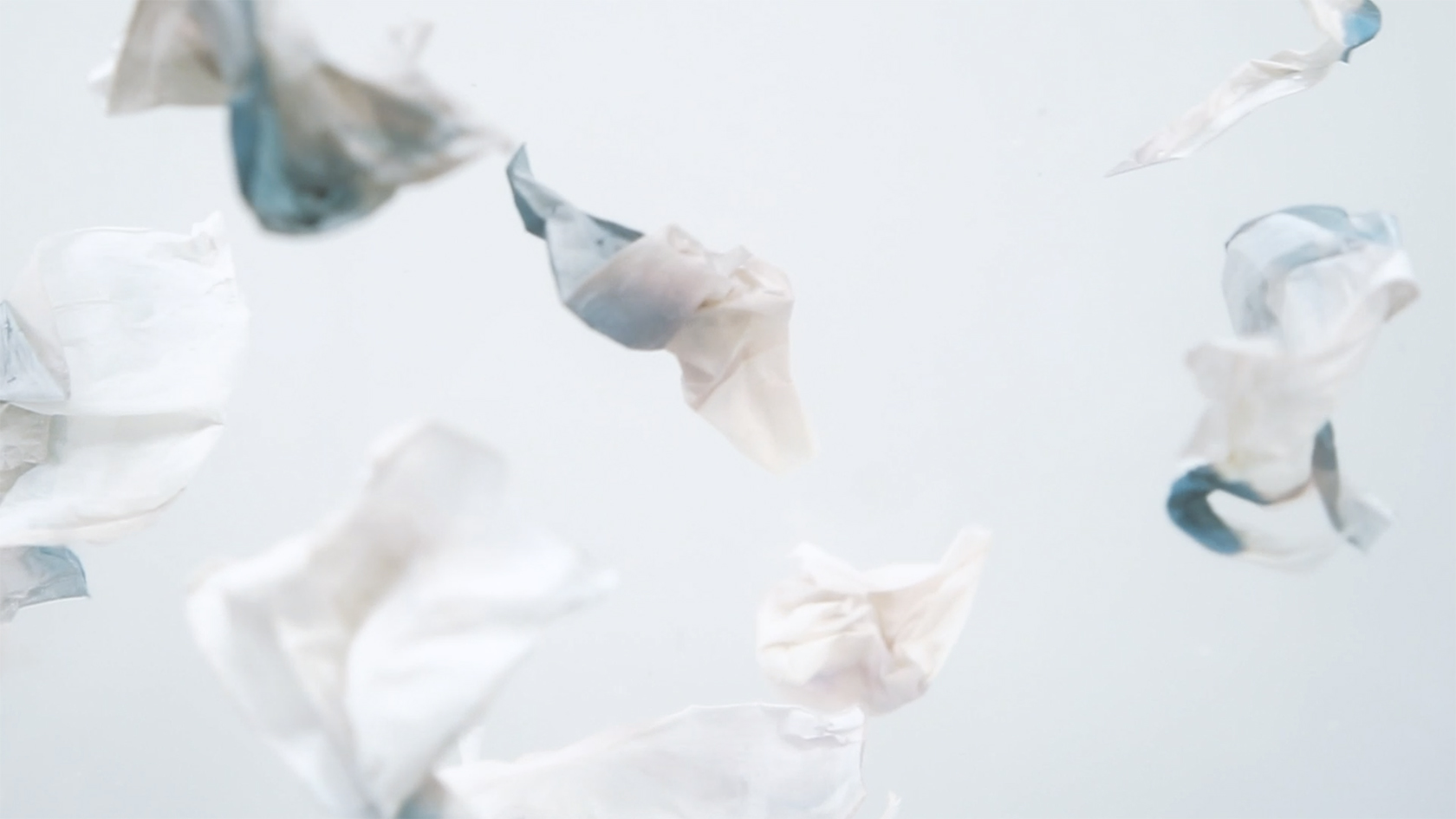
Research & Studio Installations
Physical Experiments
In this section, I have showcased for the variety of articles that I have been reading in terms of the academic understanding of materiality within contemporary photographic practice. Most of these articles were the catalyst for my understanding of materiality and helped me labour foundation for the PHT501 module. Most of these articles touched upon the history of materiality within photography and the progression in the high artist have used the medium in a variety of ways, as well as these are images and documentation reinforcing my practice. showcasing a selection of work from my studio and my studio installation experiments, as well as the physical manipulation of the photograph these experiments, have developed and evolved but these were a starting point for me in terms of what I can do with the image. not only am I using photography but I'm also exploring other areas of art such as sculpture, the image on the top left showcase a concrete block with a Polaroid fragments left-hand side of its and the image corresponding to that is on the right of that image. During the course of these weeks, I have really expanded the ways in which I engage with the physical image, as well as other artistic mediums that have allowed me to expand my understanding of art and of what I want to say and do with this project. from the variety of experiments I've done the use and concealment of oneself or of an object is apparent, the lack of a clear structure or objects is noticeable in all of the works. This concealment is of interest with me as even if there was a figure in the works this figure is usually concealed.
Early Research
Exhibition
These are a selection of images from artists that I was originally considering for the exhibition. I was very torn with ideas of what the exhibition was about, I had collected a lot of artists over the years that I was very interested in and I wanted to combine a lot of them into the show. However, that was not the case as this proved to be very challenging, going back to the notes from my previous classes I took to understand the role of the curator and the sacrifices that creature has to make for the show to be good or to be effective.

Keith Vaughan
Exploring the work of Keith Vaughan, Vaughan was a British (1912-1977) painter working with figures in motion. Exploring dream-like landscapes populated by tense characters that bare no facial forms making their identity ambiguous. Taking inspiration from the ballet Vaughan explores these ambiguous characters in a range of movements, often at times exaggerating the human forms to fluid forms in motion. As 'Vaughan often went to the ballet and much of his work focuses on bodies in motion.' Vaughan used his paintings and expressionless characters to attempt to reconcile his sexuality and his subjects were frequently a disguised way of treating his sexuality. Greatly troubled by his sexuality, he took to journaling to confine with his thoughts and feelings with his own body. At first glance, Vaughan's forms and compositions of male nude figures struck me for their abstract yet familiar design, explores the realms of sexuality is complex. But Vaughan's work (showcased here) explores the matter in an intimate yet ambiguous way, as mentioned previously removing facial features, this makes us focus greatly on form and colour and how the figure(s) relate to one another.
“landscape acted as a metaphor both for the physical body and its absence”, Ian Massey
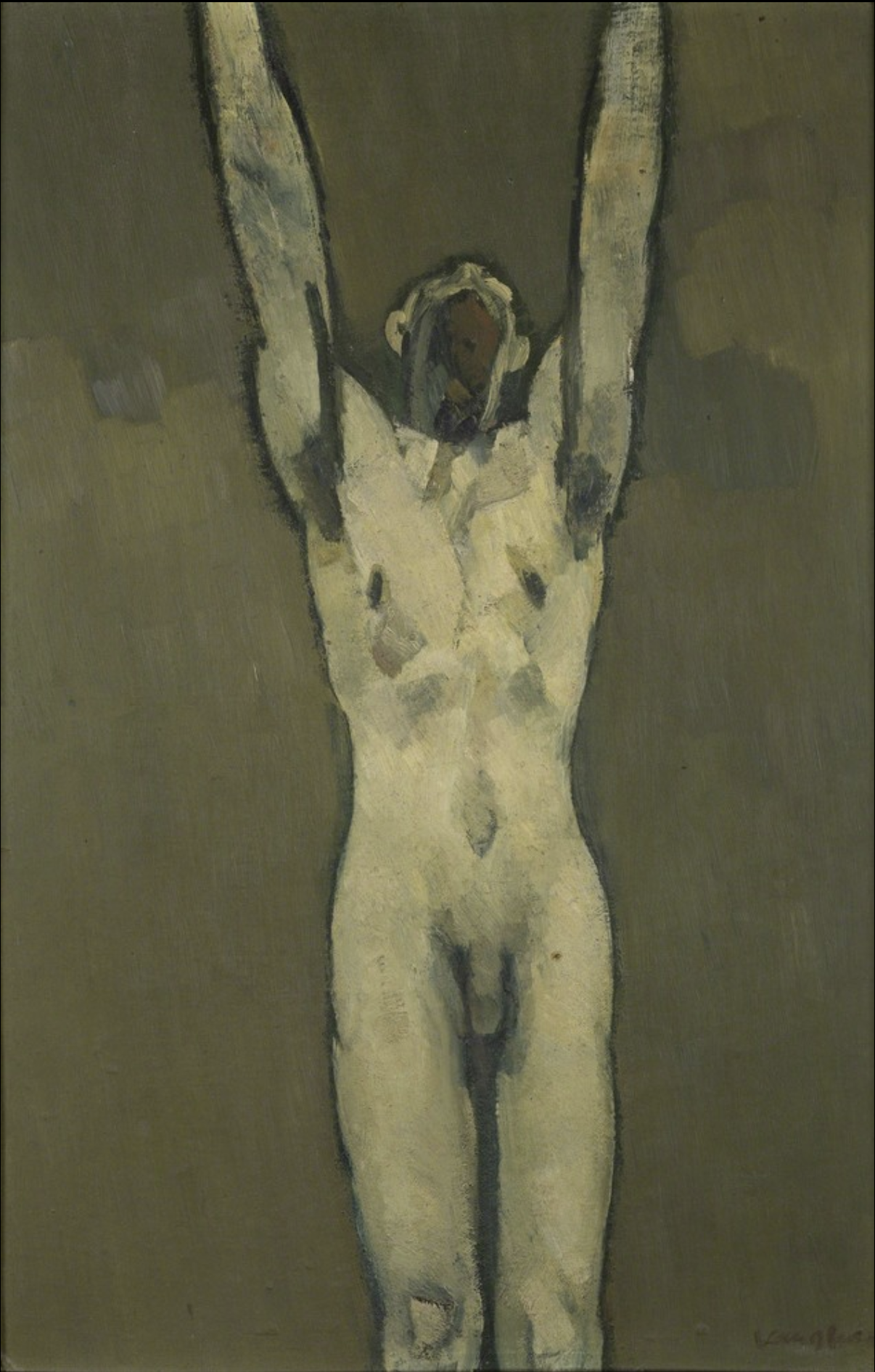
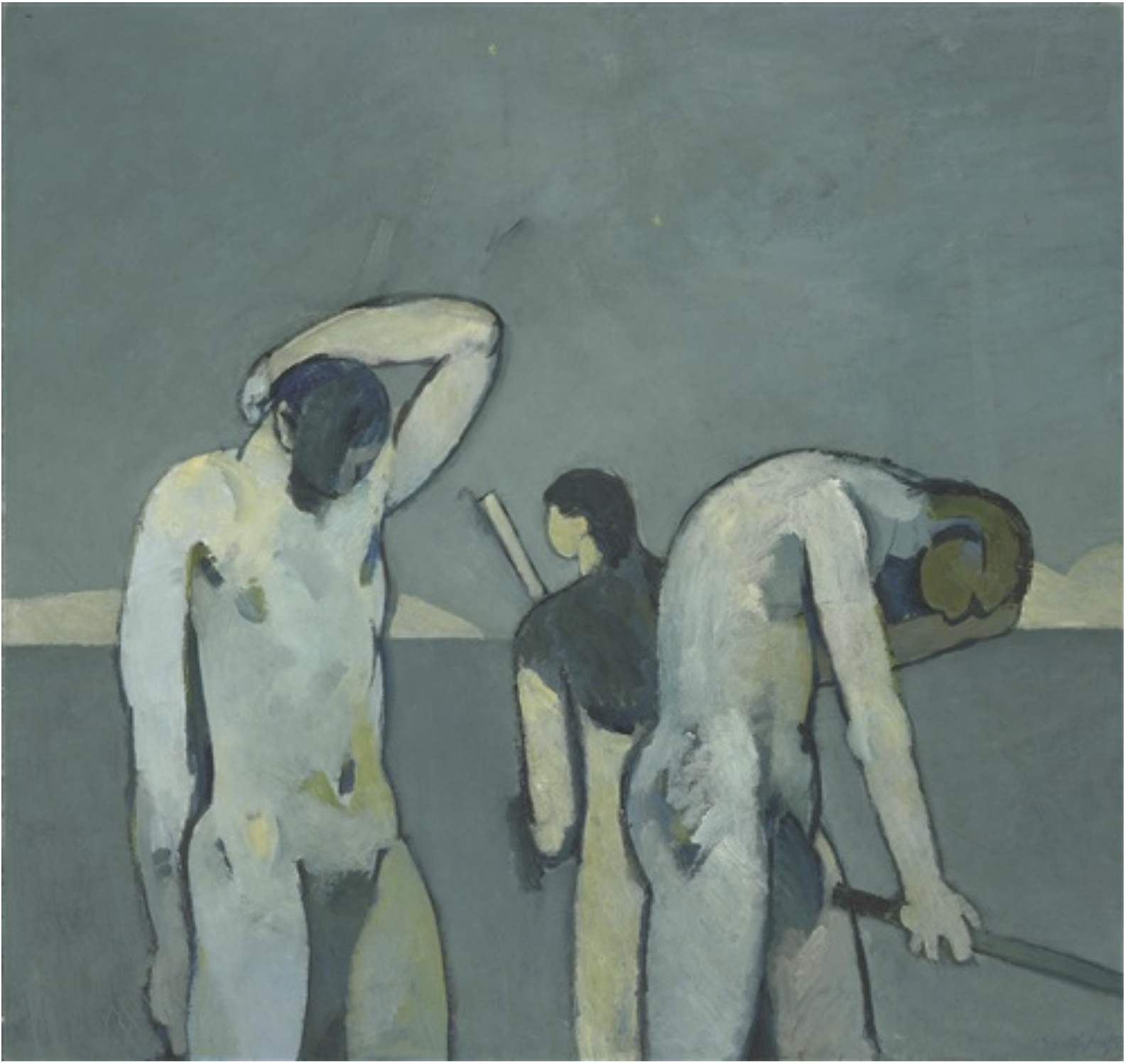
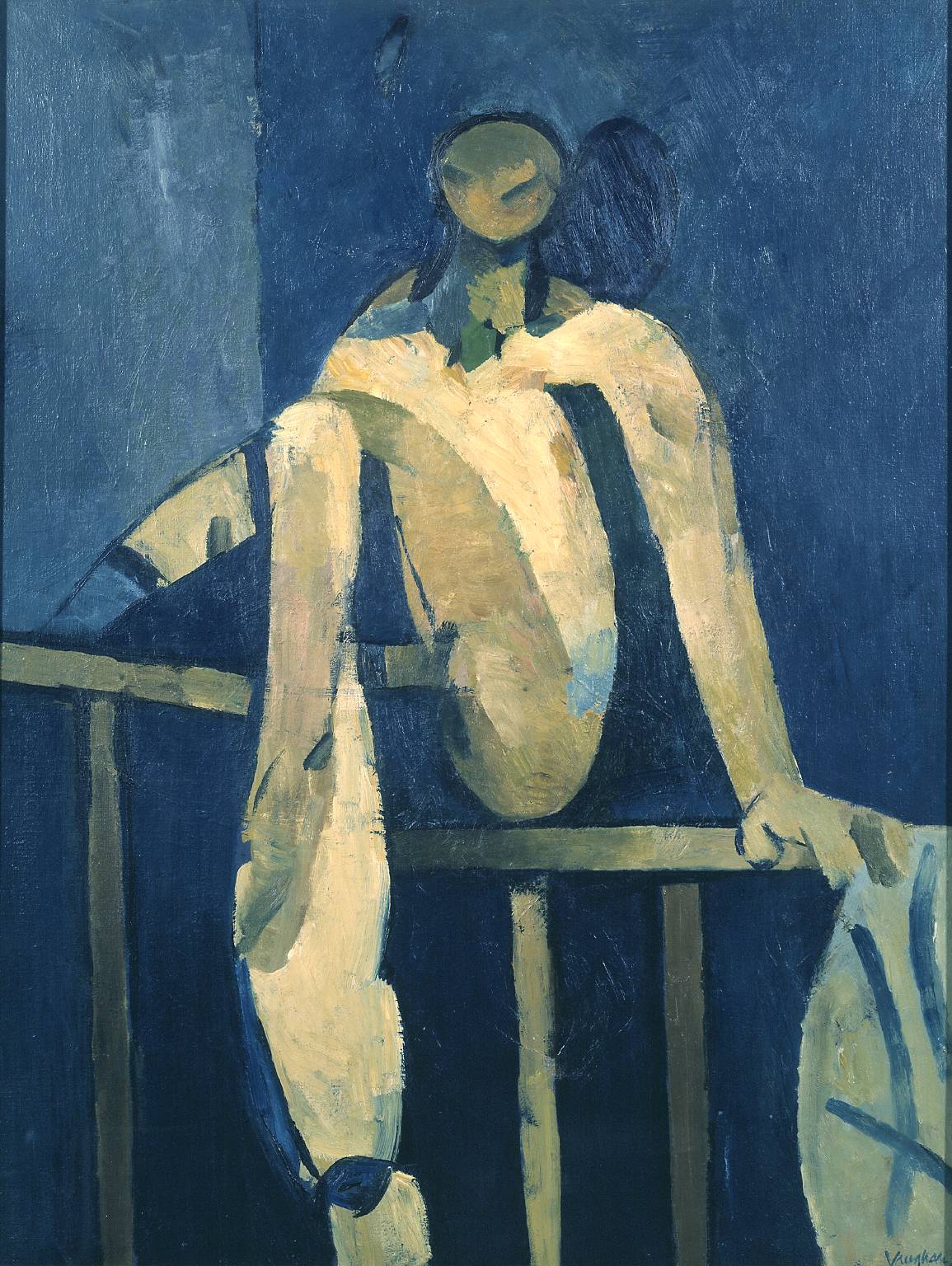
Roland Barthes
Camera Lucida
Roland Barthes 'Camera Lucida' has been poignant in the discussion within my practice. However, I must note I started the book with an interest to read 'Camera Lucida' before the lectures began as I had been expanding my understanding with contemporary writers on the medium. Having Frederic's class touched upon Barthes ideas with the medium of photography explored by his coined terms of studium and punctum. Finishing the book once, I had more questions than answers when reaching the end of 'Camera Lucida'. Throughout the whole book, Bathes talks about the realm in which photography is situated in. Death plays a prominent role within 'Camera Lucida', as Bathre’s mentions how the representation of an image can be used to disturb how we consume images. And how 'not only is the photography never, in essence, a memory... but it actually blocks memory, quickly becomes a counter-memory.' Statements like these, inspire what I consider the essence of photography and memory, especially in the realm of the photograph as an object within the realms of materiality. Thoughts such as these are intriguing to me, practice moving forward within my artist creations and thoughts
Pacifico Silano
For my weekly inspiration, I have decided to talk about the American based artist Pacifico Silano. Silano is a lens-based artist working and born in Brooklyn, NY. Silano works in the realms of LGBTQ+ identity working with found material of imagery, he deconstructs the representations of masculinity with fragmented layers of physical paper and or other materials. I came across Silano’s work over a year and a half ago on social media (Instagram). I was first struck by Silano’s use of collage and sculptural ways in which he approached the male form and took explicit material and shifted and rendered it in an alternate direction. I was inspired recently to revisit this artist as ‘Lightwork’, an organisation based in New York that showcases artists in their gallery space, recently created a monograph of Silano’s body of work ‘In Time Is An Ocean But It Ends At The Shore’. This work has its departure rooted with the central themes that Silano has explored previous, exploring the nature of queerness, playing with the representations of masculinity and a fragmented reality, reliving and concealing within the realms of vintage gay erotica. I ordered Silano’s signed
monograph, as a reference point and to support the artist in times during corona.
Paul Mpagi Sepuya
American based artist, Paul Mpagi what's in photography primarily and sometimes sculptural interventions, the use of performativity is highly evident in his work as well as the homoerotic and queer language that he employs in his work. his work has fascinated me at throughout a number of years, his used of deconstructing the image. the use of curtains and mirrors to fragment the body is something that has intrigued me and turns off, the representation of one's identity and one's queer identity through the medium of the lens.
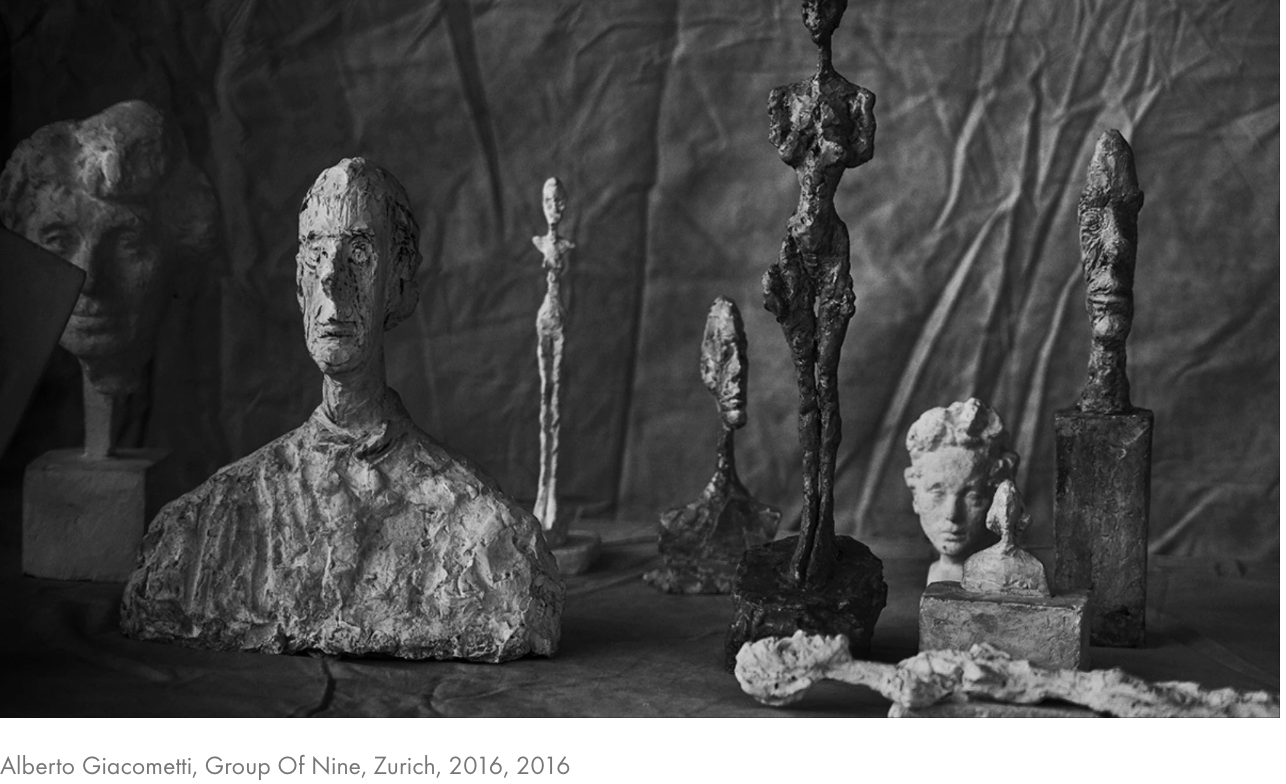
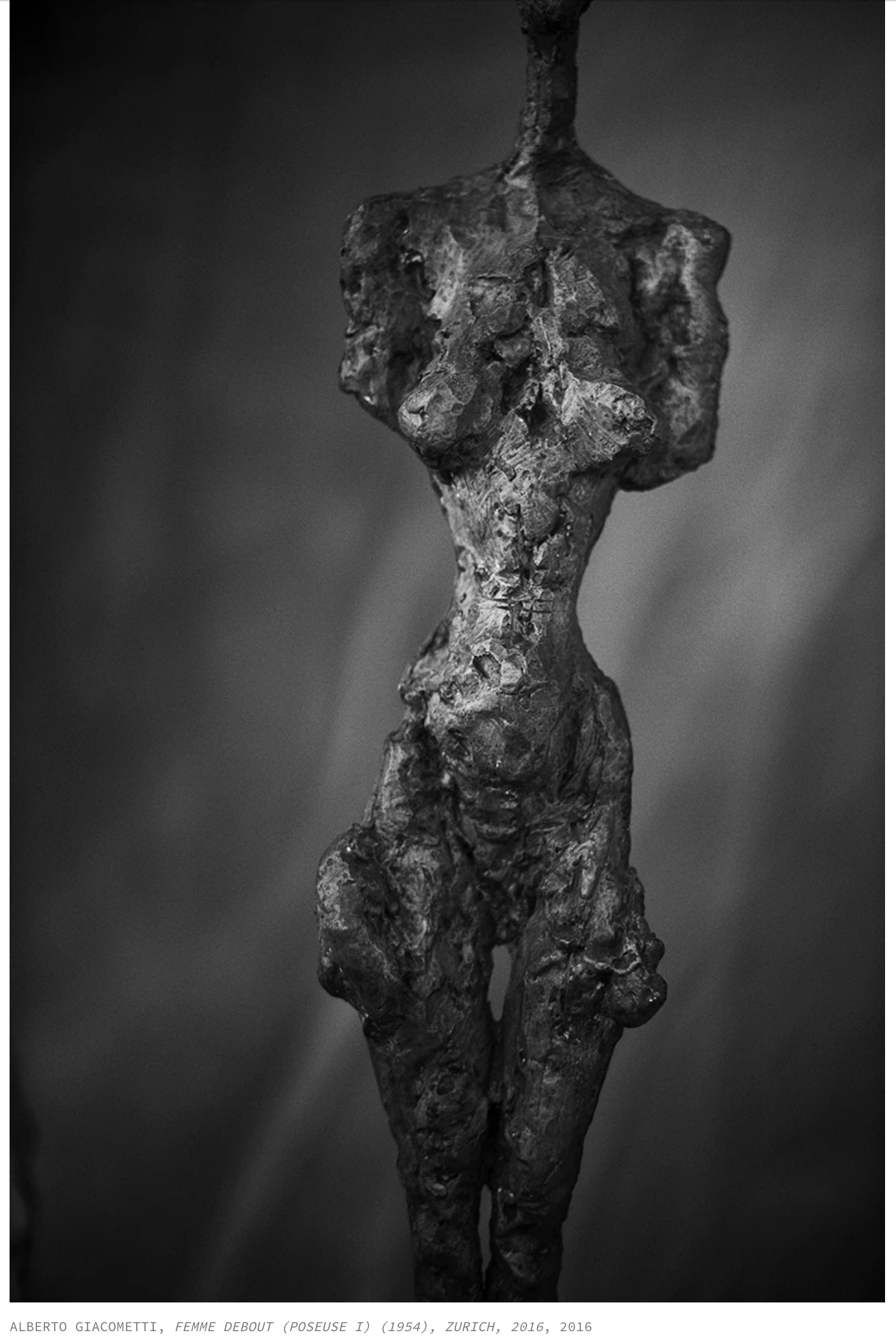
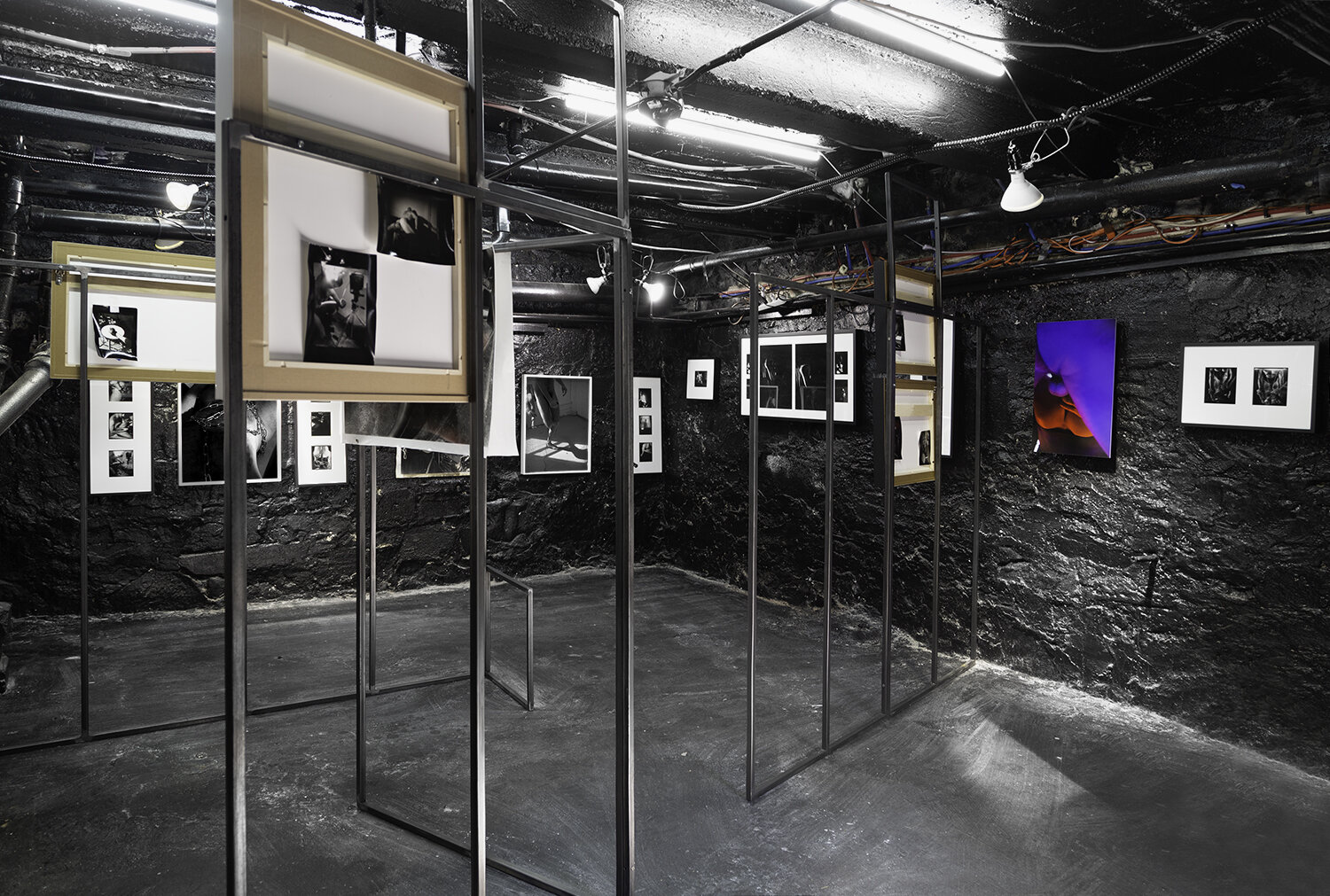

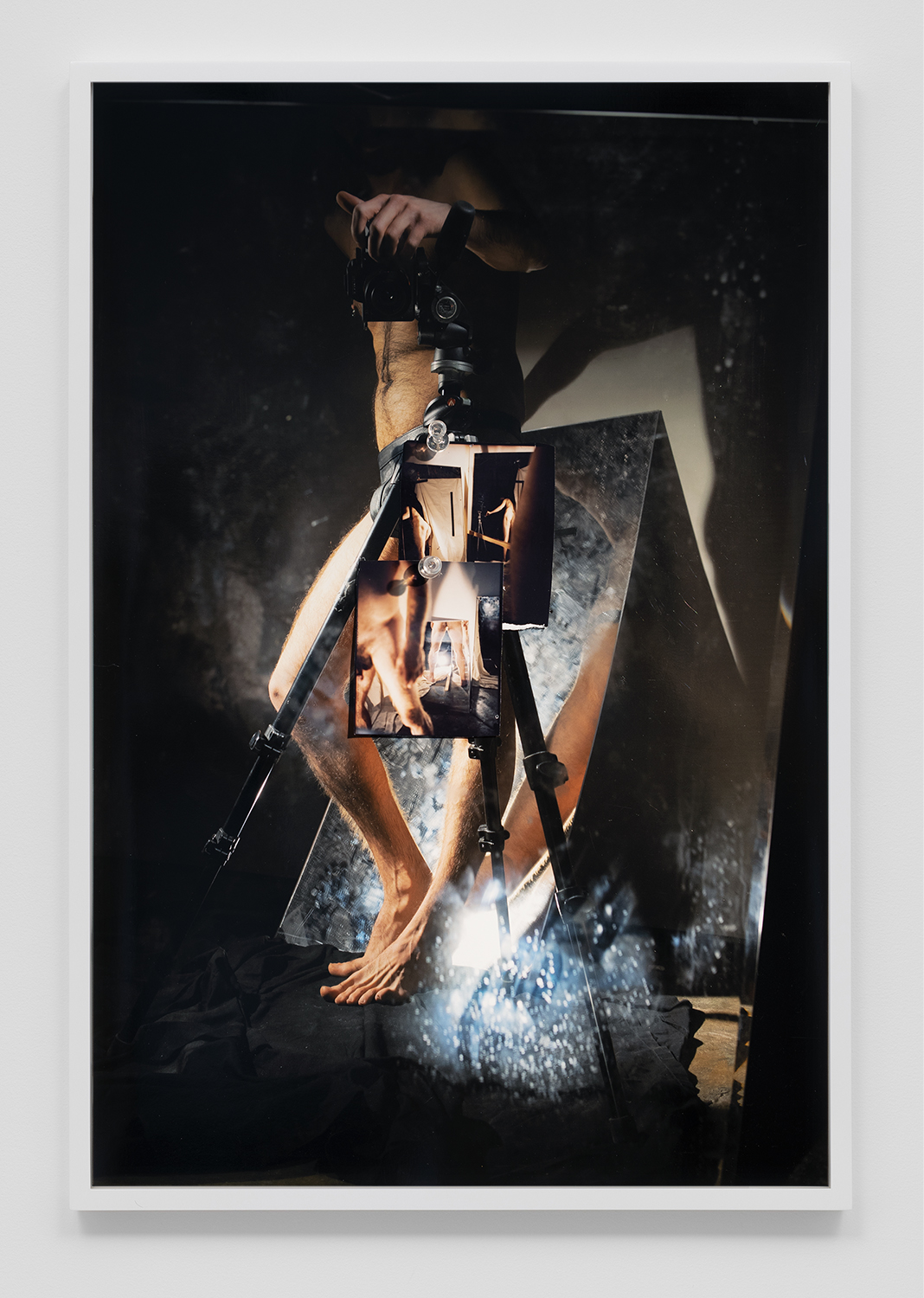
Figurative Paintings
Recently, my current inspiration has been coming from 19th/20th century figurative paintings. The selection of images that I showcase in this document are a few examples which have captured my interested during the past week. These figurative paintings portray a subject (mostly isolated) in a mundane setting, this setting could be in a domestic space such as the living room, bathroom and bedroom. The use of the male and female nude was also a recurring theme that stuck my interest. Why I’m gravitating towards these artworks is for the understanding for the form and body of the subject/s. The pose, in which each subject carries themselves, their energy and engagement with me as a viewer is one that is intimate and closed. There is a level of a melancholic romanticism which occupies the space. Having solitude with a single figure (or two) creates this void within the painting, even though someone is still occupying the frame, I feel an empty sense and distance impression regarding the works. The paintings themselves are also grounded in the real world; it situates people who take the rolls of regular mundane people. And I think this grounding, in reality, is somewhat a feature that is found within my work; however, I am always interested in subverting the conventions of traditional craft. I'm still attracted to these works; they retain the sense of the world around me in the simplest and purest ways.
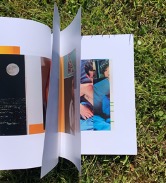
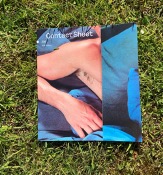
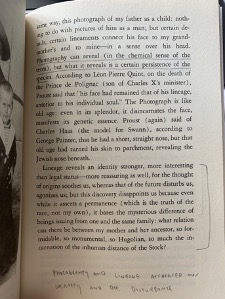
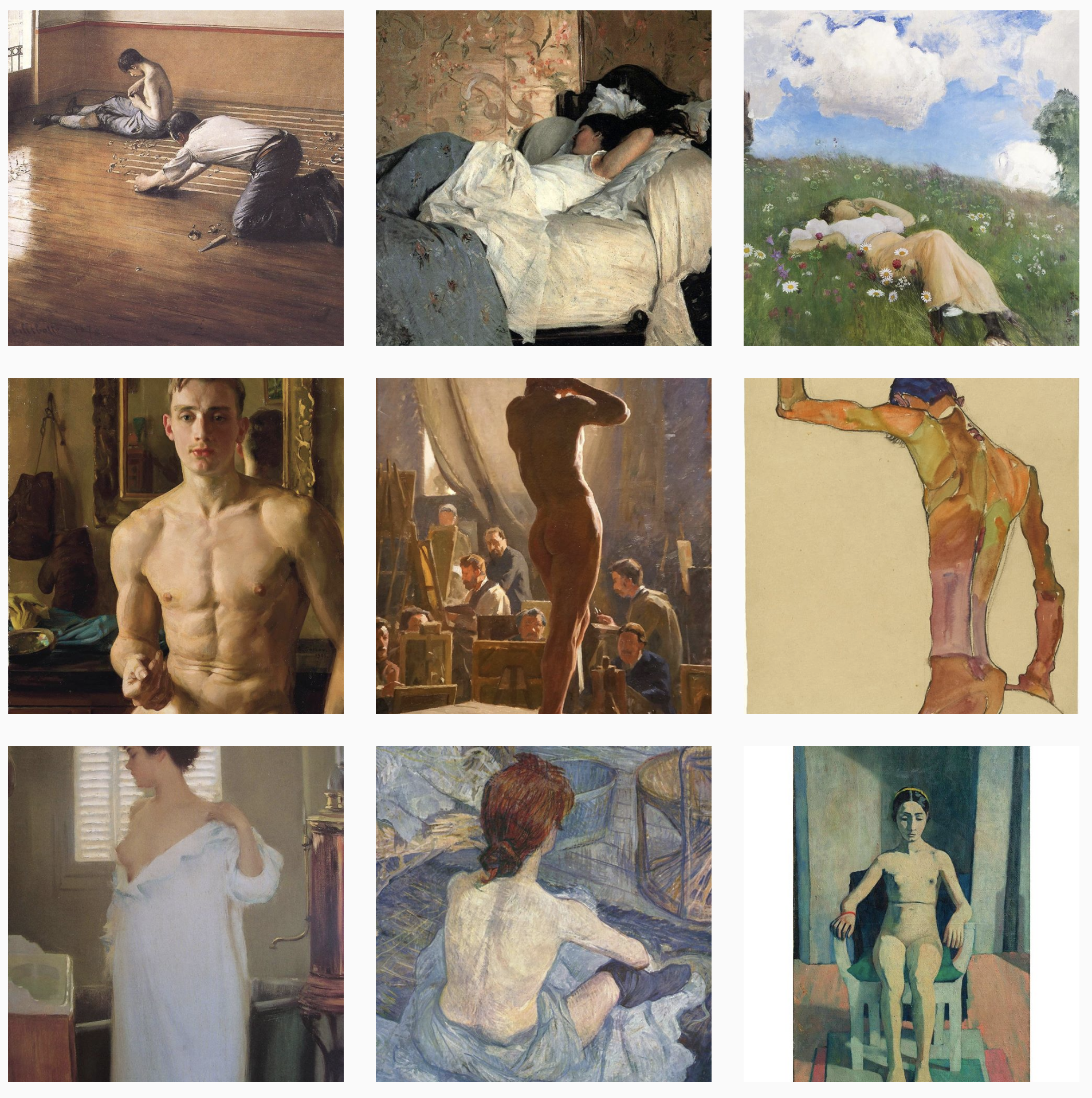
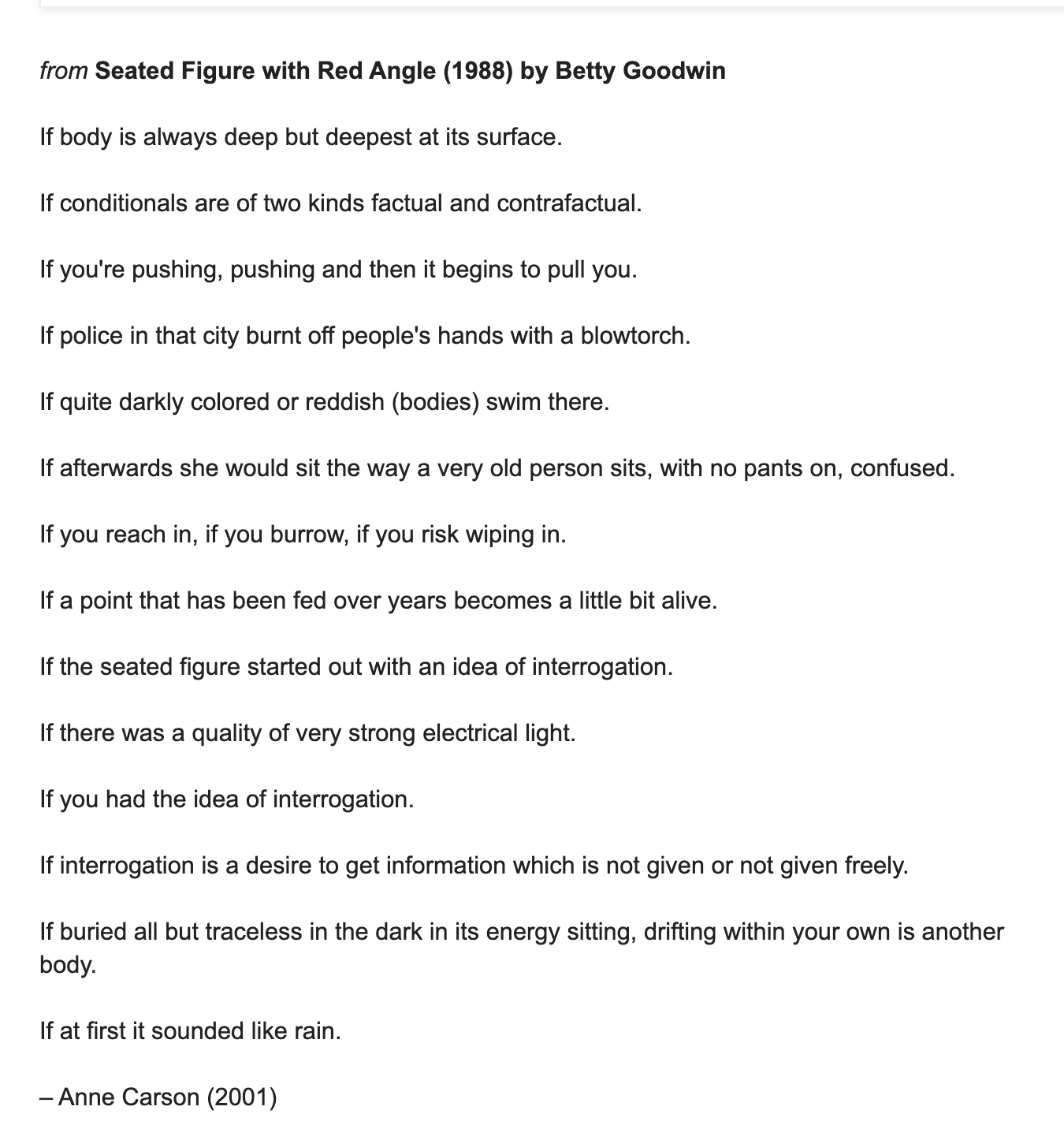
Penelope Umbrica
Olafur Eliasson
Victoria Fu
In July 2020, I got my own studio space, with Flax Art Studios, located in the former UTV building, the studios host a wide variety of facilities from photo studios to the wood workshop. Moving into space has allowed me to open my practice to wider areas within the mediums of sculpture and installation, additionally being surrounded by other artists has helped with any creative blocks.
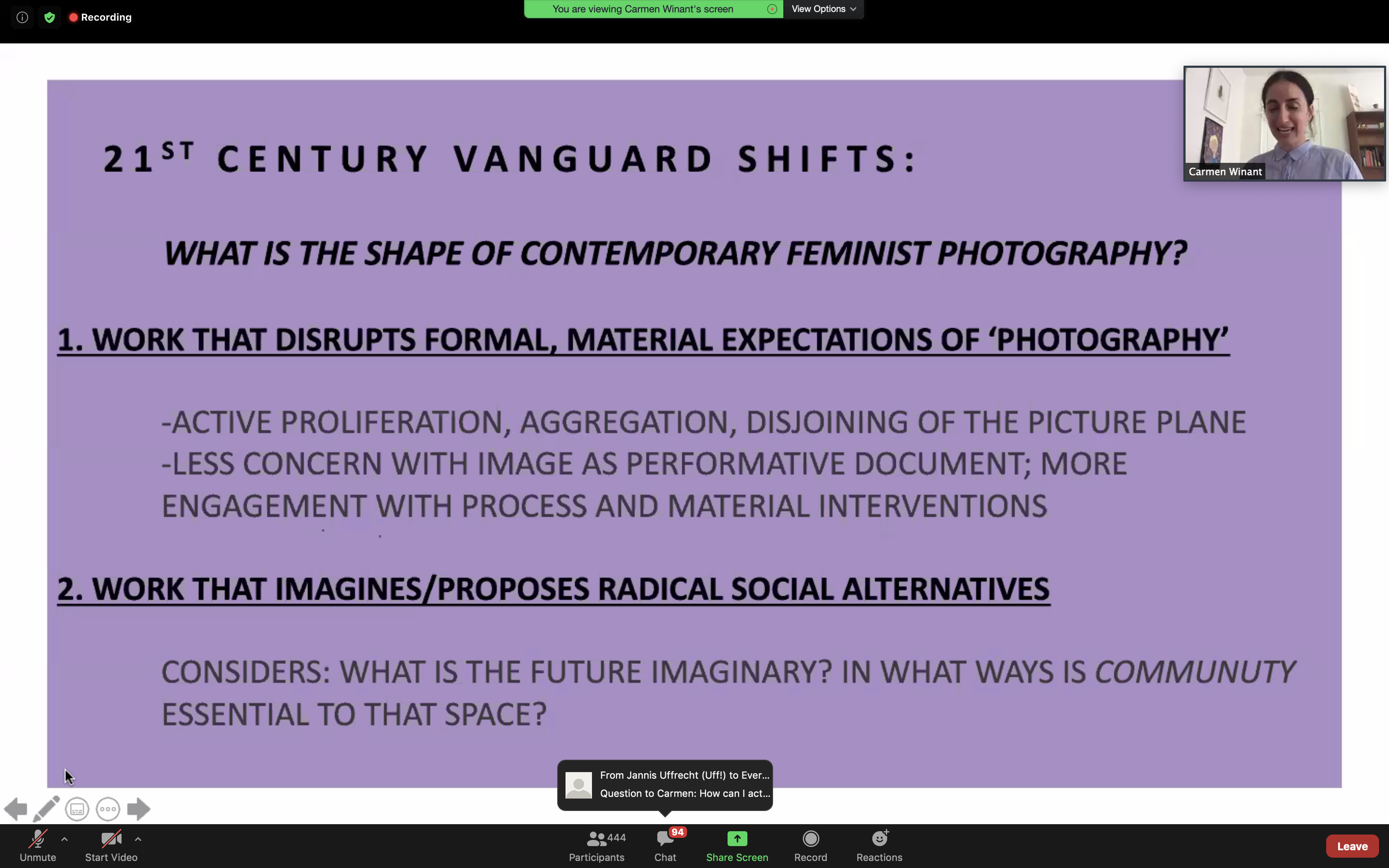

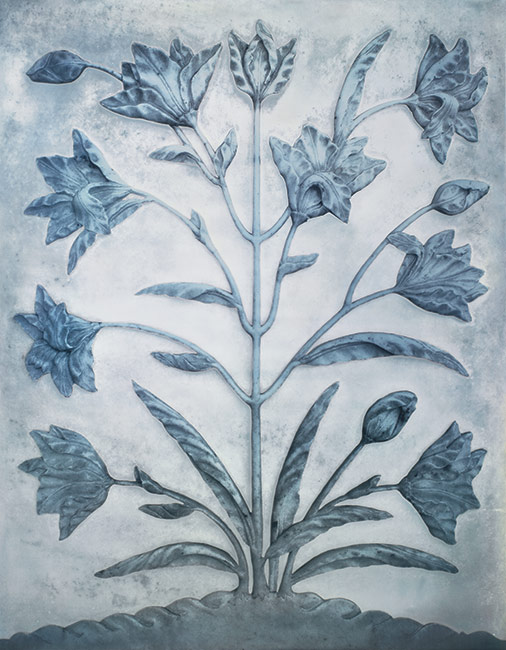

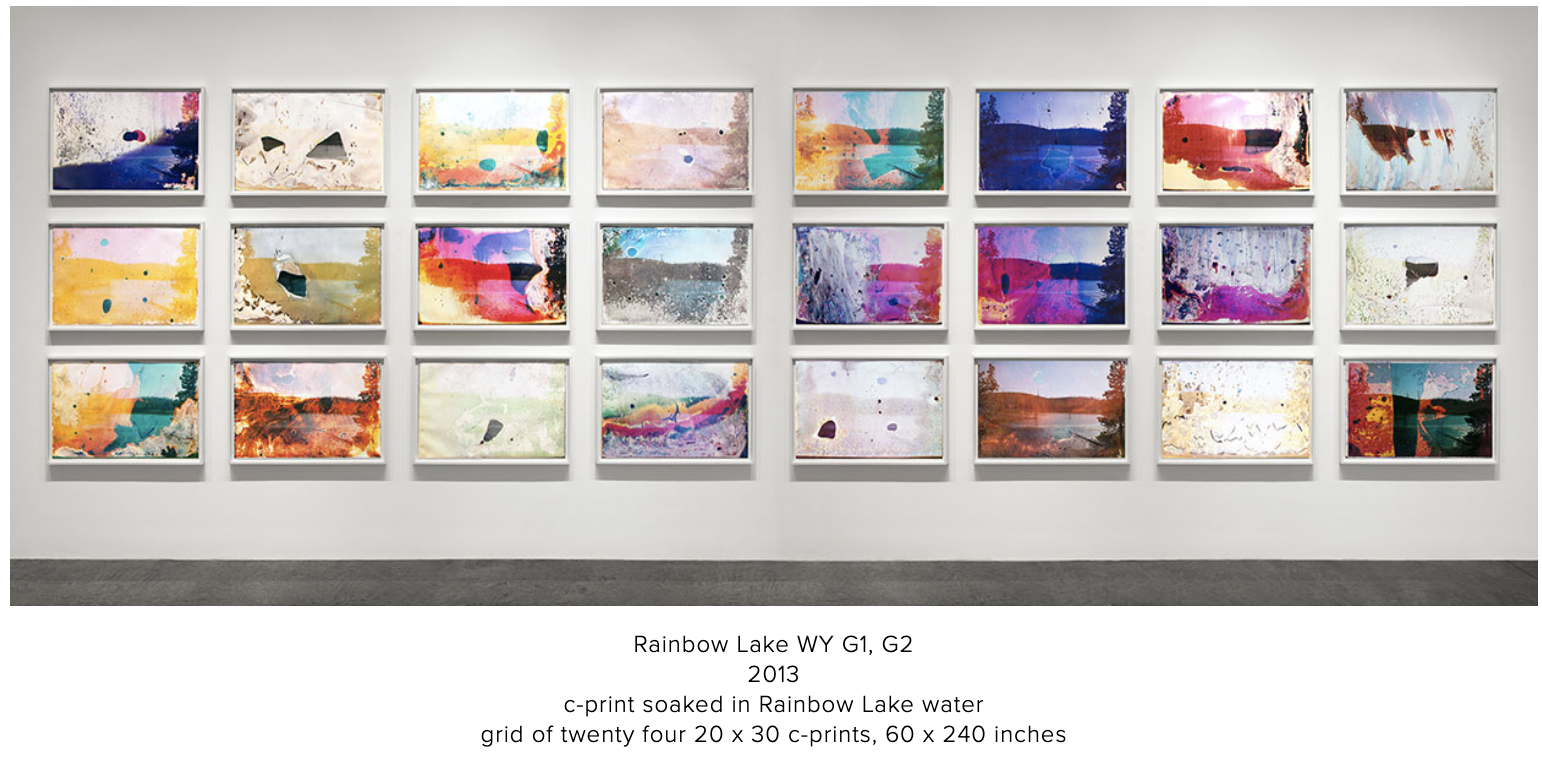
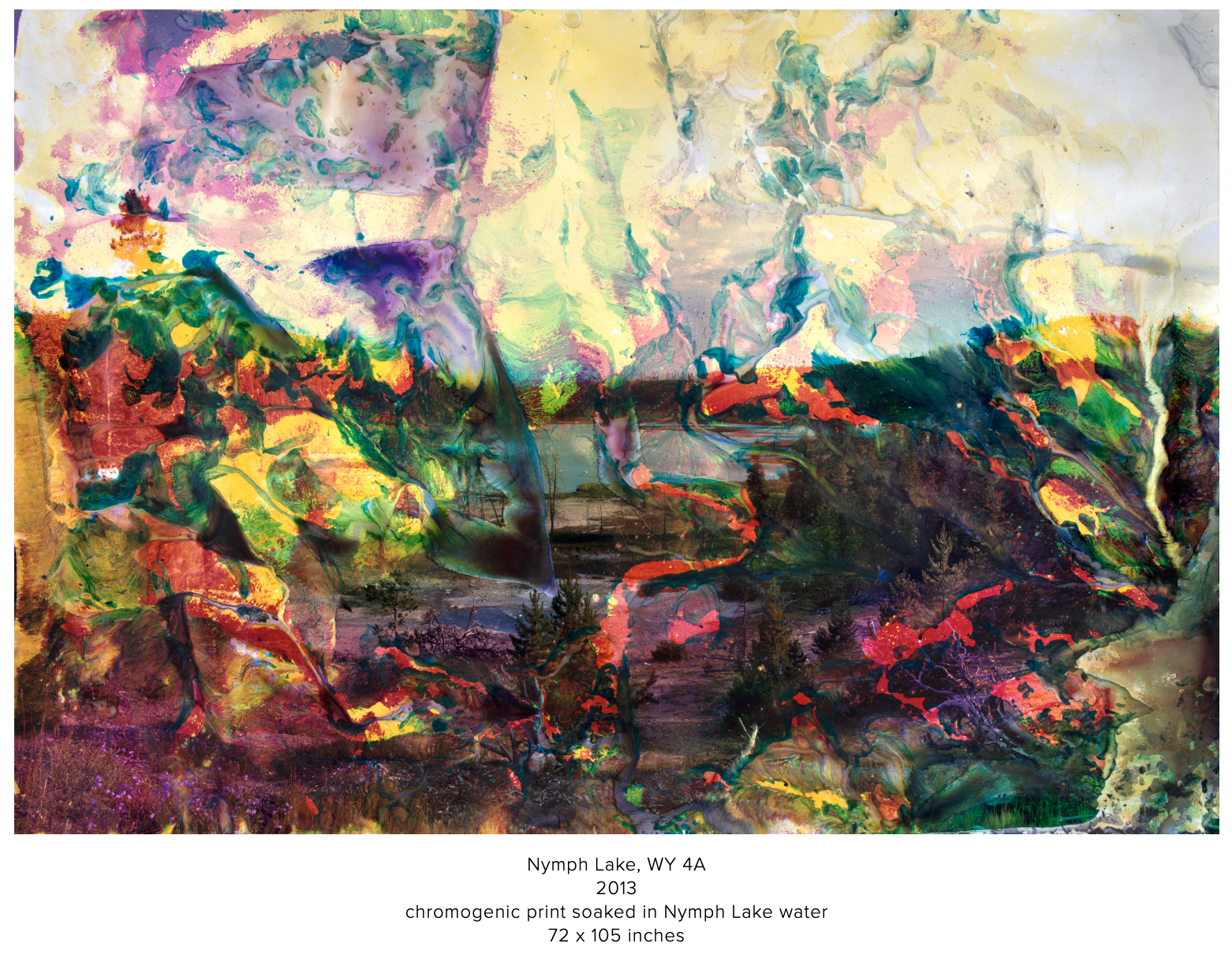

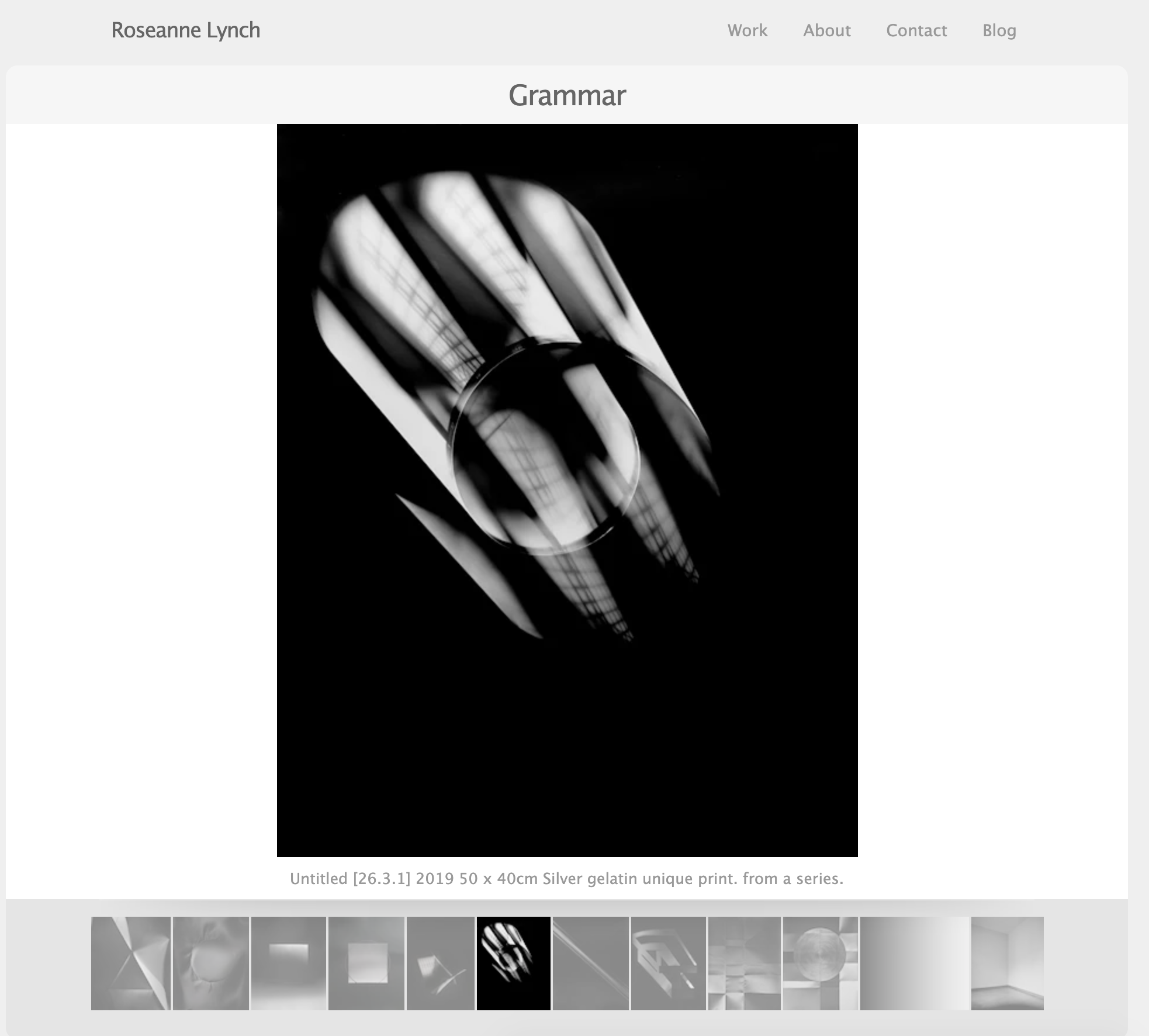
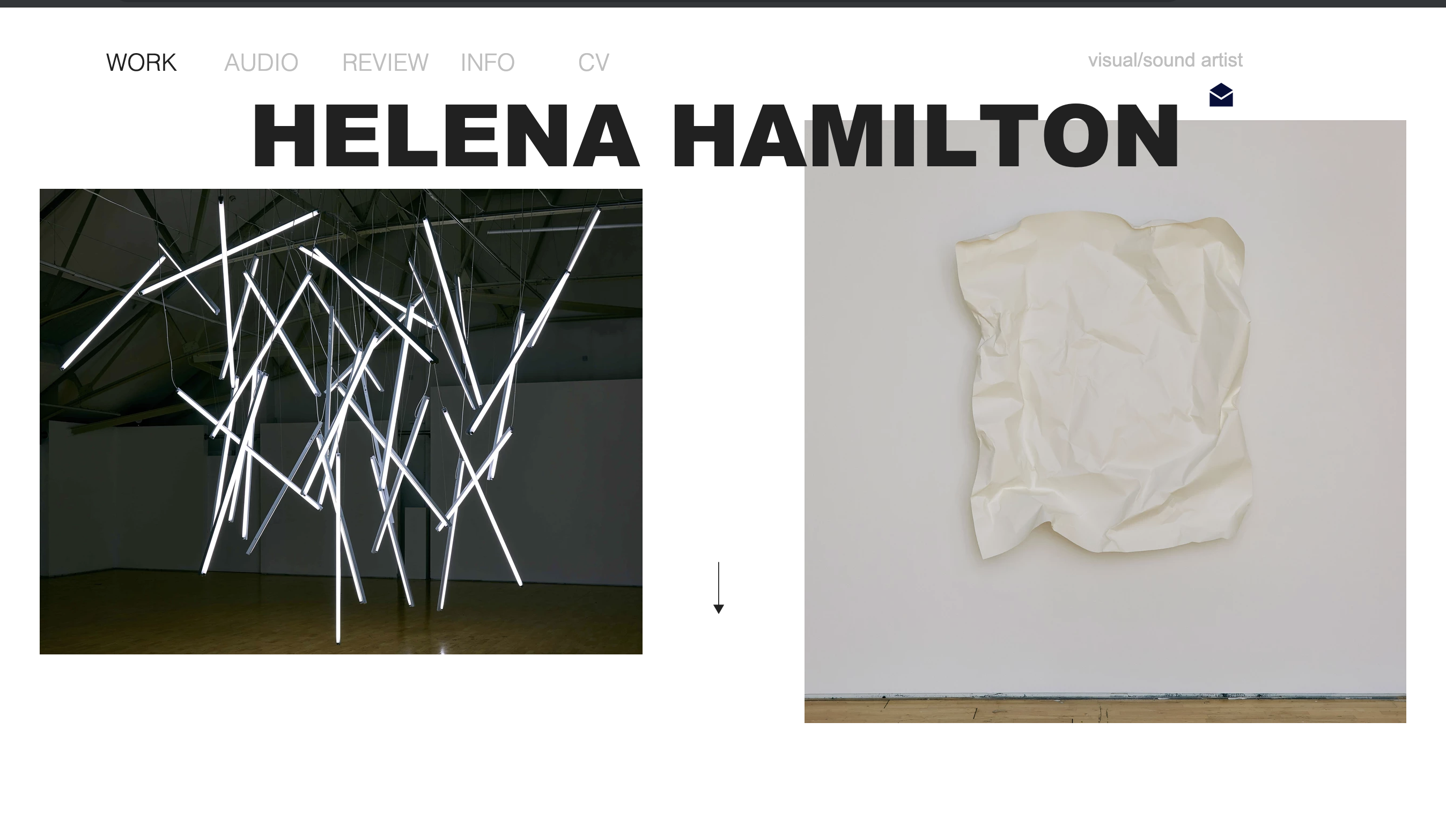
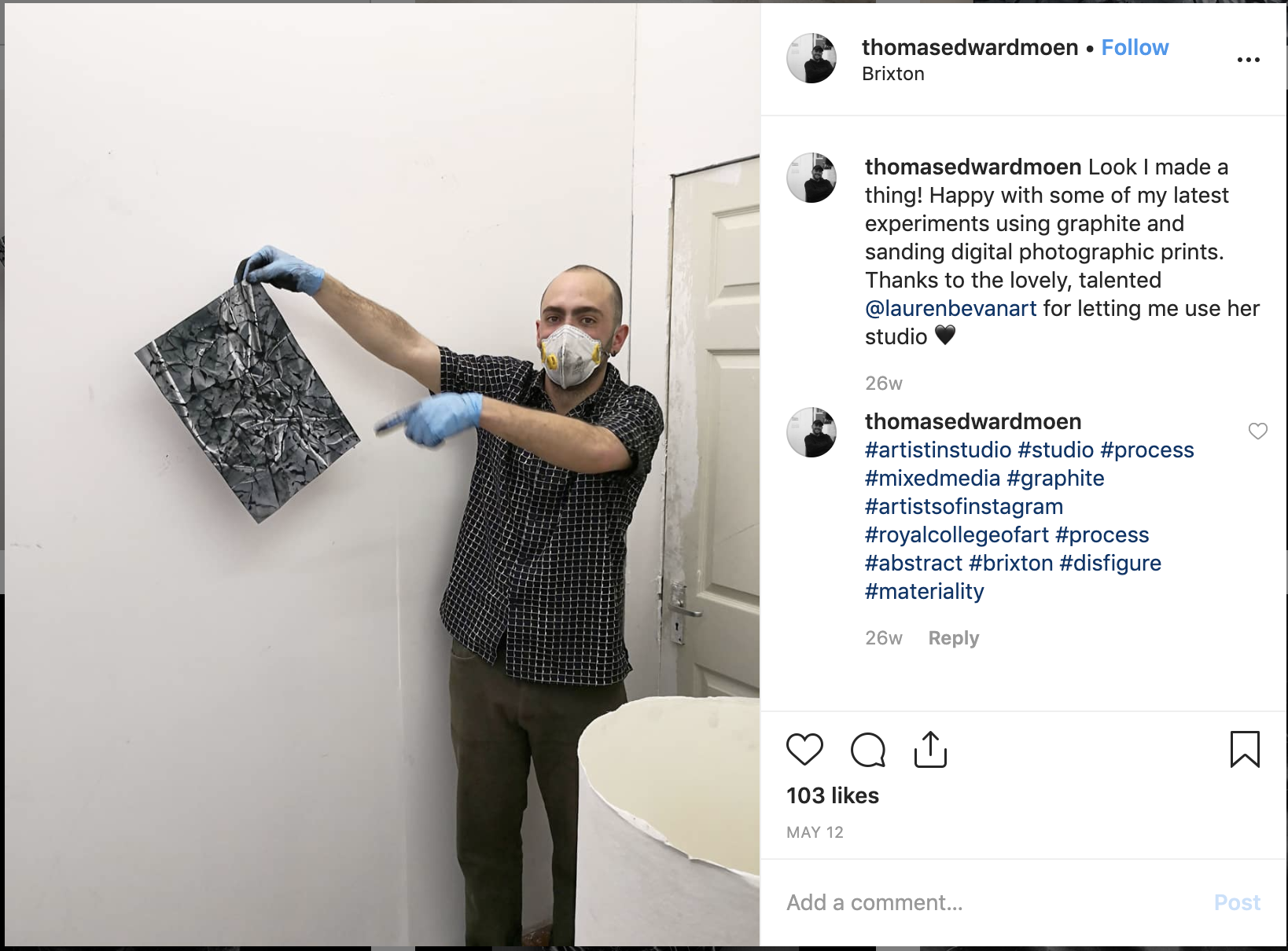

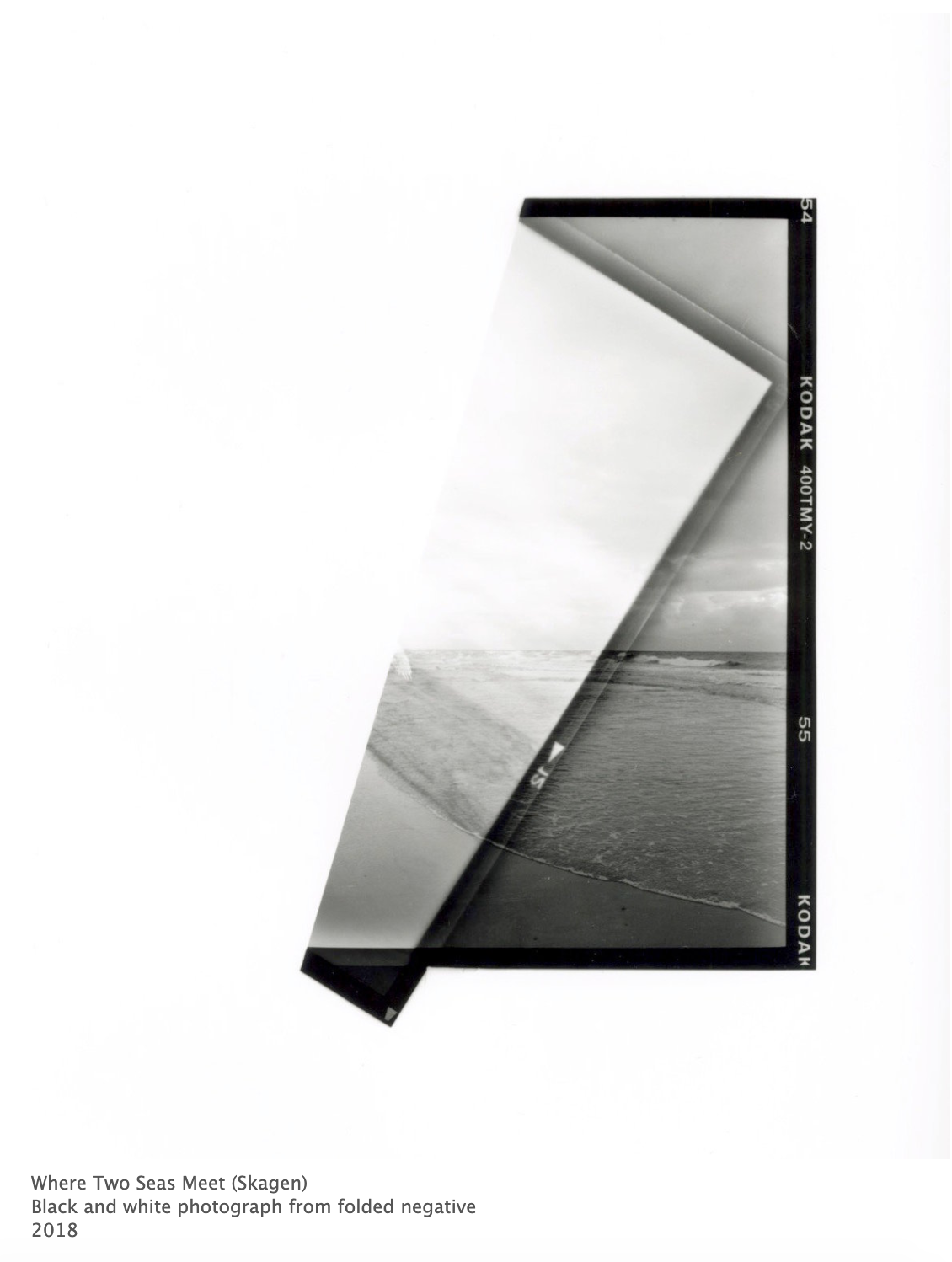
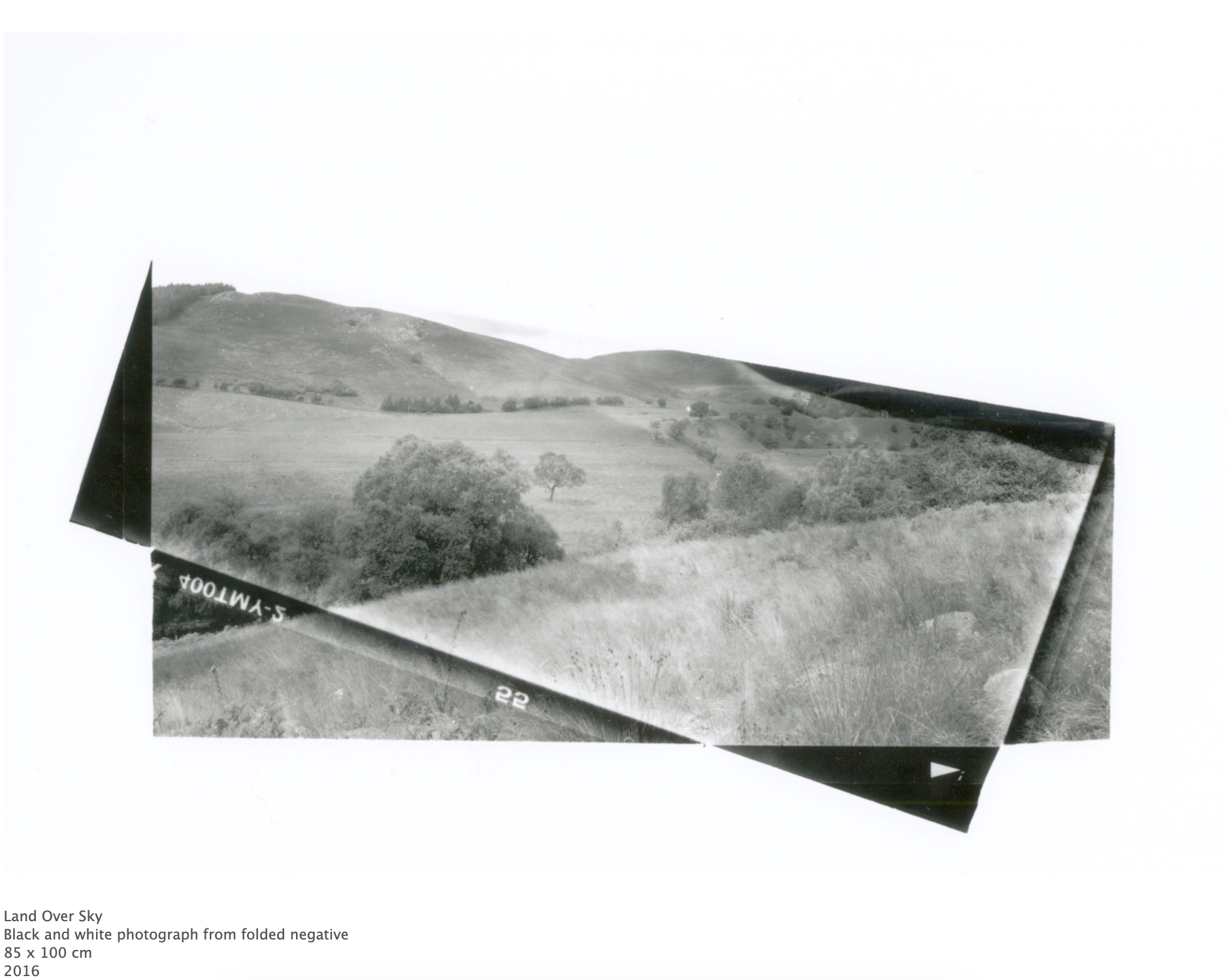


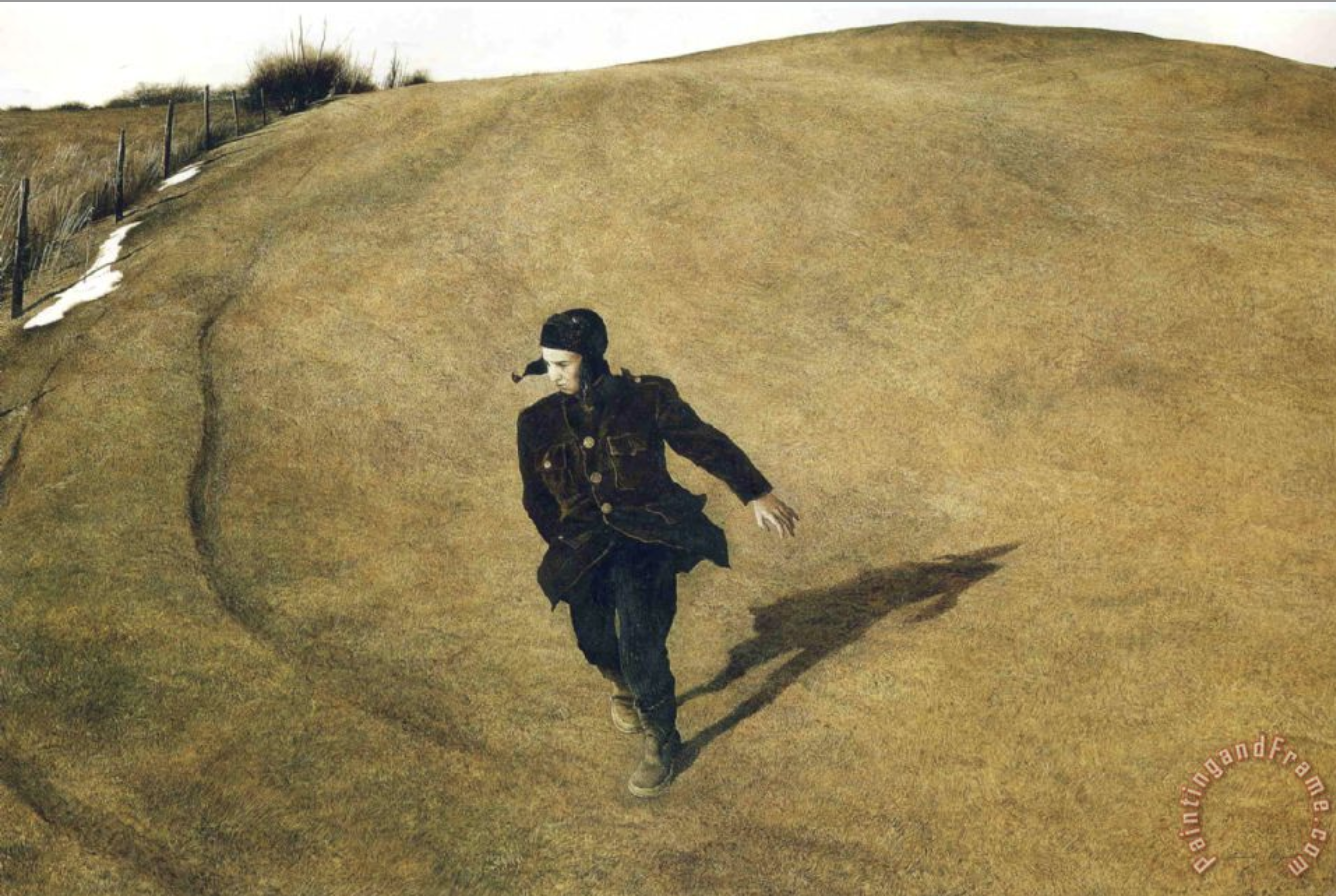

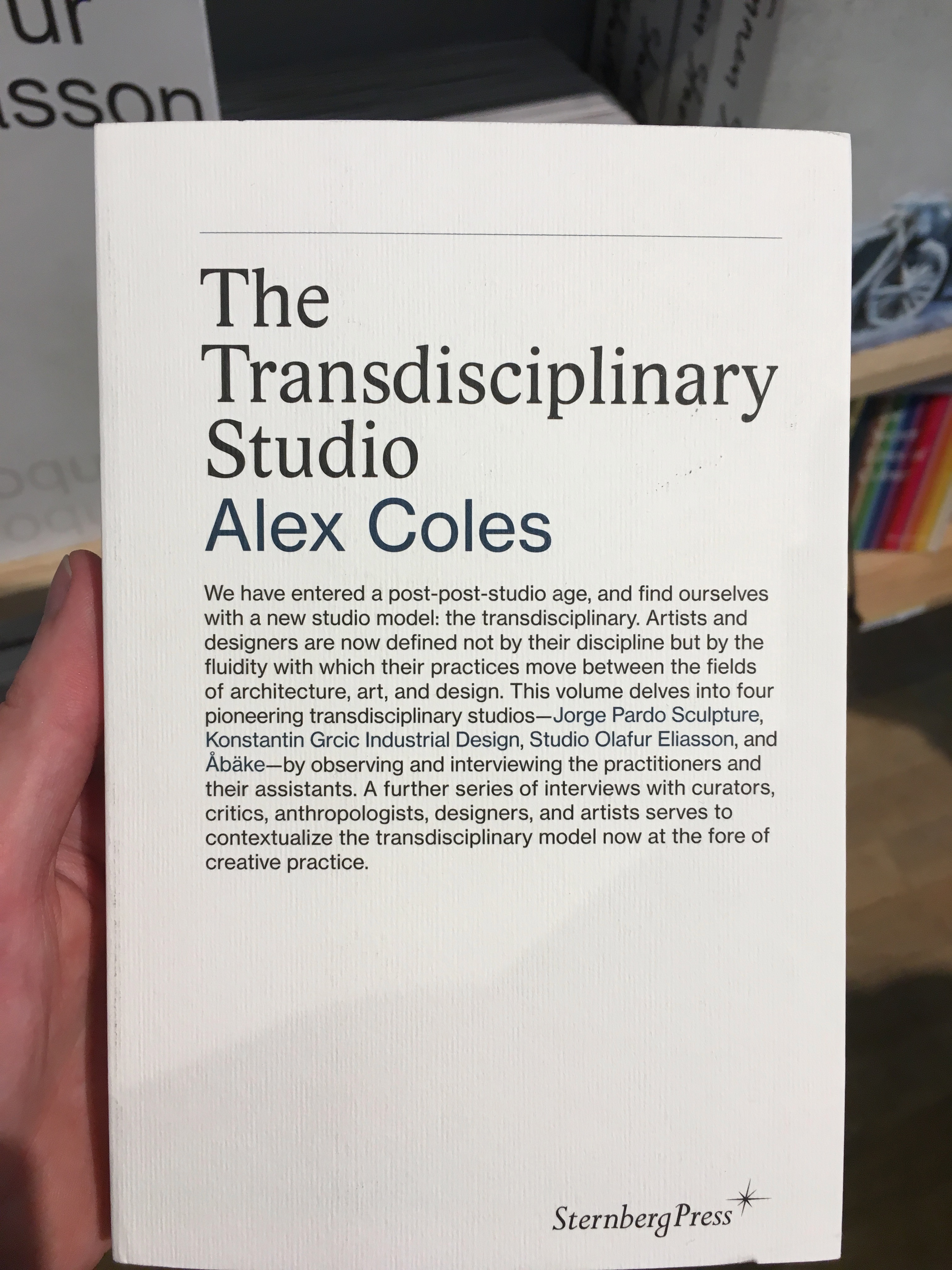
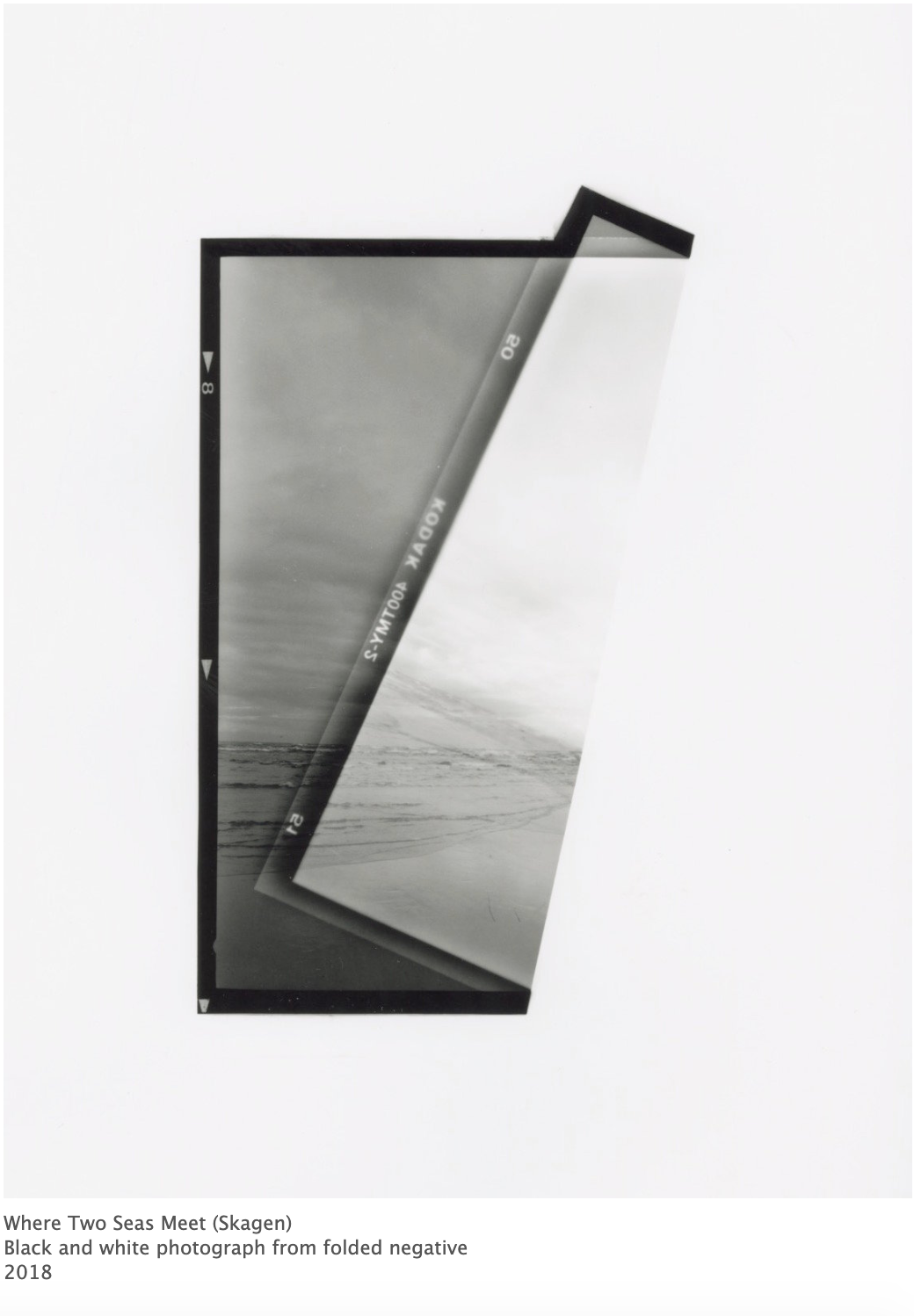
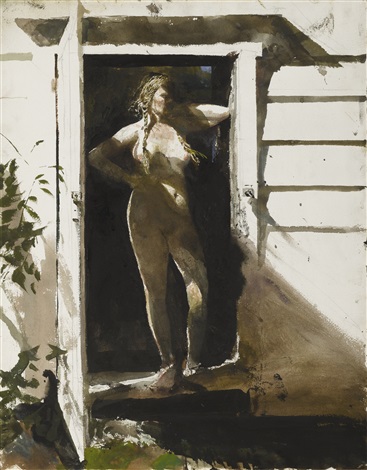
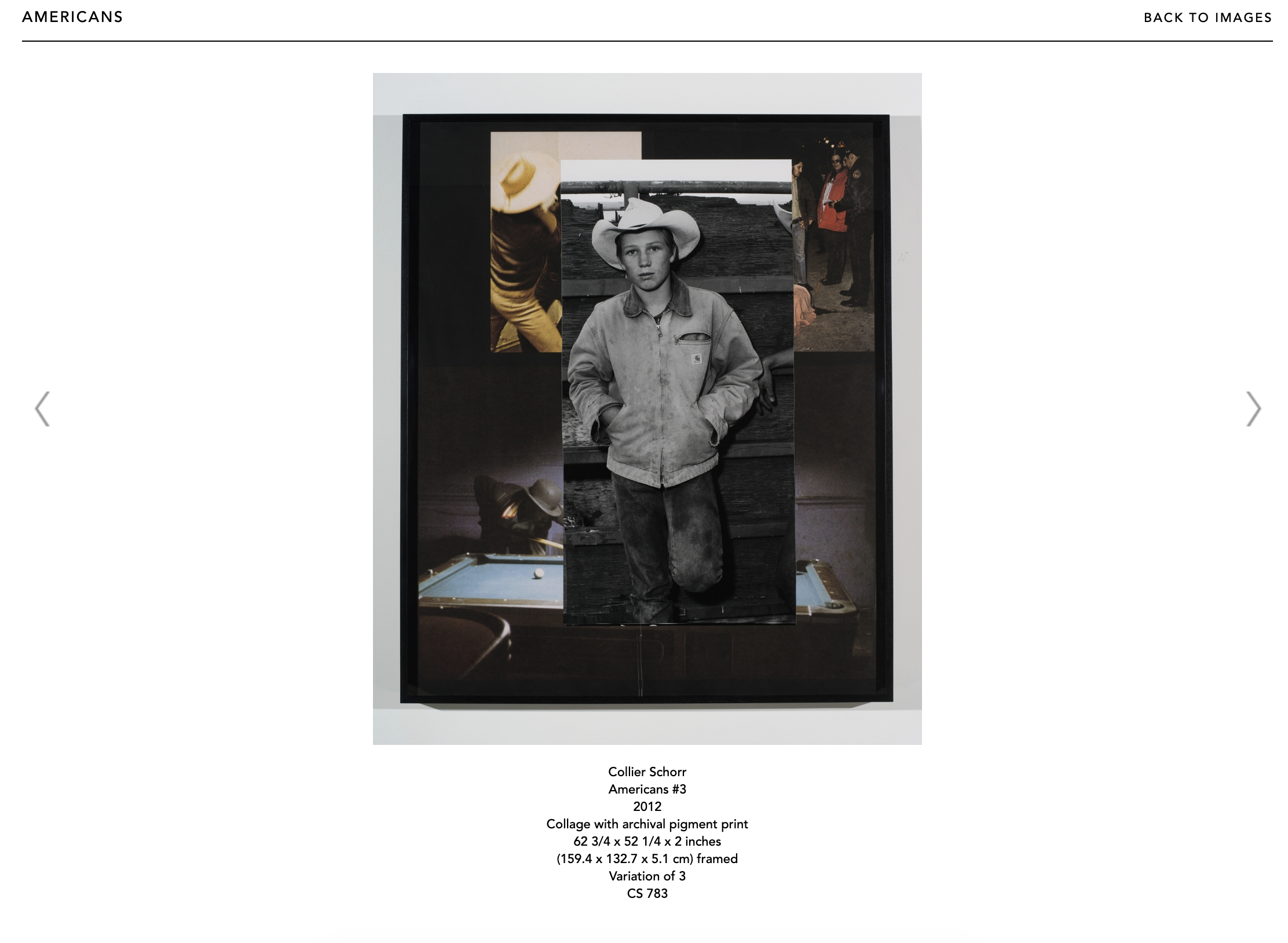
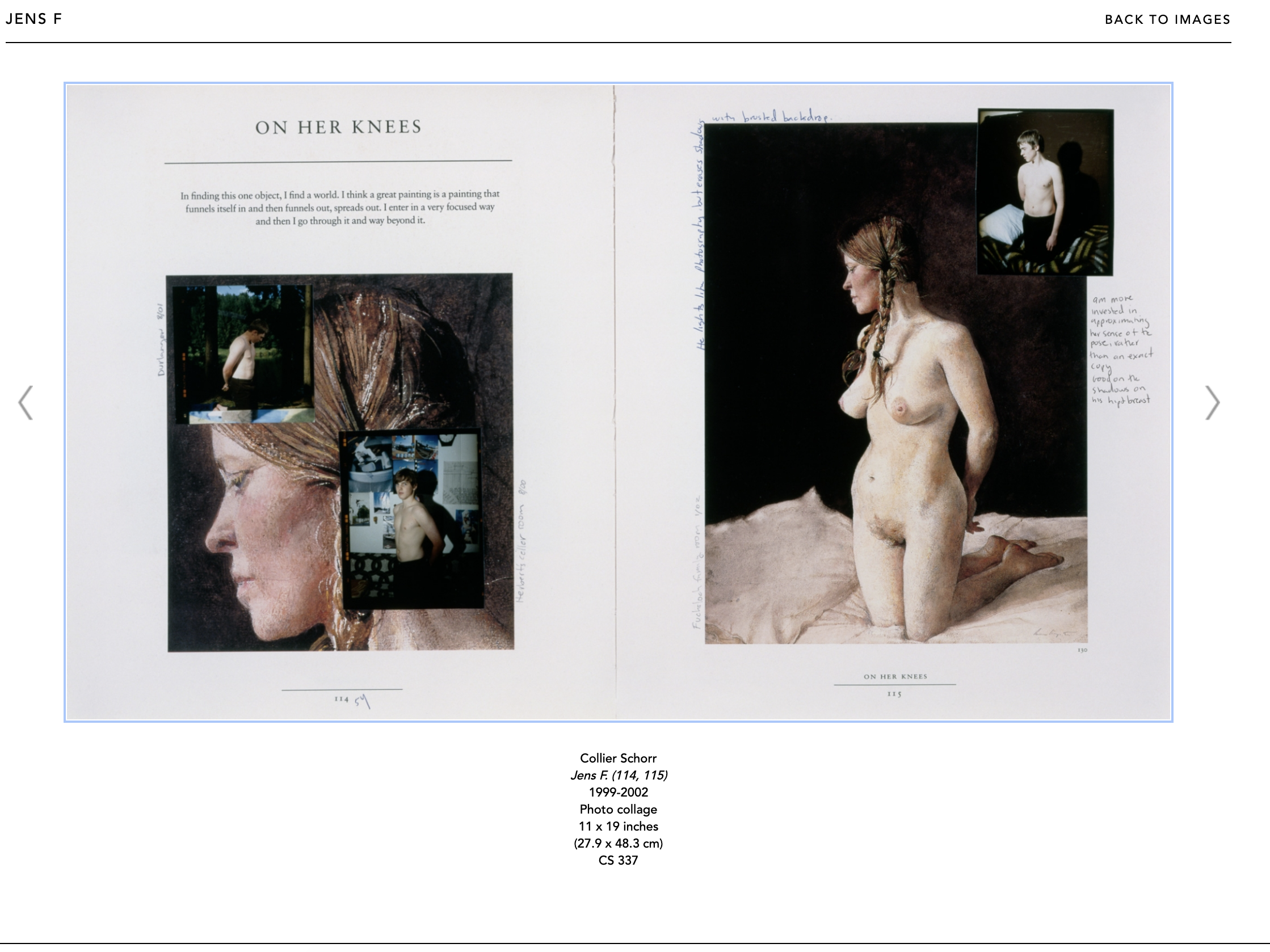
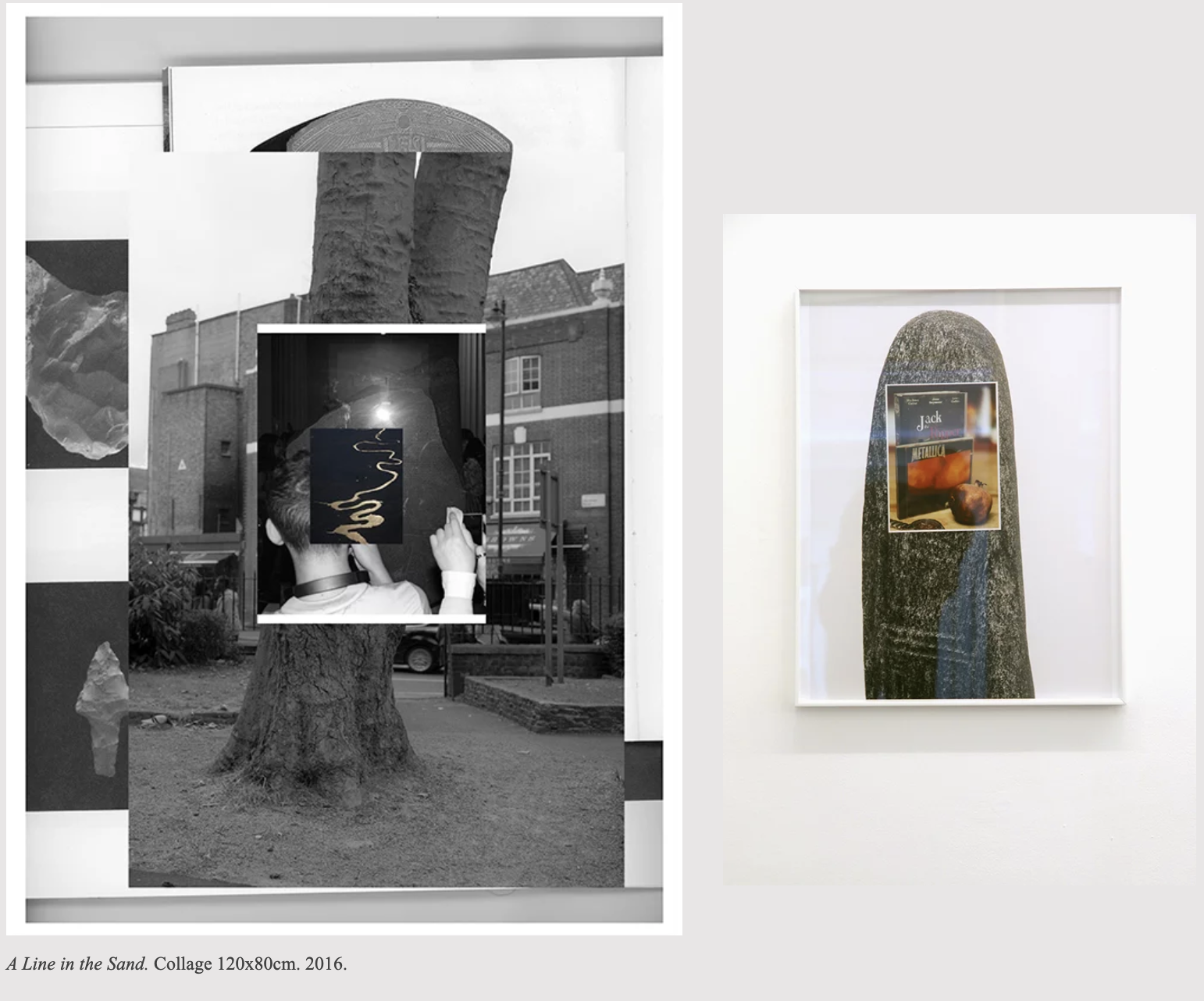
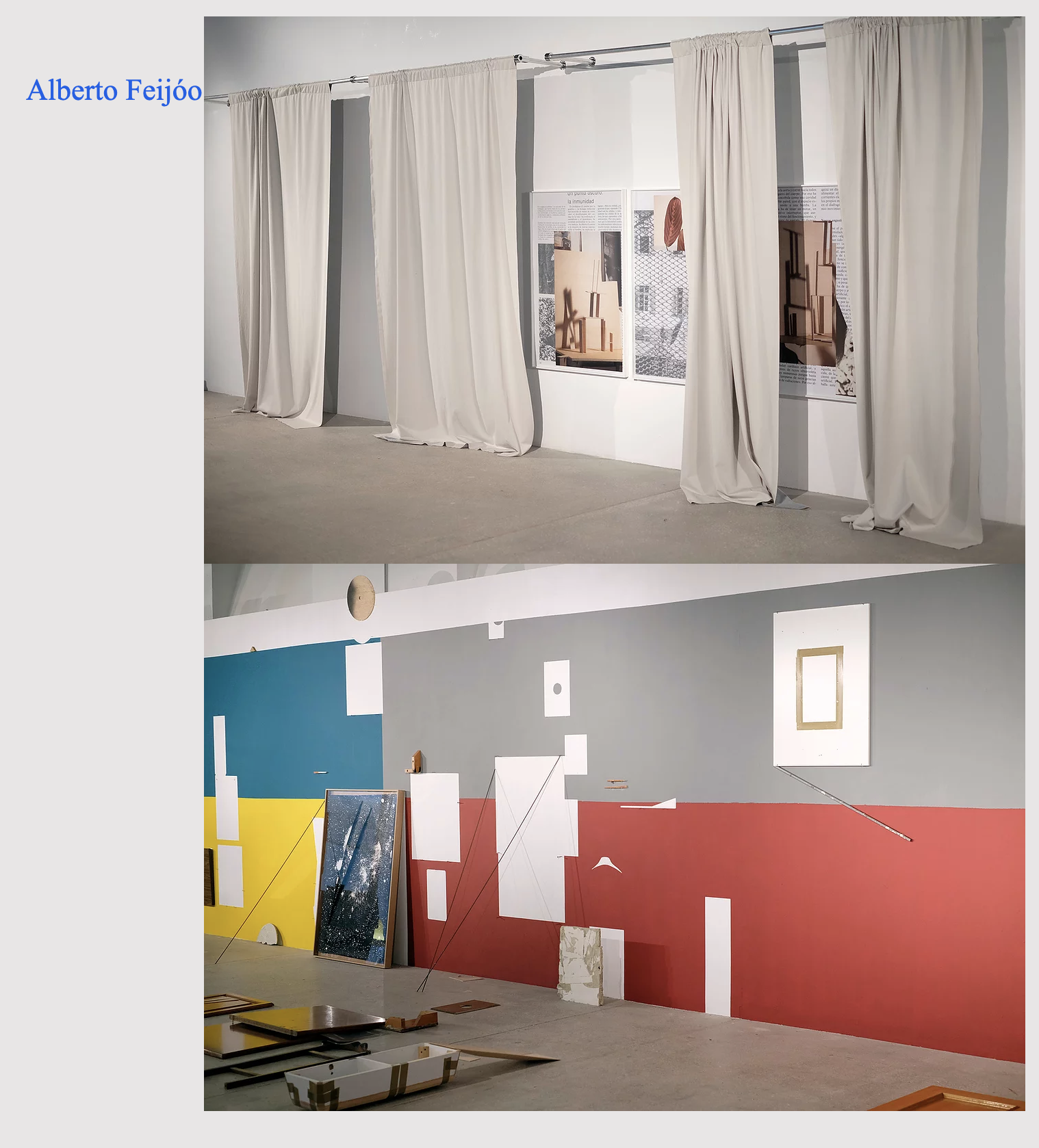
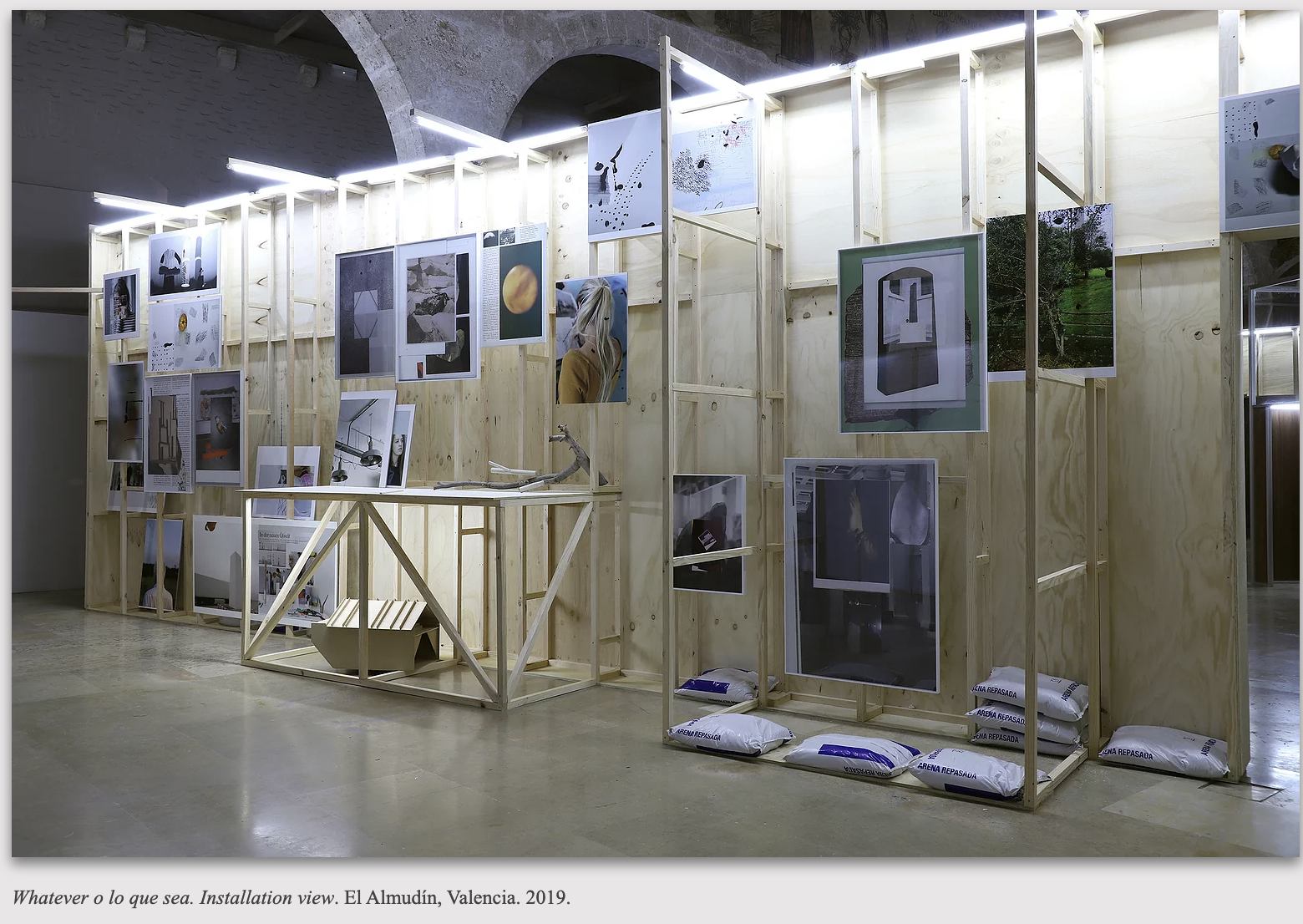


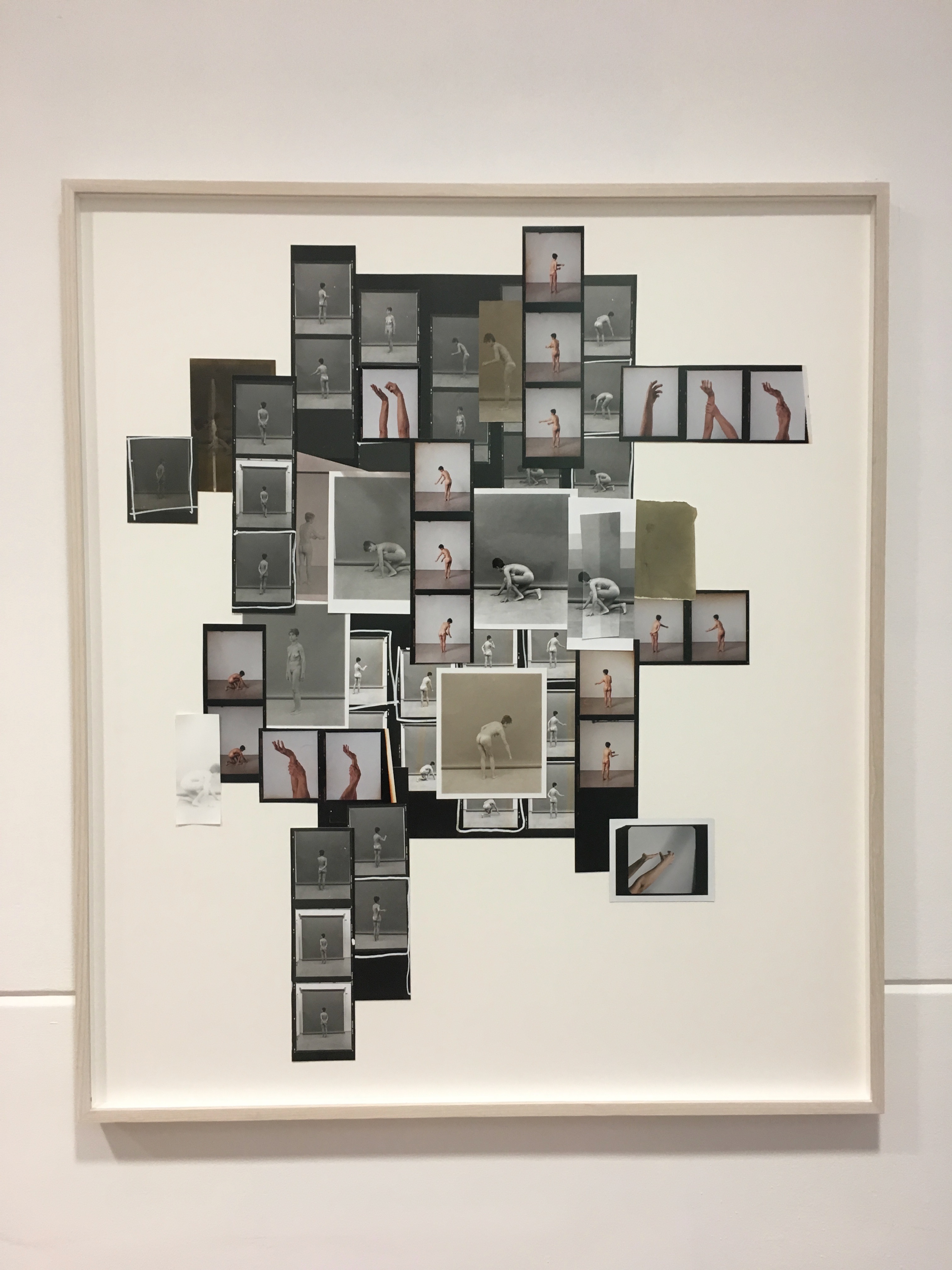

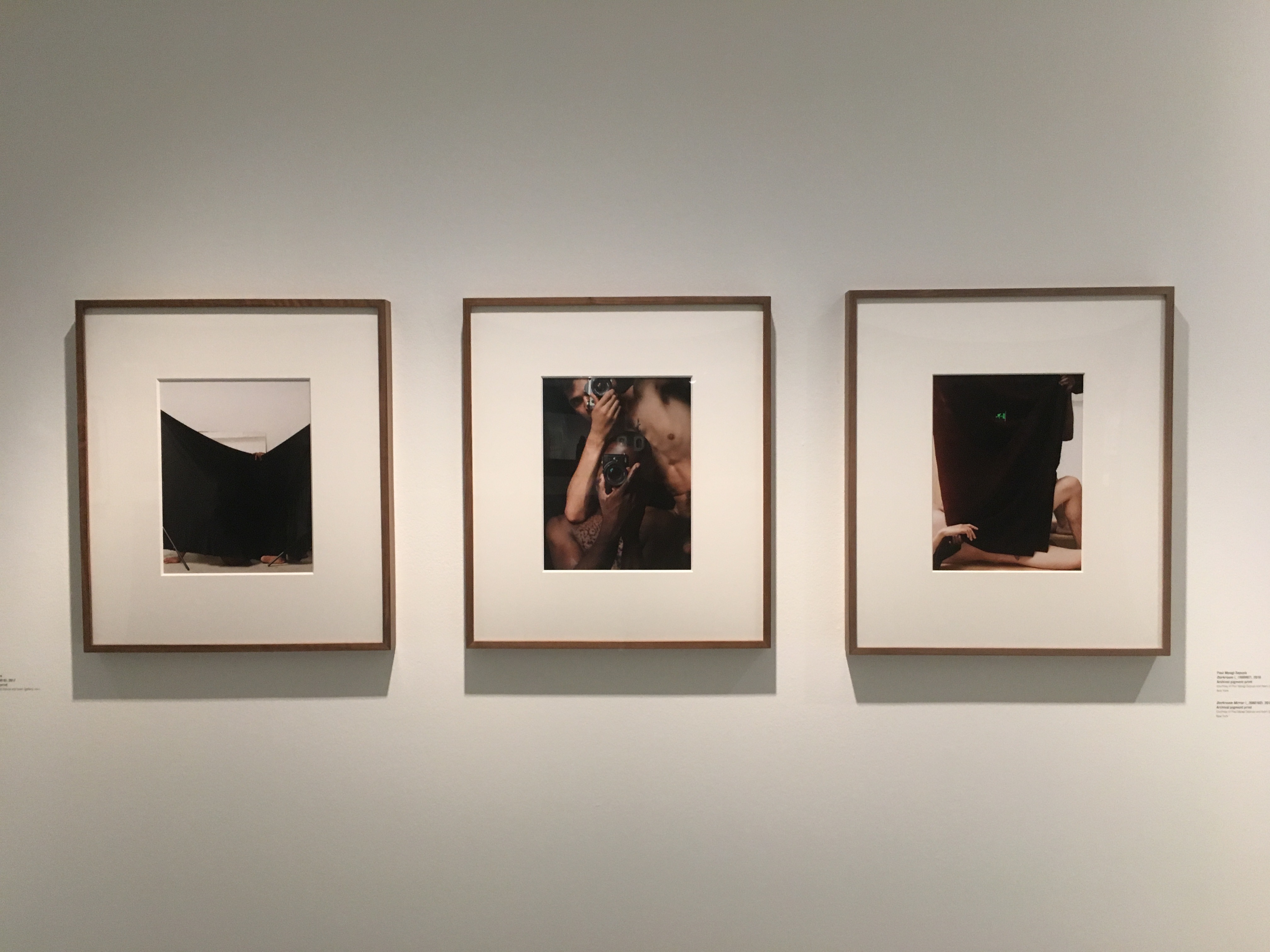
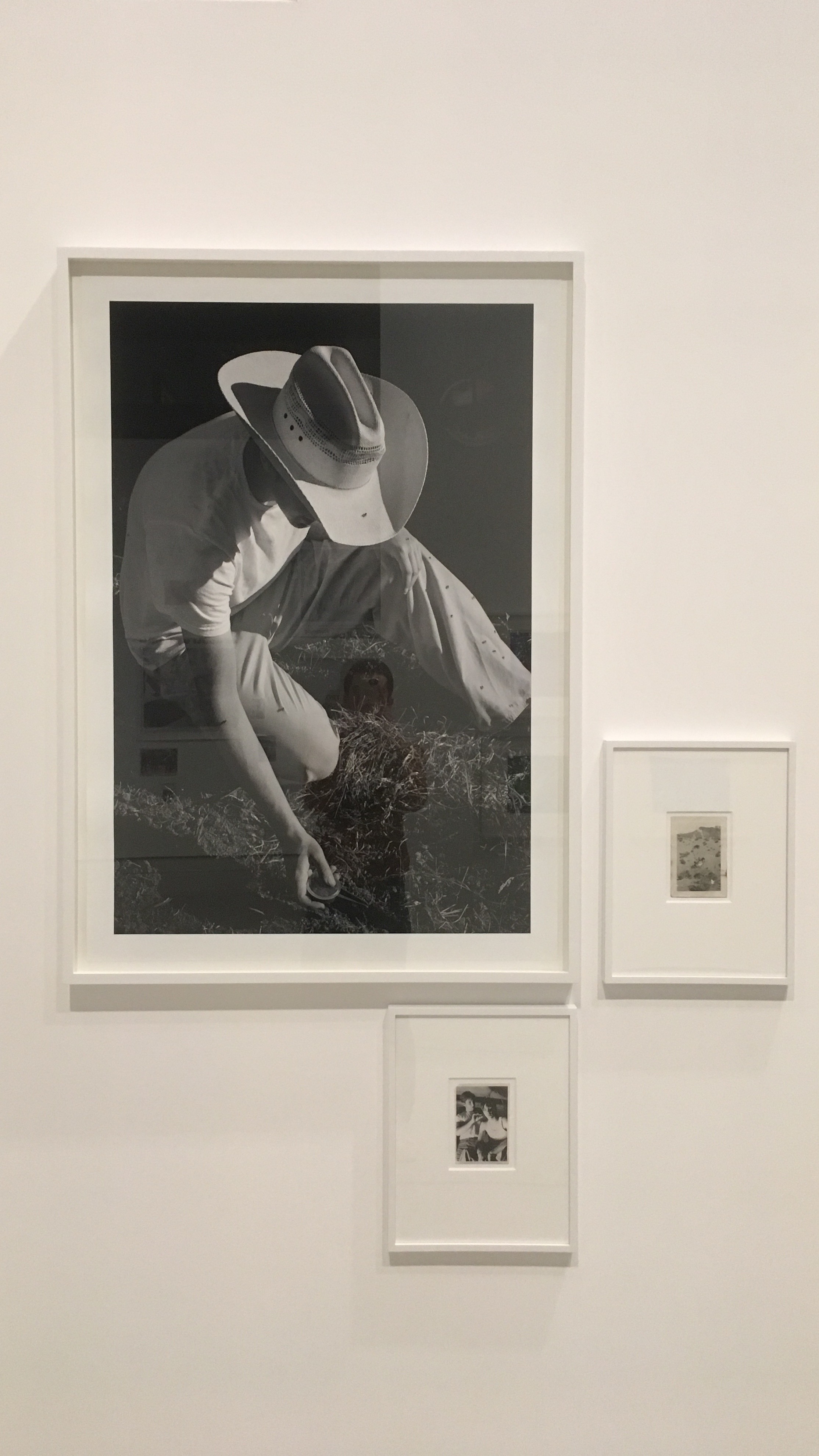
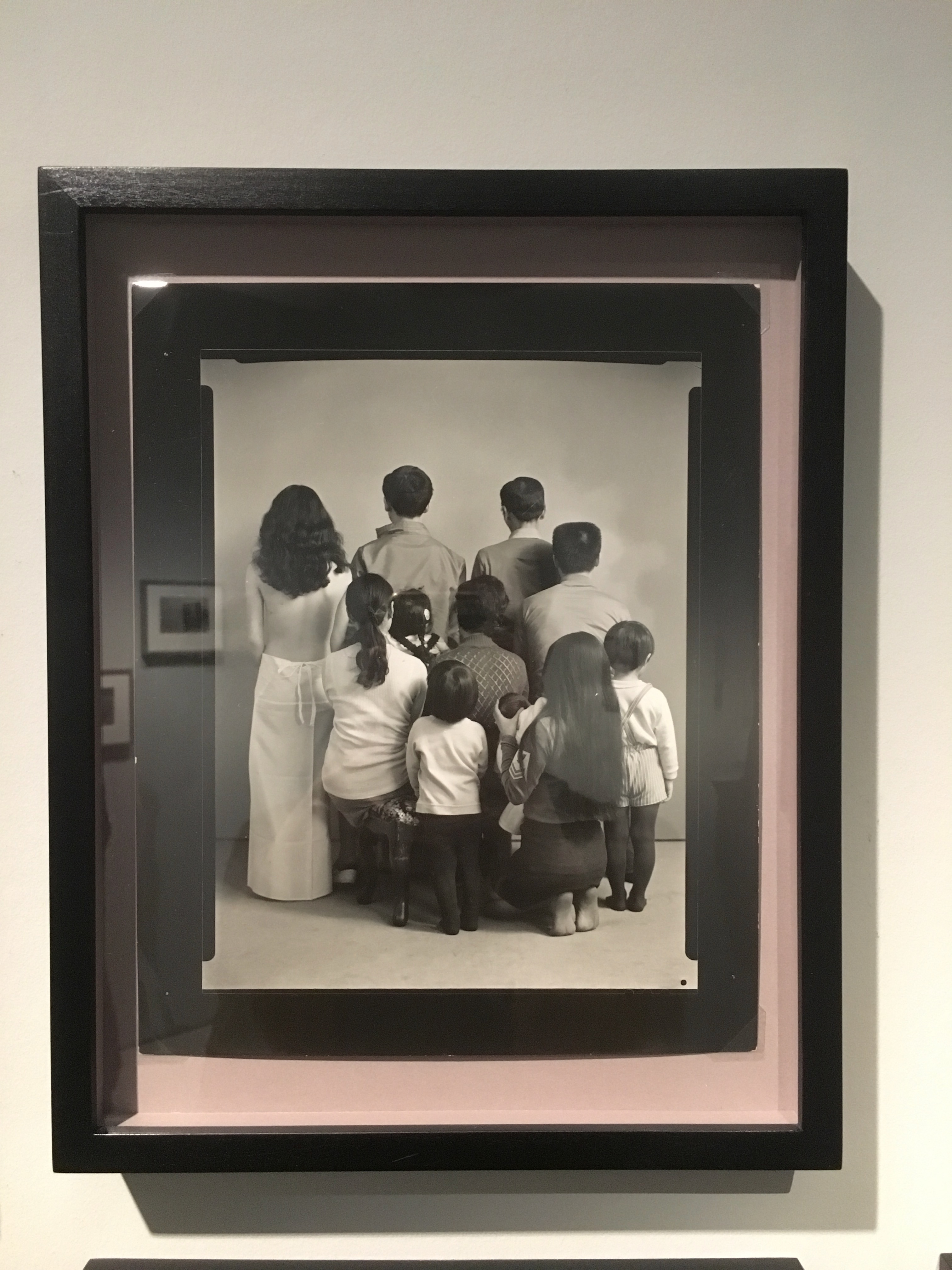
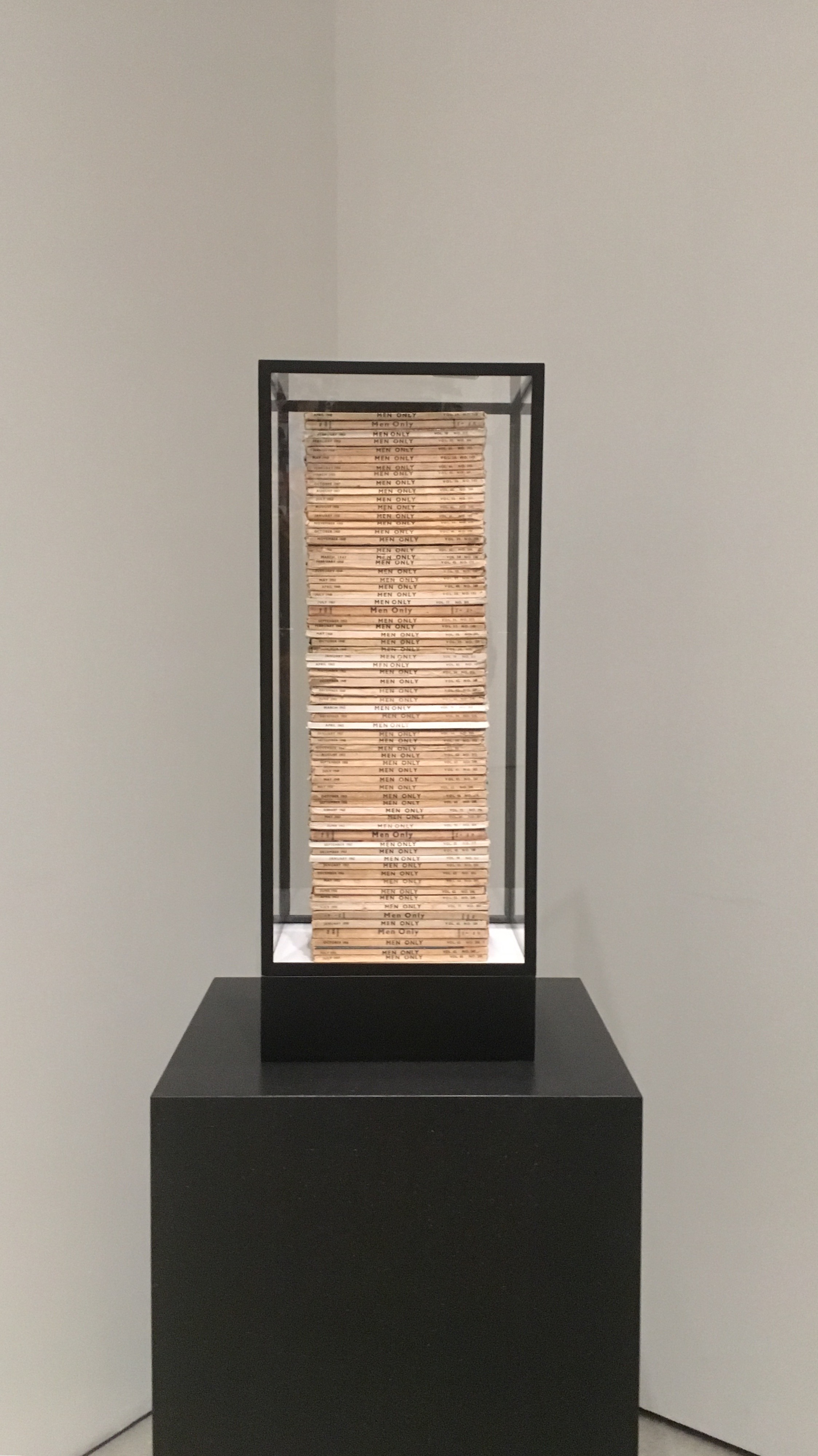

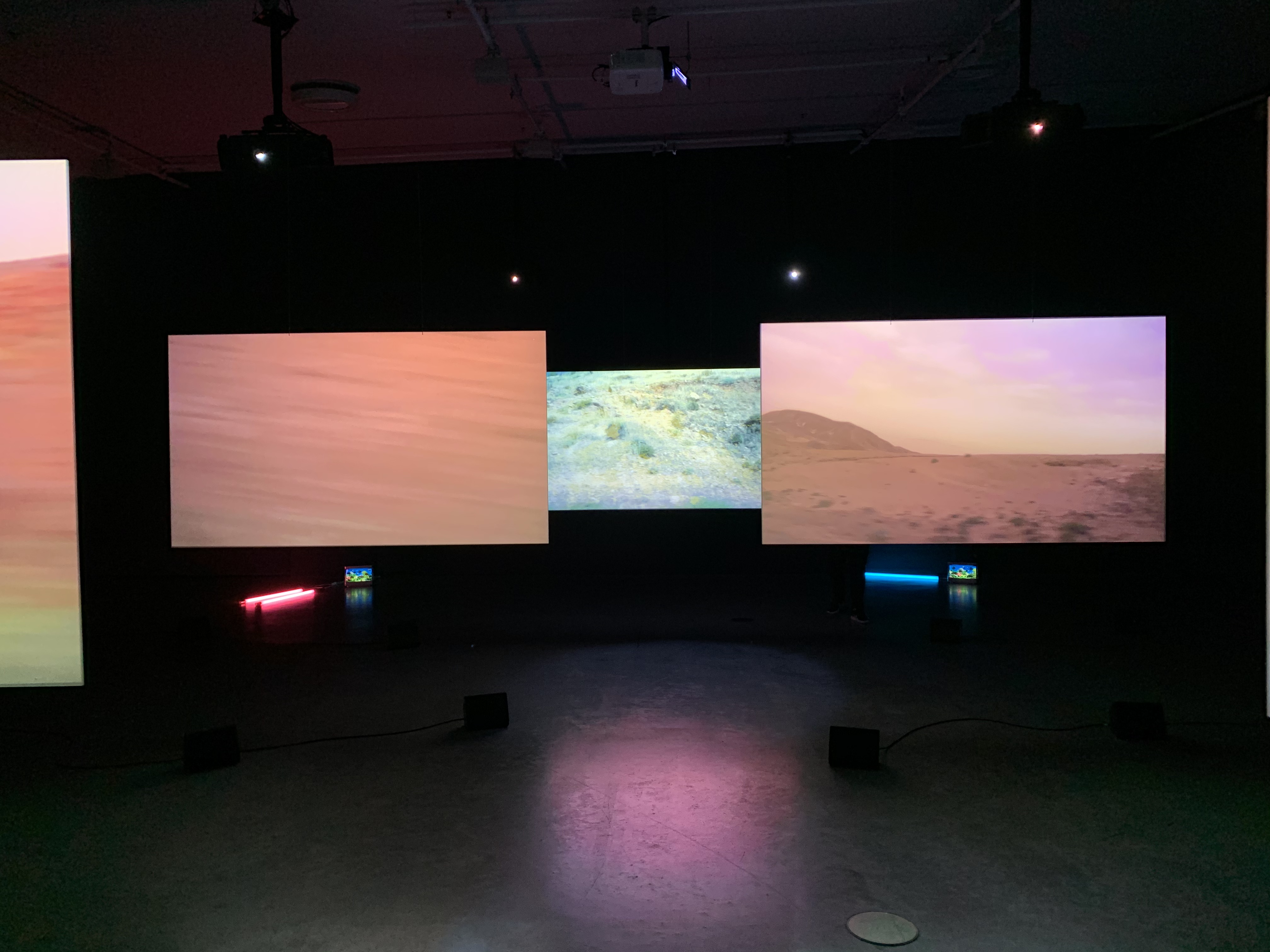

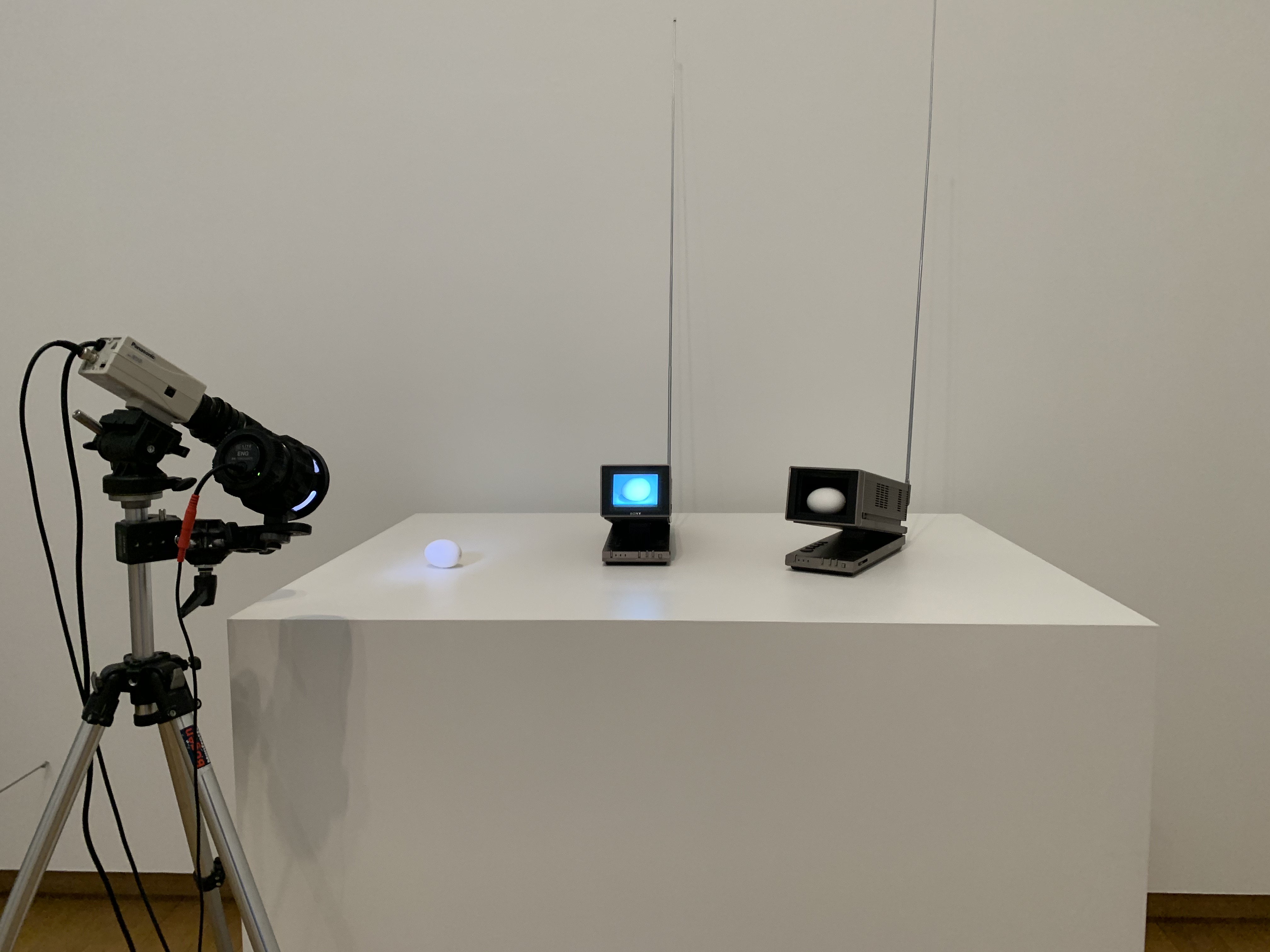
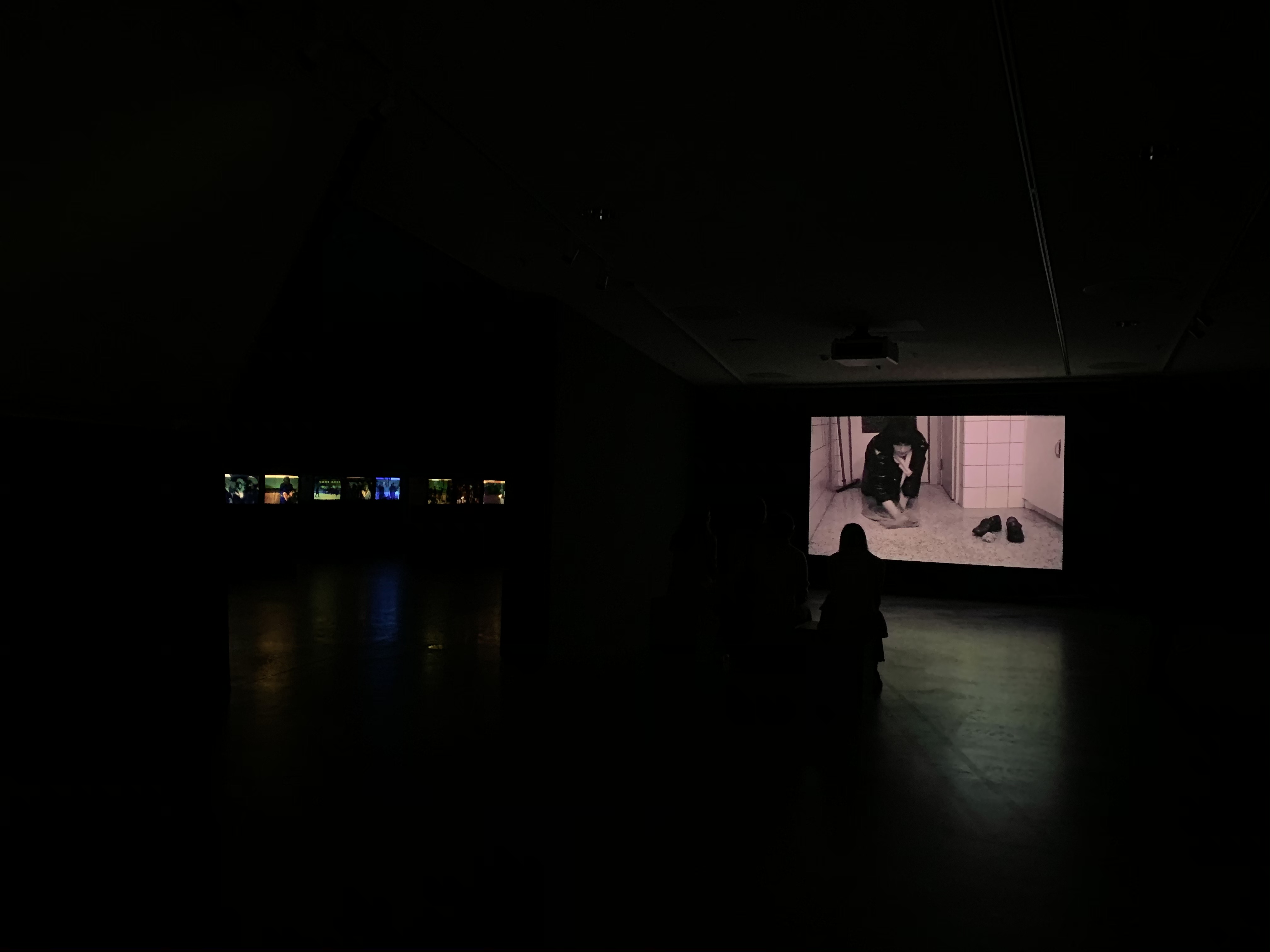
VR/3D Experiments
This research started to expand and encompass a variety of artists and exhibits. One artist, in particular, was Irish artist Kian Bailes, Kain, explores 3D worlds repurposing found imagery themes that include queer undertones or sometimes explicit material that is then is fractured, abstracted and distorted in a 3D VR simulation or experience that deconstructs the image. His work was of interest to me as it explored themes that I wanted to engage with but wasn't sure how that could manifest within my own current knowledge of 3D technologies and conceptual understanding. Another reference was a video depicting various abstractions and forms using 3D renders of fabric and materials, this piece of work was part of a larger group exhibition in Foam museum in Amsterdam in 2019. These techniques were of interest, subdued but were an undercurrent throughout my first semester.
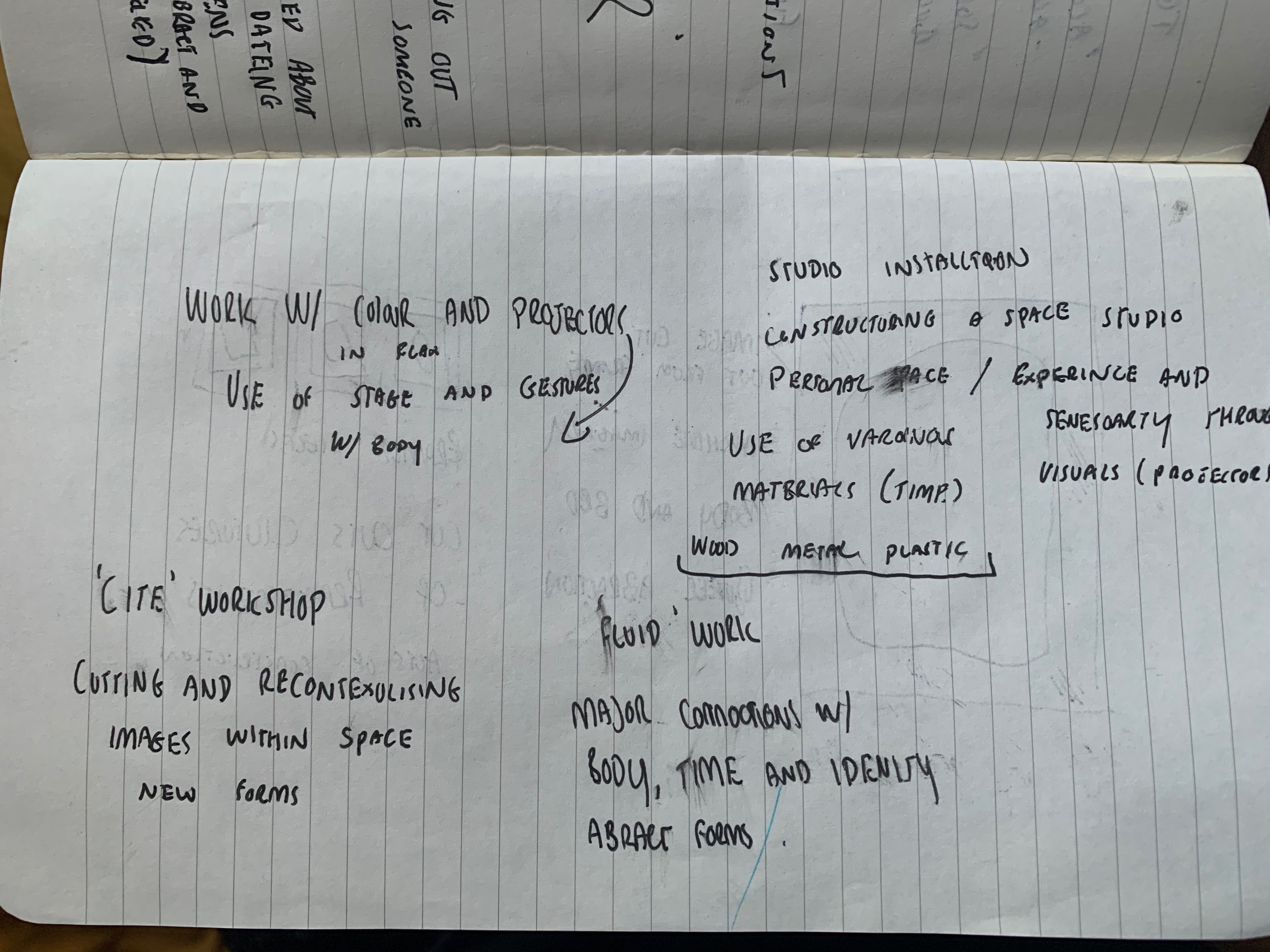
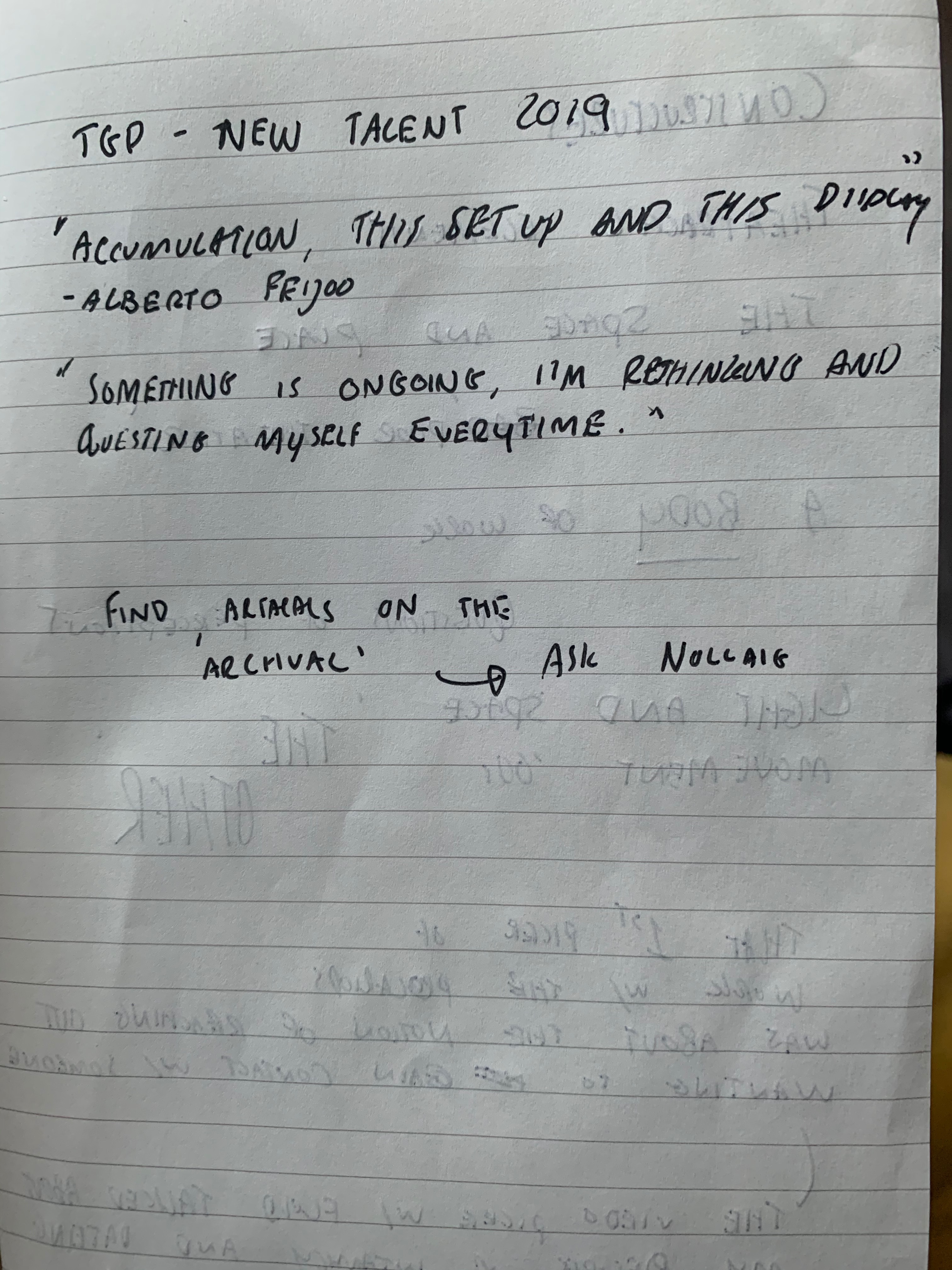
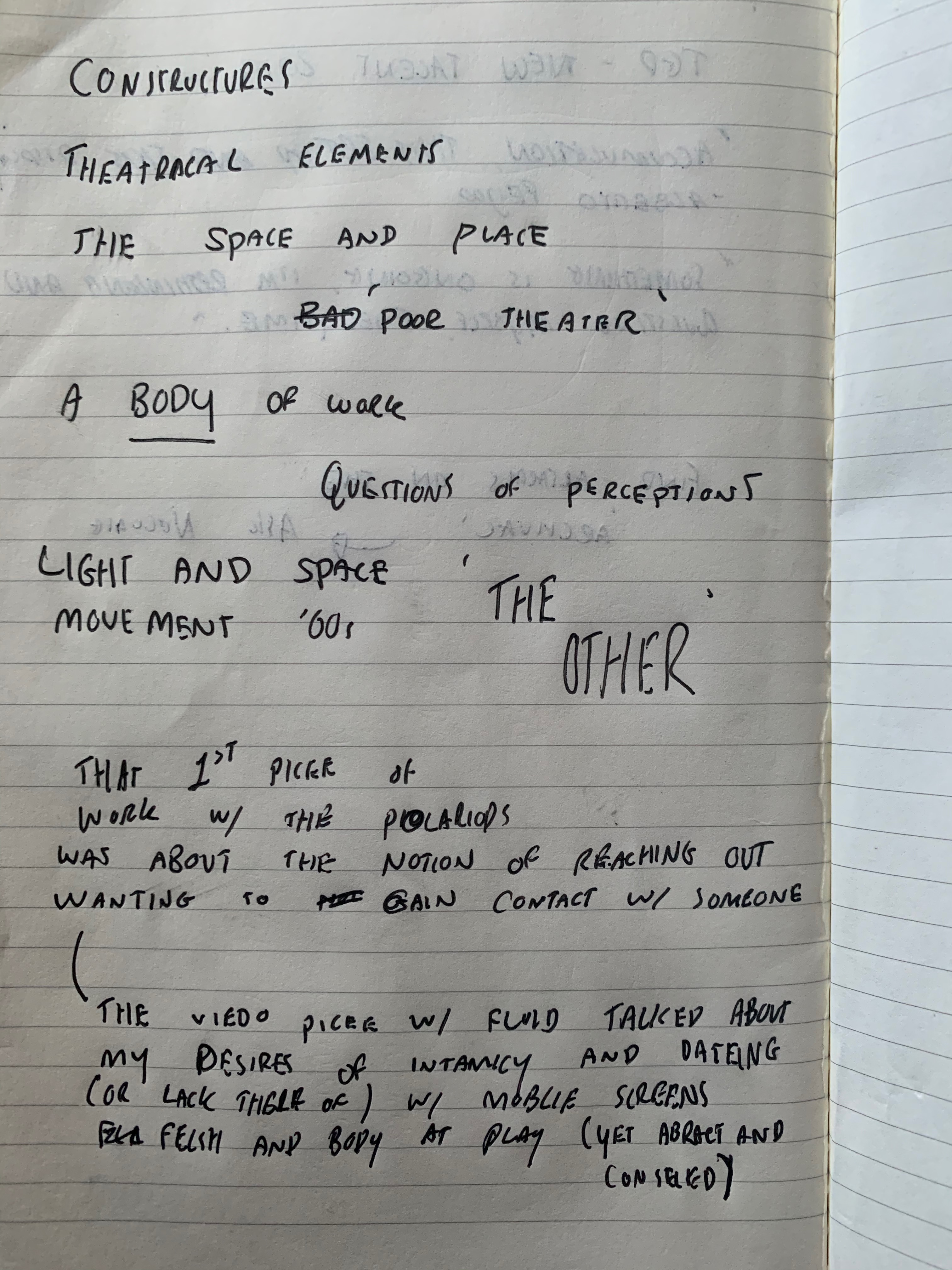
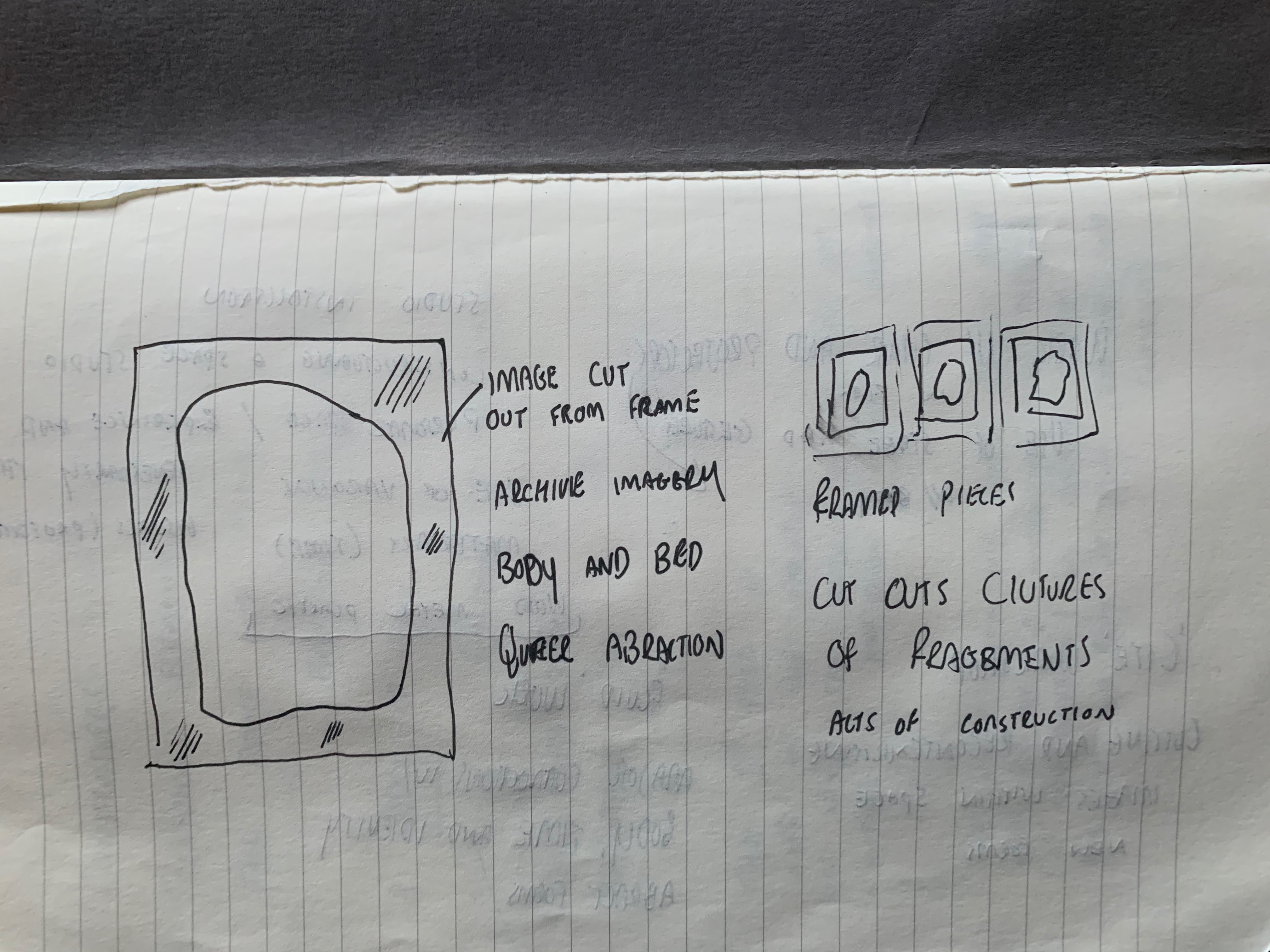
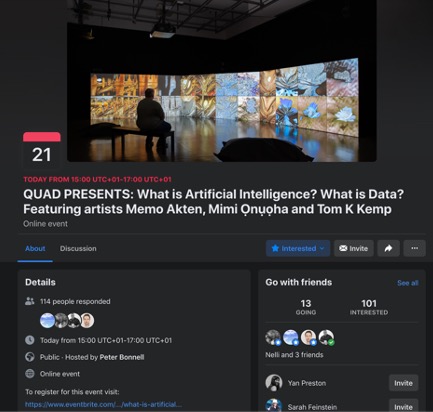
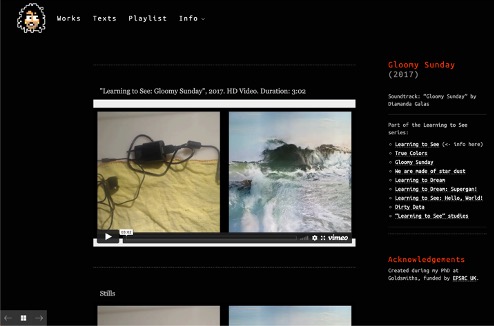
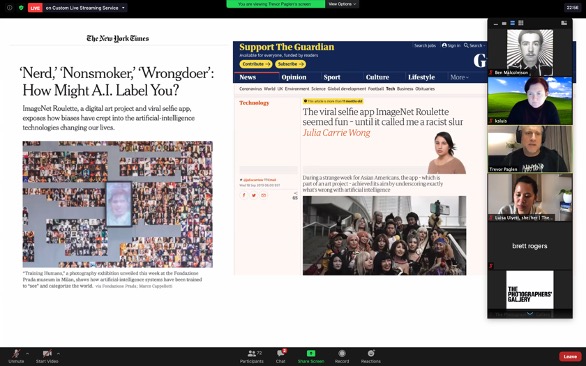
Press Release
The Materiality Complex
The Materiality Complex will open with a reception on Thursday, January 10th from 6-10PM and continue through June 1st, 2030.
MoMA PS1 is pleased to present within conjunction with the Tate Modern (UK) The Materiality Complex. As we welcome a new year and new decade, The Materiality Complex comprises of a group show of 6 artists whose work was placed inside a time capsule left in MoMA’s archives 10 years ago. Spanning a length of 10 years, this show comprises of work made from 2010 – 2020. A decade of transition and adaptation within the photo/lens sphere radical developments surrounding the context of what photography could be (post-photography) was being raised and challenged. A generation of artists stuck within the margins embraced a modernist view on the conventional image-making tradition of the early 20th and 19th centuries. Harking back to the core fundamentals of photography, light, chemicals and touch. This generation worked with the mediums inherent qualities of uniqueness merged with the idiosyncratic nature of artefacts.
The Artists -
Sara Cwynar (Canada),
Tom Lovelace (UK),
Ben Malcolmson (Ireland/UK),
Brittany Nelson (USA),
Dafna Talmor (UK),
Carmen Winant (USA)
MoMA PS1 within conjunction with Tate Modern (UK) were chosen for the venue for their persistent involvement within the engagement with the progressive view on the medium of photography, both institutions will exhibit The Materiality Complex; MoMA PS1 running it from January-June and Tate Modern June-December. The Materiality Complex core themes related to the martial nature of the photographic object (or experience), secondary themes touch upon the inherent qualities found through the majority of artists practice, such as feminist ideologies, queer overtones/undertones, capitalist desires and home. These themes are echoed within the writes at the time of compiling the work together in a thematic show, Charlotte Cotton touches upon photography progression through historical contexts and where the medium has been and future potential, Drew Sawyer speaks upon the LGBTQIA+ representation and queer themes found throughout a selection of the works. And The White Pube, which encompasses Gabrielle de la Puente & Zarina Muhammad respectfully, both founders write about the awareness of a female lead on the representation of women within gallery/museum institution, however, they also impose the question of the lack of POC from other nations (namely non-western countries), they mention the dominance the West has had in the cannon of art.
VR/3D Experiments
Over the course of my experiments and research, I was very much interested within the realms of 3D and new media as an outlet to explore and experiments way in which I could expand my process within this project. Seeking out these resources brought me to various zoom calls presented by well-known galleries that showcased a selection of visual artist using data and 3D technologies to work through ways of representation ethics and the state of the hyper-connected world. These references were some of the first that I looked at to expand my ways of working with 3D techniques and resources to find ways to work through certain programmes.

Exhibitions
Foam - 'On Earth'
Another exhibition during my travels to Amsterdam in June 2020, was 'On Earth' being displayed at FOAM. The exhibition combined 27 contemporary artists who work in the domains of photography, installation, sculpture, video and new media.
All the artists involved in the show displayed how they explore and reunite the technological, socio-economical, connection with the world, through their variety of mediums and voices. One artist, in particular, was Matthew Brandt, and American artist with an interest within alternative photographic processes, that usually date back to the 19th century. Matthew produces large scale works, most notably site-specific works that explore the ideas of the classical American landscape, exploring materiality within his process, Matthew works with elements in his local surroundings with shooting on location. This experimental approach to image-making and crafting was a highlight of this show to me, for the experimental nature within how Matthew works.
Research
Image & Form
While working on my current research for a number of weeks, I tend to forget the amount of work (or research) that I have accumulated during my studies. Looking at the archive for my research, returning to the themes I was exploring within my early Polaroid project with image and materiality of the physical object, especially photography, I explored an array of visual artists working with the mediums experimental nature. These artists and their works, take on a highly experimental and abstract approach when it comes to image-making and findings alternative ways in how to expand upon the traditional notions of the image and representation. A lot of these artists, I find have respired me in terms of working with the physical image again, but also expanding the ways in which I can work with moving image, and analogue techniques in order to create a variety of ways to create and make. My research so far has taken me on a wide yet narrow variety of works, spanning the mediums of photography, video, sculpture, installation and painting. I am constantly considering the ways in which each medium can add or perhaps hinder the creative process.
Exhibitions
Amsterdam 2020
Being inspired can come from a variety of sources, being involved within the gallery scene both within Belfast & my time living in The Hague, I’m continuously seeking contemporary spaces and exhibits that excite me and my medium. Having a discipline that is primarily in photography, I've always tried to expand my outlook on how to push or elevate the medium. Within recent years my practice has expanded within these boundaries resulting in me experimenting within the moving image and video art.
During my time back in the Netherlands in June 2020, I took the time to travel up to Amsterdam, I explored the cities galleries but one exhibition struck me - Nam June Paik ‘The Future is Now’ shown at the Stedelijk Museum. Nam June Paik was a Korean visual artist who predicted the power of mass media and the future of communication within the rising internet age. The retrospective exhibition showcased a variety of his work, ranging across a lot of mediums, most noticeably video art and installation.
As well as going to the Stedelijk Museum I also took the time to see Chantal Akerman's exhibition titled 'Passages' at the Eye Film Museum. Chantal Akerman's style is informed by a distant approach to what seems mundane, but where a multiplicity of incidents, experiences and feelings linger under the layer. Adventuring around the exhibition, the seemingly retrospective exhibition showcased a lot of early video work, exploring roles of conformity through expressive gestures of one's self. The arrange and curation of the work amazed me. The use of multiple continuous screens inspired my to think harder in how documentary videos could be displayed to create and atmosphere within the space.
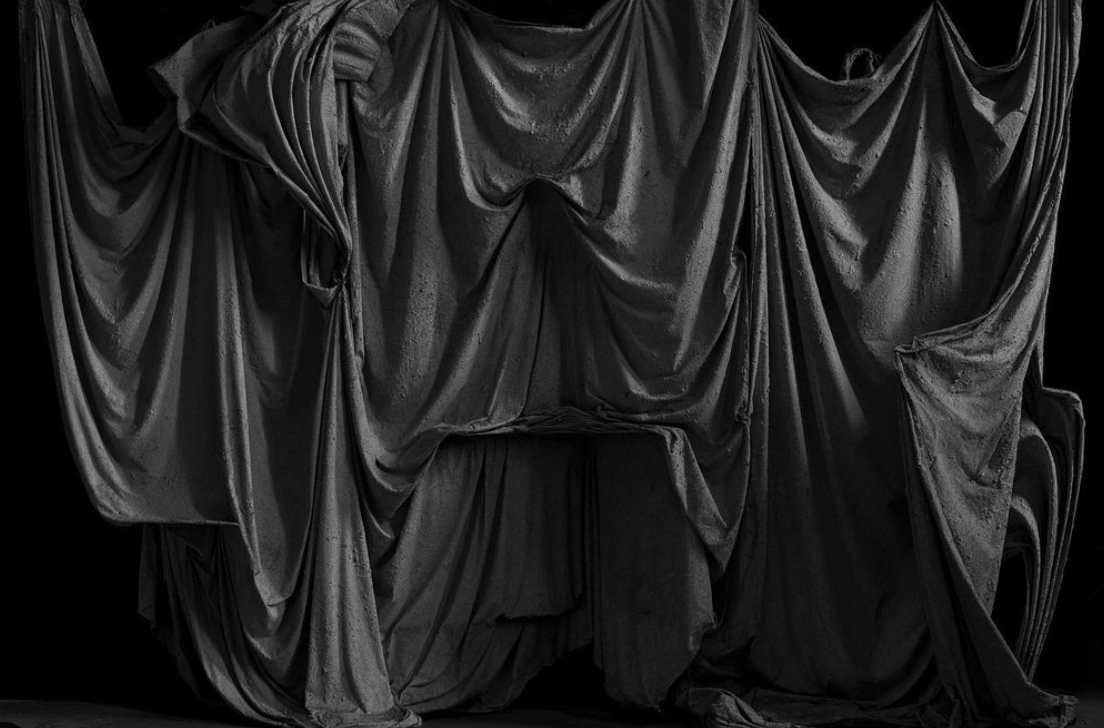
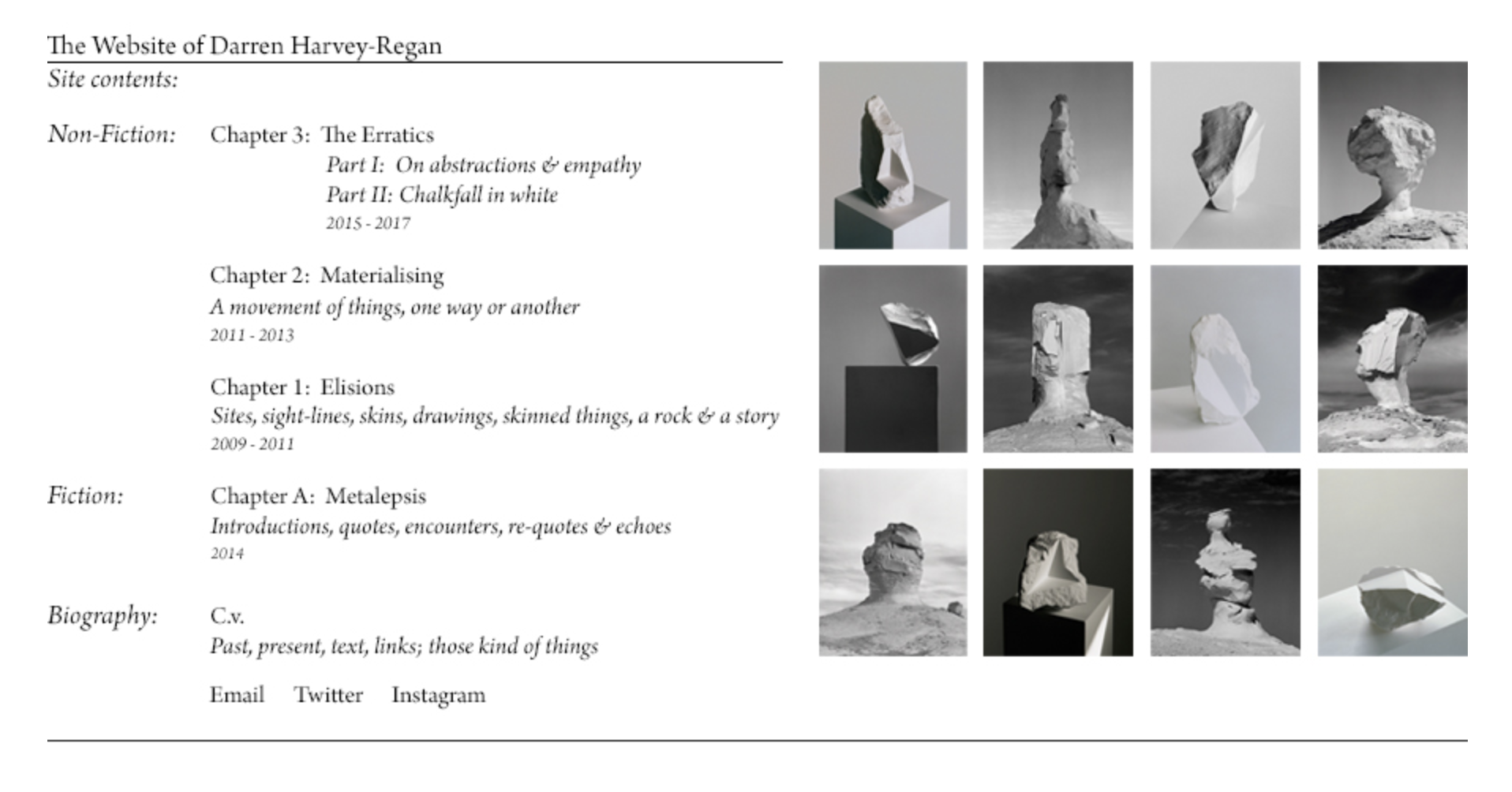
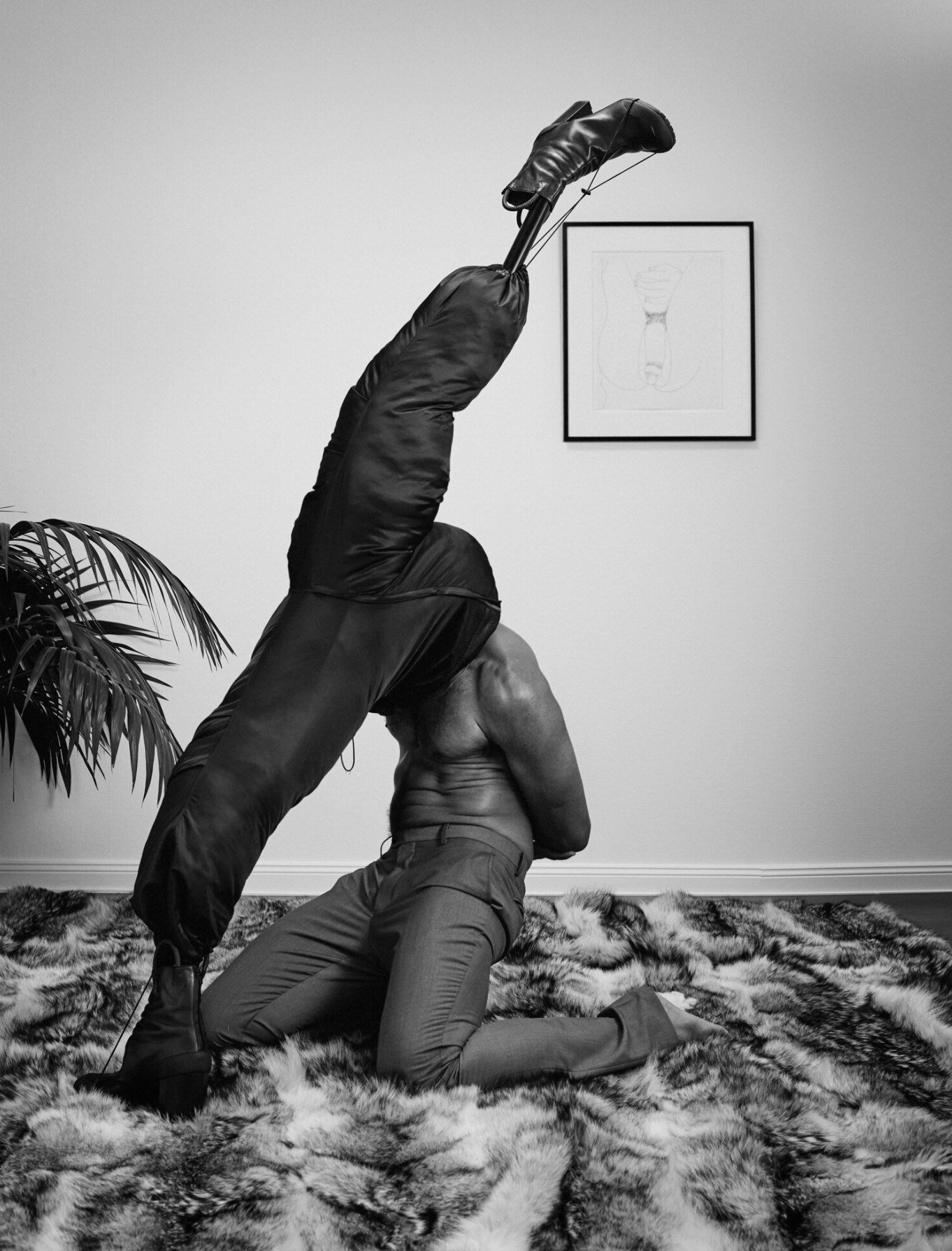
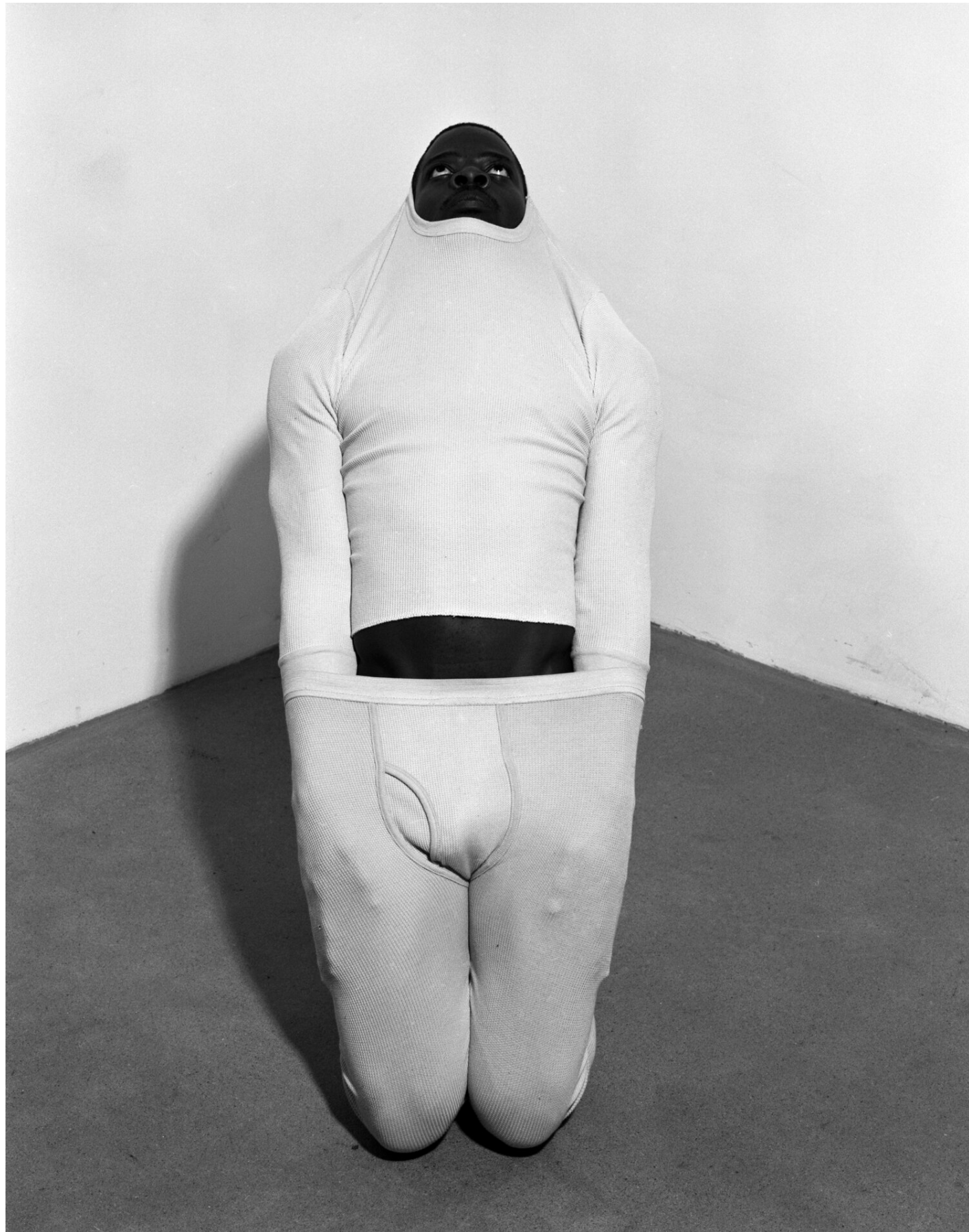
Frederic writing class:
What do I see in my work?
I see an image, a physical image, a Polaroid image with an abstract pattern combining texture and hues, these hues move and shift with the passing of time, these hues have alternated through the image. These forms created, seem smooth, gentle sways within the parameters of the physical frame, negative space fills the top of the frame, allowing for the space of chemicals to explore and give weight to the image. Giving the physical weight, there are patches and areas of lightness, in hue and depth of volume
What do I feel when looking at my?
I feel a heavyness to the image, I feel a sense of weight that attaches itself to the contents of the image. The feeling of touch and intimacy lingers within my thoughts, gentle notions of touch and mould seems to take over my feelings. I feel childish or innocent, when looking at the work, this innocent comes from the play and performanity of moulding shapes that have no photo-real representational meaning, it makes me feel confused but interested (not excited but not un-excited) it leaves an impression of something I want to engage with to test and to react
What do I know about photography theory that can connect to my work?
Light and chemistry the bathres way of thinking implies that chemistry is alive. These notions of alive and organic, perhaps projects a level of anthropomorphic qualities to a physical object. Life and death come into play when talking about organic matter, death is known within bathers understanding of the photographic medium, however these qualities only manifested in certain parameters. Non-representational imagery and abstract forms work in domains that aren’t inherently found within traditional texts
Does your work stand for something larger?
Yes, the work only touches upon the wider question of value and weight that we put on the material positions of an object, an object in which has value in the cost sense but also in the emotional sense, and this resonatness is needed for the viewer to understand, this work greats the catalyst for which the understanding of the apperception of the objects.
Does your work aim to examine a specific place? If so, what aspects of the place interest?
The place that sparks my interest in the space between the object and person. The touch and touched, the boundaries within the frame but knowing the space outside those parameters create interest with me
Is there any subversion of culture (or tradition) in your work?
My work hopes to subvert the notion of the appreciation of the physical object in a world that is dominated by this role realms in which we consume and digest, this is found throughout our mordent culture, locally nationally and globally.
Does your practice connect with any contemporary societal trends?
The notion of materiality being a notable trend within my current practice as shifted greatly in my current ways of working, taking note of this theme has been a recent intervention. Additionally, addressing the notions of identity is a strong theme that resonates throughout the majority if not all of my works, I use the medium to explore personal connection that I then transfer into poetic notions hinting at the topic or social norm/status as me as an individual and creative in the contemporary society.
What Events are connections to the work or to the context of its making?
Induced by the whole pandemic of COVID-19 the circumstances of which made me think of how to work within new parameters of a highly almost fully digital terrain, using methods of post and time, I use the available modes of transportation to transport the equipment to a wild global audience
Soufiane Ababri
Moroccan born drawer and sculpture works within the landscape of a politically charged society, Soufiane's work is characterised by homoerotic tendencies and movements of sexual acts within his colourful drawing of his familiars. Activism plays a role within the work that he creates often depicted as said specific acts with queer tendencies. Using his Arab identity within the context of the postcolonial landscape, the representation of this identity is important for him to create and be apart.

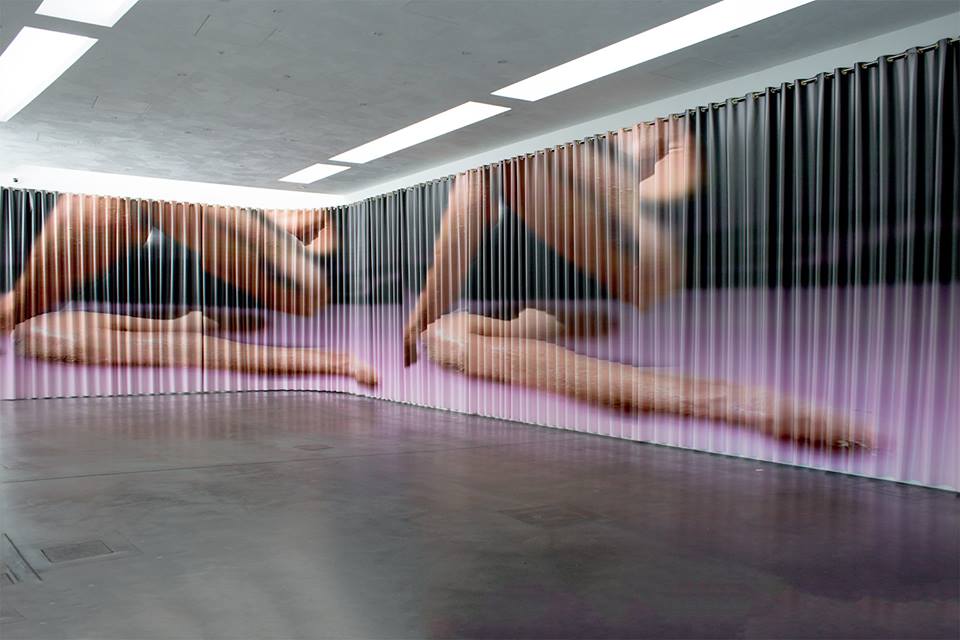
Semester 2
New Thoughts
During the end of October with my experimentation with video and performativity. I returned to my archive of imagery and research and I was reacquainted with artists that had previously researched and were interested in, but I never took their work to another level of in-depth analysis. Looking at the work that I made at the start of the semester and looking at the artists I had used, there is a common thread of materiality, sculpture, photography & installation these elements have always been an interest of mine. Wanting to work within these mediums has always been a challenge due, to the limitations of facilities and knowledge however, being based in a studio with resources I have returned to these artists that explore sculpture & installation as a way of working through their process. Being in a space (my studios) that is big and flexible, allows me to expand my practice during the months of Nov/Dec, I have explored these material sculptural interventions within the parameters of photography & video. These artists have also laid the groundwork for further research within these areas that they explore with their own personal ideas. Within the new semester I want to further challenge and expand my practice, I feel I want to work in these mediums to develop the ways in which I engage with visual art and my graduation project, as the project has taken the form of many mediums, but I feel that there is a common thread running through its aspects of experimentation. Such as the fragmentation of one's self and one I identity and the concealment of that through layers (physical & digital). These are the layers that I want to further pursue in the new semester.
Brendan Fowler
Primarily a musician, Brendan's series tilted 'Crash Piece' combines sculpture and photography into one. Using up to 4 picture frames, Brendan merged vernacular imagery of his own archive to create these pieces. The involvement and development of this work struck me greatly. The chaotic quality of his work intrigued me for its use of imagery and experimental nature in which he engaged with the mediums.
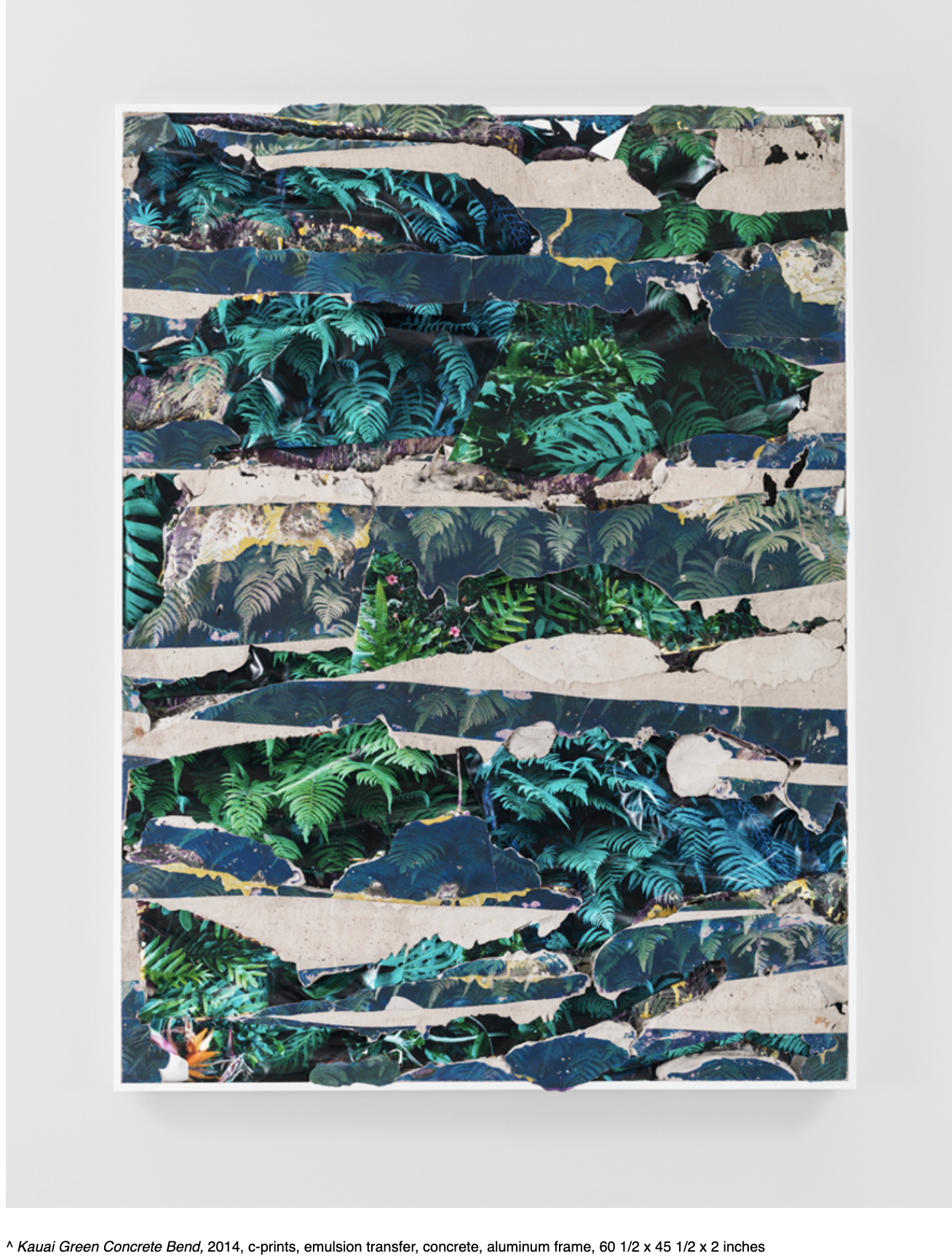


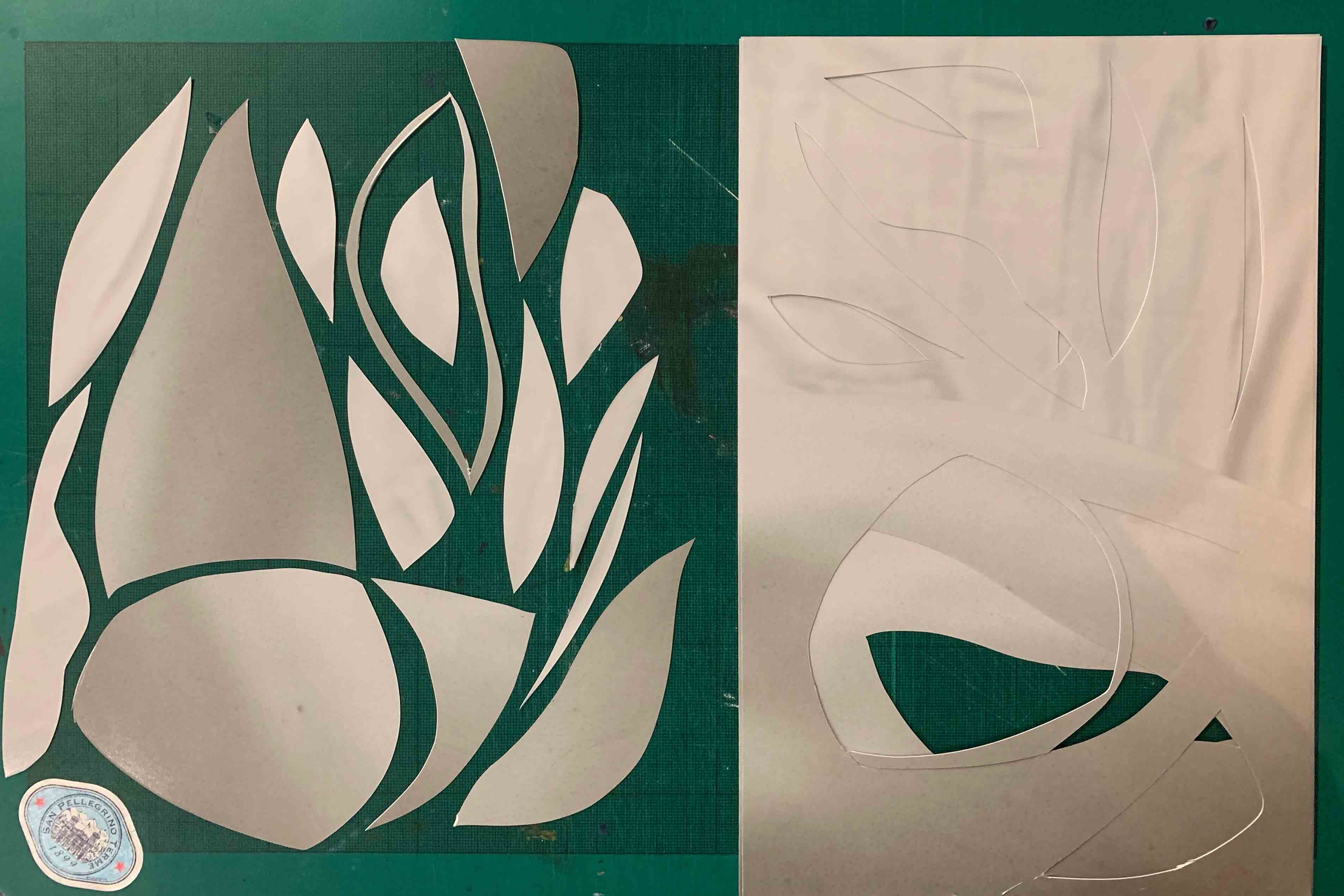
Images/Experiments
Bed Archive 2019
During my various experiments with video and moving image material and looking further into my archive as a new starting point. I started to explore a selection of images that I took during my time living in the Netherlands, these pictures document the arrangements and forms of my bed each morning when I woke up. I was interested to start this series as a way to relate a particular image of my bed with an event that occurred that day. However, I didn't full expand upon this idea, but these images continued and grew. I started these images during the months of October, November and December, these images were an exciting way of working with photography each day to contribute to something bigger as a collective. Returning back to these images, the following themes that have resonated within my previous works, space, domestic, touch, intimacy. Recontextusaling these images to work in with this current project, i find a sense of freedom in how I can work with these images. Some of these workings and experiments have manifested me printing and cutting up tiny/big fragments of the image, reforming them into small sculptural objects, and laying the images onto each other crafting a sense of depth and abstraction.
Notebook
Future Developments
Working both offline and online for note-taking, I merge my notes across these platforms as a way of working through my research. Some of the images show the array of notes and sketches, that I have drawn as a way of working through layers of text and my arrange of research, finding possible connections with research and my current understanding of the new work. The notes further explore the previous body of works that have made and other projects I have done, I've noted down how each of the works correlate and respond with each other, creating a path for me so I can articulate and understand where I have been, on where I'm going with this new piece of work.
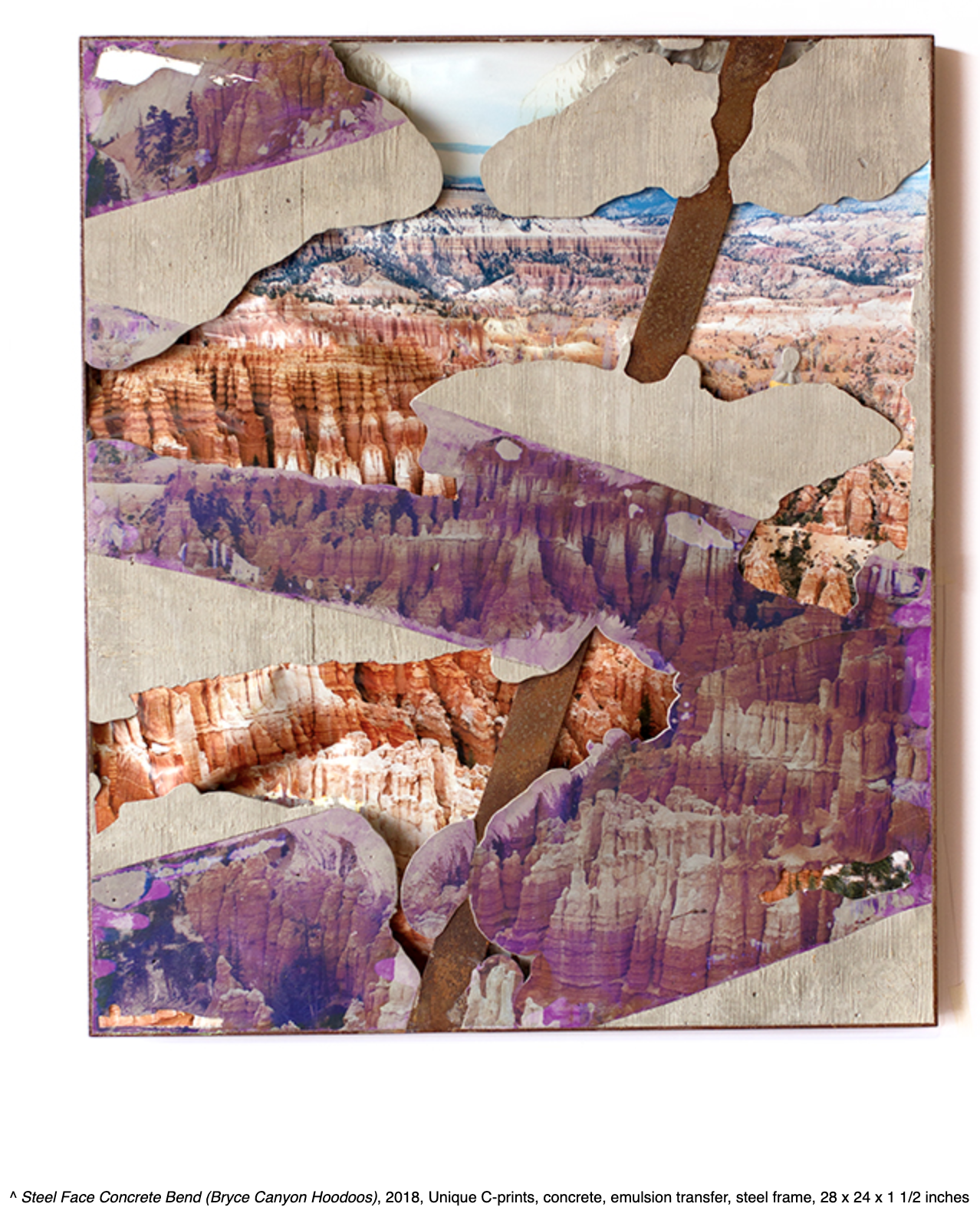
Anne Carson
Anne Carson is a Canadian poet I am across her work whilst researching the work of Keith Vaughan's figures and Alberto Giacometti's body sculptures. Not only I am looking at visual art, I'm further expanding my references into other mediums such as writing, Anne's work is something I want to further explore within my research.
Alberto Feijóo
A Spanish artist, who works in the areas of installation, collage, photography and video. Alberto's work is characterised by the use of construction and assembly of the image and its properties within that space. Materiality is at the forefront of his work, the ideas of humour and escape, seem to be evident in his image-making and installation process. The lack of traditional ways of framing and displaying work shows Alberto's interest with expression. I was interested in how Alberto works within these areas of visual art and how the use of construction and accumulation could manifest within a space and contribute to a sensory experience.
Exhibitions
London
During my travels to London at the start of the year, I went to see the 'Masculinities' exhibition at the Barbican Centre, this exhibition comprised 50 artists working across photography and film. The works showcased the ways in which masculinity has been socially constructed from the mid 20th century to the modern era. The works involve performative elements, documentary images, short loop videos to a longer piece of cinematic material. This exhibition was certainly an inspiration for me during the start of the year, seeing works from known artists that were on my radar for a while was a real insight into how they physically present and inform through their work.
Barbara Kasten
Jan McCullough
'Constructions'
Please use command - or +
to view material
Touching upon the process, here are more details that went into the production of making my video piece. ‘Fluid’ was rooted in the lack of intimacy through the restrictions imposed by the pandemic. Expanding upon themes which are found throughout my other body of work ‘Murmur’ 2019/20, within that show, I explored a facet within the constrained sense of self within the highly political climate which is my native Northern Ireland. Imposing this charged political landscape and speaking upon the themes of the ’Speak It Now Eat It’ hosted by Revision Festival event, I created a piece that poetically responded to my thoughts and feelings induced by the constraints of my familiar landscape.
A New Starting Point
Physical Notes
During the numerous weeks into the semester starting from mid-October, I found the project that I started during my time in KABK to become very tiresome. I felt there wasn't the room for me to expand and develop my interests such as sculptural interventions or installations that create a sense of emotion with the viewer. This is a selection of ideas that were brewing, artists that I have mentioned in the surrounding boxes which were re-found within this document. I started to explore ways in which I could construct and deconstruct the understanding of the image and that is shown through the variety of experiments on the next array of pages. This document also showcased the range of influences that I was exploring in terms of a cultural role within the work that I wanted to make, this is shown through my use of the curator Anna-Kasisa Rastenberger, Anna-kaisa had a presentation via zoom (hosted by SPBH), these ideas of the curational in the 21st century, played on my mind, and open the needed understanding that I wanted to take my work further than just the physical image, but a sensory experience, with a variety of videos, sculptural elements, yet still harking to the photographic medium.

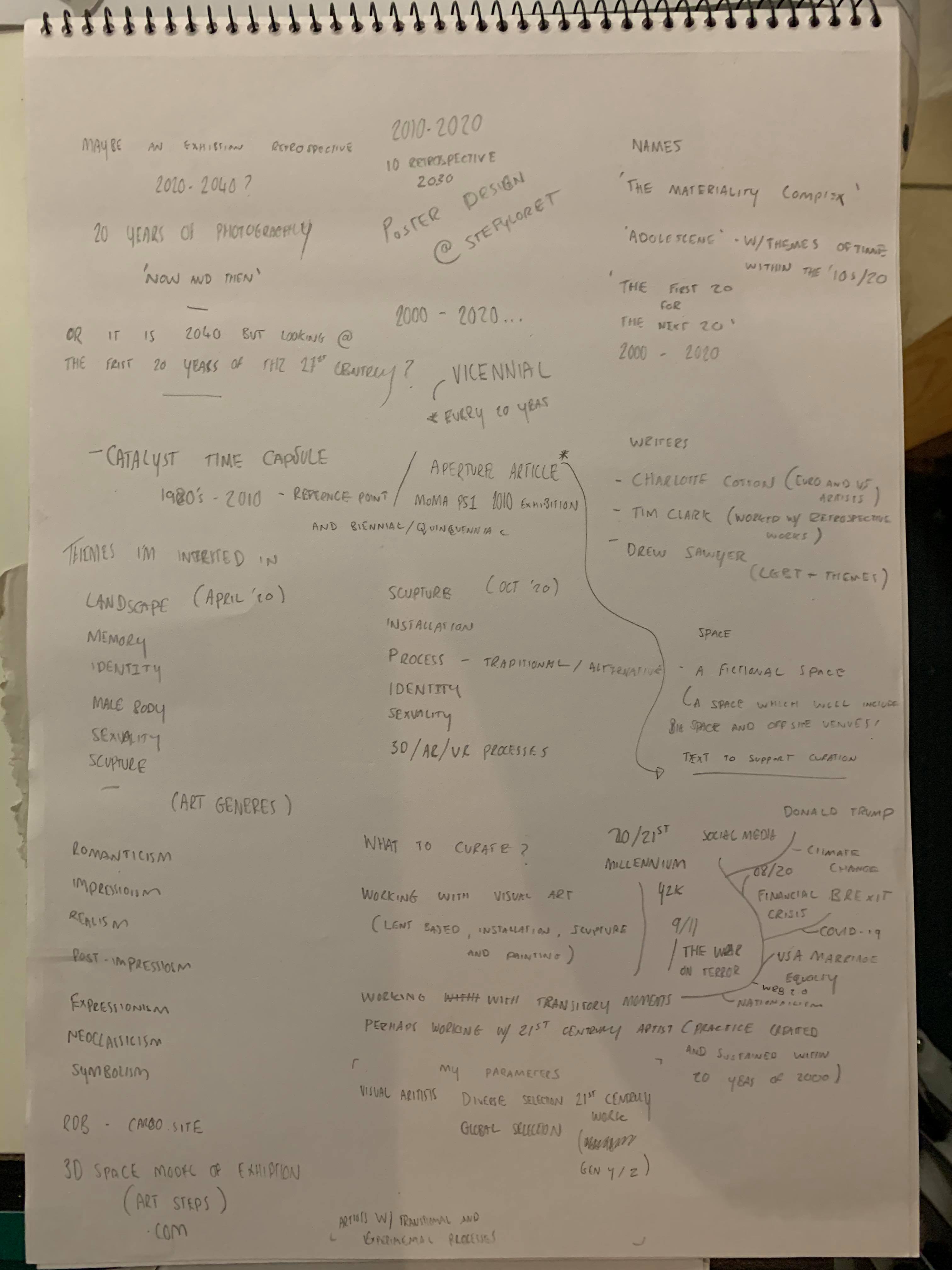
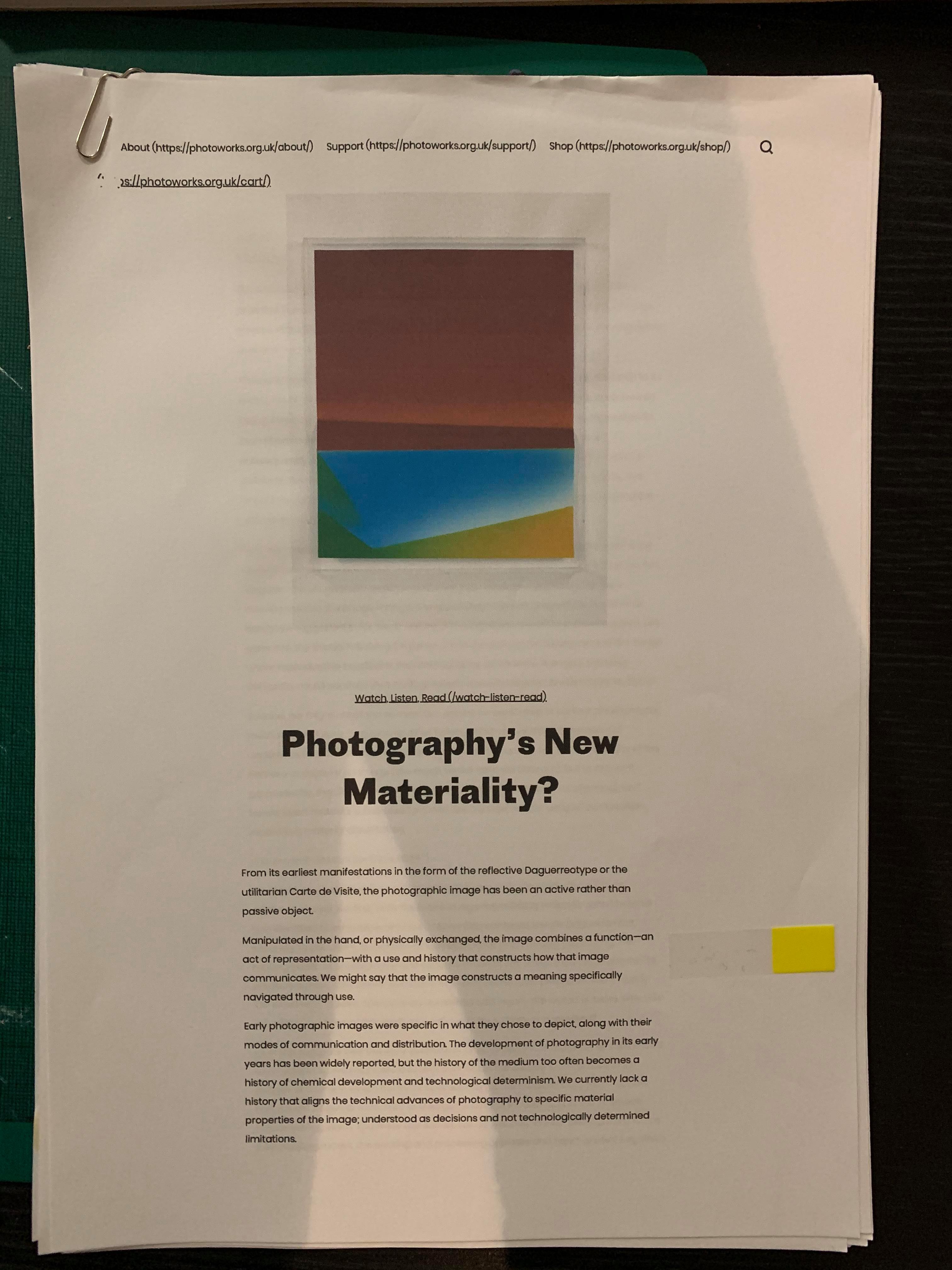
Archive 2016-18
Study of Hands
Before I started the university course that Ulster I was very fascinated with the hand. it has been something that I have explored throughout a wide array within my work, I haven't properly, fully investigated the meaning of this within my work. As it has been a theme spanning 4+ years, the use of gesture and fragility has been an interest of mine for a number of years and this has manifested in these images. so taking the onboard notion of the Hand and associations of performativity I really want to include this gesture, within the current work that I am making.
Patrick Mcnabb
American based visual artist, Patrick Mcnabb explores the role and representation of male queerness through deconstructing the image with sculptural elements at play. His recent in New York titled 'Contact prints', 2019 showcases a variety of explicit acts with queer individuals. These acts have been fragmented and deconstructed, and intertwined with the borders of touch and sense.
Nico Krijno
South African based artist works within the boundaries of performativity photography sculpture and within that, the deconstruction of the physical form of the image through various digital and analogue techniques he and employees the visual language of the information age into his work, demonstrating I need for the push of the traditional still life aesthetic.
Guanyu Xu
Chinese based artist Guanyu Xu, works within photography and his work is characterised by the intervention of the exploration of history and identity within a queer lens. His recent temporarily Censored Home (2018-2019), took him a photographic installation by using his parents home as a way of queering the space which is a such a taboo in Chinese culture.
Luis Alberto Rodriguez
Luis Alberto brings his background as a professional dancer to his work as a photographer through the exploration of the human body. Luis raises uncertainty, and a sense of dizziness when the figures are positioned in odd and peculiar movements they become sculpturally charged. I was interested in his work for a number of months, and I have returned to engage once again with his image-making process.
Collier Schorr / Andrew Wyeth
Collier Schorr is an American based artist, who works within the documentary and fictional elements of photography. how work navigates the identity politics and questions with selfhood, Collier's work further works with elements of appropriation and collage as a way of unpacking a subject and representation of the said subject, namely themes of queer or LGBTQ+ are evident within Collier's process. The use of appropriation as I mention is found within these pieces of work, brought on by the American painter Andrew Wyeth. Andrew's work is known for its domestic realism with Interiors and exteriors of industrial buildings within the American countryside of the 1930's/40s. the idea of the domestic and quietness of the space is evident within Andrew's work, this link with each artist, was extremely intriguing for me to research and further engage with the intertextuality.
Notebook
Alberto Feijóo
Here is a selection of a few notes I made in my notebook, during a research period, exploring Alberto's work. Coming across his work at the Photographers Gallery in London in February 2020, I found an interview that explores his process and works within the show, here I have highlighted a few quotes.
Alberto Giacometti
a Swiss sculptor and painter, as well as a printmaker, works primarily in Cubism and surrealism. His work is characterised by the body and the physical psychological questions of the human condition, such as the existential questions and debates with the digger and Influence environment. I was particularly drawn to his work with the use of this Cubism and surrealist elements, intertwining with the painter Keith Vaughan, I feel that there was a connection in my research between the painting and sculptural aspects of the body. The Range in mediums and the tonality off his work was very striking to me, especially with my interests within sculpture and photography.
Aliki Braine / Roseanne Lynch
Aliki Braine a french artist who works within the parameters of the physical image, Aliki explores the notion of what photography is, working within the area of post-photography. Her use of physically manipulating the negative demonstrates the area of experimentation that I am seeking to work in.
Roseanne Lynch, an Irish artist working in the same scope to Akili, her use of disassembling of the photographic image or interrupting the process showcases the range of what is can be called a photographic, her exploration of photography as a structure and form is what I find most interesting.
Letha Wilson
American born and based artist Letha Wilson, works within the material aspects of photography and sculpture, she is rooting in expanding the perceive dimensions within the visual mediums of both photography and sculpture. What attracted me to her work was the use of materials and the resolution in which she installs the work in a particular space, often playing within the space to create site-specific works. Letha's has expanded the ways in which I could use alternative materials in conjunction with in photography particularly in the physicals aspects of the medium.
Harvey Regan
Working between the boundaries of photography and sculpture Harvey works with the material nature of the world. Using site-specific methods he works with a range of technology primarily film and alternative medium. recently I have been intrigued with the rounds of the materiality of sculpture, and how duality can be created through the use of certain hard/soft materials when making a piece of work, non-related to photography. The use of concrete curtains worth of huge interest to me and have inspired me to pursue a way of engaging with this technique.
Andrey Bogush
Russian born artist, Andrey Bogush works in a diverse range of visual artistic mediums, primarily in photography sculpture and textile.his work is often characterized by the use of materiality and subject exploring data and new media within the 21st-century landscape of technology and reproduction of representation. working with fragmented symmetry from his own archive and using software he combined elements off analogue and digital, he has greatly intrigued me in how photography could further expanded upon in a digital yet physical way.
Thomas Moen
A recent graduate from the RCA photo programme, I was very intrigued by his process, as materiality and abstraction seemed present in his work. So I reached out to him via email to see what he could say to expand upon his practice
Helena Hamilton
In sculpture and installation, Helena Hamilton works primarily using materials of everyday objects. Her work's core element is to explore the expressive effects with performative. She demonstrates the themes of everyday life and simplicity through repetition, using them to build atmospheres and immersive environments. This use of atmosphere is central to her work, and within my project, this very atmosphere is what I want to achieve.
Blake Lewis
An American artist working within the realms of photography and alternative processes. Blake explores a variety of photographic techniques such as photograms and other processes to create complex forms and structures within his alternate approach to image-making. A selection of his work is presented here, but a wide variety of his work has been very fascinating within how I can approach this level of experimentation of form and abstraction.
Ronan McCrea
Irish artist Ronan McCrea works primarily in moving image, I've seen his work in two separate gallery spaces (Belfast & Dublin), each time, there is a sense of awe with his work. Ronan brings together various historical resonances and practices into his works, his use of 16mm/8mm techniques was very intriguing for me to explore the medium within moving image.
Exhibitions
London
'With Monochrome Eyes' was an exhibition curated by Tom Lovelace, and was shown in Borough Road Gallery. I am a huge admirer of Tom's work and especially his curatorial work he has done. This exhibition was no expectation, the range of artists depict artists working within the medium of photographic, but also heavily considering the aspects of materiality within their process, resulting in a group of artists working through the physical aspects of the print and well as its contents.
Carmen Winant
Carmen Winant, artist and writer, uses text, image and sculpture to challenge conventional female body assumptions. In order to empower feminine agency, Winant addresses and introduces the patriarchal ideologies at play within popular society by actively dealing with topics such as eroticism and censorship. These images were from the SPBH master classes that I attended during the start of the semester.
Jan McCullough
Ps2 residency 2019
Exploring more of Jan's work, i came across a series o work that Jan made during her time at Ps2 - a art organisation that hold artist redencies and accoumcadte studio spaces. Jans residency produced a series of cut-up prints from her archive combining the elements of photography and sculpture. These own constructions have made me wanted to expand the areas in which photography is situated.
giancarlo montes santangelo
improvising sight lines
Giancarlo employs photography as a poetic notion and as a medium to experiment within the traditional documentary mode. Giancarlo's use of cutups and abstractions within his layered composition, invite intrigue into the thought process through which Giancarlo introduces us to his own body, not explicitly featuring any graphic details but rather full touches of self.
Not here. A queer anthology of loneliness
Richard Dodwell
A queer anthology of loneliness combines 31 artists that explore the themes of queerness through the lens of distance and solitude. Through a range of artist mediums each artist displays their notion of loneliness. I couldn't find much information as the book was limited to 3 screenshots, but it would a book that I would tend to buy in the coming months to benefit my own understanding of the theme.
Sol Lewitt
Folds and Rips
I have been interested in the work of Sol Lewitt's work since last summer, Sol use of instructural art and minimalist techniques in art-making was an area that I wanted to explore and translate to the photographic. Sol's physical and the approach to the intervention of making and crafting was a great reference when constructing my own physical works of playful art.
Jan McCullough
Tricks of the Trade
During the Winter break, I travelled up to Derry city to see 'Ticks of the Trade' by Jan McCullough at the CCA Derry-Londonderry. I have known Jan's work for a number of years seeing the show at the CCA opened up new possibilities of incorporating physical sculptural elements that have a departure point from photography. Here are few image examples of the show and the work that I found most intriguing, as well as video elements.
-
Extract from the show
The sculptures in Tricks of the Trade are made of everyday building materials and wood and metal offcuts and are painted in the colour palettes found on the machinery, dust covers, walls and floors of the spaces in Jan McCullough’s photographs. Their finishes and forms echo the accentuated edges and glossy surfaces captured in the artist’s camera flash; the way they are arranged is reminiscent of her sketchbook collages.
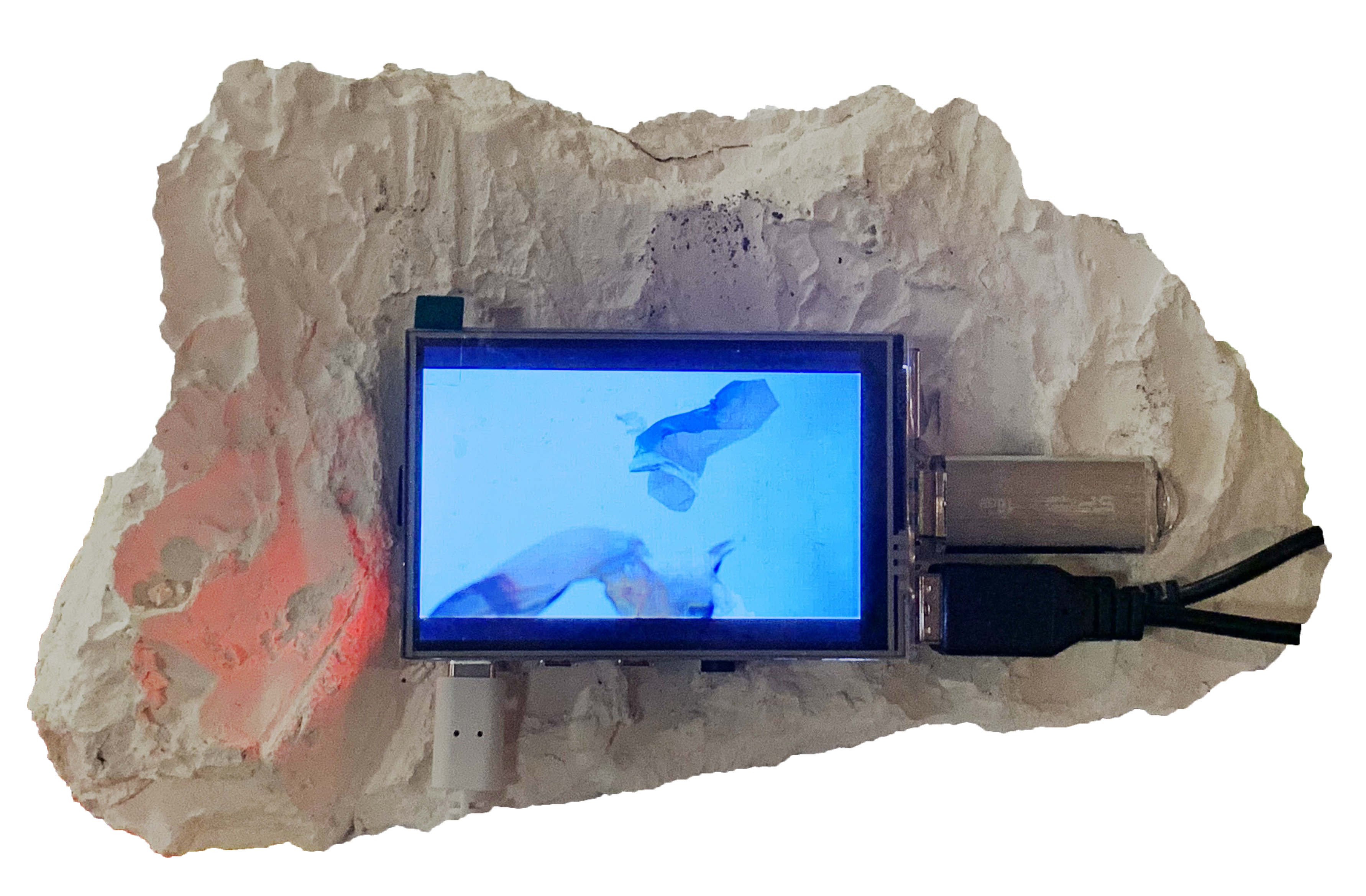

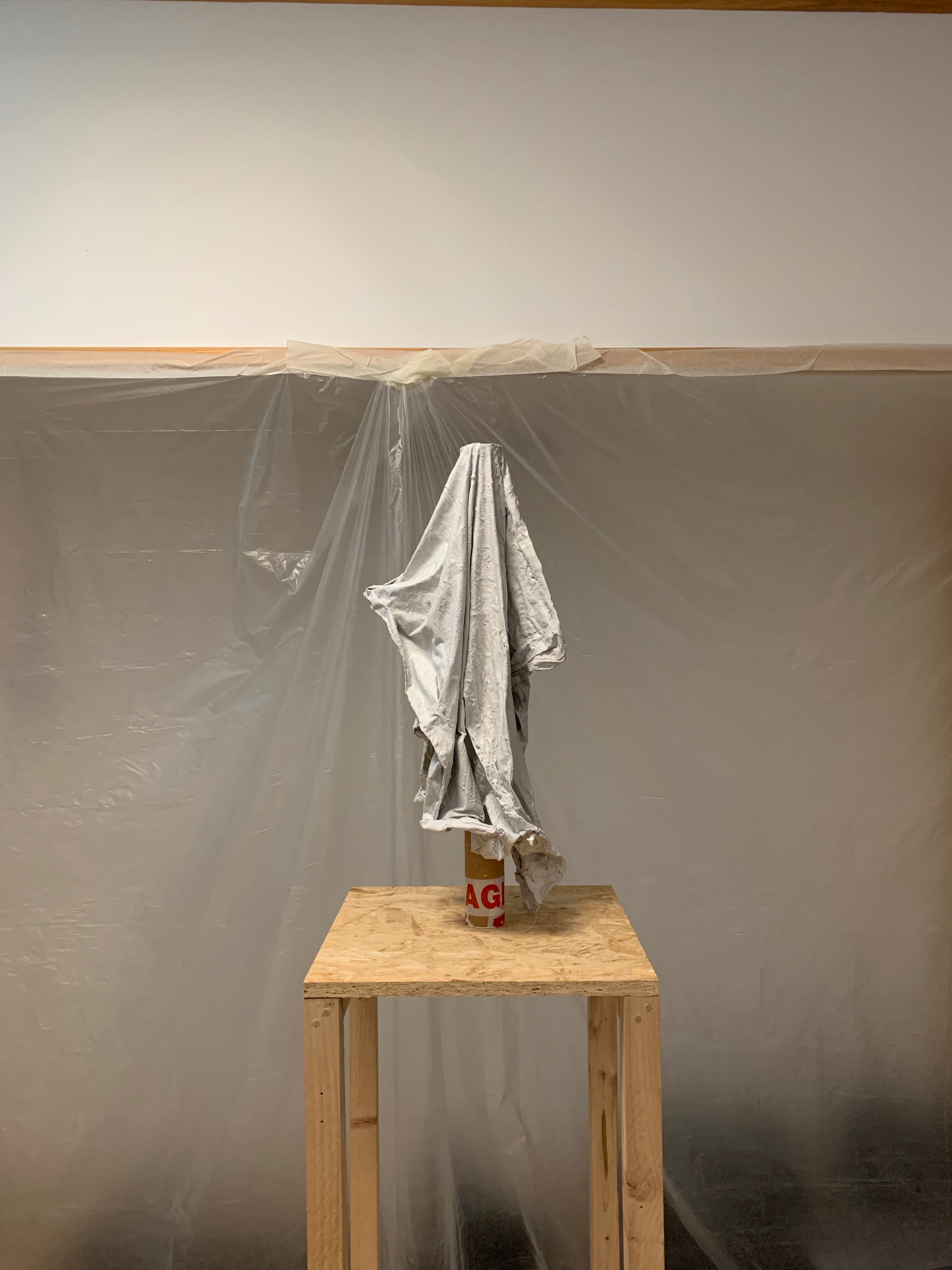
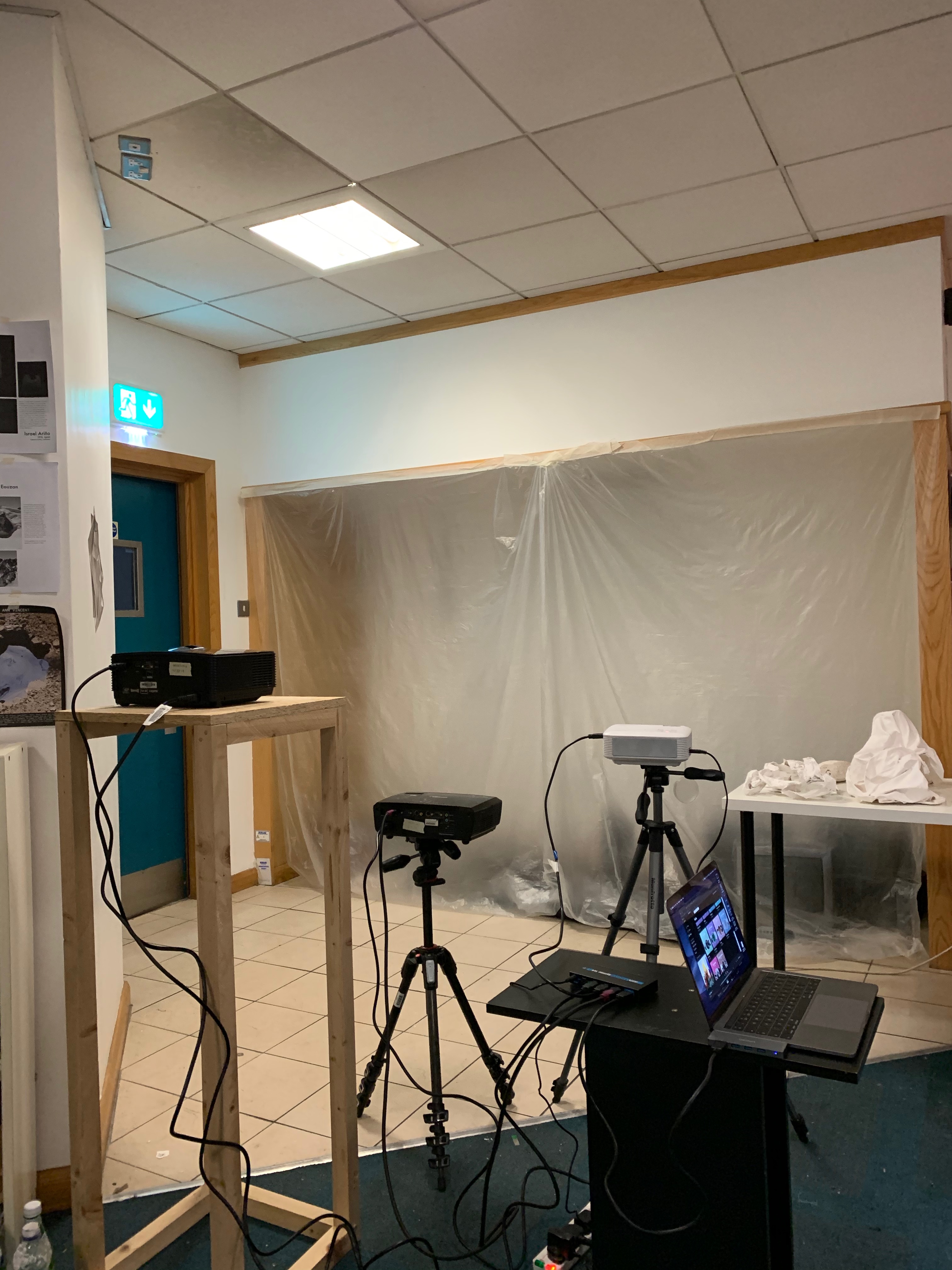
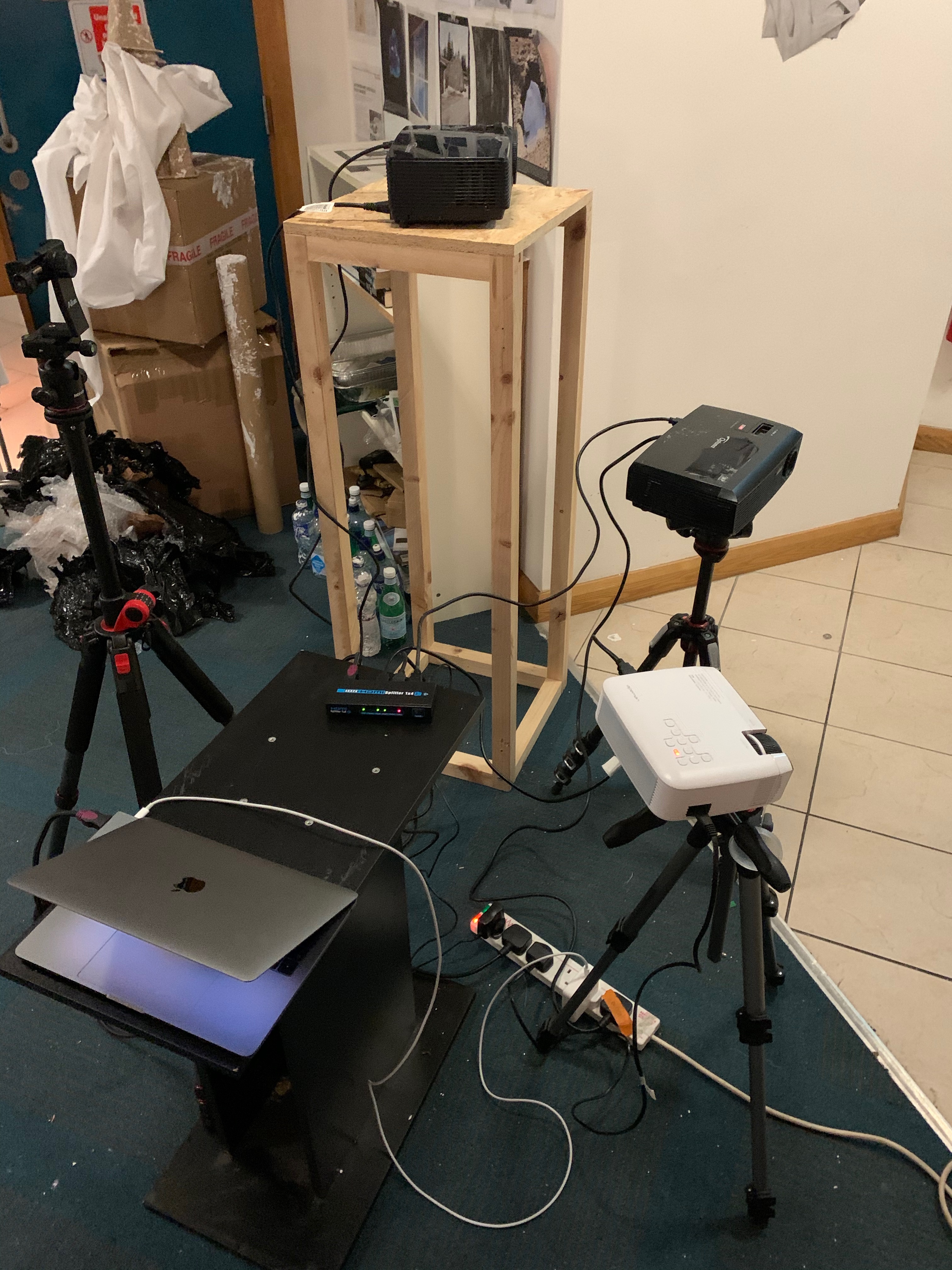
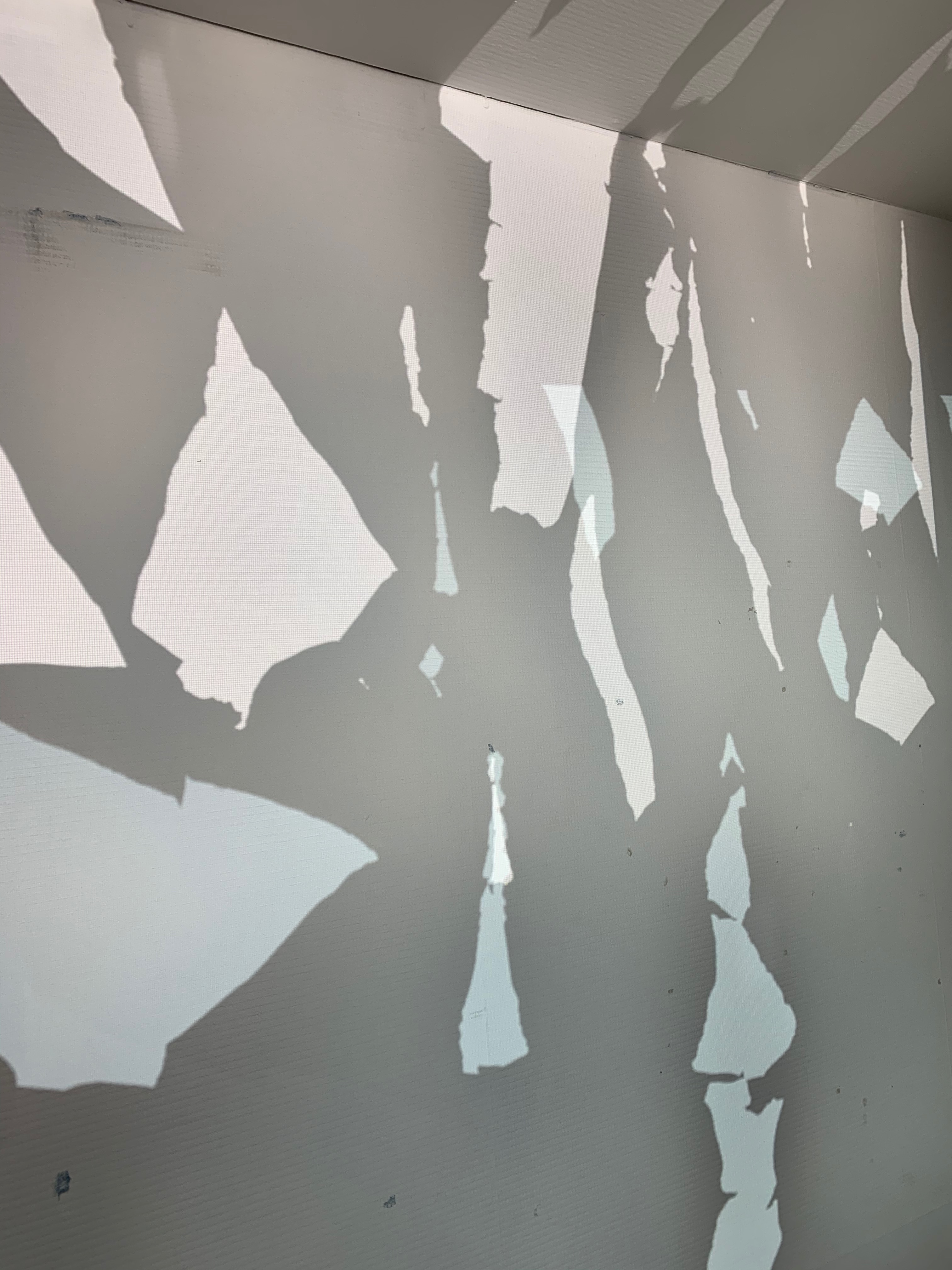

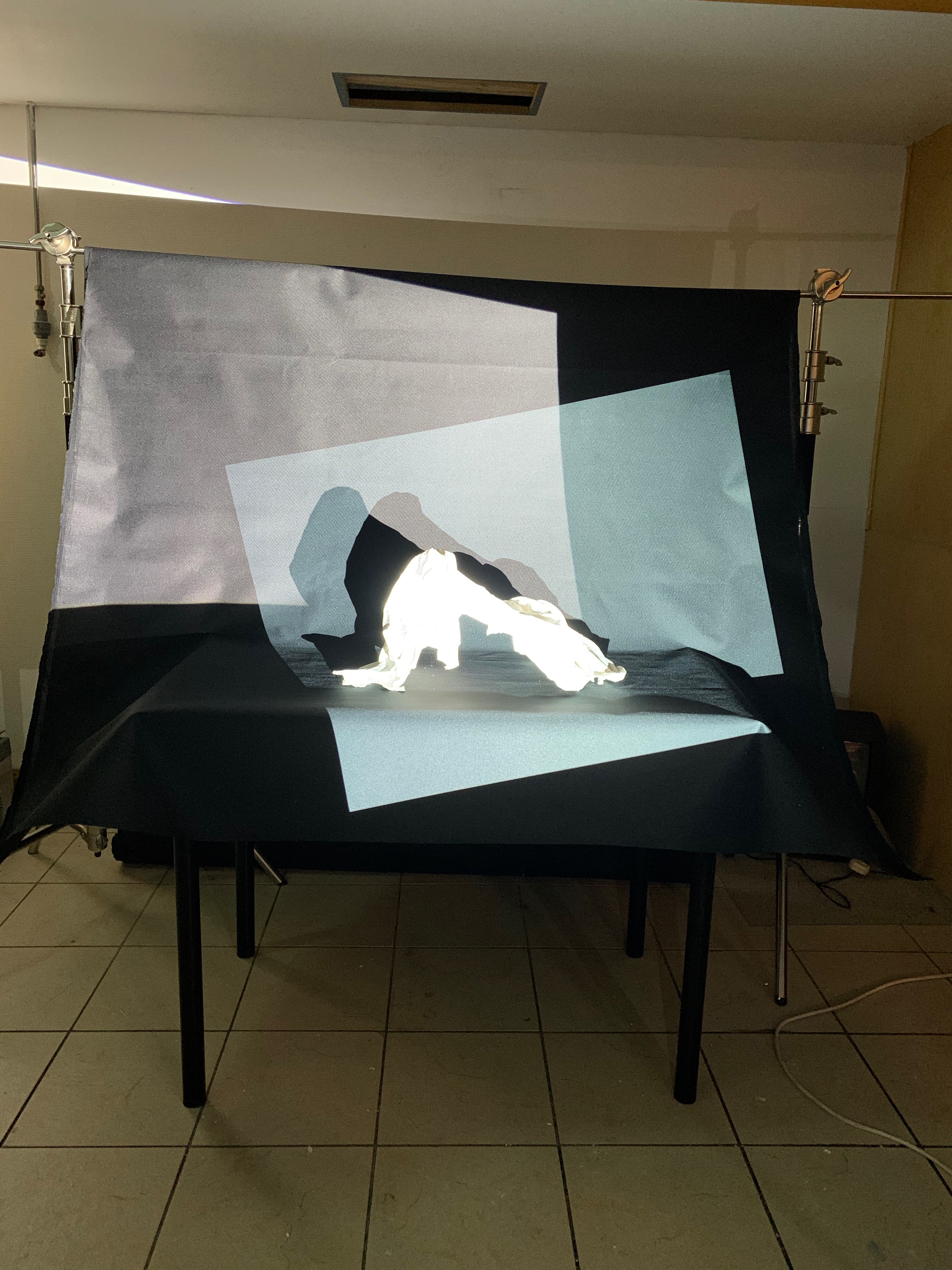



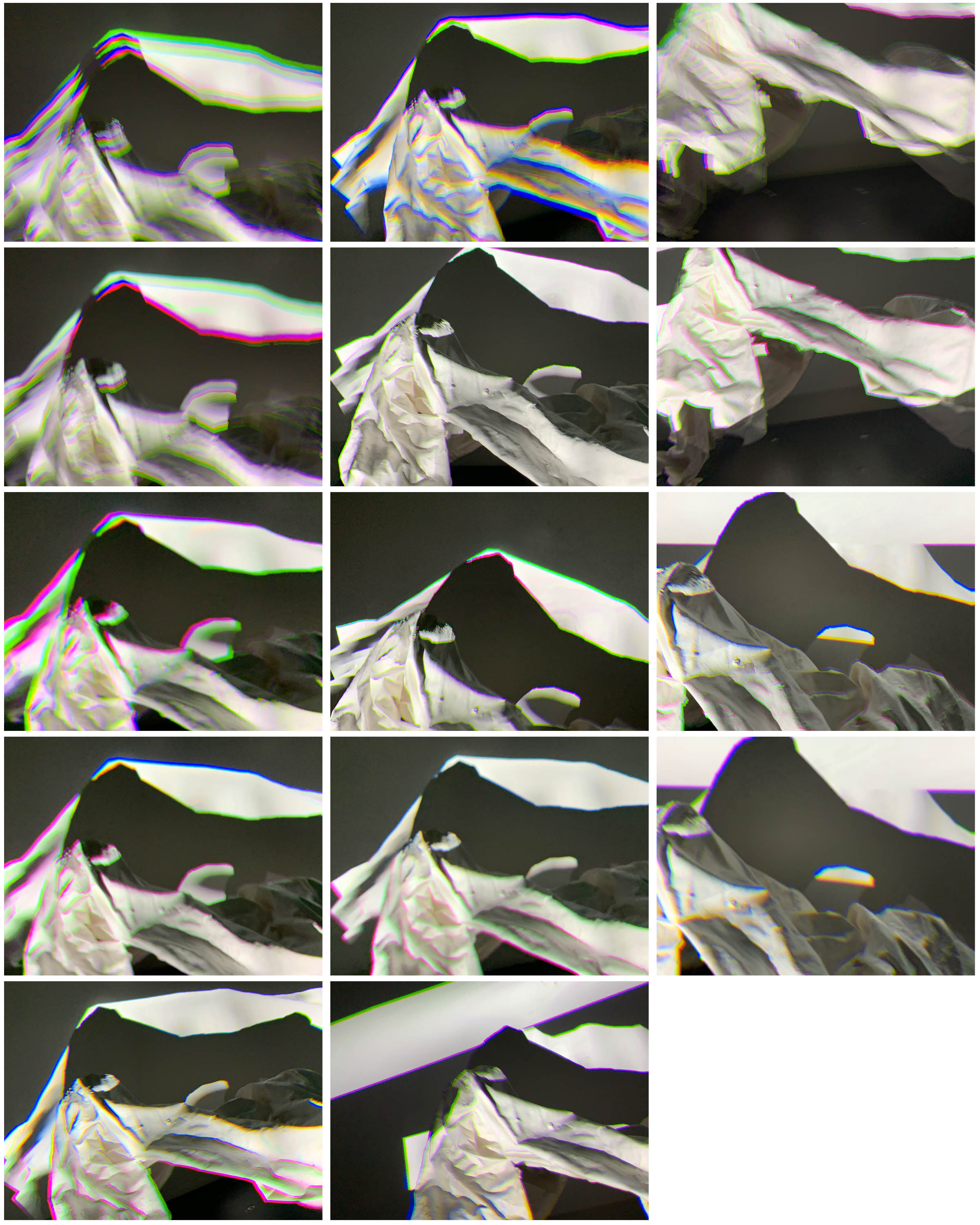

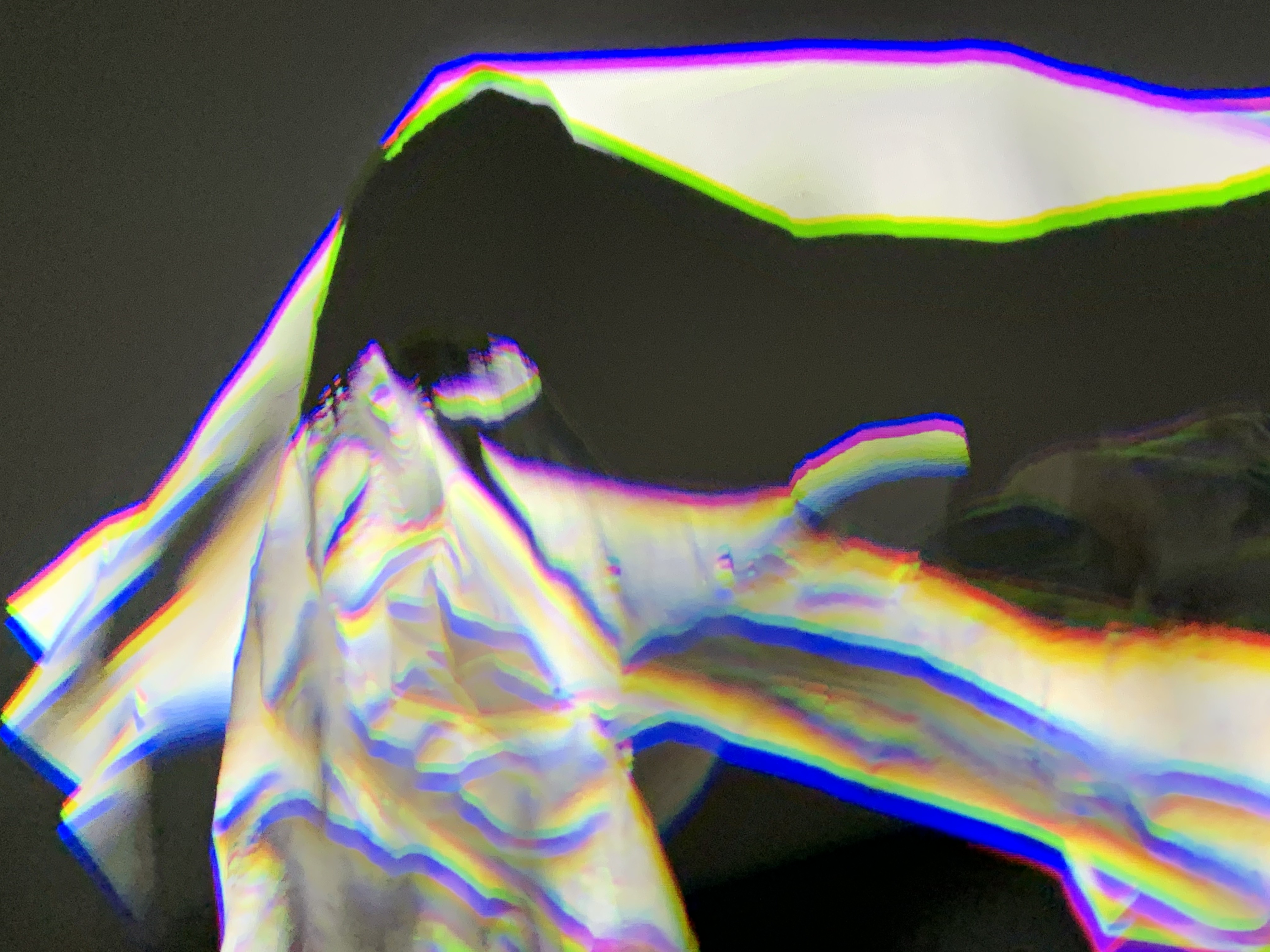
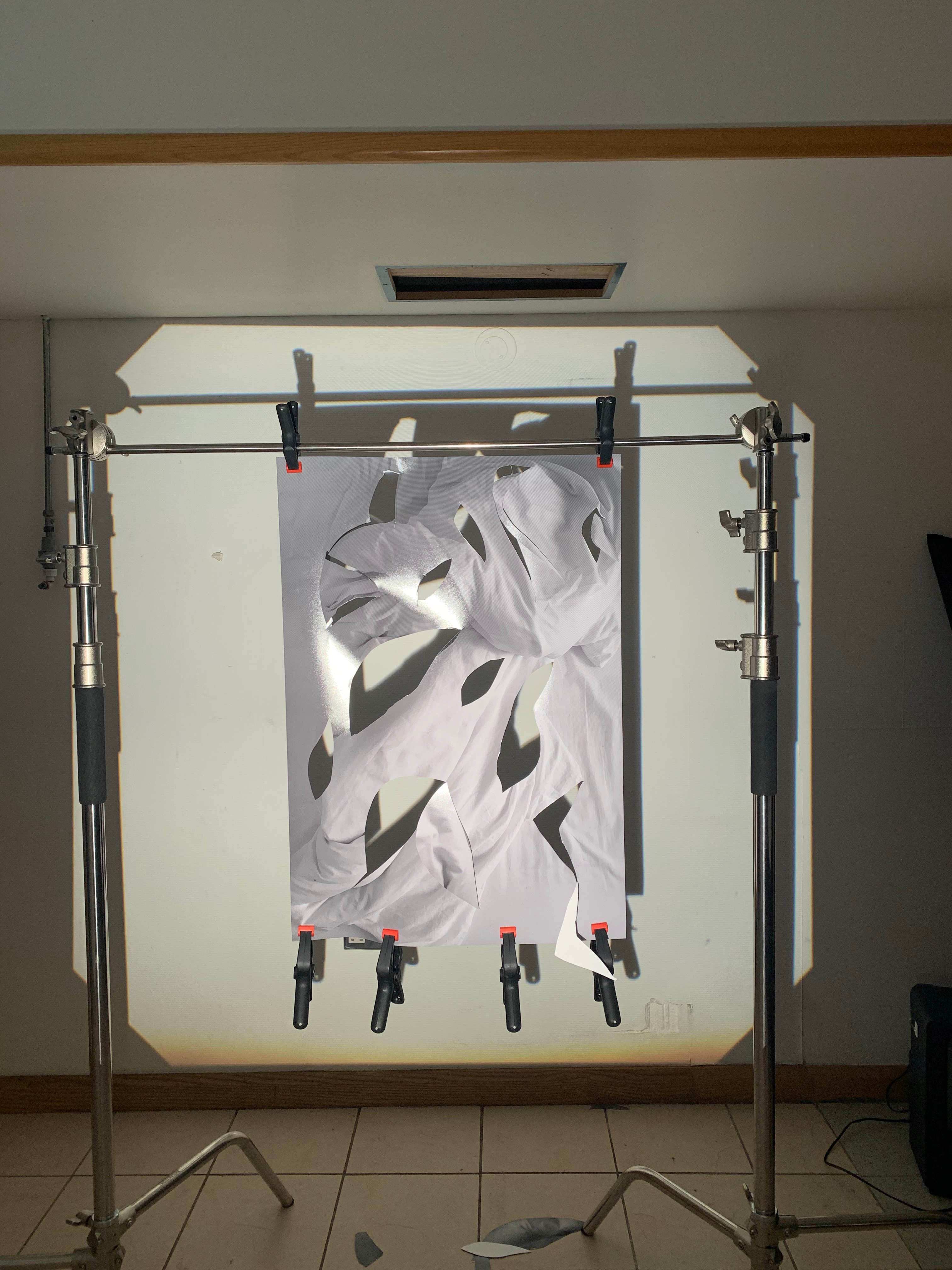

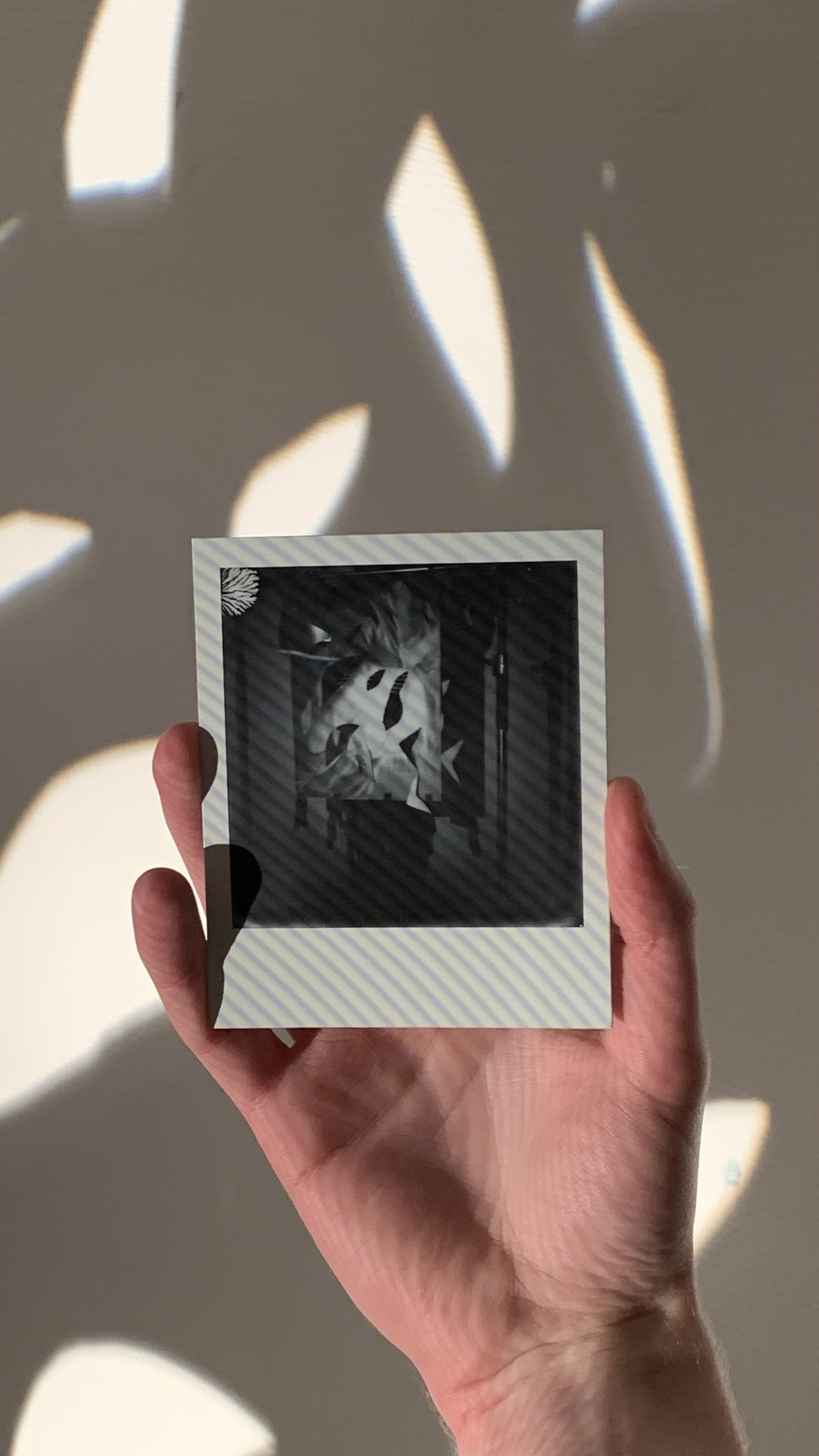
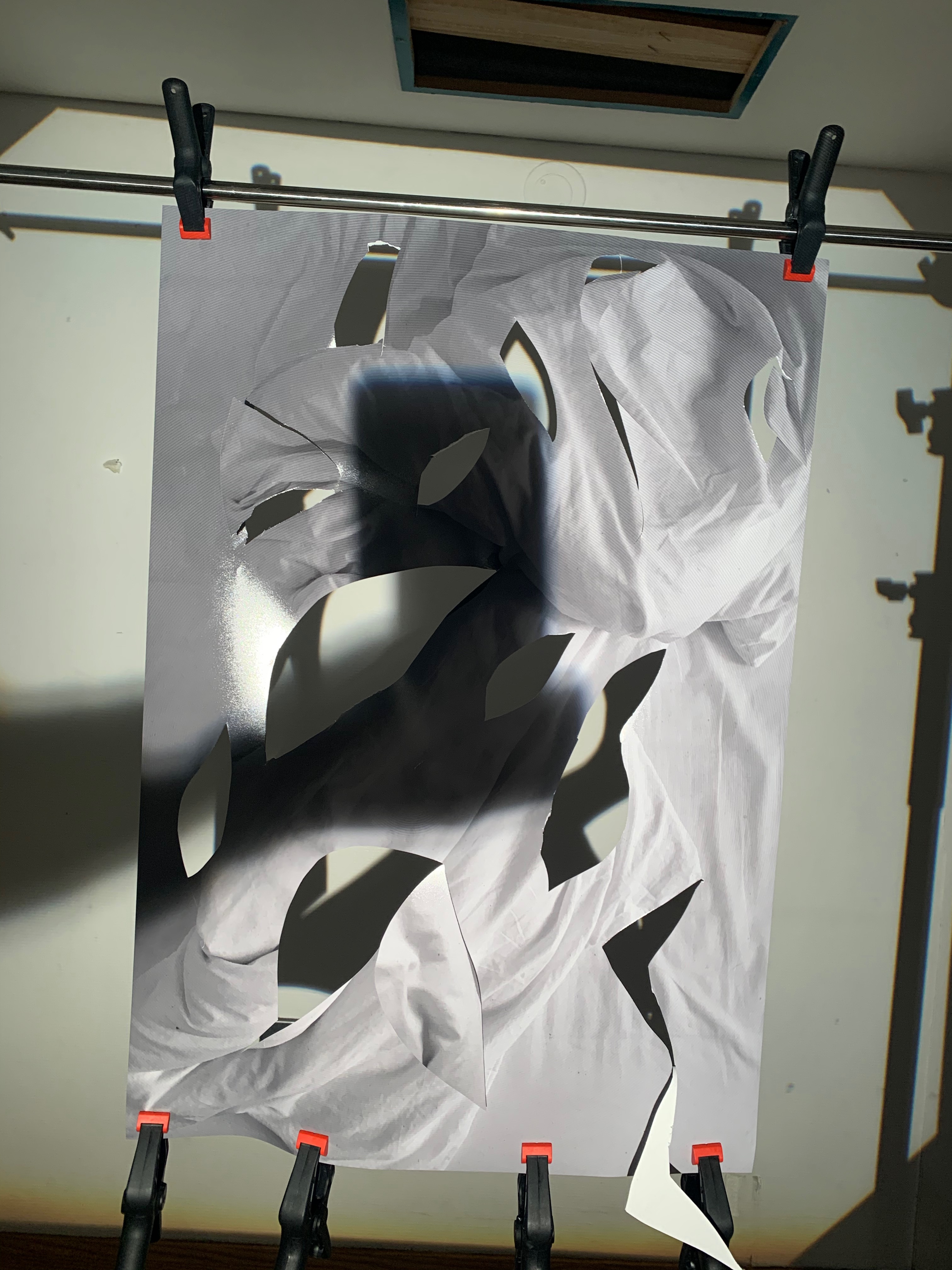
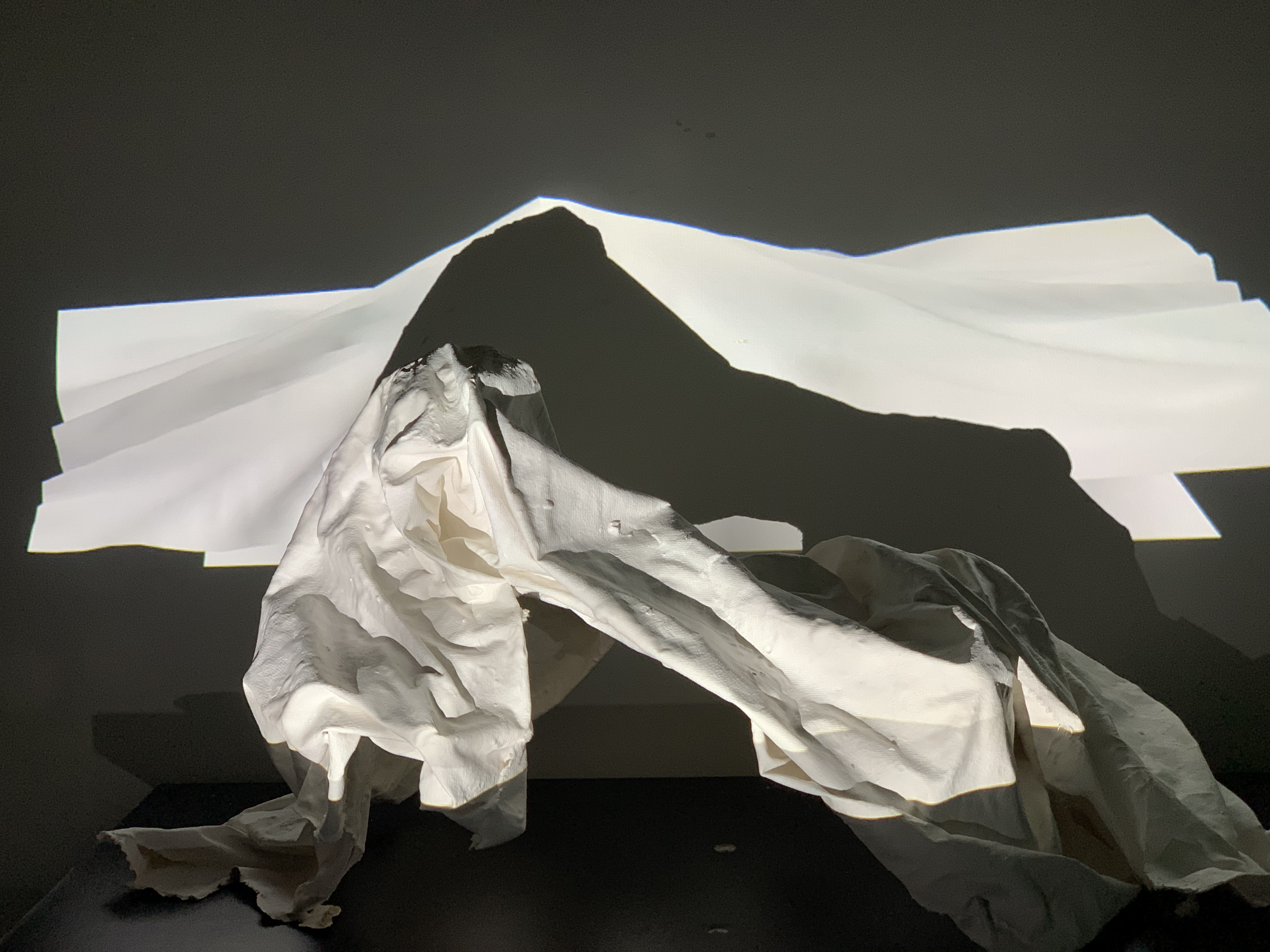
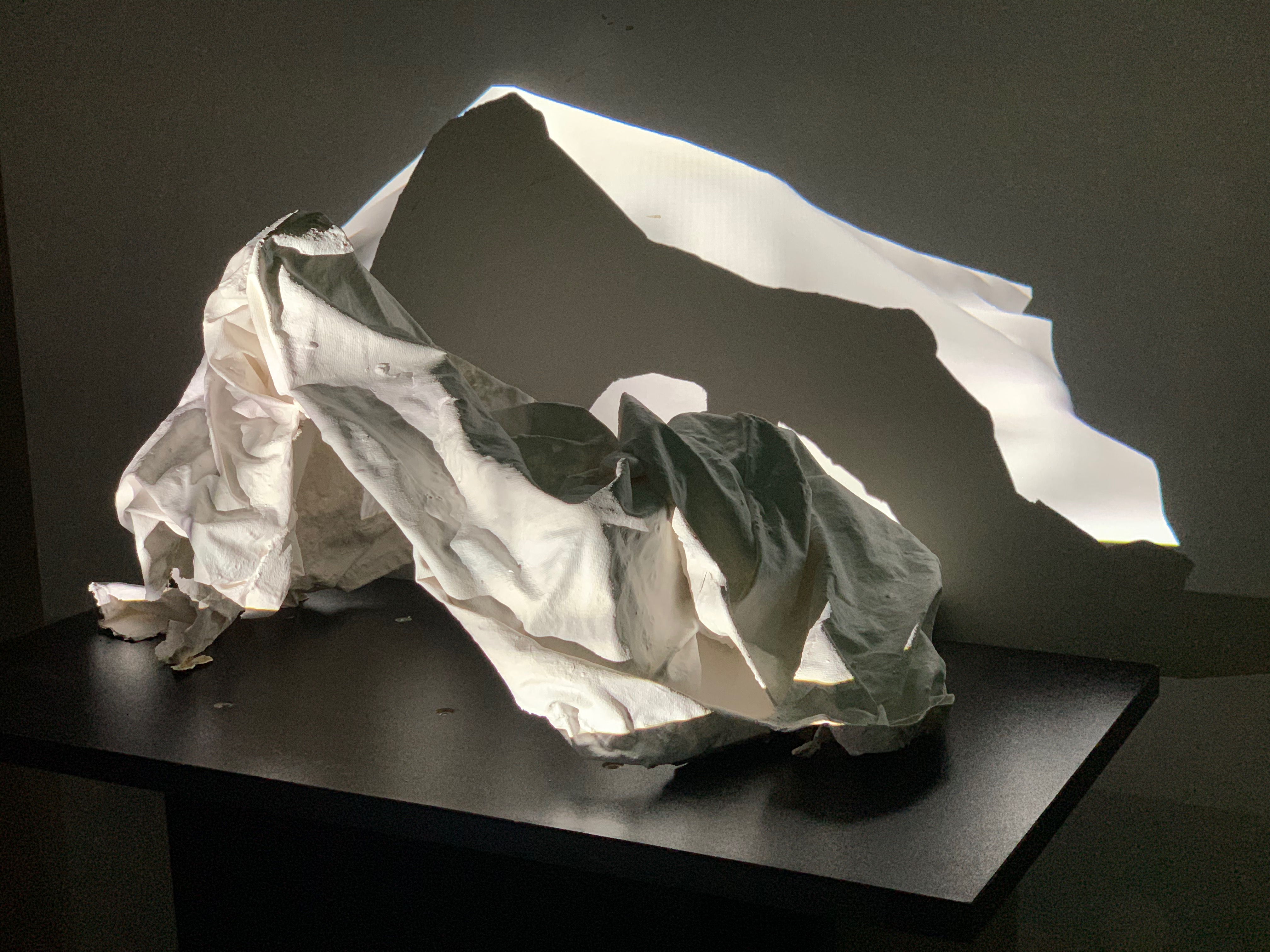

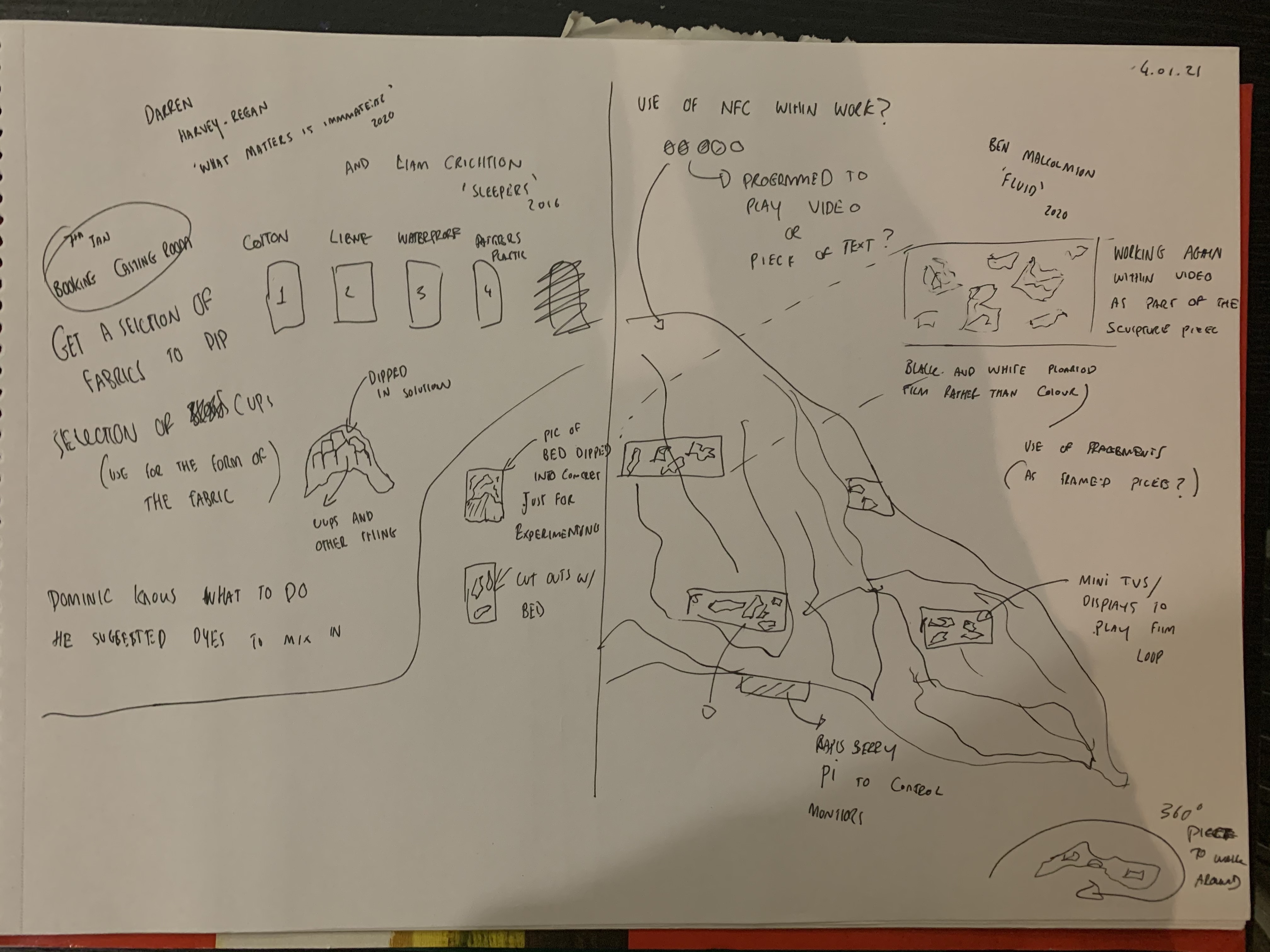
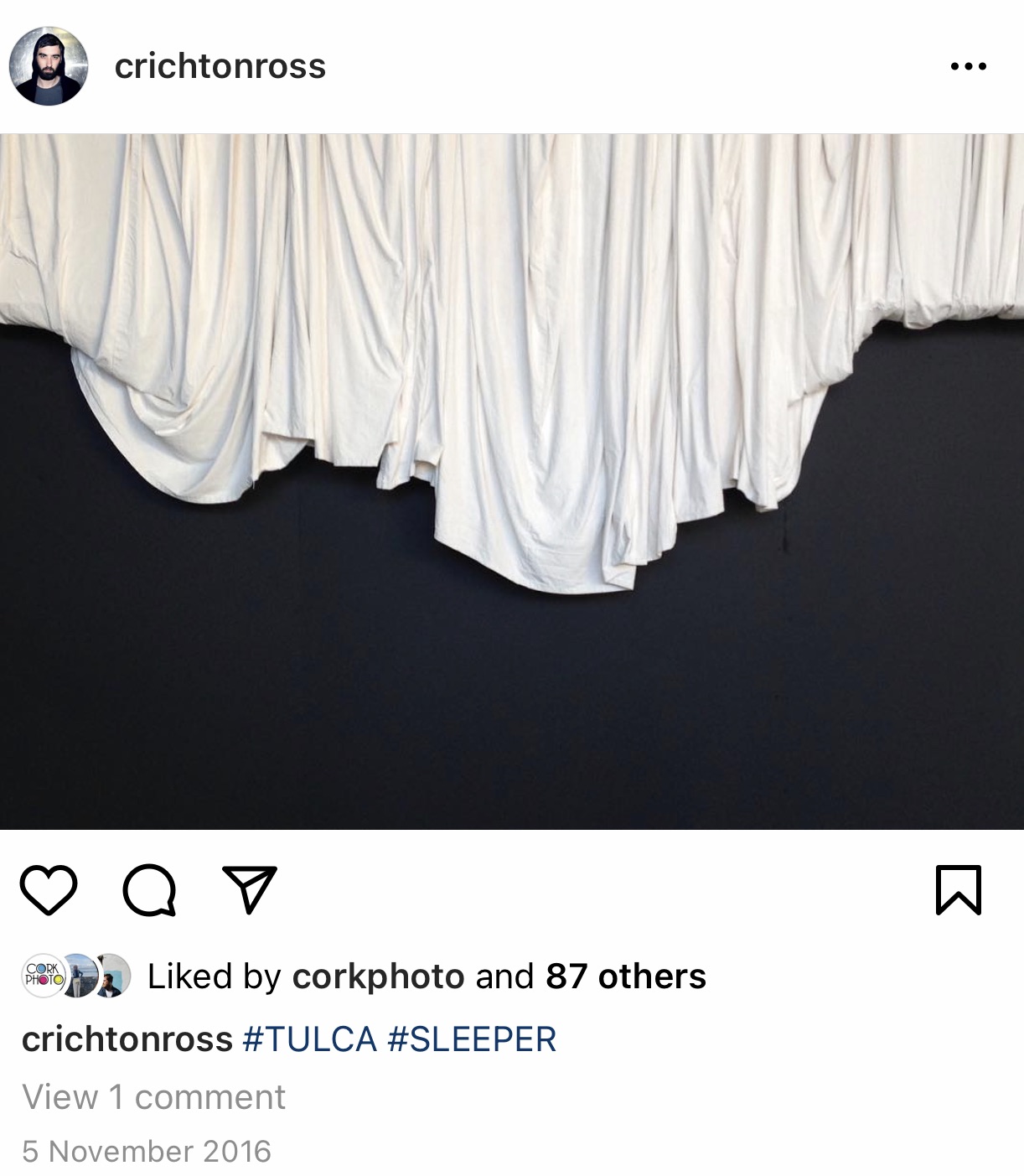
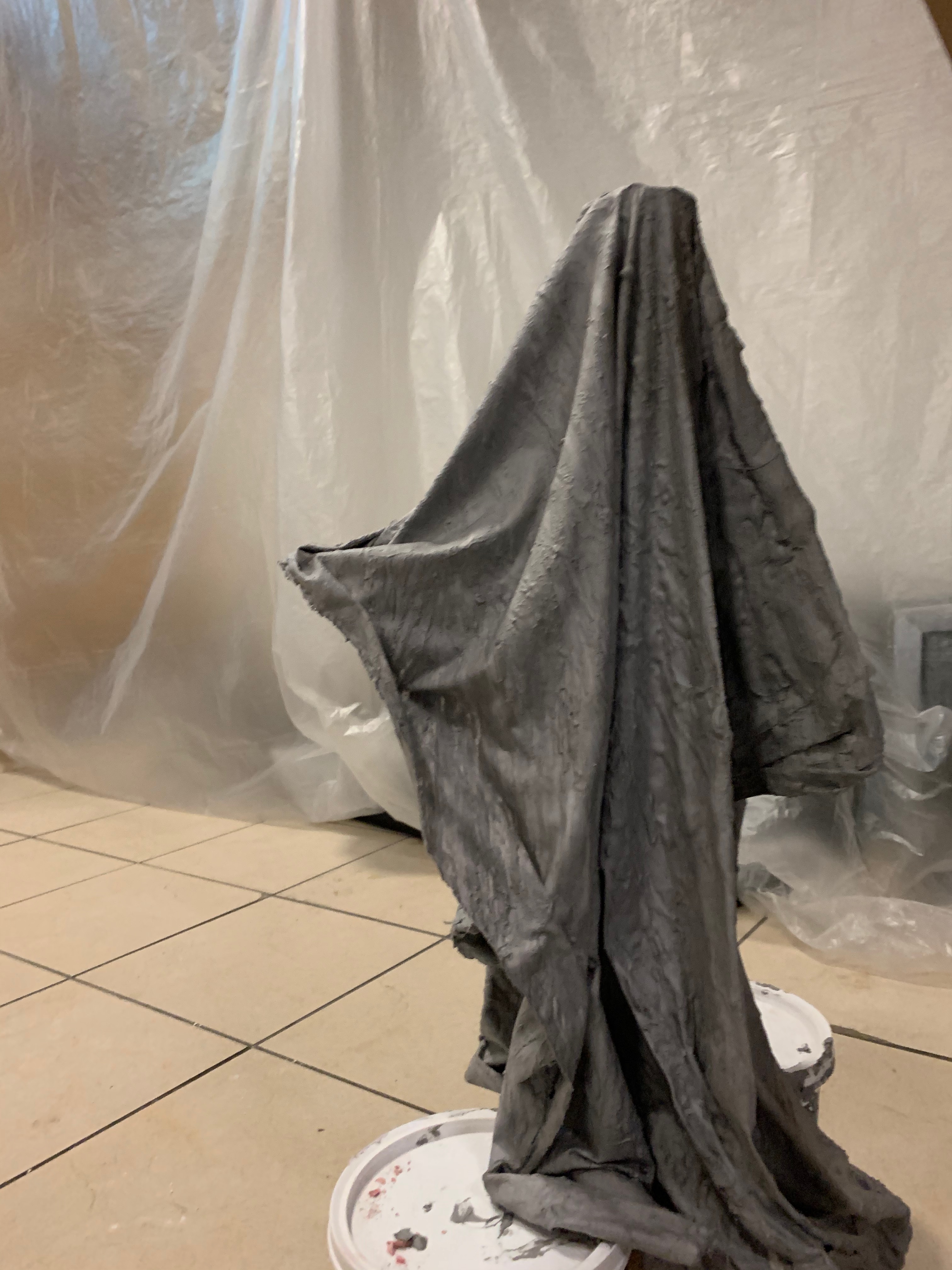
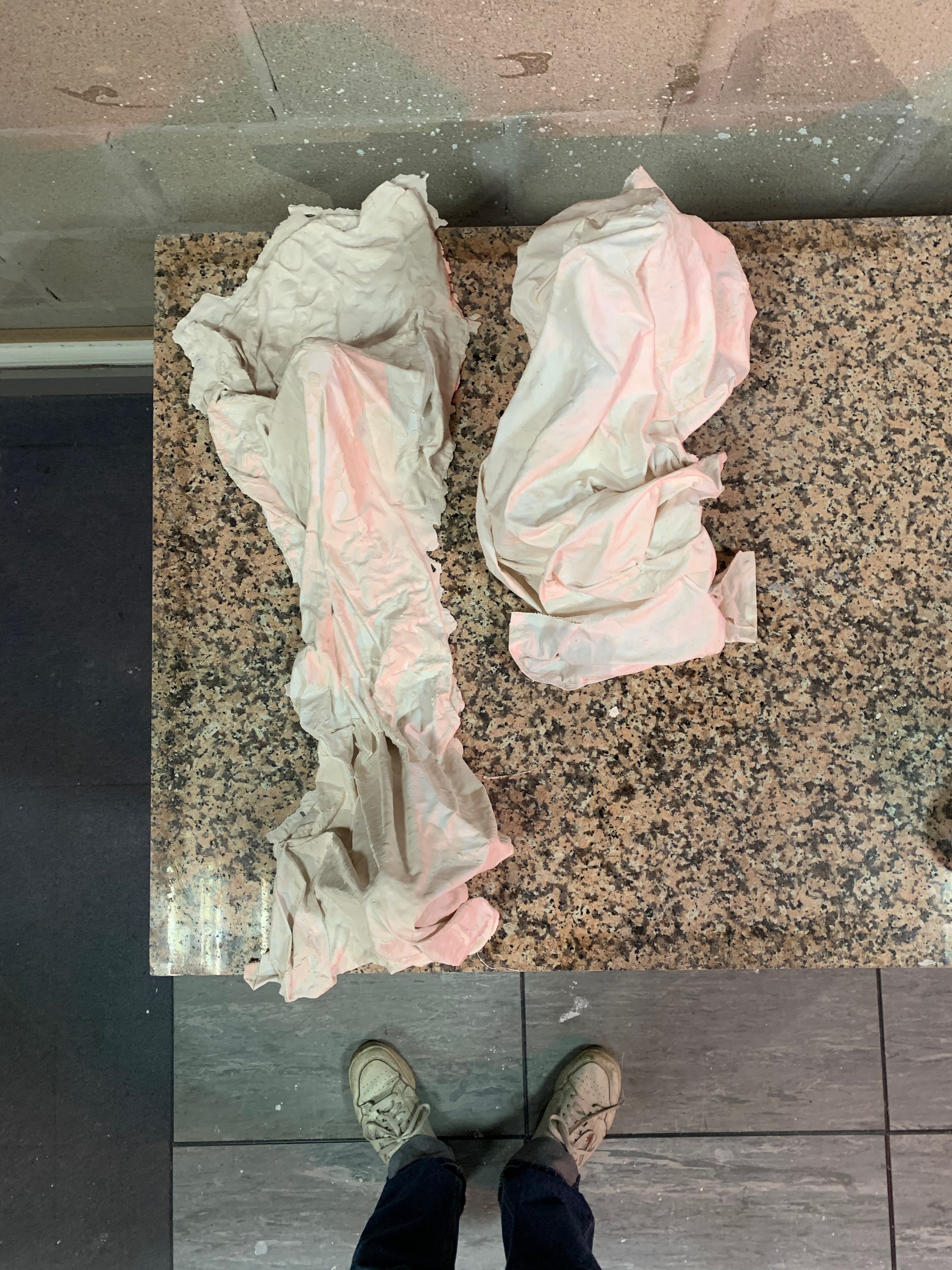



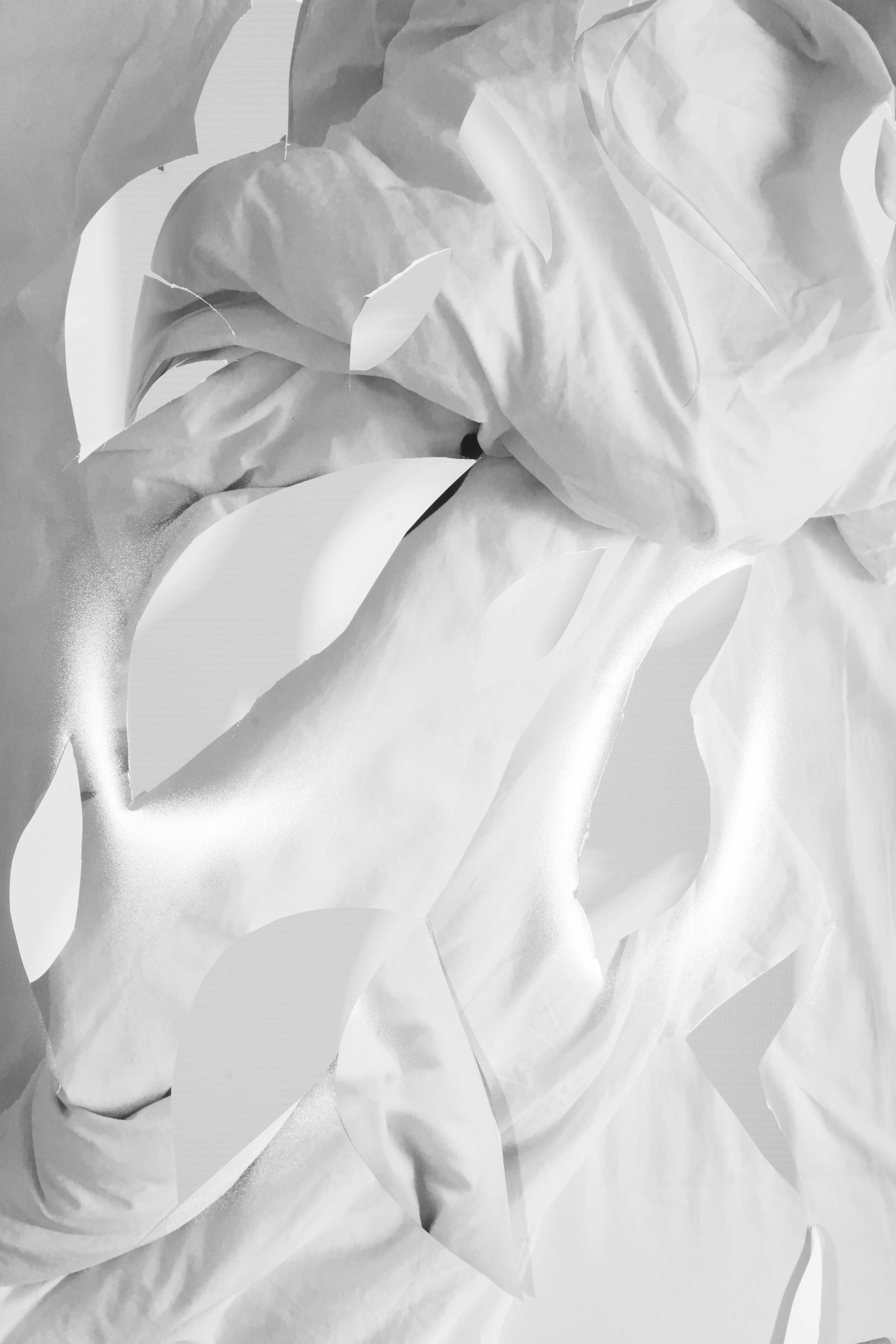
Scrapbook 4.01.21
During the start of the new year and I was feeling that my project was going in the direction of a more physical sculpture route. Taking inspiration from a lot of artists working within the medium of sculpture, I wanted to create a piece that incorporated elements of touch and intimacy. I had bold ideas of including elements of new technology such as mico screens that were to be embedded within the piece, the image demonstrates those ideas and how possible I could execute them.
Plaster Making
During the start of the new year, I utilise the facilities at my studio space at Flax Art Studios. Flax has workshops that can be used to create moulds and work with plaster material. With the help of my studio partner Dominic - who is native to the medium, Dominic showed me how to work with the material and how best to capture what I wanted to create. Using bedsheets, I wanted to create a bodily form within the sheets. These videos showcase the process of what we were creating.
Projector Installation w/ Scupltures
Lacking the space to work within the plaster workshop, I took to explore ways of working with the sculptures that I already created within my studio space. Constructing a framework of tripods and projectors, I was interested in the ways of how this framework or skeleton could act within the space how the relationship with video and material could interact with the person. The following video is a short performance piece of me nativing this space with the work that I made and how I responded with my own body in response to the material and video being projected.
Video Forms (material studies)
This short clip, shows the deconstruction process of me taking down the material that was in my studio space. Playing with the use of touch and the material I wanted to pick up the noise of the fabric and understand how the use of audio can impact upon the viewer. The blank screens show the difference in brightness with each projections.
Sculpture and Video
The selection of image and video clips showcase the array of experiments I made with the sculptures that I created during the start of the year. With no access to the workshop, I took it upon myself to push the experimentation with the work that I already created with the use of projections and how the use of digital and analogue techniques can blend together.
Sculpture and Video
Other various image stills of my projections and sculptures.
3D forms, projections, performance
This development of projections with my sculptures, then further deveoplmented within the realm of 3D technologies. I used the software cinmea 4D to render a 3D model off a blanket and landscape that collides with each other. this render was then projected onto the sculptural forms with the inclusion of myself as a performer.
Digital Colours
the following images showcase the sculptural forms that were created through the lens my phone, they are image and video stills that were taken when I moved my phone camera to quickly resulting in the projector displayed the other colours on the sculpture.
Lorem ipsum
Lorem ipsum dolor sit amet, consectetur adipiscing elit, sed do eiusmod tempor incididunt ut labore et dolore magna aliqua. Ut enim ad minim veniam, quis nostrud exercitation ullamco laboris nisi ut aliquip ex ea commodo consequat. Duis aute irure dolor in reprehenderit in voluptate velit esse cillum dolore eu fugiat nulla pariatur. Excepteur sint occaecat cupidatat non proident, sunt in culpa qui officia deserunt mollit anim id est laborum
Cut Outs (Material Tests)
The surrounding images on videos showcase the various experiments that I did with projection and large scale imagery these experiments show how I was exploring the medium of photography through various performative actions these were inspired by Jan McCullough work ‘Constructions’. I demonstrated the technique off cutting through my photographs off my archive which were a departure points for the sculptural forms that I was creating during the first month of the year. with limited access once again to the facilities I was expanding an experiment in what I could do in the short time frame.
Cut Outs (Material Tests)
These are further examples of digital imagery that I then set up studio lighting to capture the final creations I also used large format photography, as I was experimenting with digital on analogue techniques.
Cut Outs (Material Tests)
Utilising video photography and Polaroid imagery I constructed deconstructed my own imagery through performative actions I was utilising Spears and signed as a way of conveying sensory experience through the act of cutting through the images. However these experiments were a little too harsh and were not the direction I wanted to take the piece, I feel that it was necessary however too undertake these experiments as a form of process and working through my inner thoughts during the time.
Scrapbook 18.01.21
During to start off the month I was in the development of making a large scale sculpture that was based around my own archive from a series of images of my beds that I shot during my time in The Hague. this idea was still heavily in development and was quite an ambitious and bold move the inclusion and experimentation of screams and new technology embedded within the sculpture needed a challenge to realise the idea in the timeframe that I had. the following notes showcase what was expected and needed if I were to create this sculpture and the type of technology notes would be needed in order to complete the sculptural piece.
Plaster Sculptures
The following images are the text are the creations of my plaster making attempts during the first week into January. After these sculptures were taken, Northern Ireland was taken back into a strict lockdown, so these were the only sculptures that I managed to create during the 1st month. The sculptures themselves showcase the various forms that I originally wanted. I experimented with different heights and depths to figure out what would work best for the project. These sculptures started from a series of images that were in my archive from the time spent in the Hague of my bed each morning when I woke up.
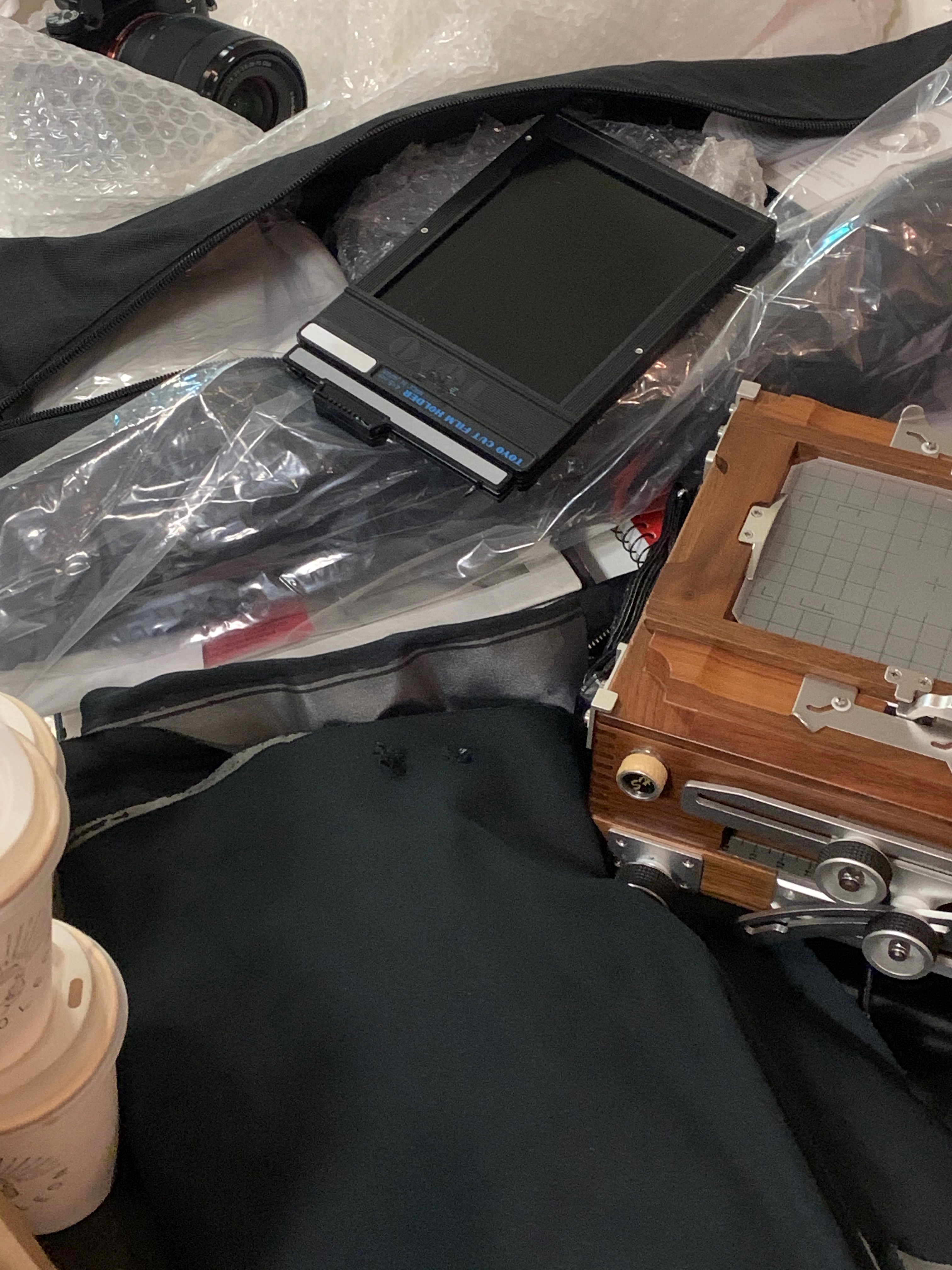
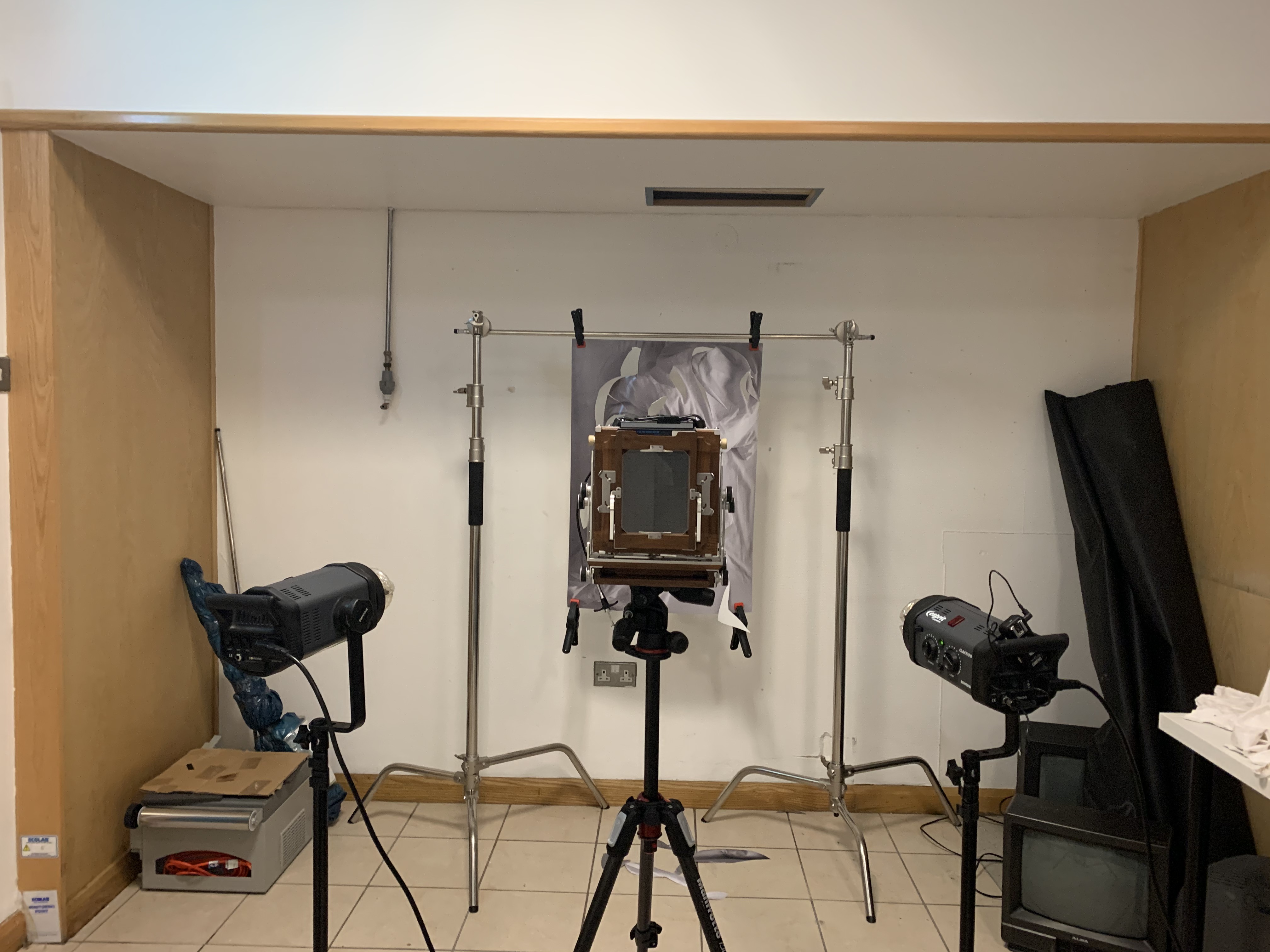

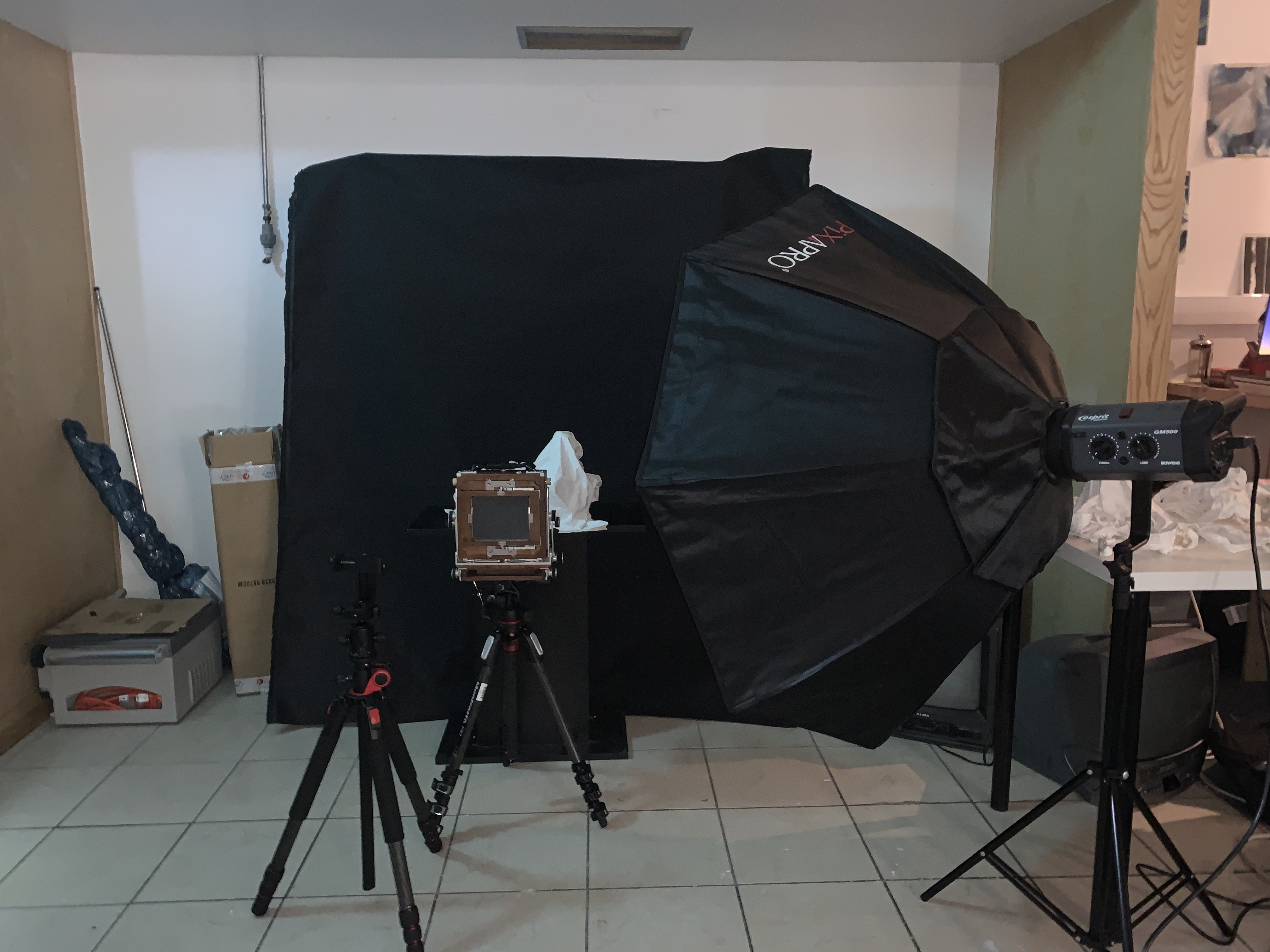
Raspberry Pi
Using new technology I attempted to understand the roll off technology on sculpture this coincided with me buying a Raspberry Pi, I heart ambitious ideas off incorporating the micro computer into the sculpture as I wanted to fuse the analogue and digital into these sculptural bodies. Here are some of my tests and ideas that I was experimenting with at the time.
Lorem ipsum
Lorem ipsum dolor sit amet, consectetur adipiscing elit, sed do eiusmod tempor incididunt ut labore et dolore magna aliqua. Ut enim ad minim veniam, quis nostrud exercitation ullamco laboris nisi ut aliquip ex ea commodo consequat. Duis aute irure dolor in reprehenderit in voluptate velit esse cillum dolore eu fugiat nulla pariatur. Excepteur sint occaecat cupidatat non proident, sunt in culpa qui officia deserunt mollit anim id est laborum
Large Format (Material Tests)
When I was taken images off the card images that I created I wanted to further take on another level of interaction and performativity with the images by shooting on large format photography. I shot a series of images on the large format camera which produces a 5 by 4 inch negative, my plants and ideas worth 2 then cut outs the negative two layer on top of each other, playing with the idea of layers and depth with the image.
Glass Experiments
Knowing that these experiments fascinated me and incorporated the ideas that I was wanting from the project I purchased a selection of various glass plate, thinking to use these at some point in my process within image transfers and my Polaroid imagery.
Large Format (Sculptures)
vAgain with the images of the cut outs I explored format of large format photography to capture the sculptural creations that I made during the start of the year I used studio lighting on strobes to dramatically sculpt the lights on my creations which I feel inhanced the quality and was representative of what I was thinking at that time.
Harvey Regan
&
Liam Crichton
Crichton creates large-scale sculptures and installations that investigate our built environment. His work is site-specific, his approach challenges the perceptions and cultural environment. Through minimal constructions within the space they are situated, his work and the work of Havrey Regan (who I have mentioned before) used this technique of concrete curtains - which was something that I wanted to achieve to make during the winter break.
Alfred Barr
&
Andrea Geyer
During the start of the new year, I looked into a few new artists that where interesting me at the time those being both Alfred Barr and Andrea Geyer. The theme of a 'web' or connecting thoughts linked through various forms of text was an idea that had been manifesting in my brain for a while and how I could perhaps covey this with my own work.
Gareth McConnell
'Meditation'
Gareth McConnell's 'Meditation' is a documentary project where he explored the lives of his friends, through details on intimate portraits, these portraits took the form of close up shots or experimental portraits or in image 'Meditation' portrait of a familiar bed. Linking in closely with my own work I found Gareth McConnell an artist to expand the ideas that I was working with.
Lorem ipsum
Lorem ipsum dolor sit amet, consectetur adipiscing elit, sed do eiusmod tempor incididunt ut labore et dolore magna aliqua. Ut enim ad minim veniam, quis nostrud exercitation ullamco laboris nisi ut aliquip ex ea commodo consequat. Duis aute irure dolor in reprehenderit in voluptate velit esse cillum dolore eu fugiat nulla pariatur. Excepteur sint occaecat cupidatat non proident, sunt in culpa qui officia deserunt mollit anim id est laborum
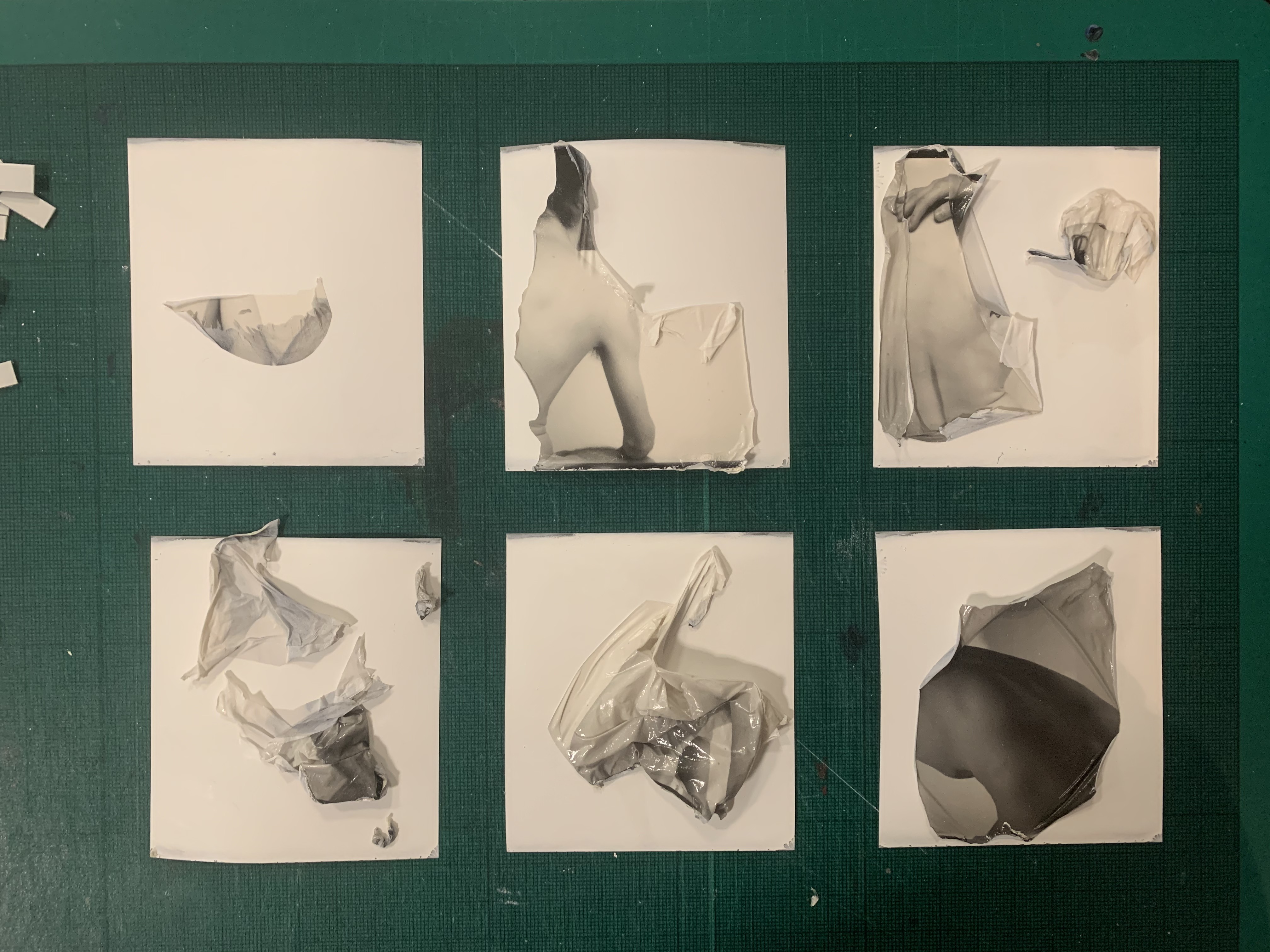
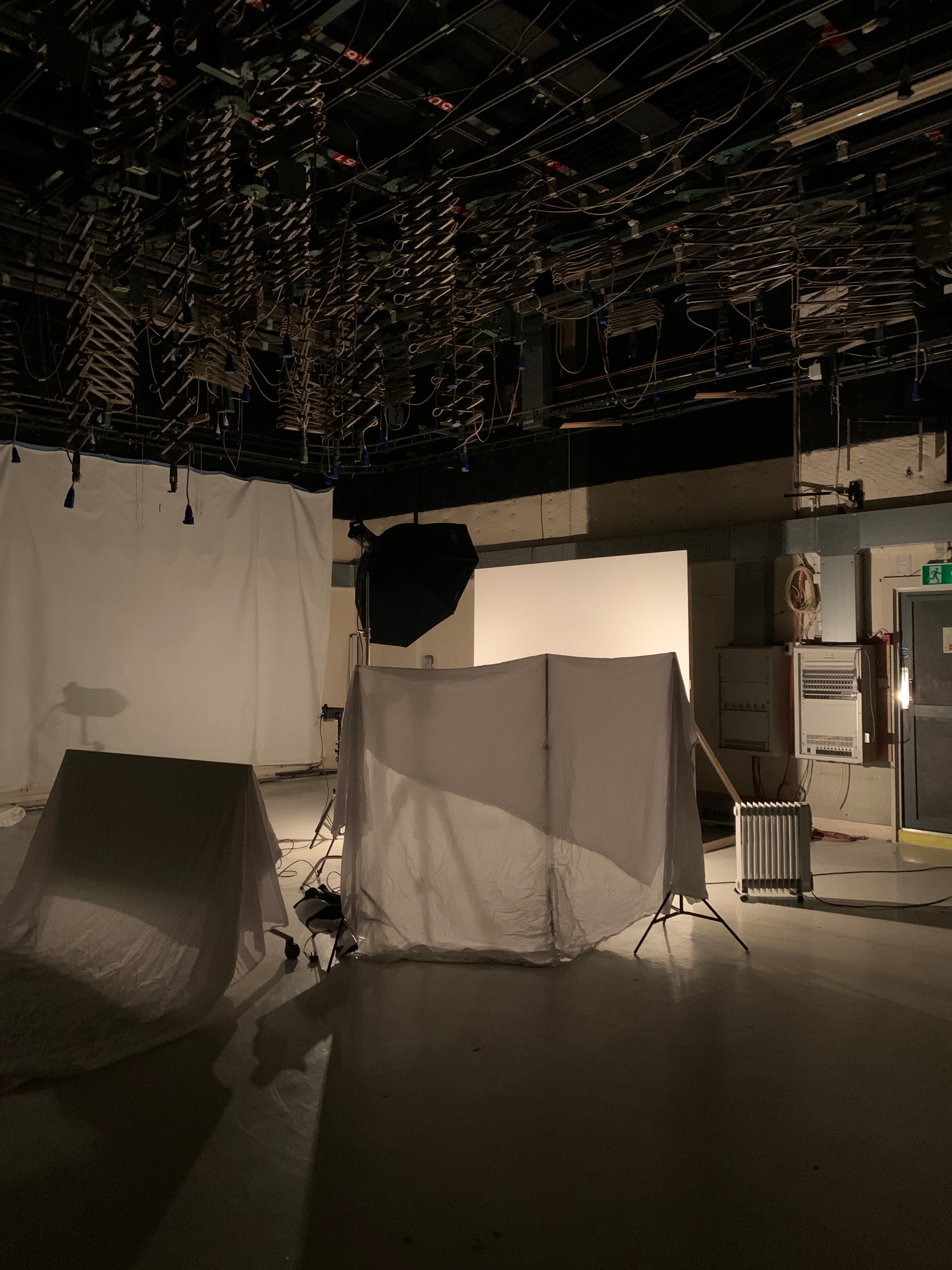
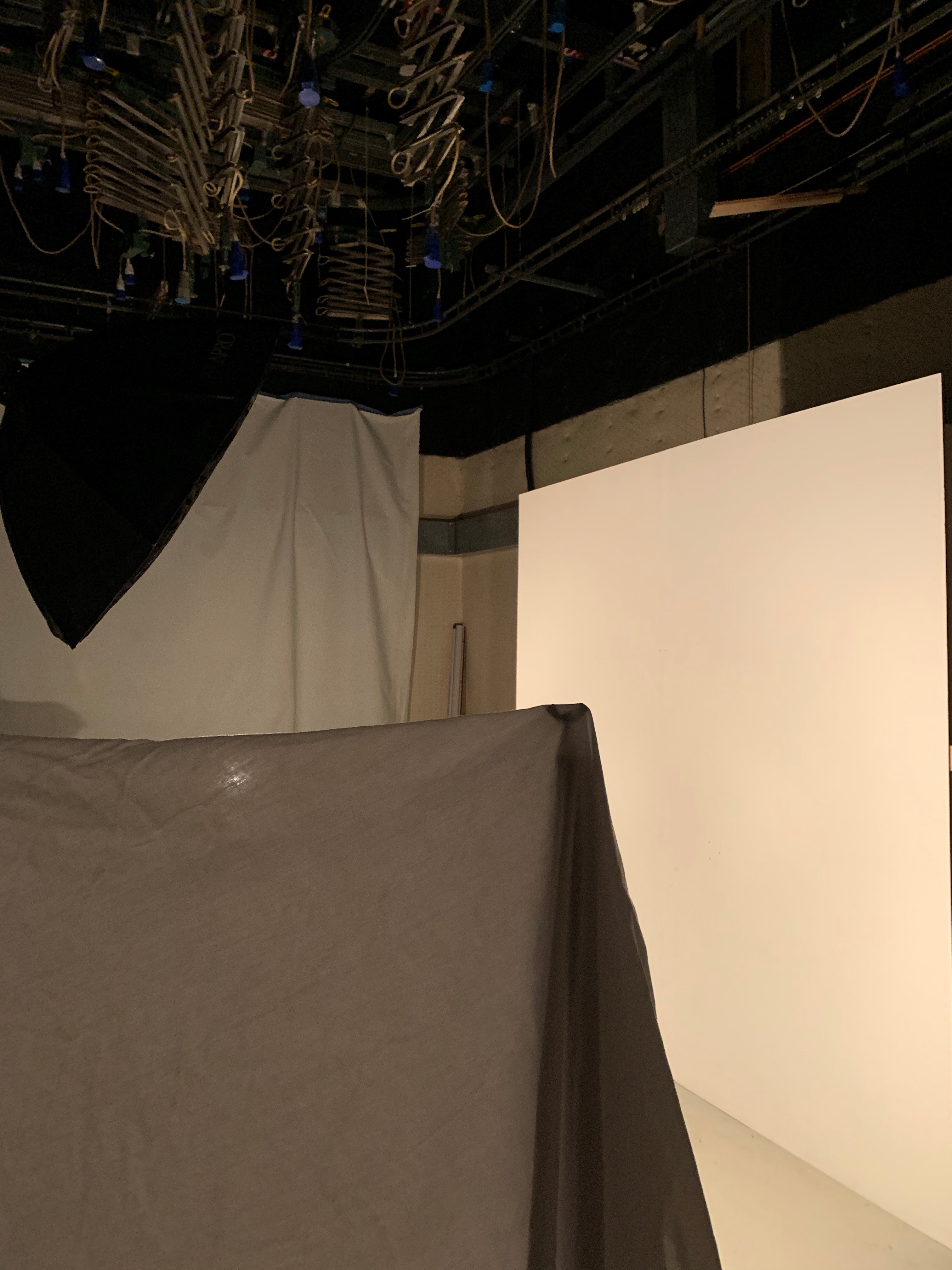
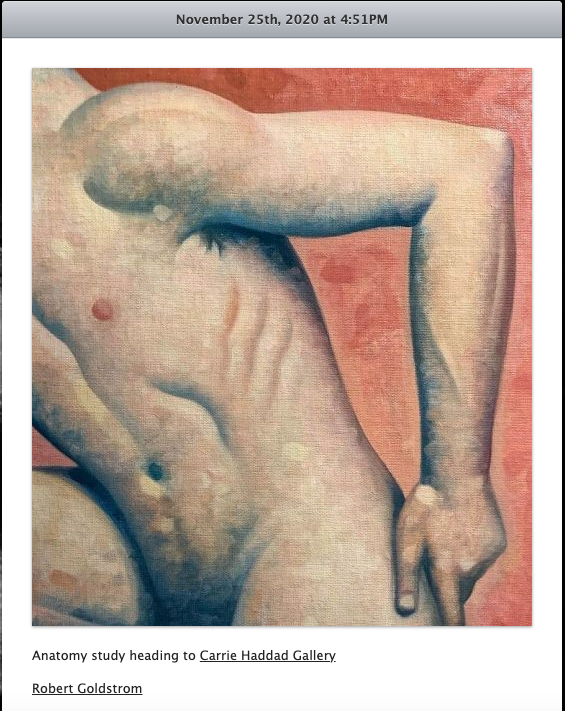
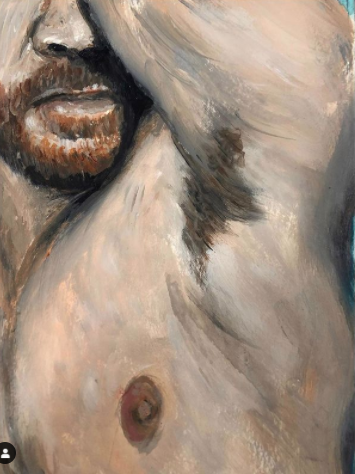
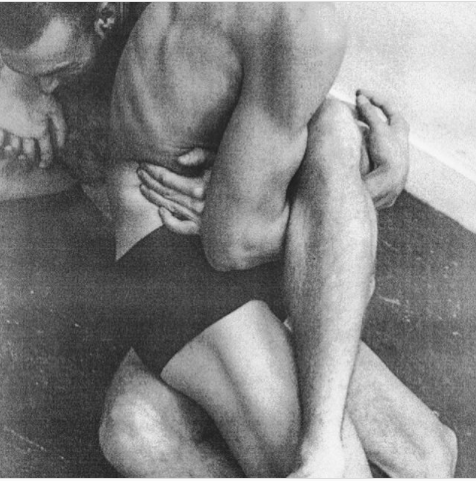
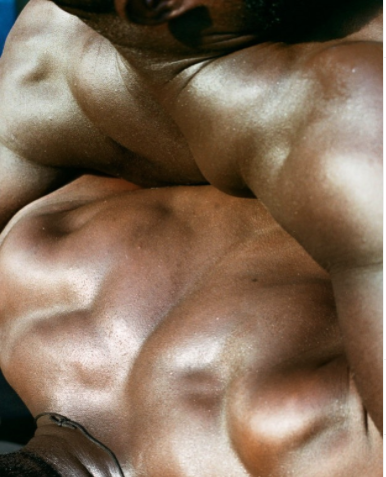
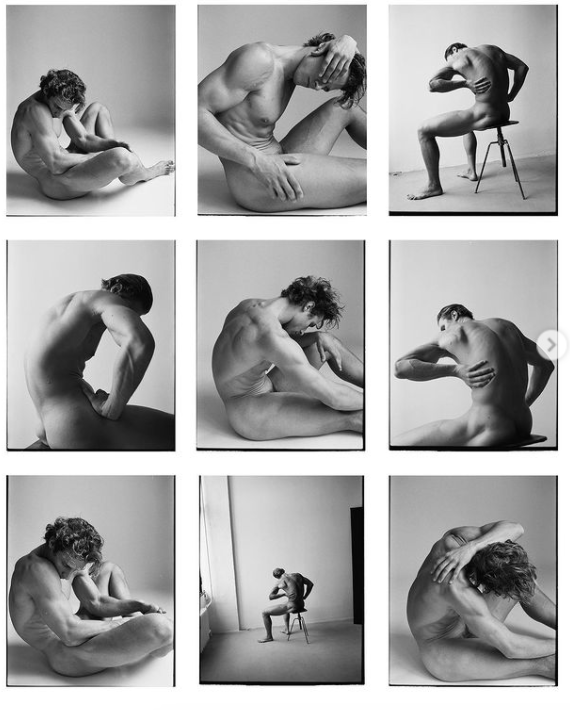
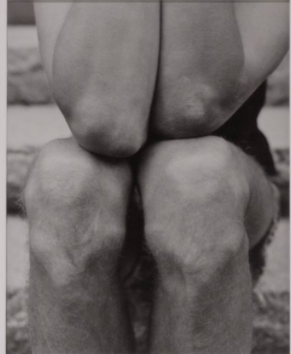
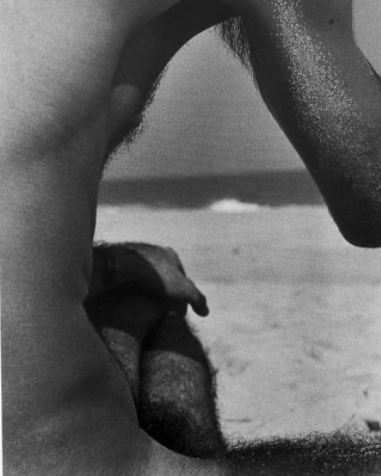

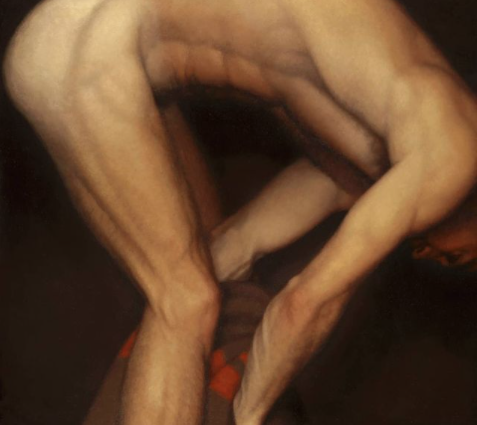
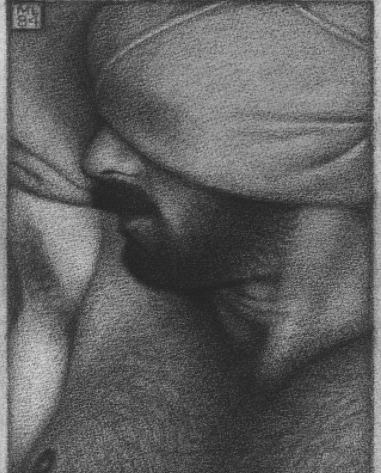
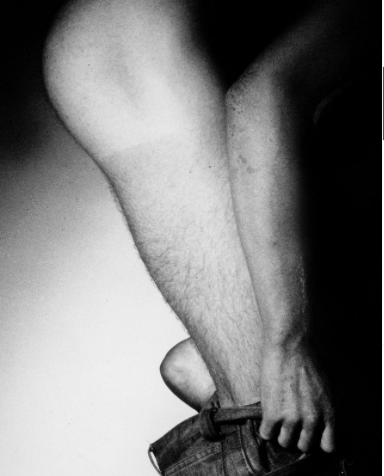
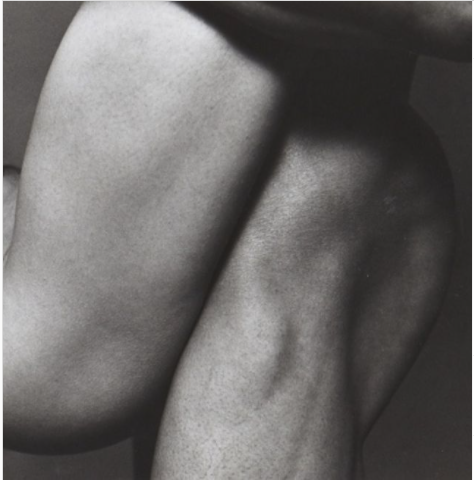
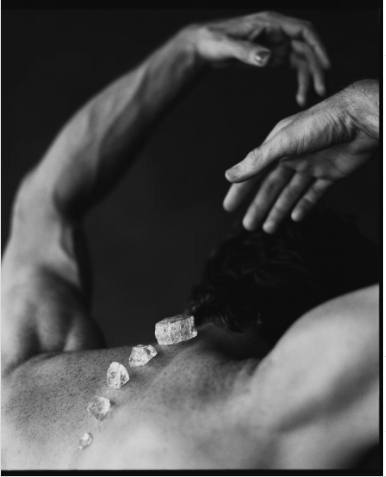

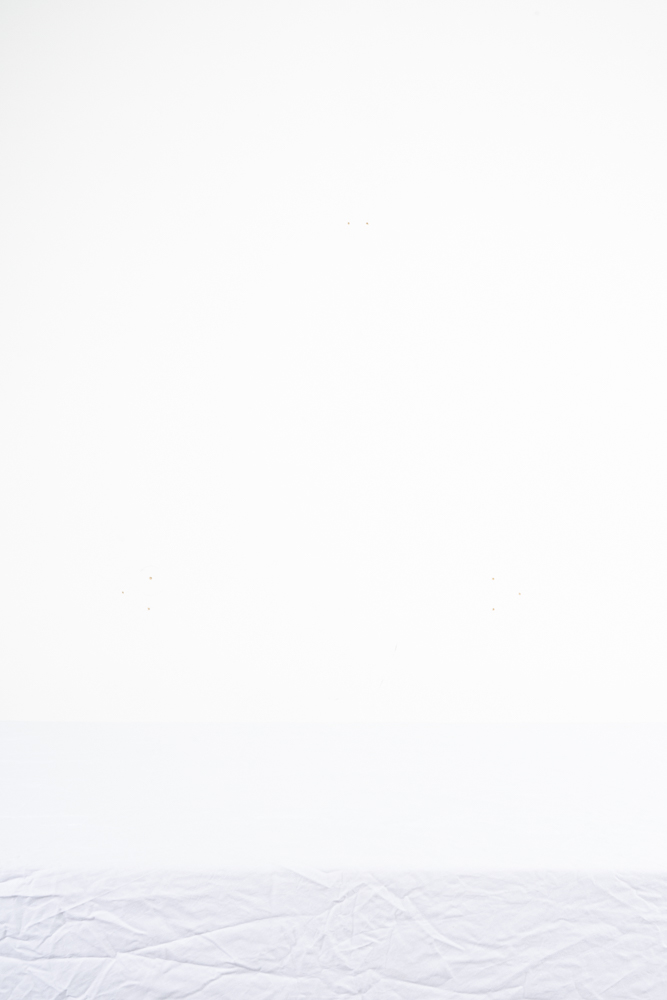
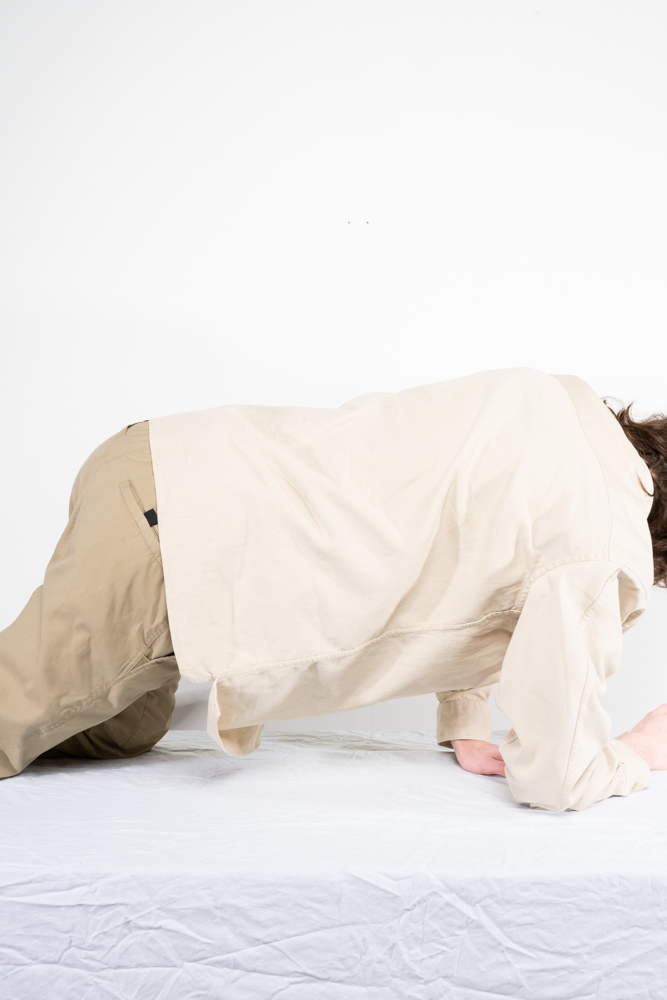

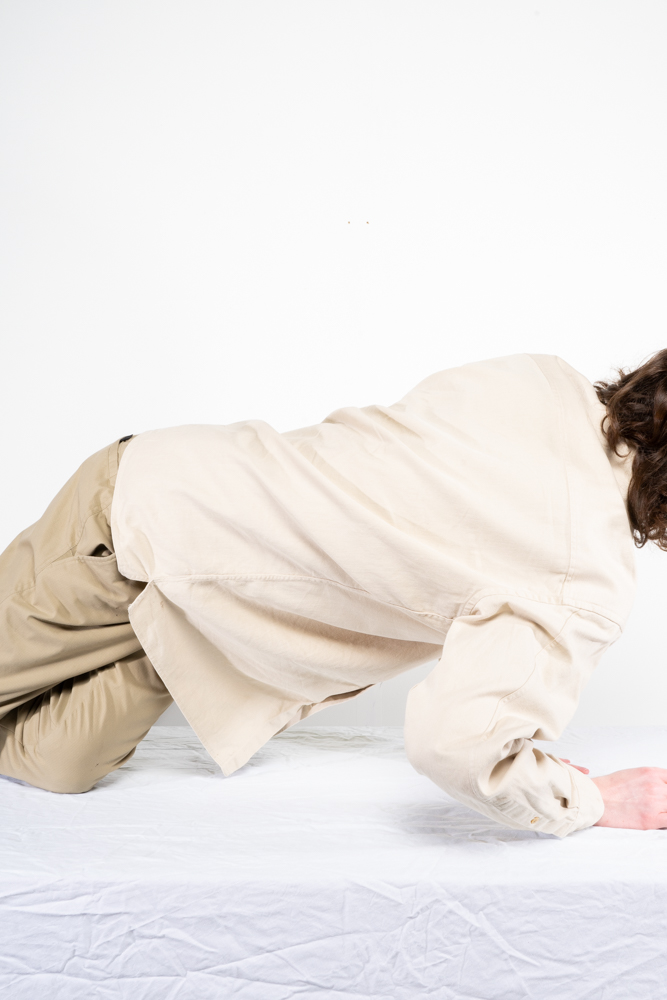

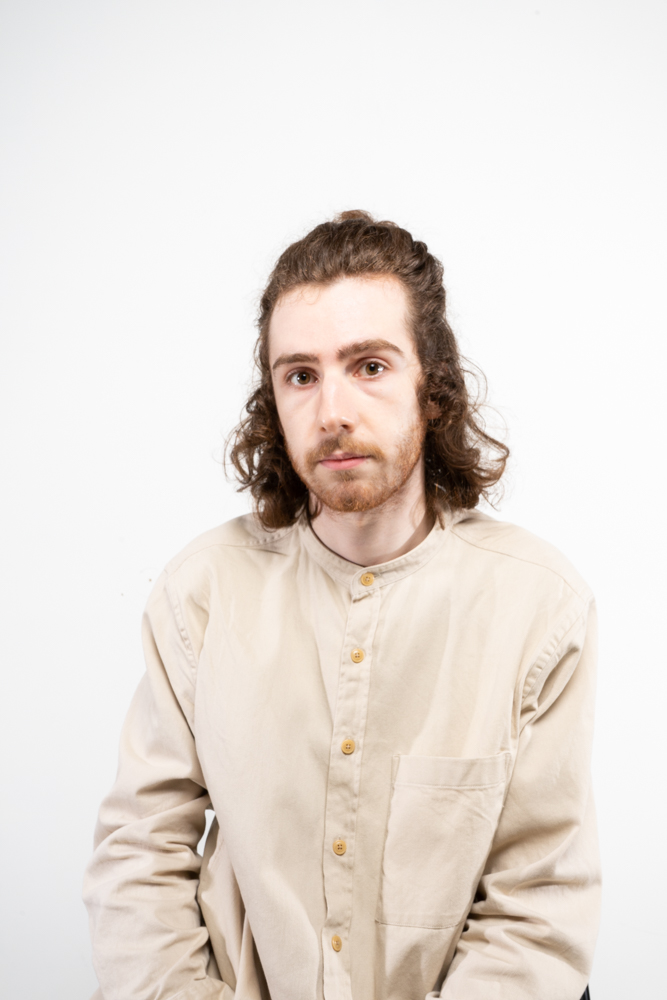




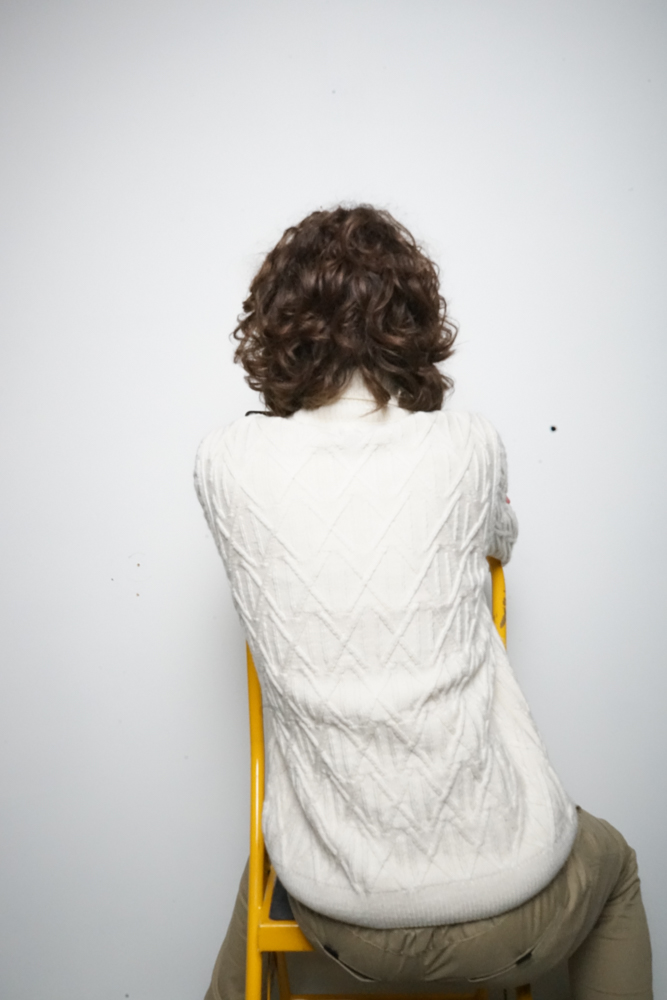
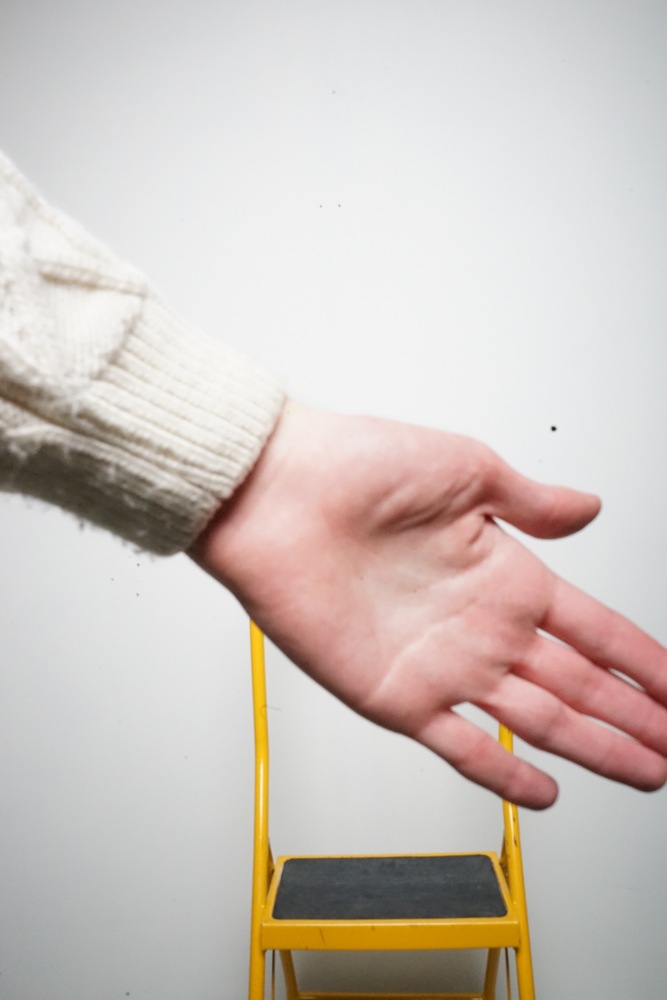
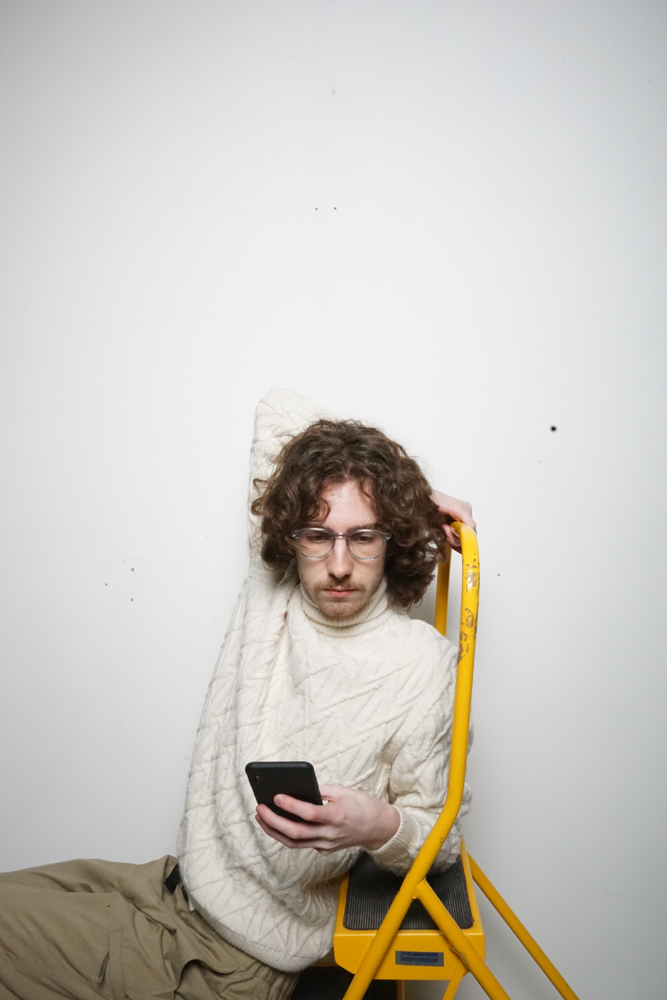
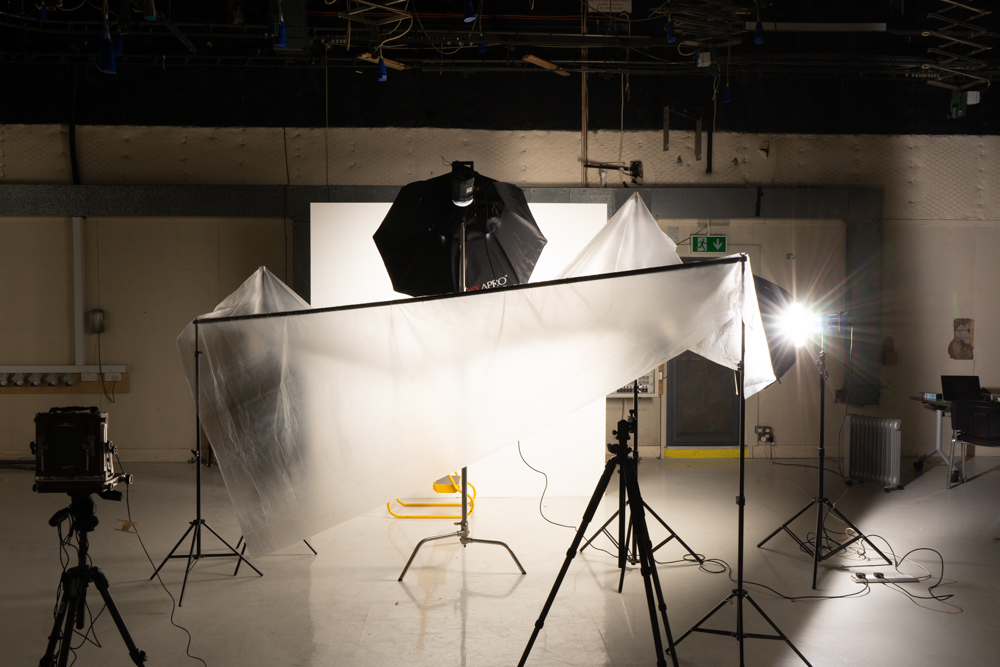


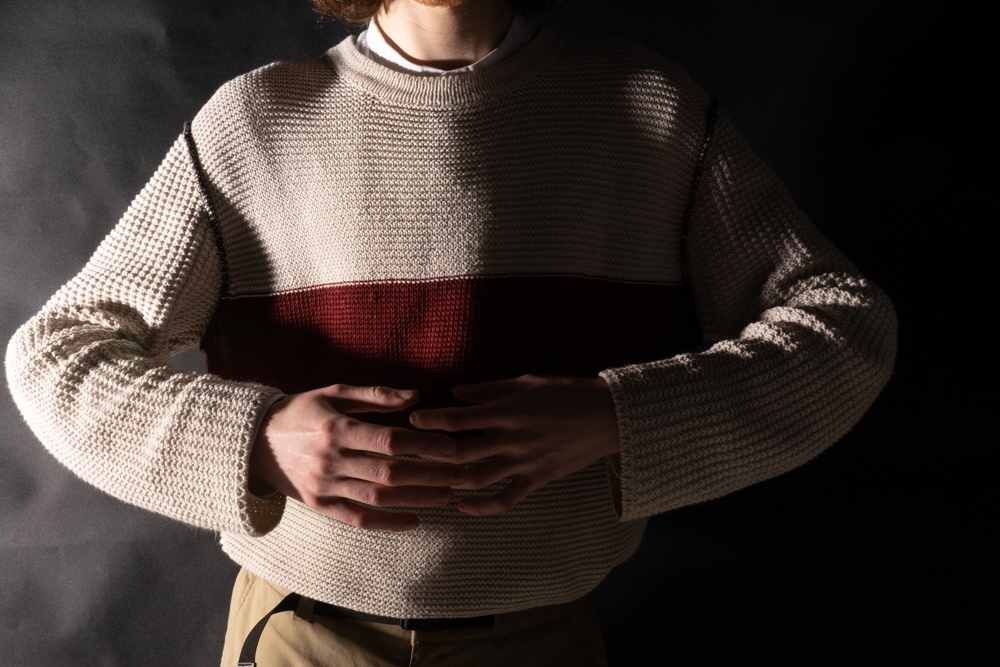
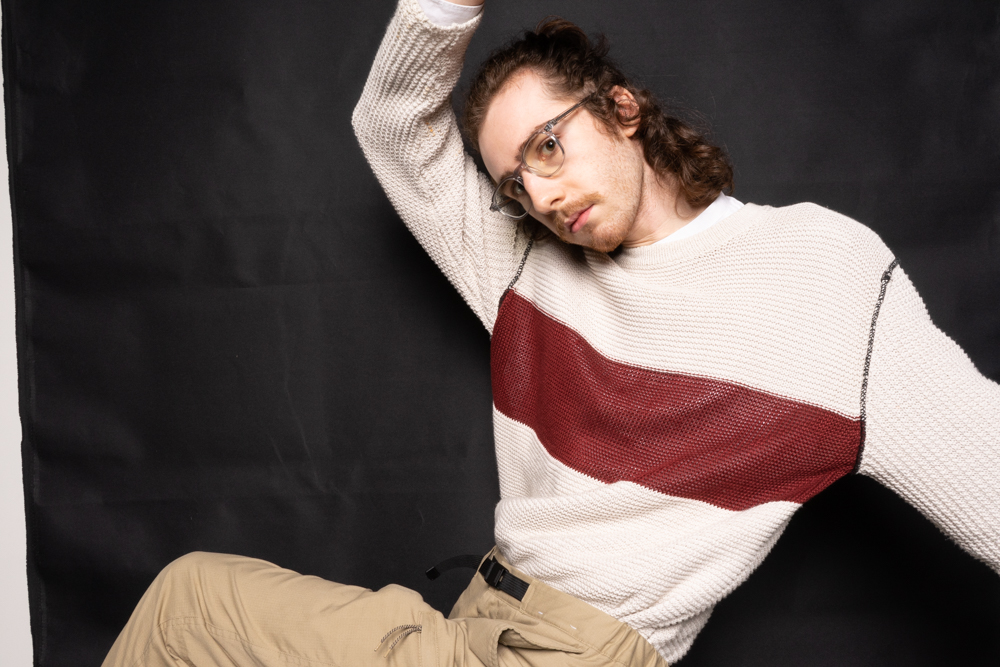
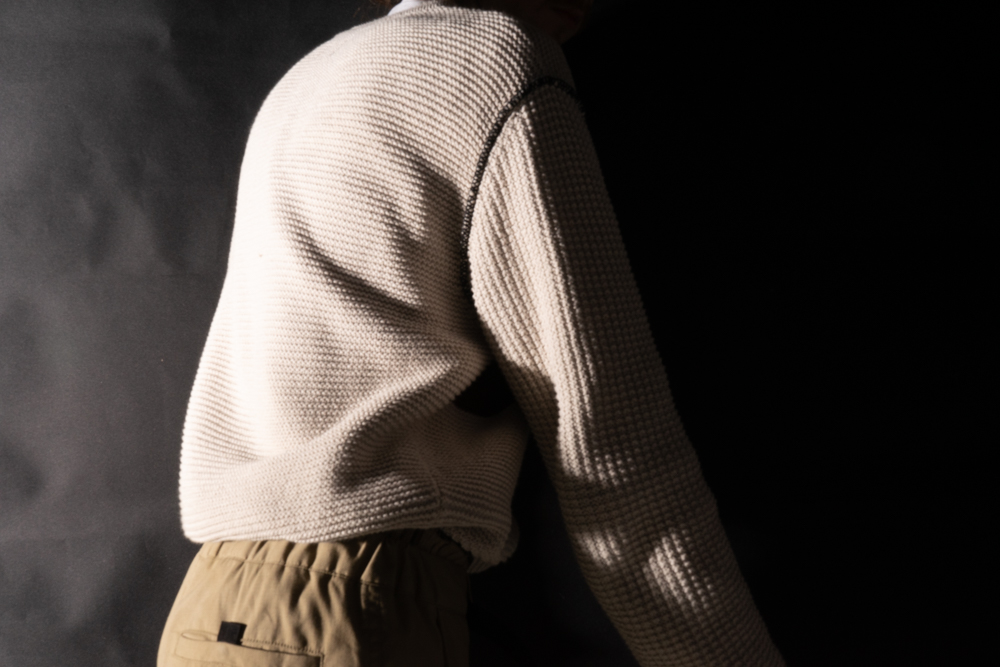
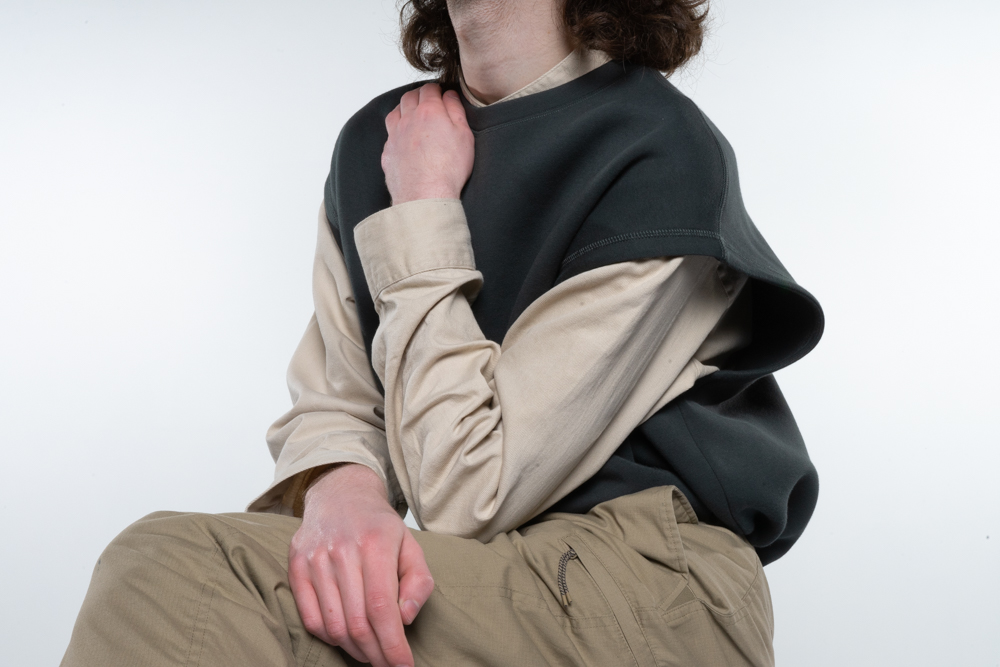


Unfolding Forms
Unfolding Forms originates from the conventions of belonging, framed around a shifting political landscape my native Northern Ireland is a layered landscape of acute sensitivity. Unfolding Forms cultivates my sense of queerness through intimate bodily forms and gestures. I employ a fluid approach to digital and physical methods of creating unique bodily responses to this state of flux. Utilising the agency of touch, I present the fluidity of androgynous forms moulded by their sculptural skin and through their concealment of identity, poetic gestures of self emerge.
Alibhes’ edit:
Unfolding Forms originates from the conventions of belonging; framed around a shifting political landscape of my native Northern Ireland as a layered landscape of acute sensitivity. Unfolding Forms cultivates my sense of queerness through intimate bodily forms and gestures. I employ a fluid approach to digital and physical methods, creating unique bodily responses to this state of flux. Utilising the agency of touch, I present the fluidity of androgynous forms moulded by their sculptural skin. Through their concealment of identity there is a poetic gesture of self emergence.
Clare’s edit:
Unfolding Forms originates from the conventions of belonging, framed around a shifting political landscape of my native Northern Ireland as a layered landscape of acute sensitivity. Unfolding Forms cultivates my sense of queerness through intimate bodily forms and gestures. I employ a fluid approach to digital and physical methods, creating unique bodily responses to this state of flux. Utilising the agency of touch, I present the fluidity of androgynous forms moulded by their sculptural skin. Through their concealment of identity there is a poetic gesture of self emergence.
Origins and identity, place and belonging
Queer, otherness
Methods, conventions, flux
Touch, materiality, connection
Body, skin, physicality
Androgyny, fluidity
Polaroid Constructions (Archive -2016)
Explore my archive even further I find a series of Polaroid prints that I made during 2016, these Polaroid fragments were experiments off deconstructing the image however back then I didn't fully appreciate or understood the aspect of uniqueness and how these creations are one of a kind and I felt when I meet them these images were quite disposable and I didn't consider these experimentations on the image to be anymore than scraps. but looking back on these and reflecting on these images I feel that this was the type of work that I was making back then and I wish I pursued this way off experimenting when I started University.
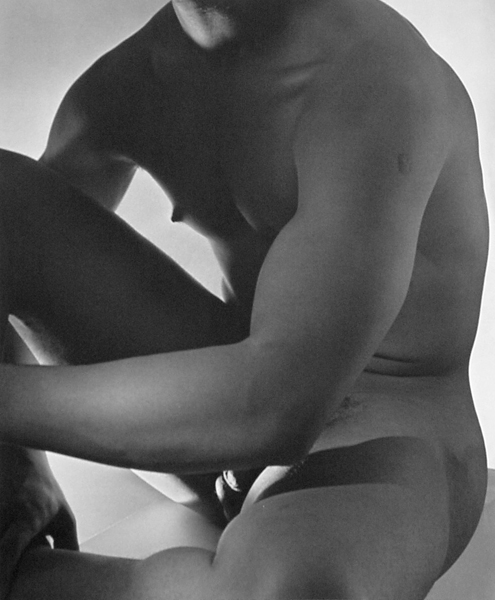
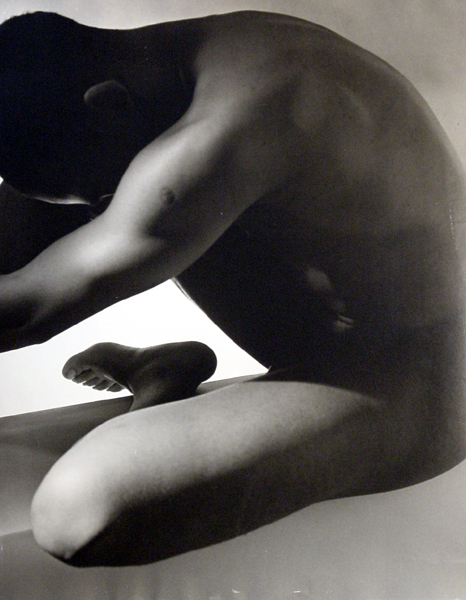

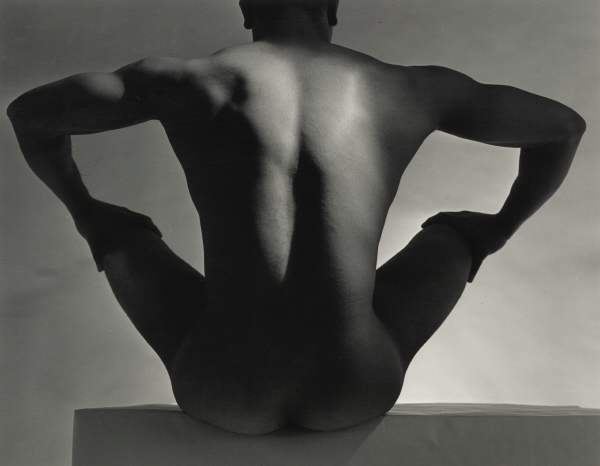
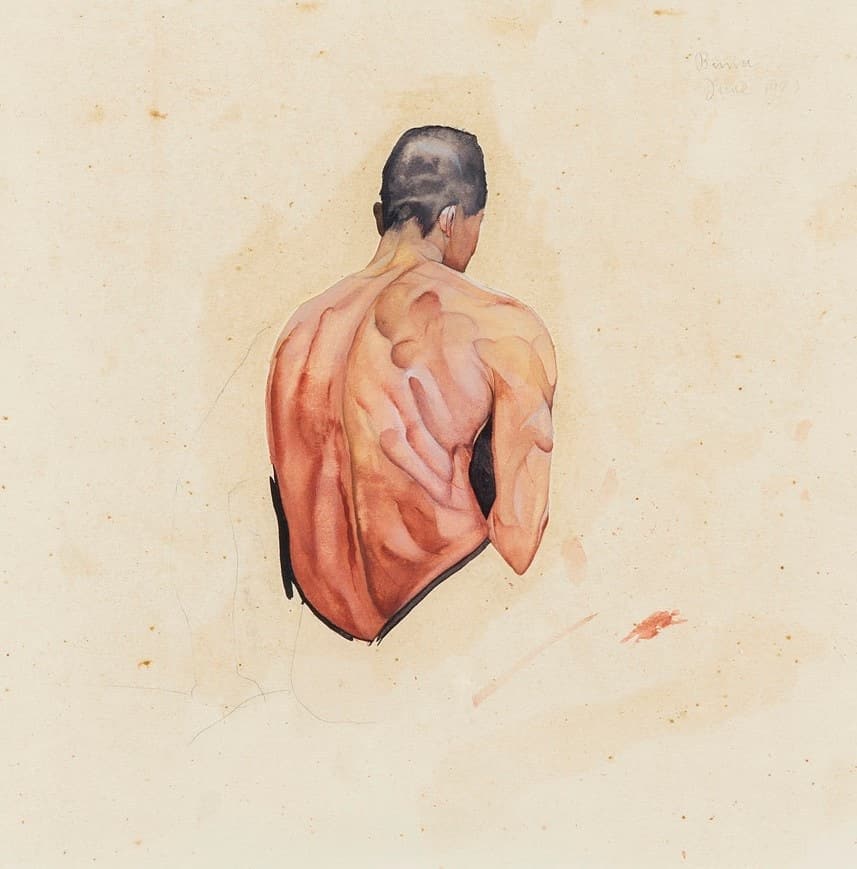
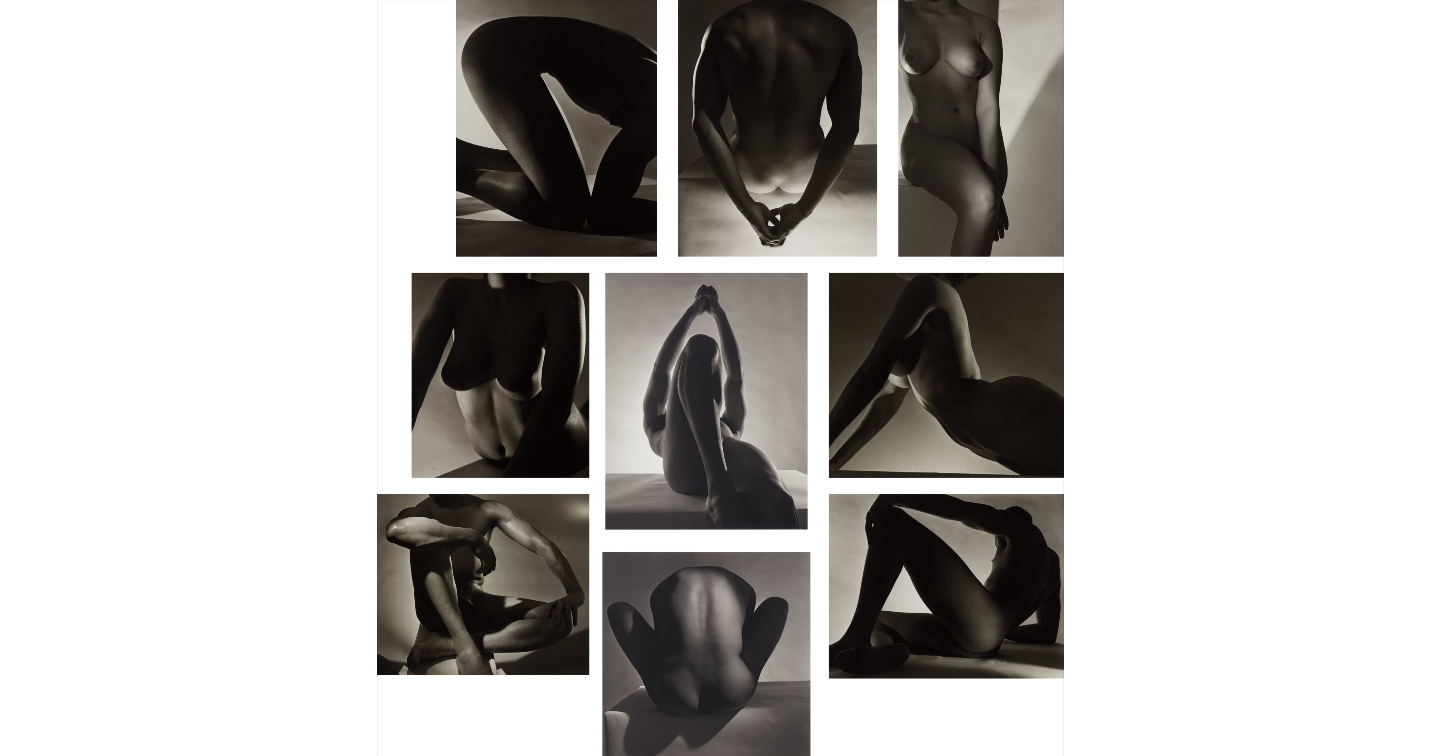
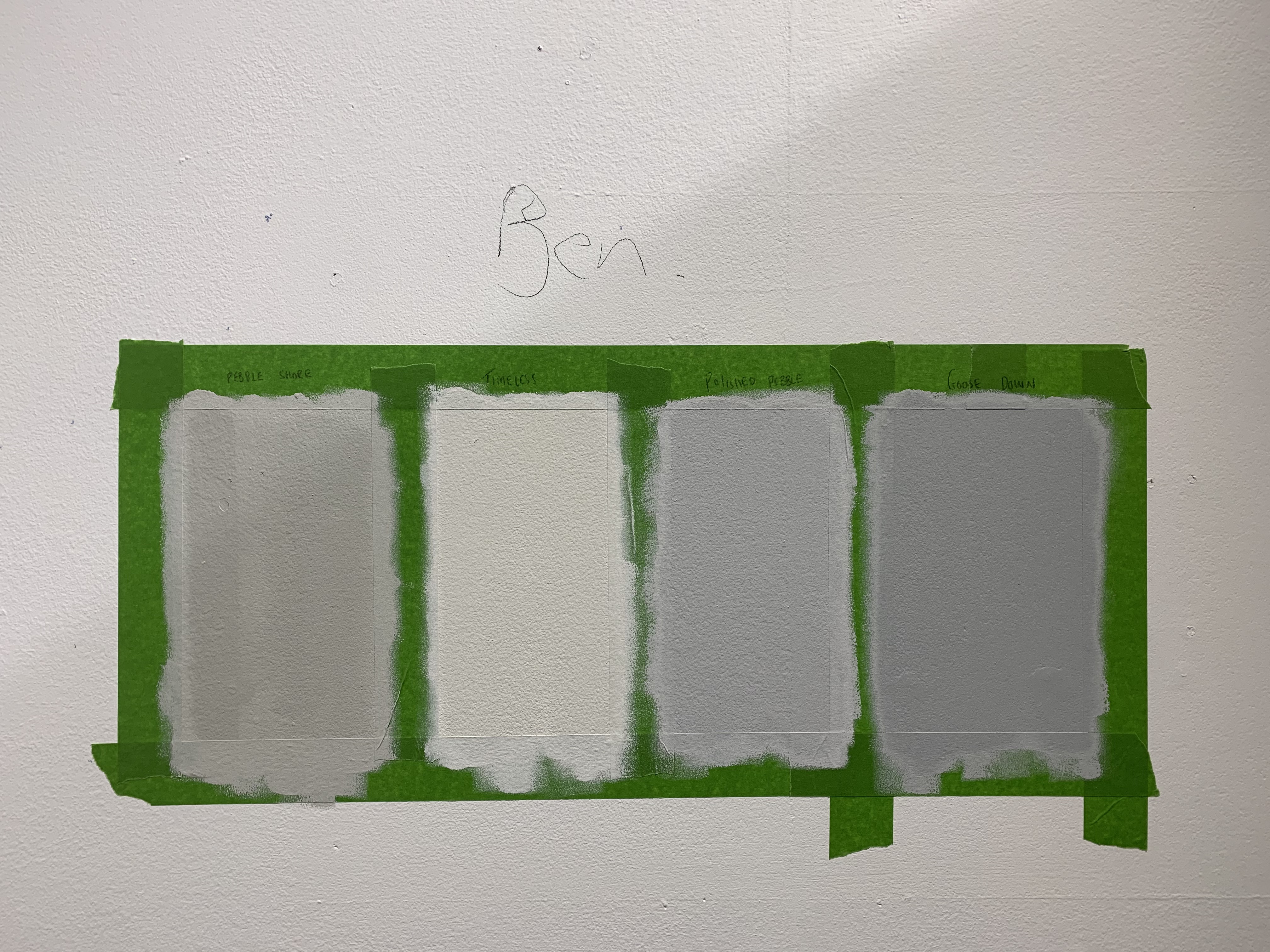
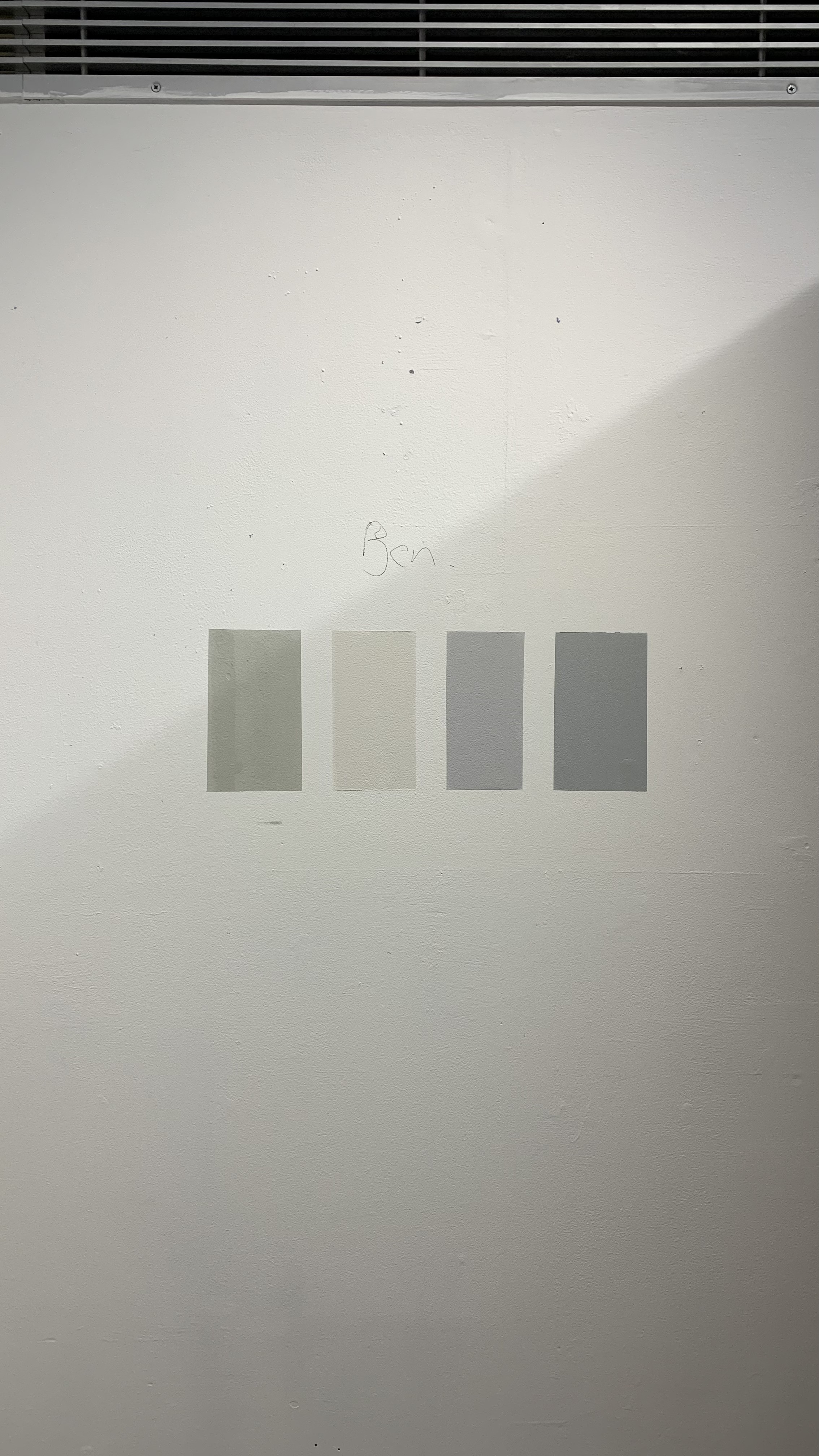
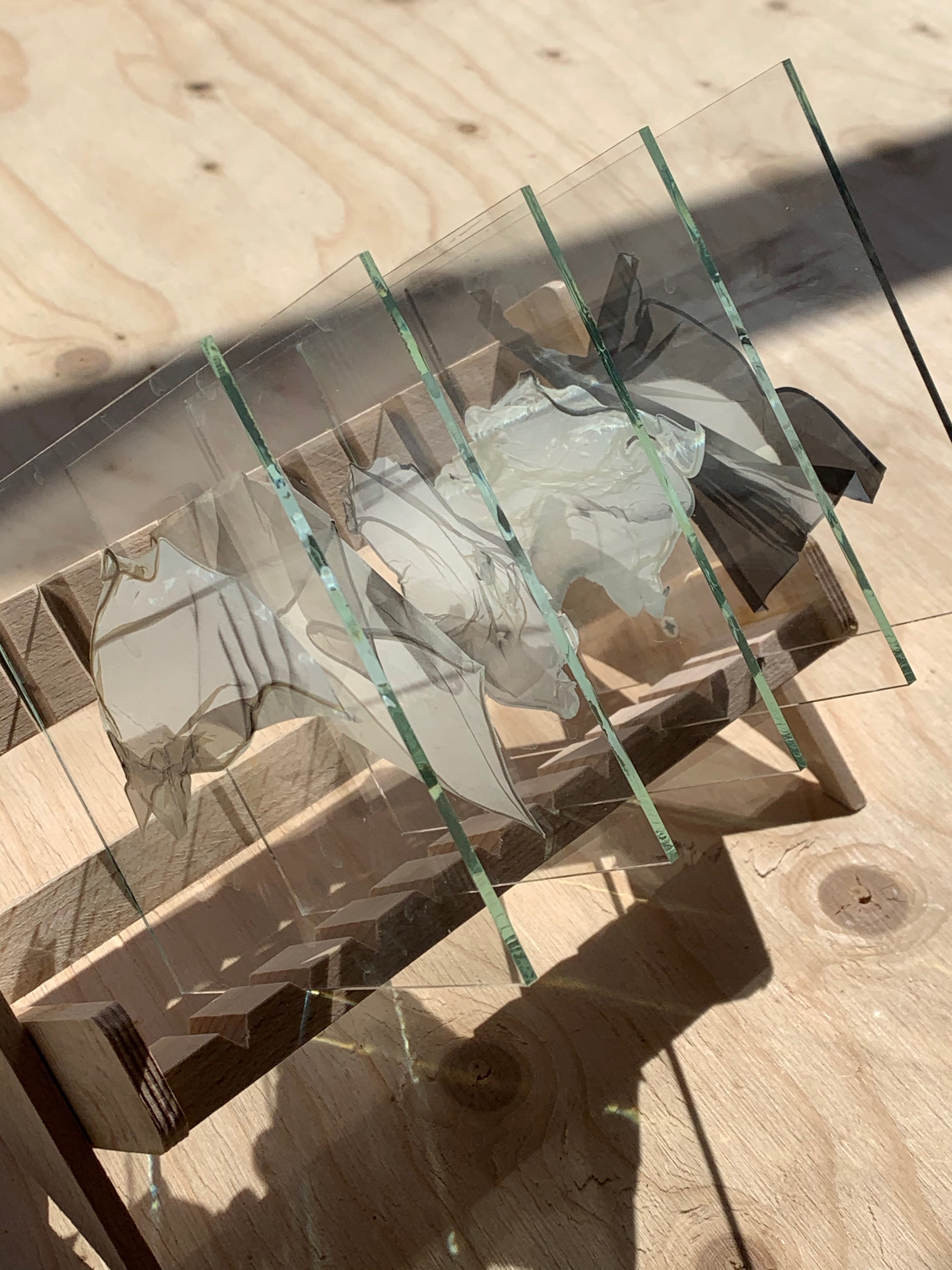
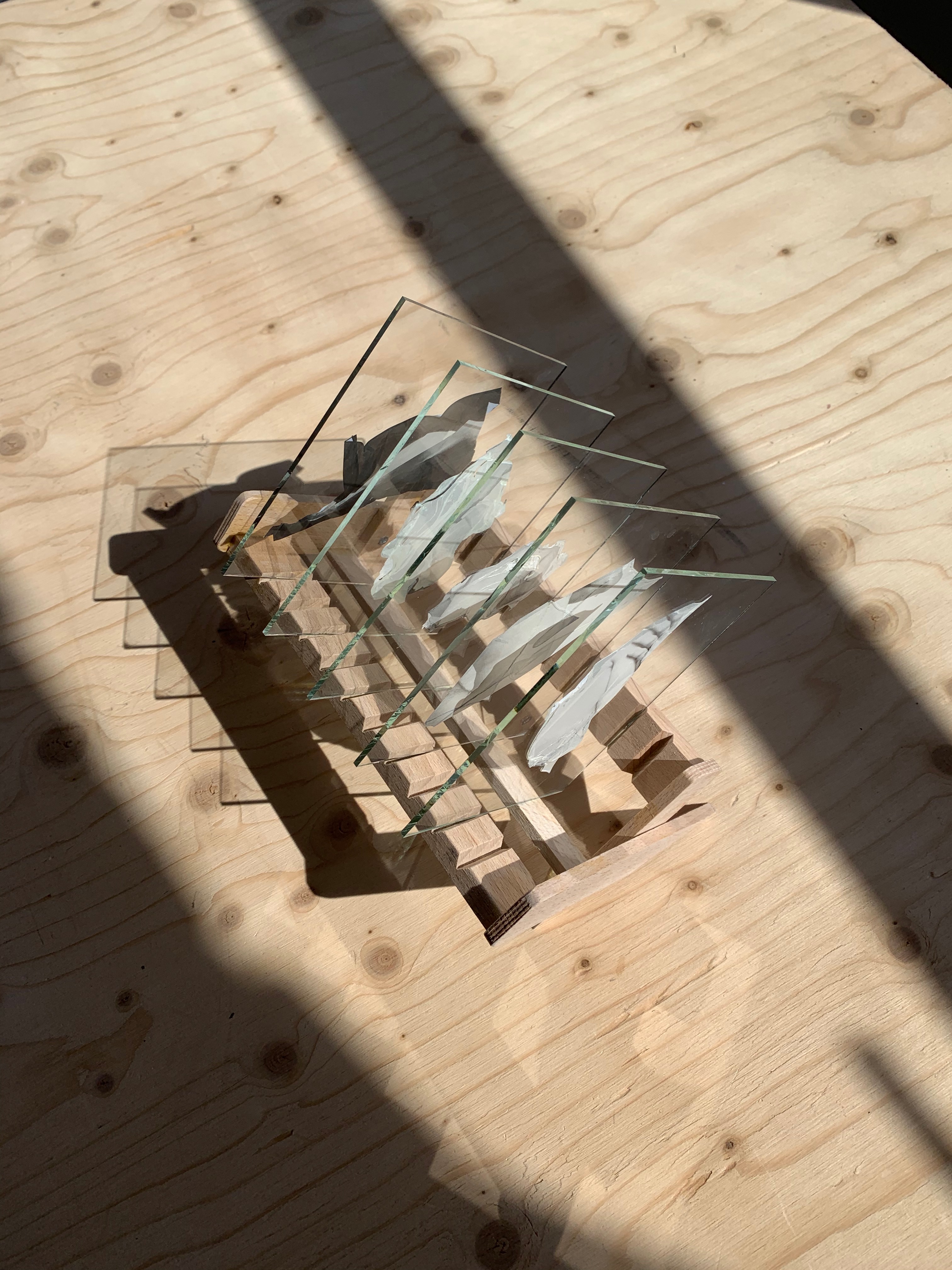
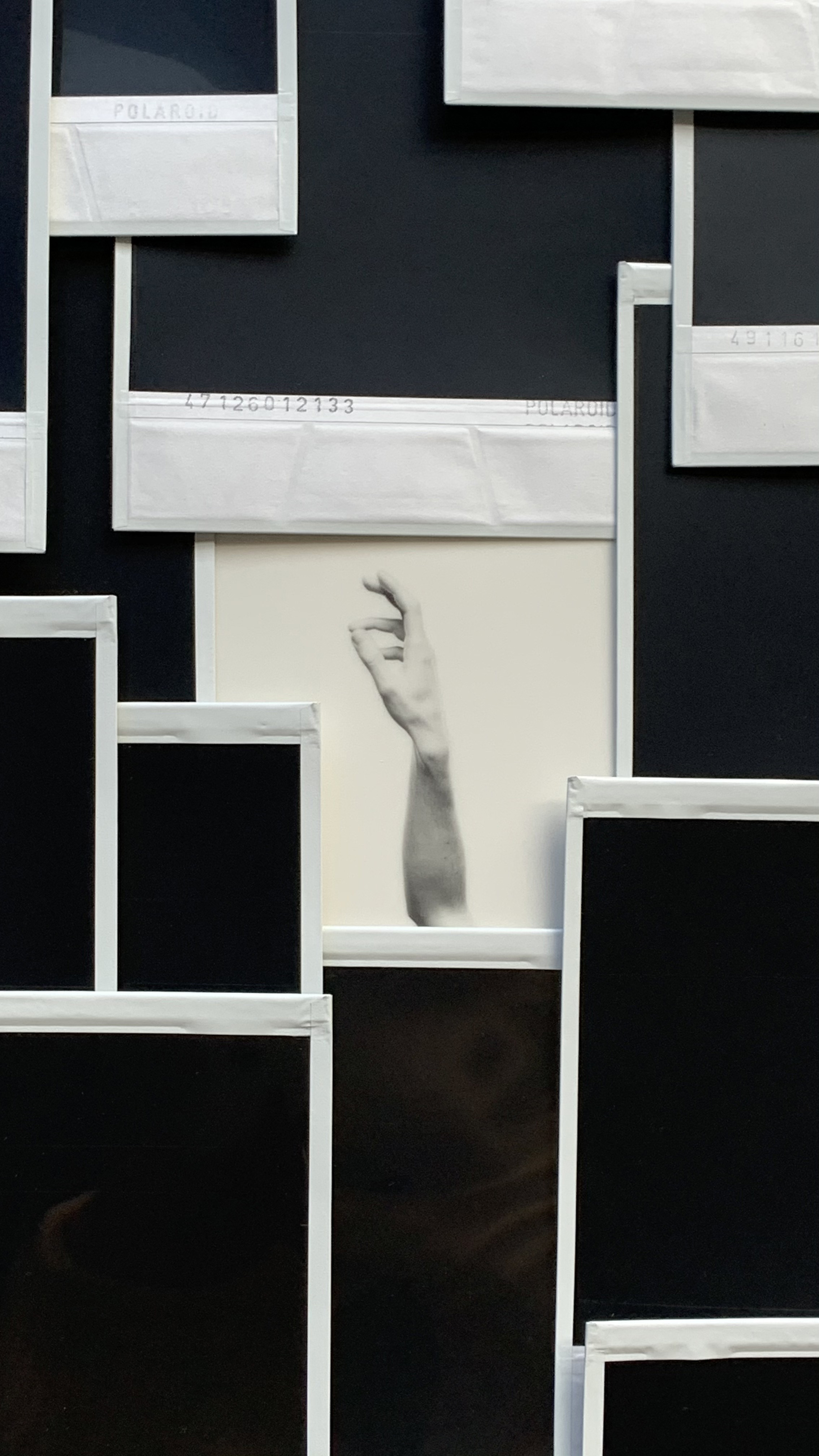
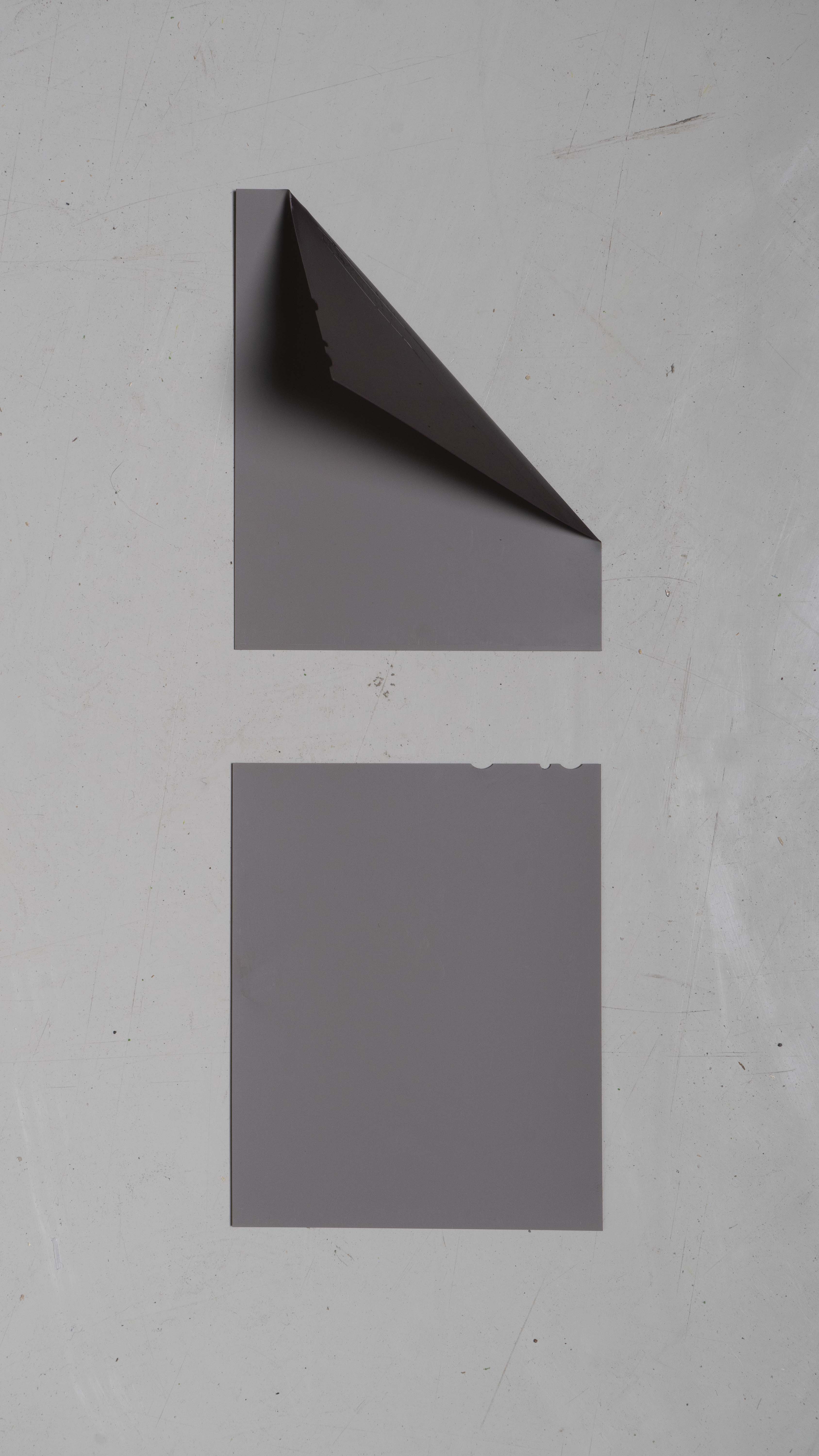



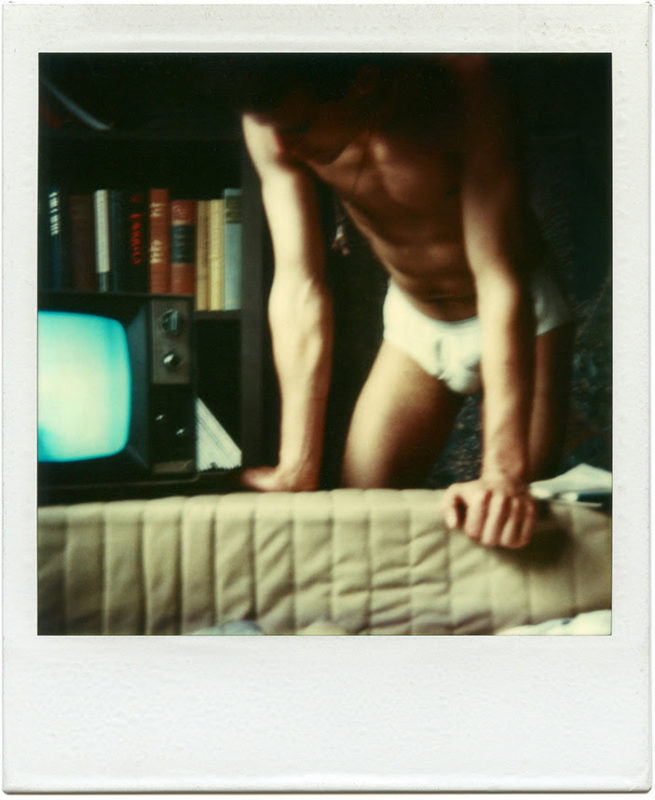
Glass Experiments
Explore my archive I came across old Polaroid image transfers that I made during my time in The Hague. These were image transfers that I made in my bedroom he portraits of my roommates on the scenery outside my window captured on glass from an old second hand store. one of the images unfortunately was damaged in transit but I feel it has a special quality to it, making those experiments I found myself coming back to these images on the technique of image transfers over the early months of the new year.
Mordancage Process
During these various experiments of using glass as a material too transfer my images on I experimented with extracts and fragment's of images using the Mordancage process - An alternative photographic process that uses bleach to remove the silver gelatine within a black and white image these resulted in messy, unique fragments of the images.
During my various shoots, I started to accumulate an array of Polariod images, from my studio sessions. These Polariods were just one step in the process, from the images I quickly then deconstructed the physical image and moulded the chemical film to these abstract sculptural forms these were the first results (of many) more that I were to make. However, from this attempt two of the images stood out to me, at the time they were just little epeiments but I held on to them to see what a further set would look like in the coming weeks.
Studio Session
During the start of February, I wanted to explore the idea of the body and material by capturing the layers of a constructed set with my body being incorporated into the image. These experiments were tricky during the first shoot, as I had a lot of technical issues, and I was struggling to understand what I actually wanted from these shoots. The images I got don't fully capture what I wanted during that day but were needed during the process of making the work. Here are few images of my studio setup and a couple of test images, experimenting with various lighting styles.
A collection of bodies (research)
Over the few months into the second semester, I had been collecting particularly various photographers and artists that featured the male body. I had written about why I found these figures interesting, studying the 19th century figurative paintings of male figures. The selection of images range from works such as Horst P. Horst and Edward Burra AMONG a great deal of others. I feel that this collection of images seem to all have various similar themes of the body, the nude, abstraction, fragility and a sense of queerness. The images that are presented laid the groundwork for the poses and inner thoughts when thinking and capturing my own fragile moments.
Mock up of Install (pre-floor plan)
During the process of the work I wondered how the work would look within the university space, I made a mockup of how that would look on Photoshop. The mockup consisted of a selection of work that weren't my final edit or selection, but where the work that I wanted to reshoot or greatly refine during the coming weeks. The space that I had mockup featured a video piece an array of Polaroid images and a sculpture made from bedsheets. During the class talks, the tutors best felt that the mockup or more particularly the framed Polaroids did not help the concept. I also was unsure at this point that I was even able to complete a big scale sculpture that was featured in my mockup due to the further limitations and restrictions imposed by COVID-19.
Cyanotype (Alternative Process)
Sculptural Refences
-
Michelangelo 'Pieta'
During the creation on process of making the sculptural forms I was inspired by various sources on references to the classics one example is Pieta by Michelangelo the texture of the material and the lightness of the figures inspired me to create cleaner forms when the restrictions were to ease.
Mishaps (Material Tests)
Testing the lighting styles with a black backdrop, I changed the backdrop to see how these would impact the photos.
Studio Sessions
During my experimentation with Polaroid images, I also attempted a few more studio shoots, as capturing an image was the easy part but to then deconstruct the image had its only challenges, so a lot of Polaroid images might have only left me a couple of solid images to work with.
Glass Plate (material tests)
This glass plate shows how I was transferring the polariod image from one state to another, using the flow of water and the glass plate as my new frame, I experimented and positioned the image in new configurations, creating new forms and new ways of seeing the already abstract images that I had already shot
Glass Plates (material tests)
At this point, I felt like I had a strong selection of glass plates and images that were featured within the project. From this image, I knew I wanted a limited yet strong selection that best showcased my ideas and themes in the best possible way through the use of materiality.
Glass plates (material tests)
These images were various other experimentations that I had made over the course of a few weeks, use not only clear glass but also black glass, I wanted to explore how this martial effect could impact the image and what why it would be received.
Edits
During the various week of shooting my project I had managed to simulate a wide selection of imagery, these edits then were resulted in the deconstruction and reconstruction of new images to be used for the project to being a new meaning.
Blood, Sweat and tears
University Space (original)
During March/April I had received my floor plan to showcase my final year work, the space itself was only two walls, and during that time I felt unsure if I could only work with those two walls. However, after a few days, I managed to figure how various experimental ways of working with the space and to even possibly expand the space with other walls to fill the in and centre my work - creating an immersive experience with the work and viewer.
Selecting and editing
These images were an over view of the various creations of sculptural polaroids that I done. From these images, I then made a selection that I thought where the strongest and that I felt best represented how the work was going.
Colour swatching ideas
Colour Swatching
The following images shows what top 4 colours that I wanted to be in the space, I finally decided and picked 'Timeless' (second colour below the B). I felt that this colour wasn't as overbearing as compared to the other colours, the chosen colour would allow a flow within the work and wouldn't distract or take away from the experience.
Space Experiments
During the following weeks, i brought in various projects and lights to experiment and understand how my work my be displayed within the space, the video piece shows these various experimental styles as I try to figure out what is the best way of working with video content
Jan McCullough
'Constructions'
A collection of scanned glass plates
from the series Unfolding Forms
Fluid and Unfolding Forms
During the end of summer 2020 I made a video piece titled Fluid, this video and it's ideas stayed with me and incorporating the elements of the video into my final project was needed for me to fully realise the piece. Making Fluid I wanted to refine so much about the piece, having the time I took to deconstruct the video and cut out a lot of unnecessary material, change the format and changed the colour to a minimal black and white, for me this works better for the images that I had already captured and flows well into each of the work.
Jan McCullough
'Constructions'
Winter Break
-
Semester 2
Studio Sessions
Learning my technical mistakes from my first session, I was able to apply the understanding to my second shoot. Seting up in the photography studio at my Flax Art Studios I created the classic Richard Avedon portrait lighting technique to capture my images. I wanted a highkey lighting style that made the background blow out and allow for me to be isolated in the frame these where some of the experiments that I did to test out the lighting before I shot with my Polariod cameria.
A collection of scanned glass plates
from the series Unfolding Forms
Unfolding Forms, 2021
Unfolding Forms originates from the conventions of belonging, framed around a shifting political landscape of my native Northern Ireland as a layered landscape of acute sensitivity. Unfolding Forms cultivates my sense of queerness through intimate bodily forms and gestures. I employ a fluid approach to digital and physical methods, creating unique bodily responses to this state of flux. Utilising the agency of touch, I present the fluidity of androgynous forms moulded by their sculptural skin. Through their concealment of identity there is a poetic gesture of self emergence.